
Asian Elephants – Behavior, Psychology, and Co-existence.Asian elephants today are seen as animals defined through the lens of culture, economics, and conservation. This essay attempts to examine the work of Asian elephant researchers who study these animals to best learn how they may more successfully live with humans. Close to 60% of Asian elephants live close to human populations with more of their habitat being lost every year. The hope is that a greater understanding of these elephants may mitigate much of the human elephant conflict that plays out today. I have examined the effect of agricultural and economic development in and around traditional elephant habitat, the emergence of bachelor herds of male elephants, the effects of garbage dumps and cultivation close to national parks, the stress levels of female elephants before and after they have calves, mourning amongst elephants, survival tactics within small herds, the way young calves learn through imitation, the stress that elephant festivals place on these animals and the contradiction between deifying them and yet constraining them and exploiting them. I have looked at the work of researchers who examine elephant problem-solving abilities and how this leads to a greater understanding of individual elephants as well as the human response to elephants deemed to be a threat. I have tried to examine the lack of planning for elephants around development in the countries that have the greatest numbers of elephants and how that has affected elephant habitat and their relationship to humans. I have also included some work on Ivory from Japan where domestic trade remains legal with many loopholes for ivory entering the country. Likewise, I have included some images from Thailand where ivory amulets remain highly sought after, especially with the right blessing from the right monk. I also include China where research groups like the Environmental Impact Agency report that despite the domestic ban on ivory, a s
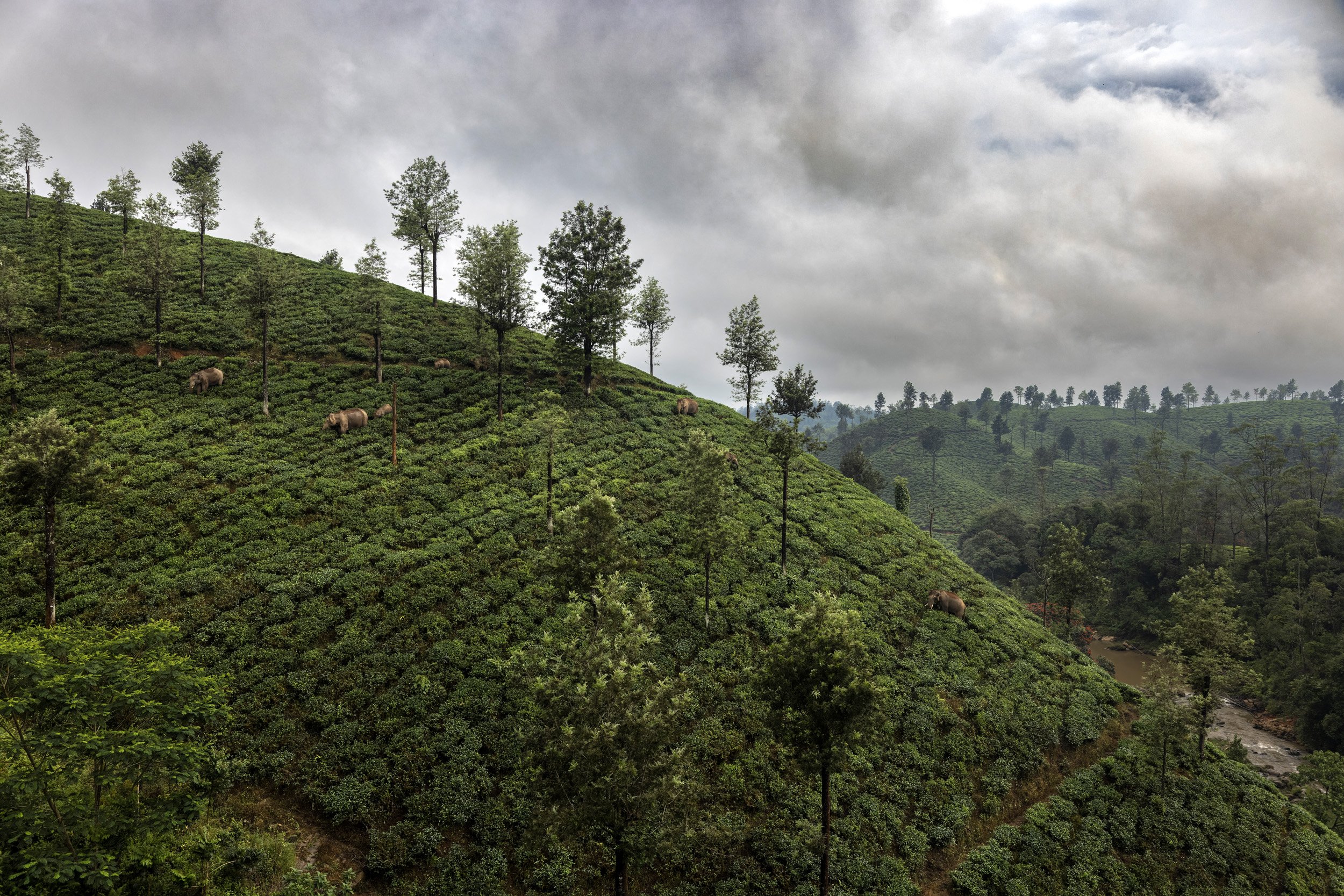
VALPARAI, TAMIL NADU, INDIA, 15TH OCTOBER 2022: Wild elephants are seen high on the slopes of Valparai tea estate. Valparai is a huge tea-estate area that British colonialists transformed from native forest in 1890 as a response to the Chinese hike in tea prices. There was no concession given to the presence of thousands of elephants except to kill them. Today, wild elephants can sometimes be seen in the tea-estates, eating the grass between the bushes. Anamalai Tiger reserve is not far away. This has always been an elephant area but they are forced to live in forest corridors between the tea estates and are often chased away to ensure tea worker safety. The human-elephant conflict here is a delicate issue. The tea plantations are a hindrance to the movement of wildlife, particularly elephants who walk large distances to reach water bodies and feeding areas.
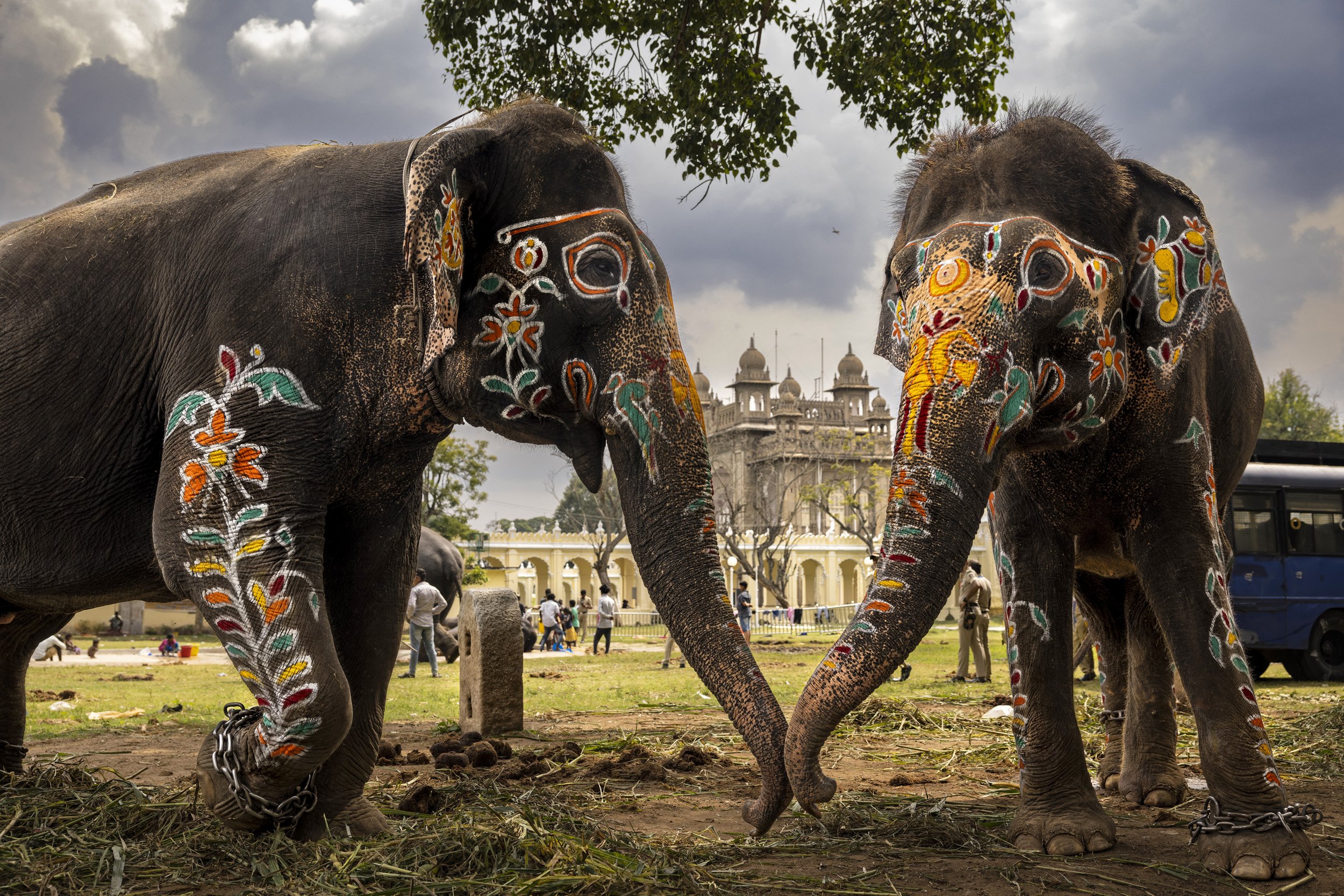
MYSORE, INDIA, OCTOBER 4, 2022: Two palace elephants touch trunks to comfort and reassure each other during the Mysore Dasara, the only state festival in India where elephants are used. In the days leading up to the festival these elephants injured two people, they are nervous and traumatized by the huge crowds at the festival. Their weaving behaving, constant trunk touching and placing their trunks in each other mouths is soothing behavior to cope with being chained all day and a massive human presence.

HARANGI ELEPHANT CAMP, KARNATAKA, INDIA, 21st October 2022: Experienced elephant mahout JS Raju guides blind elephant Ekadantha into the water to be bathed. This elephant will often hesitate, lifting his foot until he receives reassurance it is safe to go forward. Ekadantha is over 60 years old and is retired. He was with his previous mahout for over 40 years and locals say they knew each other so well that their relationship was almost unspoken. Good mahouts say that it is not necessary to beat the elephant or hurt it with a hooked stick in order to understand each other. Unfortunately Covid saw many of the older mahouts die and some of their wisdom died with them. Captured elephants in camps are big tourist business and that can mean impatience with the elephants and rough treatment. Elephant researchers are paying more attention to this ancident relationship now in order to glean a greater understanding from the mahouts of elephant behavior.

GALGAMUWA, SRI LANKA, 30 JUNE 2022: A juvenile elephant lies dead after eating a home-made grenade made from firecrackers combined with metal shrapnel hidden inside a pumpkin or watermelon. The explosion blew off most of this juvenile elephant’s lower jaw and decimated his tongue and teeth. Sri Lanka wildlife department officials estimate that this elephant most likely walked around for two weeks after the explosion in terrible pain, unable to eat or drink before succumbing on the morning of this photograph. There have been three such incidents in this area in the last year that have been recorded. It is a sign of growing village frustration with crop-raiding elephants that such techniques are being employed. Ironically, this area is forestry department land, the poor have been allowed to farm here by vote seeking politicans but not to put up permanent structures. The increasingly shrinking habitat available to Sri Lankan elephant means human elephant conflict is inevitable, especially as more and more crops are grown in what were formerly elephant areas. As a result, there is significant tension between local villagers and the elephants. The elephants exist in a serious of small remaining wild spaces and are often unwelcome visitors to areas where humans are living and cultivating crops.

GALGAMUWA, SRI LANKA, 30 JUNE 2022: A juvenile elephant is seen dead after eating a home-made grenade made of explosive taken from firecrackers combined with metal ball bearings hidden inside a pumpkin or watermelon. The explosion blew off most of the elephant’s lower jaw and decimated his tongue and teeth. Sri Lanka wildlife department officials estimate that this elephant most likely walked around for two weeks after the explosion in terrible pain, unable to eat or drink before succumbing on the morning of this photograph. There have been three such incidents in this area in the last three years that have been recorded. It is a sign of growing village frustration that such techniques are being employed. Ironically, this area is forestry department land, the poor have been allowed to farm here but not to put up permanent structures. The increasingly smaller habitat available to Sri Lankan elephant means human elephant conflict is inevitable, especially as more and more crops are grown in what were formerly elephant areas. As a result, there is significant tension between local villagers and the elephants. The elephants exist in a serious of small remaining wild spaces and are often unwelcome visitors to areas where humans are living and cultivating crops. Sri Lanka has one of the highest incidents of human elephant conflict as a result. (Photo by Brent Stirton/Getty Images for National Geographic.)

KERALA, INDIA, 15 APRIL 2013: Eliphants are prepared in a roadside canal to attend a religious festival in Kerala, India 15 April 2013. Elephants have become increasingly popular at religious festivals in Kerala, for centuries they have been used by the Hindu faithful because of their role in Hinduism and also as a symbol of power. In recent years both Christian and Islamic factions have introduced elephants into their festival. As a result these elephant have become heavily overused during the festival period. They have little rest, are surrounded by a roaring crowd, loud music and concussive fireworks. Elephants that are in mhust have also been used, despite their increased aggression in this period. Accidents and killings have been commonplace, panicked and aggressive elephants have killed a number of spectators, as recently as January 2013 an elephant killed 3 woman spectators yet was allowed to continue performing. The elephant owners charge large fees for appearances and there are devout, fanatical followings for individual elephants. Despite the danger, people continue to flock to these events. Elephants are typically wild animals who have been caught and broken, then trained to obey commands. Elephants in Kerala spend their whole lives chained, living in small spaces like open air prisons and performing manual labor or appearing at these festivals. (Photo by Brent Stirton/Reportage by Getty Images.)

MYSORE, INDIA, OCTOBER 2, 2022: Rehearsals and preparations for the Mysore Dasara, a festival of culture in the state of Karnataka and the only state festival in India where elephants are used. Mysore Dasara is a Royal Festival that celebrates “the victory of truth over evil” that lasts 10 days. 12 Dasara elephants march on the procession route from Mysore Palace to Bannimantap twice a day. These elephants are considered the pride of the state. The elephants used in the Mysore Dasara are all capture elephants, they usually live in Dubare Elephant camp and form a vital part of a Forestry services team that captures wild rogue elephants and and breaks them down until they integrate into Dubare or another elephant camp. Many of these captive elephants were once part of the timber industry or they have been captured themselves, or they were calf victims of human/ elephant conflict and grew up in an elephant camp. Karnataka does not allow private ownership of elephants and the elephants are the property of the Forest Department. The Mysore Dasara attracts huge crowds, and it is essential that the elephants involved can remain calm in these circumstances and obey orders from their experienced mahouts. (Photo by Brent Stirton/Getty Images for National Geographic Magazine.)

DAMBULLA DUMP SITE, HABARANA, SRI LANKA, 4TH JULY 2022: Wild elelphants from nearby Minneriya and Kaudulla National Parks are seen in Dambulla dump scavenging for fruit and vegetables that have been thrown away. This dump has existed for over ten years and elephants have been regular visitors. A number of these elephants have become residents in the area, drawn to the sweet fruits they can't get elsewhere. Conservationists argue against this practise, saying that elephants then associate humans with food and that can be dangerous for both humans and elephants. There are also many plastics and other contaminants in this garbage and there are some fears that will bring health issues to these elephants. Ironically, there is a new hotel being built at this dump site as well a a golf buggy circuit for visitor to see the elephants. This is expected to open in 2023. (Photo by Brent Stirton/Getty Images for National Geographic.)

HABARANA, SRI LANKA, 16 AUGUST 2021: Elephants from Kaudula National Park are seen scavenging inside burning trash at the controversial Minneriya Garbage dump just outside the park boundary. Elephants have been breaking through the electric fence to get to this dump to access fruit that has been thrown away but are also eating plastic and other substances. Garbage is not separated into organic material at Minneriya. Local villagers are worried this elephant behavior will extend to elephants raiding their crops and have been trying to do something about the dump visits and get the dump closed down. Human elephant conflict is common in Sri Lanka as development is often carried out without due thought to the environment and animals. Over 800 Asian elephants died in Sri Lanka last year as a result. (Photo by Brent Stirton/Getty Images)

TISSAMAHARAMA, SRI LANKA, 11 JULY 2022: A male bull elephant is seen scavenging at a garbage dump on the outskirts of town. The scar from a gun-shot wound is clearly seen on his upper left front leg. He has another wound high on his back. These wounds are usually the result of insistent crop raiding by the elephant. The human elephant conflict often escalates from shouting and fireworks to the elephant eventually being shot, most often by a shotgun. This happens when the threat to crops and sometimes to human life becomes too great and all other methods fail. This usually is not fatal and drives the elephant away for a couple of months. A number of male elephants come to this location as there is both a garbage dump with refuse vegetables and fruit as well as nearby crops. Male elephants in Sri Lanka are able to break the electric fences of the wildlife reserves and as a result their diet is more varied and they are healthier. The fences are something of an anomaly as 60% of all elephants in Sri Lanka live outside of the reserves close to human populations and many males only enter reserves when they are in mhust and seeking breeding females. (photo by Brent Stirton/Getty Images for National Geographic.)

GALGAMUWA, SRI LANKA, 24 JUNE, 2022: Upul Chataranga, 28, spends many nights of the year high in a tree in an elephant watch hut. Elephants live close by in diminished wild areas and corridors. It is normal for them to crop raid and farmers have to observe constant vigilance to protect their crops. If Upul sees elephants he will use firecrackers, shouting and even vehicles to try to frighten the elephants away. This is not always successful and farmers lose crops regularly and find themselves in real danger. (photo by Brent Stirton/Getty Images for National Geographic.)

GALGAMUWA, SRI LANKA, 28 JUNE, 2022: Mr Kiribanda, 60, is seen in his rice paddies close to his home on the border region of the Kahalla Pallawa nature reserve as it runs up against cultivation areas. Mr Kiribanda has been fighting with wild elephants who raid his fields for many years, he confesses that he is tired of fighting and sleeping in his fields to protect his crops and is thinking of giving up cultivation. He worries about alternative employment. There is significant tension between local villagers and the elephants. The elephants exist in a serious of small remaining wild spaces and in areas where humans are living and cultivating crops. There is a great deal of human elephant conflict as a result. (photo by Brent Stirton/Getty Images for National Geographic.)

GALGAMUWA, SRI LANKA, 28 JUNE, 2022: Village men prepare to spend the night on elephant watch in their rice paddies close to the border region of the Kahalla Pallawa nature reserve. This area has many elephant and the border region runs up against cultivation areas. There is significant tension between local villagers and the elephants. The elephants exist in a serious of small remaining wild spaces and in areas where humans are living and cultivating crops. There is a great deal of human elephant conflict as a result. (photo by Brent Stirton/Getty Images for National Geographic.)

GALGAMUWA, SRI LANKA, 28 JUNE, 2022: Village men prepare to spend the night on elephant watch in their rice paddies close to the border region of the Kahalla Pallawa nature reserve. This area has many elephant and the border region runs up against cultivation areas. There is significant tension between local villagers and the elephants. The elephants exist in a serious of small remaining wild spaces and in areas where humans are living and cultivating crops. There is a great deal of human elephant conflict as a result. (photo by Brent Stirton/Getty Images for National Geographic.)

GALGAMUWA, SRI LANKA, 30 JUNE, 2022: Villagers engage with elephants in a nightly ritual where the villagers try to use a limited supply of firecrackers combined with shouting to drive off wild elephants intent on eating their crops both in the fields and around the villagers homes. These village homes are on the border region of the Kahalla Pallawa nature reserve. This area runs up against cultivation areas and is a source of regular human elephant conflict. Progressive thinking in Sri Lanka on this issue states that if elephants are allowed to come into these areas once the harvest is complete, then there should be more room for coexistence. Temporary Electric fences around cultivated fields is one solution but the elephants are fast learners and will colapse trees or branches on the fences in order to access the fields. As a result, most villagers have to send men to sleep in the fields closer to harvest time in order to protect the crop with firecrackers, fire and shouting. There is significant tension between local villagers and the elephants. The elephants exist in a serious of small remaining wild spaces and are often unwelcome visitors to areas where humans are living and cultivating crops. There is a great deal of human elephant conflict as a result. (photo by Brent Stirton/Getty Images for National Geographic.)

GALGAMUWA, SRI LANKA, 30 JUNE, 2022: Villagers engage with elephants in a nightly ritual where the villagers try to use a limited supply of firecrackers combined with shouting to drive off wild elephants intent on eating their crops both in the fields and around the villagers homes. These village homes are on the border region of the Kahalla Pallawa nature reserve. This area runs up against cultivation areas and is a source of regular human elephant conflict. Progressive thinking in Sri Lanka on this issue states that if elephants are allowed to come into these areas once the harvest is complete, then there should be more room for coexistence. Temporary Electric fences around cultivated fields is one solution but the elephants are fast learners and will colapse trees or branches on the fences in order to access the fields. As a result, most villagers have to send men to sleep in the fields closer to harvest time in order to protect the crop with firecrackers, fire and shouting. There is significant tension between local villagers and the elephants. The elephants exist in a serious of small remaining wild spaces and are often unwelcome visitors to areas where humans are living and cultivating crops. There is a great deal of human elephant conflict as a result. (photo by Brent Stirton/Getty Images for National Geographic.)

GALGAMUWA, SRI LANKA, 22nd JUNE, 2022: Members of Sri Lanka's wildlife department use firecrackers to chase elephants from farms. The shotguns are only for worst case scenarios. During harvesting season this can be a nightly activity as long as supplies last. (photo by Brent Stirton/Getty Images for National Geographic.)

GALGAMUWA, SRI LANKA, 30 JUNE, 2022: A herd of 36 wild elephants are seen inside rice paddies close to village homes on the border region of the Kahalla Pallawa nature reserve. This area runs up against cultivation areas and is a source of regular human elephant conflict. Progressive thinking in Sri Lanka on this issue states that if elephants are allowed to come into these areas once the harvest is complete, then there should be more room for coexistence. Temporary electric fences around cultivated fields is one solution but the elephants are fast learners and will colapse trees or branches on the fences in order to access the fields. As a result, most villagers have to send men to sleep in the fields closer to harvest time in order to protect the crop with firecrackers, fire and shouting. There is significant tension between local villagers and the elephants. The elephants exist in a serious of small remaining wild spaces and are often unwelcome visitors to areas where humans are living and cultivating crops. There is a great deal of human elephant conflict as a result. (photo by Brent Stirton/Getty Images for National Geographic.)

BANDIWEWA VILLAGE, ANURDHAPURA, 3RD JULY 2022: Village men are seen as they finish erecting a section of elephant proof electric fence. The fence will be 3 and a half kilometeres long when it is completed. Ninety families live in this village close to a protected area and they have suffered elephant incursions into their fields and their home gardens for as long as they can remember. "My father spent his whole life up a tree looking out for elephants," said one man. These fences are the brain child of NGO The centre for Conservation Research, a group focused on harmonius coexistence between humans and elephants in Sri Lanka, the country with the highest rate of human elephant conflict. CCR donates the fence materials and the village pays for the concrete foundations and provides the labor. The villagers here expressed a unified sense of relief to have this fence in place. (Photo by Brent Stirton/Getty Images for National Geographic. )

KITHULUTHUWA VILLAGE, NORTH CENTRAL, SRI LANKA, 18 AUGUST 2021: DM Premathilaka, 69, has lived in this village for 35 years since it was founded by the Sri Lankan military in 1988 as part of a buffer zone during the country’s long civil war. A week ago, a large bull elephant pushed in the side of his house looking for fruits and vegetables. His son and neighbours chased it away with firecrackers but not before the damage was done. This is not the first time he has had to deal with elephants. Human elephant conflict is common in this area and his is the second house to be damaged this month. “First we had to deal with terrorists, now we are dealing with elelphants,” says Premathilaka. “We need a proper electric fence, but we know that will not be enough.” Sri Lanka’s wildlife authority is very good about compensation for damage caused by elephants but it takes time and can be a little less than the repairs may cost. (Photo by Brent Stirton/Getty Images)

GALGAMUWA, SRI LANKA, 24 JUNE, 2022: Sumith Ranajunga, 44, survived an elephant attack 3 months ago. While on his way to his fields on a motorbike, he was suprised by an elephant that appeared just 10 meters away from him. The elephant knocked him off his bike, grabbed Sumith with his trunk, slammed him to the ground and stamped on his legs, Sumith grabbed onto the elephants leg to try to survive," When I was holding onto the elephants leg, I thought I had no chance. For years I have seen elephants, we are always dealing with them in our fields and in our village. They are always close because we are next to a lake. In the last twenty years their behavior has changed as their area has gotten smaller. " Sumith bears no ill will towards elephants, "I have always loved elephants, I have many pictures of them. If we could return the forests to the way they were, we would not have this problem. It is us who have taken from the elephants." Both of Sumith's legs are crushed and he has extensive steel plates. 6 ribs are broken and his wife Mala takes care of him. She was working as a domestic worker in Kuwait but can no longer do that. Doctors say that Sumith must wait a year before he can begin the process of trying to walk again. (photo by Brent Stirton/Getty Images for National Geographic.)

GALGAMUWA, SRI LANKA, 23RD JUNE, 2022: Mrs N.A Dingiri Menika, 67, lost her husband to an elephant attack as he was riding his bicycle to his elephant watchtower over their paddyfield. This incident occured a week ago. She is seen at the site where he died. He was attacked as he arrived at his family's rice paddy field. A year earlier, Mrs Menika lost her son to an elephant attack in which both he and his friend were killed. Mrs Menika says this happens often and that there is not enough support and care from the Sri Lankan Wildlife department for poor farmers. "we do not even have fire-crackers, we need community village fences too with electricity. Only a few of us have private electric fences, they are too expensive." (photo by Brent Stirton/Getty Images for National Geographic.)

GALGAMUWA, SRI LANKA, 1st July 2022: Mr W.M Ranbanda, 63, was attacked by a wild elephant while in his vegetable fields. This is an elephant that is known to have attacked at least three other people but nothing has been done to remove the animal from the area. It attacked him in the morning and another woman in the afternoon. That woman had to be taken to a hospital far from Galgamuwa to deal with her critical condition. This is a poorer area of Galgamuwa, a agricultural area which has a very high rate of human elephant conflict. Mr Ranbanda has crushed ribs and a broken leg, despite this he says that the elephant problem is largely because humans are farming in what used to be their areas. "We need electric fences for the village but they are expensive, only certain private people can afford them. Our village fence is far from our fields so we are not protected." Mr Ranbanda's son added "If there is a dead or injured elephant, the wildlife department will come, but not for injured or dead people." There is significant tension between local villagers and the elephants. The elephants exist in a serious of small remaining wild spaces and are often unwelcome visitors to areas where humans are living and cultivating crops. There is a great deal of human elephant conflict as a result. (photo by Brent Stirton/Getty Images for National Geographic.)

ALAPURA DISTRICT, KERALA, INDIA: Lakshmi Alumparambil and her husband Sreedharan mourn the loss of their daugher Sudheena to a panicked elephant in a temple festival in Kerala, 17 April 2013. Sudheena and her father were attending a festival where 7 elephants were crammed into a temple space traditionally used for three. The mahout was not paying attention and the elephant was not chained properly, it panicked in the crowd and lashed out and people stampeded, fleeing the temple. Sudheena was trapped against the wall and the elephant crushed her head. She died on the way to hospital. Her parents tell of how she loved elephants, making scrapbooks of pictures and seeing them as often as she could. She was 21 years old and was studying English Literature at the time of her death. She was 20 years old. Elephants are hired for these festivals for very large sums, no-one has been held responsible yet for this attack. (Photo by Brent Stirton/Reportage for NY Times Magazine.)

VALPARAI, TAMIL NADU, INDIA, 18TH OCTOBER 2022: A man fights for his life in Valparia General Hospital after being struck by an elephant half an hour earlier. He was walking very early in the morning, a time when elephants are around, the elephant came up behind him and the man did not see it. Valparai is a huge tea-estate area that British colonialists transformed from native foreest in 1890 as a response to the Chinese hike in tea prices. There was no concession given to the presence of thousands of elephants except to kill them. Today, wild elephants can sometimes be seen in the tea-estates, eating the grass between the bushes. Anamalai Tiger reserve is not far away. This has always been an elephant area but they are forced to live in forest corridors between the tea estates and are often chased away to ensure tea worker safety. The human-elephant conflict here is a delicate issue. The tea plantations are a hindrance to the movement of wildlife, particularly elephants who walk large distances to reach water bodies and feeding areas. (Photo by Brent Stirton/Getty Images for National Geographic Magazine.)

VALPARAI, TAMIL NADU, INDIA, 17TH OCTOBER 2022: Local men check their phones for an elephant proximity warnging, a system instituted to combat human/elephant conflicts issues by local NGO Nature Conservation Foundation. Valparai is a huge tea-estate area that British colonialists transformed from native foreest in 1890 as a response to the Chinese hike in tea prices. There was no concession given to the presence of thousands of elephants except to kill them. Today, wild elephants can sometimes be seen in the tea-estates, eating the grass between the bushes. Anamalai Tiger reserve is not far away. This has always been an elephant area but they are forced to live in forest corridors between the tea estates and are often chased away to ensure tea worker safety. The human-elephant conflict here is a delicate issue. The tea plantations are a hindrance to the movement of wildlife, particularly elephants who walk large distances to reach water bodies and feeding areas. (Photo by Brent Stirton/Getty Images for National Geographic Magazine.)

VALPARAI, TAMIL NADU, INDIA, 19TH OCTOBER 2022: A flashing red light is seen in an area where tea workers live, this light is one of a number of schemes local elephant NGO Nature Conservation Foundation uses to alert local people to the presence of elephants. They also utilize local television stations as well as text messaging. This is all done to try to mitigate human elephant conflict across Valparai. Valparai is a huge tea-estate area that British colonialists transformed from native foreest in 1890 as a response to the Chinese hike in tea prices. There was no concession given to the presence of thousands of elephants except to kill them. Today, wild elephants can sometimes be seen in the tea-estates, eating the grass between the bushes. Anamalai Tiger reserve is not far away. This has always been an elephant area but they are forced to live in forest corridors between the tea estates and are often chased away to ensure tea worker safety. The human-elephant conflict here is a delicate issue. The tea plantations are a hindrance to the movement of wildlife, particularly elephants who walk large distances to reach water bodies and feeding areas. (Photo by Brent Stirton/Getty Images for National Geographic Magazine.)

GALGAMUWA, SRI LANKA, 27 JUNE, 2022: Wild elephant seen drinking water at a small lake close to village home on the border region of the Kahalla Pallawa nature reserve. This area runs up against cultivation areas and is a source of regular human elephant conflict. There is significant tension between local villagers and the elephants. The elephants exist in a serious of small remaining wild spaces and are often unwelcome visitors to areas where humans are living and cultivating crops. There is a great deal of human elephant conflict as a result. (photo by Brent Stirton/Getty Images for National Geographic.)

GALGAMUWA, SRI LANKA, 27 JUNE, 2022: Wild elephant seen drinking water at a small lake close to village home on the border region of the Kahalla Pallawa nature reserve. This area runs up against cultivation areas and is a source of regular human elephant conflict. There is significant tension between local villagers and the elephants. The elephants exist in a serious of small remaining wild spaces and are often unwelcome visitors to areas where humans are living and cultivating crops. There is a great deal of human elephant conflict as a result. (photo by Brent Stirton/Getty Images for National Geographic.)

BANDIPUR NATIONAL PARK, KARNATAKA, INDIA, 10 OCTOBER 2022: Young elephant calves learn by imitation, here they are seen inside Bandipur National Park mastering the art of throwing soil over their bodies. Researchers have established that female elephants with calves have a far lower cortisol count from stress and live more contented lives with less aggression.

GALGAMUWA, SRI LANKA, 27 JUNE, 2022: A single female escorts multiple calves and juveniles, a phenomenon known as nursery behaviour. They are seen at drinking water at a small lake close to village home on the border region of the Kahalla Pallawa nature reserve. This area runs up against cultivation areas and is a source of regular human elephant conflict. There is significant tension between local villagers and the elephants. The elephants exist in a serious of small remaining wild spaces and are often unwelcome visitors to areas where humans are living and cultivating crops. There is a great deal of human elephant conflict as a result. (photo by Brent Stirton/Getty Images for National Geographic.)

GALGAMUWA, SRI LANKA, 27 JUNE, 2022: Wild elephants with calves seen drinking water at a small lake close to village home on the border region of the Kahalla Pallawa nature reserve. Researchers have established that females with calves have far lower cortisol levels and are significantly less stressed. This area runs up against cultivation areas and is a source of regular human elephant conflict. There is significant tension between local villagers and the elephants. The elephants exist in a serious of small remaining wild spaces and are often unwelcome visitors to areas where humans are living and cultivating crops. There is a great deal of human elephant conflict as a result. (photo by Brent Stirton/Getty Images for National Geographic.)

HABARANA, SRI LANKA, 4TH JULY 2022: Two male elphants entertwine trunks in a bonding ritual. They are part of a bachelor herd of 12 wild male elephants from nearby Minneriya and Kaudulla National Parks. These groups of young males regularly intrude into human areas and croplands. Here they are seen in Dambulla dump scavenging for fruit and vegetables that have been thrown away. Conservationists argue against this practise, saying that elephants then associate humans with food and that can be dangerous for both humans and elephants. There are also many plastics and other contaminants in this garbage and there are some fears that will bring health issues to these elephants.

DAMBULLA DUMP SITE, HABARANA, SRI LANKA, 4TH JULY 2022: Wild elelphants from nearby Minneriya and Kaudulla National Parks are seen in Dambulla dump scavenging for fruit and vegetables that have been thrown away. This dump has existed for over ten years and elephants have been regular visitors. A number of these elephants have become residents in the area, drawn to the sweet fruits they can't get elsewhere. Conservationists argue against this practise, saying that elephants then associate humans with food and that can be dangerous for both humans and elephants. There are also many plastics and other contaminants in this garbage and there are some fears that will bring health issues to these elephants. Ironically, there is a new hotel being built at this dump site as well a a golf buggy circuit for visitor to see the elephants. This is expected to open in 2023. (Photo by Brent Stirton/Getty Images for National Geographic.)

YALA NATIONAL PARK, SRI LANKA, 17 JULY 2022: A male elephant in mhust is seen in Yala National Park. When male elephants are in this state, they are ready for breeding and spend most of their time searching for receptive females. These males are agitated and unpredicatable in this state and often aggressive as they experience sexual frustration. The tell-tale sign is the weeping of fluids from a gland behind the eye and a smell that can be identified from a long way away. (Photo by Brent Stirton/Getty Images for National Geographic Magazine.)

MINERIA NATIONAL PARK, SRI LANKA, 3RD JULY 2022: A small herd of female elephants and calves revisit an area where the body of a small calf lies. The calf died of malnutrition two days prior and the elephants touched it with their trunks and feet, trying to revive it. Two days later they once again revisted the scene. pausing at the body and lingering in the area. They charged the photographers vehicle multiple times before slowly walking away. (Photo by Brent Stirton/Getty Images for National Geographic)

BANDIPUR NATIONAL PARK, KARNATAKA, INDIA, 10 OCTOBER 2022: Researchers have established that females with calves have far lower cortisol levels and are significantly less stressed. This baby calf is seen inside Bandipur National Park being swatted by another elephants tail. Bandipur National Park is regarded as one of the most beautiful and better-managed national parks of India. Located amidst the picturesque surroundings of the towering Western Ghats on the Mysore-Ooty highway in Karnataka, it is an important part of the Nilgiri Biosphere Reserve that constitutes Karnataka’s Rajiv Gandhi National Park (Nagarahole) to its Northwest, Tamil Nadu’s Mudumalai Wildlife Sanctuary to its South, and Kerala’s Wayanad Wildlife Sanctuary to its Southwest. The total extent of Bandipur National Park is 872.24 sq km. (Photo by Brent Stirton/Getty Images for National Geographic Magazine.)

BANDIPUR NATIONAL PARK, KARNATAKA, INDIA, 10 OCTOBER 2022: Researchers have established that females with calves have far lower cortisol levels and are significantly less stressed. This group of elphants is seen inside Bandipur National Park. Bandipur National Park is regarded as one of the most beautiful and better-managed national parks of India. Located amidst the picturesque surroundings of the towering Western Ghats on the Mysore-Ooty highway in Karnataka, it is an important part of the Nilgiri Biosphere Reserve that constitutes Karnataka’s Rajiv Gandhi National Park (Nagarahole) to its Northwest, Tamil Nadu’s Mudumalai Wildlife Sanctuary to its South, and Kerala’s Wayanad Wildlife Sanctuary to its Southwest. The total extent of Bandipur National Park is 872.24 sq km. (Photo by Brent Stirton/Getty Images for National Geographic Magazine.)

MINNERIYA NATIONAL PARK, SRI LANKA, 6TH JULY 2022: A distressed female elephant visits the carcass of a dead baby elephant that died 5 days earlier as a result of malnutrition. Researchers suspect this was her calf. The female walked directly across the grassland towards this dead calf, she did not pause to eat but walked directly and paused in front of the carcass, touching it with her trunk. At first touch, she reversed backwards but then came in again and lingered around the former calf. She lingered in the area, not eating, all the while looking at the carcass. It was only when another juvenile elephant reached her and touched her repeatedly on her stomach with his trunk that she walked slowly away.

KABINI, KARNATAKA, 6 OCTOBER 2022: Elephant are one of the main attractions of Kabini Wildlife Sanctuary. The sanctuary has a good population of elephants during the summer months. It also shelters wildlife such as leopard, panther, sambhar, monkeys, bison, sloth bear, spotted deer, cheetal, antelope, crocodile, panther and 250 species of birds. The sanctuary was once the hunting reserve of the Maharajas of Mysore. It consists of the south-eastern part of Nagarhole National Park and extends into the Kabini reservoir. During the months of March, April and May many elephants can be seen in the park due to the presence of young grasses around the reservoir and the lack of water elsewhere. (Photo by Brent Stirton/Getty Images for National Geographic Magazine.)

KABINI, KARNATAKA, 6 OCTOBER 2022: Elephant are one of the main attractions of Kabini Wildlife Sanctuary. The sanctuary has a good population of elephants during the summer months. It also shelters wildlife such as leopard, panther, sambhar, monkeys, bison, sloth bear, spotted deer, cheetal, antelope, crocodile, panther and 250 species of birds. The sanctuary was once the hunting reserve of the Maharajas of Mysore. It consists of the south-eastern part of Nagarhole National Park and extends into the Kabini reservoir. During the months of March, April and May many elephants can be seen in the park due to the presence of young grasses around the reservoir and the lack of water elsewhere. (Photo by Brent Stirton/Getty Images for National Geographic Magazine.)

MINERIA NATIONAL PARK, SRI LANKA, 3RD JULY 2022: A small herd of female elephants and calves revisit an area where the body of a small calf lies. The calf died of malnutrition two days prior and the elephants touched it with their trunks and feet, trying to revive it. Two days later they once again revisted the scene. pausing at the body and lingering in the area. They charged the photographers vehicle multiple times before slowly walking away. (Photo by Brent Stirton/Getty Images for National Geographic)

YALA NATIONAL PARK, SRI LANKA, 17 JULY 2022: An adult female elephant pushs a young calf viciously under the water at a water hole in Yala National Park. This baby lost its mother a month ago, according to elephant observers inside Yala. It is trying to attach itself to this small herd for survival but this matriarch female keeps trying to drive the youngster away. This is part of the matriarch's tough survival strategy for this herd and their own calves.

VALPARAI, TAMIL NADU, INDIA, 16TH OCTOBER 2022: Valparai is a huge tea-estate area that British colonialists transformed from native foreest in 1890 as a response to the Chinese hike in tea prices. There was no concession given to the presence of thousands of elephants except to kill them. Today, wild elephants can sometimes be seen in the tea-estates, eating the grass between the bushes. Anamalai Tiger reserve is not far away. This has always been an elephant area but they are forced to live in forest corridors between the tea estates and are often chased away to ensure tea worker safety. The human-elephant conflict here is a delicate issue. The tea plantations are a hindrance to the movement of wildlife, particularly elephants who walk large distances to reach water bodies and feeding areas. (Photo by Brent Stirton/Getty Images for National Geographic Magazine.)

VALPARAI, TAMIL NADU, INDIA, 16TH OCTOBER 2022: Valparai is a huge tea-estate area that British colonialists transformed from native foreest in 1890 as a response to the Chinese hike in tea prices. There was no concession given to the presence of thousands of elephants except to kill them. Today, wild elephants can sometimes be seen in the tea-estates, eating the grass between the bushes. Anamalai Tiger reserve is not far away. This has always been an elephant area but they are forced to live in forest corridors between the tea estates and are often chased away to ensure tea worker safety. The human-elephant conflict here is a delicate issue. The tea plantations are a hindrance to the movement of wildlife, particularly elephants who walk large distances to reach water bodies and feeding areas. (Photo by Brent Stirton/Getty Images for National Geographic Magazine.)

VALPARAI, TAMIL NADU, INDIA, 16TH OCTOBER 2022: Valparai is a huge tea-estate area that British colonialists transformed from native foreest in 1890 as a response to the Chinese hike in tea prices. There was no concession given to the presence of thousands of elephants except to kill them. Today, wild elephants can sometimes be seen in the tea-estates, eating the grass between the bushes. Anamalai Tiger reserve is not far away. This has always been an elephant area but they are forced to live in forest corridors between the tea estates and are often chased away to ensure tea worker safety. The human-elephant conflict here is a delicate issue. The tea plantations are a hindrance to the movement of wildlife, particularly elephants who walk large distances to reach water bodies and feeding areas. (Photo by Brent Stirton/Getty Images for National Geographic Magazine.)

YALA NATIONAL PARK, SRI LANKA, 10TH JULY 2022: A bull male elephant is seen trying to rescue a dead female elephant lying in a water hole inside Yala National Park, it is thought that this elephant died of malnutrition related issues and collapsed inside the water hole at night. This male elephant saw the female and after initially hesitating due to the presence of the photographer’s car, he walked into the water and went directly to the dead female. He then tried to push her with his head to wake her up. When she did not respond, he became more forceful and pushed her body to a shallower section of the water hole. He tried a number of times to push her back on her feet but the corpse just rolled over. After multiple tried, the male waited around the body for a few minutes then left the waterhole. The fences inside national parks in Sri Lanka keep female elephants and younger elephants inside the parks, male elephants break the fence regularly and access other food sources, some of which are grown by humans. 60 % of Sri Lankas elephants live outside of her national parks and are generally healthier than those inside parks as they have more varied food sources. Conservationist observers in these parks state that many of the females in parks are smaller than females outside of the parks and that there is a high death rate for calves. This is supposedly linked to the malnourished females not having sufficient breast milk so the calves are dying of malnutrition. Adult females also appear to have shorter lives inside parks as well as growth issues. Electric fences are one line of defense for Sri Lanka’s human population, and they appear to work well at a village level and around fields during times of cultivation. There are questions however about the planning of fence lines around national parks and what those fences mean for elephants in terms of nutritional needs and breeding. (Photo by Brent Stirton/Getty Images for National Geographic)

YALA NATIONAL PARK, SRI LANKA, 10TH JULY 2022: A bull male elephant is seen meticulously dismantling an electric fence inside Yala National Park. These large males have no problem breaking through fences but this particular male has developed a delicate technique where he does not even need to break the fence but uses the fence poles to lay the wires flat and then simply step over them. The breaking of fences by male adult elephant is a daily ritual in most parks in Sri Lanka. The fences inside national parks in Sri Lanka keep female elephants and younger elephants inside the parks, male elephants break the fence regularly and access other food sources, some of which are grown by humans. 60 % of Sri Lankas elephants live outside of her national parks and are generally healthier than those inside parks as they have more varied food sources. Conservationist observers in these parks state that many of the females in parks are smaller than females outside of the parks and that there is a higher death rate for calves. (Photo by Brent Stirton/Getty Images for National Geographic)

YALA NATIONAL PARK, SRI LANKA, 10TH JULY 2022: A bull male elephant is seen meticulously dismantling an electric fence inside Yala National Park. These large males have no problem breaking through fences but this particular male has developed a delicate technique where he does not even need to break the fence but uses the fence poles to lay the wires flat and then simply step over them. The breaking of fences by male adult elephant is a daily ritual in most parks in Sri Lanka. The fences inside national parks in Sri Lanka keep female elephants and younger elephants inside the parks, male elephants break the fence regularly and access other food sources, some of which are grown by humans. 60 % of Sri Lankas elephants live outside of her national parks and are generally healthier than those inside parks as they have more varied food sources. Conservationist observers in these parks state that many of the females in parks are smaller than females outside of the parks and that there is a higher death rate for calves. (Photo by Brent Stirton/Getty Images for National Geographic)

GALGAMUWA, SRI LANKA, 3 July, 2022: Wild elephant that live in the border region of the Kahalla Pallawa nature reserve are seen coming into cultivated fields of the nearby villages. This area runs up against many rice paddies, manioc and peanut farms and is a source of regular human elephant conflict. There is significant tension between local villagers and the elephants. The elephants exist in a serious of small remaining wild spaces and are often unwelcome visitors to areas where humans are living and cultivating crops. There is a great deal of human elephant conflict as a result. (photo by Brent Stirton/Getty Images for National Geographic.)

YALA NATIONAL PARK, SRI LANKA, 17 JULY 2022: An older male elephant walks on the beach inside Yala National Park. Apparently this male walks on the beach regularly, often in the moonlight. (Photo by Brent Stirton/Getty Images for National Geographic Magazine.)

THE GOLDEN TRIANGLE, THAILAND, AUGUST 17 2022: Mahouts from the Anantara Golden Triangle elephant camp set up elephant puzzle boxes on the top of a hill that overlooks Laos, Thailand and Myanmar. Thai elephants interact with these steel puzzle boxes. The boxes contain fruit but in order to access the fruit, the elephant must learn to open three different doors using their trunk. This project is part of the work of the Comparative Cognition Lab at Hunter College City University of New York in their ongoing efforts to better understand how Asian elephants think in order to potentially mitigate human/elephant conflict across the region. The tests are conducted on both captive and wild elephants, the main difference that has emerged is that captive elephants are less wary and cautious of the boxes. (Photo by Brent Stirton/Getty Images for National Geographic Magazine.)

THE GOLDEN TRIANGLE, THAILAND, AUGUST 16 2022: Thai elephants interact with steel puzzle boxes strapped to trees close to the Anantara Golden Triangle elephant camp. The boxes contain fruit but in order to access the fruit, the elephant must learn to open three different doors using their trunk. This project is part of the work of the Comparative Cognition Lab at Hunter College City University of New York in their ongoing efforts to better understand how Asian elephants think in order to potentially mitigate human/elephant conflict across the region. The tests are conducted on both captive and wild elephants, the main difference that has emerged is that captive elephants are less wary and cautious of the boxes. (Photo by Brent Stirton/Getty Images for National Geographic Magazine.)

THE GOLDEN TRIANGLE, THAILAND, AUGUST 18 2022: Thai elephants interact with steel puzzle boxes on top of a hill that overlooks Laos, Thailand and Myanmar very early in the morning. The boxes contain fruit but to access the fruit, the elephant must learn to open three different doors using their trunk. This project is part of the work of the Comparative Cognition Lab at Hunter College City University of New York in their ongoing efforts to better understand how Asian elephants think in order to potentially mitigate human/elephant conflict across the region. The tests are conducted on both captive and wild elephants, the main difference that has emerged is that captive elephants are less wary and cautious of the boxes.

SALAKPRA NATIONAL PARK, KANCHANABURI, THAILAND: Sarah Jacobson, PHD candidate from the Graduate center City University of New York, works with Thai researcher Pornpimol Kubsanit, 26, and Thai researcher Mananya Pla-ard, 29, to install a "novel object" to a tree on the border of SALAKPRA WILDLIFE SANCTUARY. The researchers also install video camera traps to observe how wild elephants react to these new objects in their environment. This project is part of the work of the Comparative Cognition Lab at Hunter College City University of New York in their ongoing efforts to better understand how Asian elephants think in order to potentially mitigate human/elephant conflict across the region. The tests are conducted on both captive and wild elephants, the main difference that has emerged is that captive elephants are less wary and cautious of the boxes. (Photo by Brent Stirton/Getty Images for National Geographic Magazine.)

SALAKPRA WILDLIFE SANCTUARY, KANCHANABURI, THAILAND: A wild elephant is seen at night investigating a “novel object,” in this case a car wash brush, strapped to a tree on the border of Salakpra Wildlife Sanctuary. The wild elephants are often wary of anything new in their environment, in this case, the elephant has decided the brush would make an ideal back-scratcher. This project is part of the work of the Comparative Cognition Lab at Hunter College City University of New York in their ongoing efforts to better understand how Asian elephants think in order to potentially mitigate human/elephant conflict across the region. The tests are conducted on both captive and wild elephants, the main difference that has emerged is that captive elephants are less wary and cautious of the boxes. (Photo by Brent Stirton/Getty Images for National Geographic Magazine.)

KANDY, SRI LANKA, 21 AUGUST 2021: Significant elephants are bathed and dressed for the Perahera. The Esala Perahera in Kandy is celebrated to honor the Sacred Tooth Relic and the four 'guardian' Gods Natha, Vishnu, Kataragama and Goddess Pattini. It is the only Perahera in the world which is held with the participation of more than fifty elephants and tuskers adorned with ceremonial costumes, hundreds of drummers, dancers and singers. The Sinhalese term 'Perahera' means a parade of musicians, dancers, singers, acrobats and various other performers accompanied by a large number of caparisoned Tuskers and Elephants parading the streets in celebration of a religious event. The Dalada Perahera is believed to have begun when the Sacred Tooth Relic of the Buddha was brought to Sri Lanka from India during the 4th century CE, eight hundred years after the passing away of Buddha. According to tradition, the Tooth Relic was taken in procession to Sri Lanka by Princess Hemamala & Prince Dantha.

KANDY, SRI LANKA, 21 AUGUST 2021: The Esala Perahera in Kandy is celebrated to honor the Sacred Tooth Relic and the four 'guardian' Gods Natha, Vishnu, Kataragama and Goddess Pattini. It is the only Perahera in the world which is held with the participation of more than fifty elephants and tuskers adorned with ceremonial costumes, hundreds of drummers, dancers and singers. The Sinhalese term 'Perahera' means a parade of musicians, dancers, singers, acrobats and various other performers accompanied by a large number of caparisoned Tuskers and Elephants parading the streets in celebration of a religious event. The Dalada Perahera is believed to have begun when the Sacred Tooth Relic of the Buddha was brought to Sri Lanka from India during the 4th century CE, eight hundred years after the passing away of Buddha. According to tradition, the Tooth Relic was taken in procession to Sri Lanka by Princess Hemamala & Prince Dantha.

MYSORE, INDIA, OCTOBER 2, 2022: Rehearsals and preparations for the Mysore Dasara, a festival of culture in the state of Karnataka and the only state festival in India where elephants are used. Mysore Dasara is a Royal Festival that celebrates “the victory of truth over evil” that lasts 10 days. 12 Dasara elephants march on the procession route from Mysore Palace to Bannimantap twice a day. These elephants are considered the pride of the state. The elephants used in the Mysore Dasara are all capture elephants, they usually live in Dubare Elephant camp and form a vital part of a Forestry services team that captures wild rogue elephants and and breaks them down until they integrate into Dubare or another elephant camp. Many of these captive elephants were once part of the timber industry or they have been captured themselves, or they were calf victims of human/ elephant conflict and grew up in an elephant camp. Karnataka does not allow private ownership of elephants and the elephants are the property of the Forest Department. The Mysore Dasara attracts huge crowds, and it is essential that the elephants involved can remain calm in these circumstances and obey orders from their experienced mahouts. (Photo by Brent Stirton/Getty Images for National Geographic Magazine.)

THRISSUR, KERALA, INDIA, 19 APRIL 2013: Mahouts clean an elephant in a private home enclosure, Thrissur, Kerala, India 19 April 2013. This elephant belongs to Sundar Menon, a fuel supply magnate who runs Sungroup international. His is one of over 50 elephants that will attend the largest elephant festival in Kerala. These 50 elephants attend this festival amidst a crowd of over 500 000 people. Elephants have become increasingly popular at religious festivals in Kerala, for centuries they have been used by the Hindu faithful because of their role in Hinduism and also as a symbol of power. In recent years both Christian and Islamic factions have introduced elephants into their festival. As a result these elephant have become heavily overused during the festival period. They have little rest, are surrounded by a roaring crowd, loud music and concussive fireworks. Elephants that are in Must have also been used, despite their increased aggression in this period. Accidents and killings have been commonplace, panicked and aggressive elephants have killed a number of spectators, as recently as January 2013 an elephant killed 3 woman spectators yet was allowed to continue performing. The elephant owners charge large fees for appearances and there are devout, fanatical followings for individual elephants. Despite the danger, people continue to flock to these events. Elephants are typically wild animals who have been caught and broken, then trained to obey commands. Elephants in Kerala spend their whole lives chained, living in small spaces like open air prisons and performing manual labor or appearing at these festivals. (Photo by Brent Stirton/Reportage by Getty Images.)

KERALA, INDIA, 15 APRIL 2013: An elephant is delivered by truck to attend a festival in Kerala, India 15 April 2013. Elephants have become increasingly popular at religious festivals in Kerala, for centuries they have been used by the Hindu faithful because of their role in Hinduism and also as a symbol of power. In recent years both Christian and Islamic factions have introduced elephants into their festival. As a result these elephant have become heavily overused during the festival period. They have little rest, are surrounded by a roaring crowd, loud music and concussive fireworks. Elephants that are in mhust have also been used, despite their increased aggression in this period. Accidents and killings have been commonplace, panicked and aggressive elephants have killed a number of spectators, as recently as January 2013 an elephant killed 3 woman spectators yet was allowed to continue performing. The elephant owners charge large fees for appearances and there are devout, fanatical followings for individual elephants. Despite the danger, people continue to flock to these events. Elephants are typically wild animals who have been caught and broken, then trained to obey commands. Elephants in Kerala spend their whole lives chained, living in small spaces like open air prisons and performing manual labor or appearing at these festivals. (Photo by Brent Stirton/Reportage by Getty Images.)

MYSORE, INDIA, OCTOBER 3, 2022: Rehearsals and preparations for the Mysore Dasara, a festival of culture in the state of Karnataka and the only state festival in India where elephants are used. Mysore Dasara is a Royal Festival that celebrates “the victory of truth over evil” that lasts 10 days. 12 Dasara elephants march on the procession route from Mysore Palace to Bannimantap twice a day. These elephants are considered the pride of the state. The elephants used in the Mysore Dasara are all capture elephants, they usually live in Dubare Elephant camp and form a vital part of a Forestry services team that captures wild rogue elephants and and breaks them down until they integrate into Dubare or another elephant camp. Many of these captive elephants were once part of the timber industry or they have been captured themselves, or they were calf victims of human/ elephant conflict and grew up in an elephant camp. Karnataka does not allow private ownership of elephants and the elephants are the property of the Forest Department. The Mysore Dasara attracts huge crowds, and it is essential that the elephants involved can remain calm in these circumstances and obey orders from their experienced mahouts. (Photo by Brent Stirton/Getty Images for National Geographic Magazine.)

MYSORE, INDIA, OCTOBER 3, 2022: Rehearsals and preparations for the Mysore Dasara, a festival of culture in the state of Karnataka and the only state festival in India where elephants are used. Mysore Dasara is a Royal Festival that celebrates “the victory of truth over evil” that lasts 10 days. 12 Dasara elephants march on the procession route from Mysore Palace to Bannimantap twice a day. These elephants are considered the pride of the state. The elephants used in the Mysore Dasara are all capture elephants, they usually live in Dubare Elephant camp and form a vital part of a Forestry services team that captures wild rogue elephants and and breaks them down until they integrate into Dubare or another elephant camp. Many of these captive elephants were once part of the timber industry or they have been captured themselves, or they were calf victims of human/ elephant conflict and grew up in an elephant camp. Karnataka does not allow private ownership of elephants and the elephants are the property of the Forest Department. The Mysore Dasara attracts huge crowds, and it is essential that the elephants involved can remain calm in these circumstances and obey orders from their experienced mahouts. (Photo by Brent Stirton/Getty Images for National Geographic Magazine.)

KERALA, INDIA, 15 APRIL 2013: Eliphants are prepared in a roadside canal to attend a religious festival in Kerala, India 15 April 2013. Elephants have become increasingly popular at religious festivals in Kerala, for centuries they have been used by the Hindu faithful because of their role in Hinduism and also as a symbol of power. In recent years both Christian and Islamic factions have introduced elephants into their festival. As a result these elephant have become heavily overused during the festival period. They have little rest, are surrounded by a roaring crowd, loud music and concussive fireworks. Elephants that are in mhust have also been used, despite their increased aggression in this period. Accidents and killings have been commonplace, panicked and aggressive elephants have killed a number of spectators, as recently as January 2013 an elephant killed 3 woman spectators yet was allowed to continue performing. The elephant owners charge large fees for appearances and there are devout, fanatical followings for individual elephants. Despite the danger, people continue to flock to these events. Elephants are typically wild animals who have been caught and broken, then trained to obey commands. Elephants in Kerala spend their whole lives chained, living in small spaces like open air prisons and performing manual labor or appearing at these festivals. (Photo by Brent Stirton/Reportage by Getty Images.)

MAMUTHY TOWN, KERALA, INDIA, 14 APRIL 2013: An elephant festival at Subrimanya Temple, Mamuthy Town, Kerala, India 14 April 2013. Elephants have become increasingly popular at religious festivals in Kerala, for centuries they have been used by the Hindu faithful because of their role in Hinduism and also as a symbol of power. In recent years both Christian and Islamic factions have introduced elephants into their festival. As a result these elephant have become heavily overused during the festival period. They have little rest, are surrounded by a roaring crowd, loud music and concussive fireworks. Elephants that are in Must have also been used, despite their increased aggression in this period. Accidents and killings have been commonplace, panicked and aggressive elephants have killed a number of spectators, as recently as January 2013 an elephant killed 3 woman spectators yet was allowed to continue performing. The elephant owners charge large fees for appearances and there are devout, fanatical followings for individual elephants. Despite the danger, people continue to flock to these events. Elephants are typically wild animals who have been caught and broken, then trained to obey commands. Elephants in Kerala spend their whole lives chained, living in small spaces like open air prisons and performing manual labor or appearing at these festivals. (Photo by Brent Stirton/Reportage by Getty Images.)

MAMUTHY TOWN, KERALA, INDIA, 14 APRIL 2013: An elephant festival at Subrimanya Temple, Mamuthy Town, Kerala, India 14 April 2013. Elephants have become increasingly popular at religious festivals in Kerala, for centuries they have been used by the Hindu faithful because of their role in Hinduism and also as a symbol of power. In recent years both Christian and Islamic factions have introduced elephants into their festival. As a result these elephant have become heavily overused during the festival period. They have little rest, are surrounded by a roaring crowd, loud music and concussive fireworks. Elephants that are in Must have also been used, despite their increased aggression in this period. Accidents and killings have been commonplace, panicked and aggressive elephants have killed a number of spectators, as recently as January 2013 an elephant killed 3 woman spectators yet was allowed to continue performing. The elephant owners charge large fees for appearances and there are devout, fanatical followings for individual elephants. Despite the danger, people continue to flock to these events. Elephants are typically wild animals who have been caught and broken, then trained to obey commands. Elephants in Kerala spend their whole lives chained, living in small spaces like open air prisons and performing manual labor or appearing at these festivals. (Photo by Brent Stirton/Reportage by Getty Images.)

KERALA, INDIA, 15 APRIL 2013: A vet checks to see if an elephant is in mhust before allowing it to attend a festival in Kerala, India 15 April 2013. This vet told the NY Times the elephant was safe yet told the owner in Hindi that it was in fact coming into mhust and could become aggressive with the crowd at the temple. Elephants have become increasingly popular at religious festivals in Kerala, for centuries they have been used by the Hindu faithful because of their role in Hinduism and also as a symbol of power. In recent years both Christian and Islamic factions have introduced elephants into their festival. As a result these elephant have become heavily overused during the festival period. They have little rest, are surrounded by a roaring crowd, loud music and concussive fireworks. Elephants that are in mhust have also been used, despite their increased aggression in this period. Accidents and killings have been commonplace, panicked and aggressive elephants have killed a number of spectators, as recently as January 2013 an elephant killed 3 woman spectators yet was allowed to continue performing. The elephant owners charge large fees for appearances and there are devout, fanatical followings for individual elephants. Despite the danger, people continue to flock to these events. Elephants are typically wild animals who have been caught and broken, then trained to obey commands. Elephants in Kerala spend their whole lives chained, living in small spaces like open air prisons and performing manual labor or appearing at these festivals. (Photo by Brent Stirton/Reportage by Getty Images.)

KERALA, INDIA, 15 APRIL 2013: An elephant walks past two nervous women on its way to attend a festival in Kerala, India 15 April 2013. Elephants have become increasingly popular at religious festivals in Kerala, for centuries they have been used by the Hindu faithful because of their role in Hinduism and also as a symbol of power. In recent years both Christian and Islamic factions have introduced elephants into their festival. As a result these elephant have become heavily overused during the festival period. They have little rest, are surrounded by a roaring crowd, loud music and concussive fireworks. Elephants that are in mhust have also been used, despite their increased aggression in this period. Accidents and killings have been commonplace, panicked and aggressive elephants have killed a number of spectators, as recently as January 2013 an elephant killed 3 woman spectators yet was allowed to continue performing. The elephant owners charge large fees for appearances and there are devout, fanatical followings for individual elephants. Despite the danger, people continue to flock to these events. Elephants are typically wild animals who have been caught and broken, then trained to obey commands. Elephants in Kerala spend their whole lives chained, living in small spaces like open air prisons and performing manual labor or appearing at these festivals. (Photo by Brent Stirton/Reportage by Getty Images.)

PARAVOOR, KERALA, INDIA, 15 APRIL 2013: An elephant festival at Paravoor, Kerala, India 15 April 2013. Elephants have become increasingly popular at religious festivals in Kerala, for centuries they have been used by the Hindu faithful because of their role in Hinduism and also as a symbol of power. In recent years both Christian and Islamic factions have introduced elephants into their festival. As a result these elephant have become heavily overused during the festival period. They have little rest, are surrounded by a roaring crowd, loud music and concussive fireworks. Elephants that are in Must have also been used, despite their increased aggression in this period. Accidents and killings have been commonplace, panicked and aggressive elephants have killed a number of spectators, as recently as January 2013 an elephant killed 3 woman spectators yet was allowed to continue performing. The elephant owners charge large fees for appearances and there are devout, fanatical followings for individual elephants. Despite the danger, people continue to flock to these events. Elephants are typically wild animals who have been caught and broken, then trained to obey commands. Elephants in Kerala spend their whole lives chained, living in small spaces like open air prisons and performing manual labor or appearing at these festivals. (Photo by Brent Stirton/Reportage by Getty Images.)

MYSORE, INDIA, OCTOBER 4, 2022: Festival elephants are weighed at a truck weigh station to check on their well-being, this is all part of preparations for the Mysore Dasara, a festival of culture in the state of Karnataka and the only state festival in India where elephants are used. Mysore Dasara is a Royal Festival that celebrates “the victory of truth over evil” that lasts 10 days. 12 Dasara elephants march on the procession route from Mysore Palace to Bannimantap twice a day. These elephants are considered the pride of the state. The elephants used in the Mysore Dasara are all capture elephants, they usually live in Dubare Elephant camp and form a vital part of a Forestry services team that captures wild rogue elephants and and breaks them down until they integrate into Dubare or another elephant camp. Many of these captive elephants were once part of the timber industry or they have been captured themselves, or they were calf victims of human/ elephant conflict and grew up in an elephant camp. Karnataka does not allow private ownership of elephants and the elephants are the property of the Forest Department. The Mysore Dasara attracts huge crowds, and it is essential that the elephants involved can remain calm in these circumstances and obey orders from their experienced mahouts. (Photo by Brent Stirton/Getty Images for National Geographic Magazine.)

MYSORE, INDIA, OCTOBER 2, 2022: Rehearsals and preparations for the Mysore Dasara, a festival of culture in the state of Karnataka and the only state festival in India where elephants are used. Mysore Dasara is a Royal Festival that celebrates “the victory of truth over evil” that lasts 10 days. 12 Dasara elephants march on the procession route from Mysore Palace to Bannimantap twice a day. These elephants are considered the pride of the state. The elephants used in the Mysore Dasara are all capture elephants, they usually live in Dubare Elephant camp and form a vital part of a Forestry services team that captures wild rogue elephants and and breaks them down until they integrate into Dubare or another elephant camp. Many of these captive elephants were once part of the timber industry or they have been captured themselves, or they were calf victims of human/ elephant conflict and grew up in an elephant camp. Karnataka does not allow private ownership of elephants and the elephants are the property of the Forest Department. The Mysore Dasara attracts huge crowds, and it is essential that the elephants involved can remain calm in these circumstances and obey orders from their experienced mahouts. (Photo by Brent Stirton/Getty Images for National Geographic Magazine.)

MYSORE, INDIA, OCTOBER 2, 2022: Rehearsals and preparations for the Mysore Dasara, a festival of culture in the state of Karnataka and the only state festival in India where elephants are used. Mysore Dasara is a Royal Festival that celebrates “the victory of truth over evil” that lasts 10 days. 12 Dasara elephants march on the procession route from Mysore Palace to Bannimantap twice a day. These elephants are considered the pride of the state. The elephants used in the Mysore Dasara are all capture elephants, they usually live in Dubare Elephant camp and form a vital part of a Forestry services team that captures wild rogue elephants and and breaks them down until they integrate into Dubare or another elephant camp. Many of these captive elephants were once part of the timber industry or they have been captured themselves, or they were calf victims of human/ elephant conflict and grew up in an elephant camp. Karnataka does not allow private ownership of elephants and the elephants are the property of the Forest Department. The Mysore Dasara attracts huge crowds, and it is essential that the elephants involved can remain calm in these circumstances and obey orders from their experienced mahouts. (Photo by Brent Stirton/Getty Images for National Geographic Magazine.)

MYSORE, INDIA, OCTOBER 5, 2022: The final day of the Mysore Dasara, a festival of culture in the state of Karnataka and the only state festival in India where elephants are used. Mysore Dasara is a Royal Festival that celebrates “the victory of truth over evil” that lasts 10 days. 12 Dasara elephants march on the procession route from Mysore Palace to Bannimantap twice a day. These elephants are considered the pride of the state. The elephants used in the Mysore Dasara are all capture elephants, they usually live in Dubare Elephant camp and form a vital part of a Forestry services team that captures wild rogue elephants and and breaks them down until they integrate into Dubare or another elephant camp. Many of these captive elephants were once part of the timber industry or they have been captured themselves, or they were calf victims of human/ elephant conflict and grew up in an elephant camp. Karnataka does not allow private ownership of elephants and the elephants are the property of the Forest Department. The Mysore Dasara attracts huge crowds, and it is essential that the elephants involved can remain calm in these circumstances and obey orders from their experienced mahouts. (Photo by Brent Stirton/Getty Images for National Geographic Magazine.)

MYSORE, INDIA, OCTOBER 4, 2022: Rehearsals and preparations for the Mysore Dasara, a festival of culture in the state of Karnataka and the only state festival in India where elephants are used. Mysore Dasara is a Royal Festival that celebrates “the victory of truth over evil” that lasts 10 days. 12 Dasara elephants march on the procession route from Mysore Palace to Bannimantap twice a day. These elephants are considered the pride of the state. The elephants used in the Mysore Dasara are all capture elephants, they usually live in Dubare Elephant camp and form a vital part of a Forestry services team that captures wild rogue elephants and and breaks them down until they integrate into Dubare or another elephant camp. Many of these captive elephants were once part of the timber industry or they have been captured themselves, or they were calf victims of human/ elephant conflict and grew up in an elephant camp. Karnataka does not allow private ownership of elephants and the elephants are the property of the Forest Department. The Mysore Dasara attracts huge crowds, and it is essential that the elephants involved can remain calm in these circumstances and obey orders from their experienced mahouts. (Photo by Brent Stirton/Getty Images for National Geographic Magazine.)

MYSORE, INDIA, OCTOBER 4, 2022: Rehearsals and preparations for the Mysore Dasara, a festival of culture in the state of Karnataka and the only state festival in India where elephants are used. Mysore Dasara is a Royal Festival that celebrates “the victory of truth over evil” that lasts 10 days. 12 Dasara elephants march on the procession route from Mysore Palace to Bannimantap twice a day. These elephants are considered the pride of the state. The elephants used in the Mysore Dasara are all capture elephants, they usually live in Dubare Elephant camp and form a vital part of a Forestry services team that captures wild rogue elephants and and breaks them down until they integrate into Dubare or another elephant camp. Many of these captive elephants were once part of the timber industry or they have been captured themselves, or they were calf victims of human/ elephant conflict and grew up in an elephant camp. Karnataka does not allow private ownership of elephants and the elephants are the property of the Forest Department. The Mysore Dasara attracts huge crowds, and it is essential that the elephants involved can remain calm in these circumstances and obey orders from their experienced mahouts. (Photo by Brent Stirton/Getty Images for National Geographic Magazine.)

MYSORE, INDIA, OCTOBER 5, 2022: The final day of the Mysore Dasara, a festival of culture in the state of Karnataka and the only state festival in India where elephants are used. Mysore Dasara is a Royal Festival that celebrates “the victory of truth over evil” that lasts 10 days. 12 Dasara elephants march on the procession route from Mysore Palace to Bannimantap twice a day. These elephants are considered the pride of the state. The elephants used in the Mysore Dasara are all capture elephants, they usually live in Dubare Elephant camp and form a vital part of a Forestry services team that captures wild rogue elephants and and breaks them down until they integrate into Dubare or another elephant camp. Many of these captive elephants were once part of the timber industry or they have been captured themselves, or they were calf victims of human/ elephant conflict and grew up in an elephant camp. Karnataka does not allow private ownership of elephants and the elephants are the property of the Forest Department. The Mysore Dasara attracts huge crowds, and it is essential that the elephants involved can remain calm in these circumstances and obey orders from their experienced mahouts. (Photo by Brent Stirton/Getty Images for National Geographic Magazine.)

MYSORE, INDIA, OCTOBER 5, 2022: The final day of the Mysore Dasara, a festival of culture in the state of Karnataka and the only state festival in India where elephants are used. Mysore Dasara is a Royal Festival that celebrates “the victory of truth over evil” that lasts 10 days. 12 Dasara elephants march on the procession route from Mysore Palace to Bannimantap twice a day. These elephants are considered the pride of the state. The elephants used in the Mysore Dasara are all capture elephants, they usually live in Dubare Elephant camp and form a vital part of a Forestry services team that captures wild rogue elephants and and breaks them down until they integrate into Dubare or another elephant camp. Many of these captive elephants were once part of the timber industry or they have been captured themselves, or they were calf victims of human/ elephant conflict and grew up in an elephant camp. Karnataka does not allow private ownership of elephants and the elephants are the property of the Forest Department. The Mysore Dasara attracts huge crowds, and it is essential that the elephants involved can remain calm in these circumstances and obey orders from their experienced mahouts. (Photo by Brent Stirton/Getty Images for National Geographic Magazine.)

MYSORE, INDIA, OCTOBER 5, 2022: The final day of the Mysore Dasara, a festival of culture in the state of Karnataka and the only state festival in India where elephants are used. Mysore Dasara is a Royal Festival that celebrates “the victory of truth over evil” that lasts 10 days. 12 Dasara elephants march on the procession route from Mysore Palace to Bannimantap twice a day. These elephants are considered the pride of the state. The elephants used in the Mysore Dasara are all capture elephants, they usually live in Dubare Elephant camp and form a vital part of a Forestry services team that captures wild rogue elephants and and breaks them down until they integrate into Dubare or another elephant camp. Many of these captive elephants were once part of the timber industry or they have been captured themselves, or they were calf victims of human/ elephant conflict and grew up in an elephant camp. Karnataka does not allow private ownership of elephants and the elephants are the property of the Forest Department. The Mysore Dasara attracts huge crowds, and it is essential that the elephants involved can remain calm in these circumstances and obey orders from their experienced mahouts. (Photo by Brent Stirton/Getty Images for National Geographic Magazine.)

PARAVOOR, KERALA, INDIA, 19 APRIL 2013: Elephants packed very tightly into a festival at Paravoor, Kerala, India 19 April 2013. This flouts the Kerala law that states there must be 5 meters from center of each elephant to the next. These are male elephants who do not know each other and these conditions exacerbate the potential for violence. Elephants have become increasingly popular at religious festivals in Kerala, for centuries they have been used by the Hindu faithful because of their role in Hinduism and also as a symbol of power. In recent years both Christian and Islamic factions have introduced elephants into their festival. As a result these elephant have become heavily overused during the festival period. They have little rest, are surrounded by a roaring crowd, loud music and concussive fireworks. Elephants that are in Must have also been used, despite their increased aggression in this period. Accidents and killings have been commonplace, panicked and aggressive elephants have killed a number of spectators, as recently as January 2013 an elephant killed 3 woman spectators yet was allowed to continue performing. The elephant owners charge large fees for appearances and there are devout, fanatical followings for individual elephants. Despite the danger, people continue to flock to these events. Elephants are typically wild animals who have been caught and broken, then trained to obey commands. Elephants in Kerala spend their whole lives chained, living in small spaces like open air prisons and performing manual labor or appearing at these festivals. (Photo by Brent Stirton/Reportage by Getty Images.)

MYSORE, INDIA, OCTOBER 5, 2022: The final day of the Mysore Dasara, a festival of culture in the state of Karnataka and the only state festival in India where elephants are used. Mysore Dasara is a Royal Festival that celebrates “the victory of truth over evil” that lasts 10 days. 12 Dasara elephants march on the procession route from Mysore Palace to Bannimantap twice a day. These elephants are considered the pride of the state. The elephants used in the Mysore Dasara are all capture elephants, they usually live in Dubare Elephant camp and form a vital part of a Forestry services team that captures wild rogue elephants and and breaks them down until they integrate into Dubare or another elephant camp. Many of these captive elephants were once part of the timber industry or they have been captured themselves, or they were calf victims of human/ elephant conflict and grew up in an elephant camp. Karnataka does not allow private ownership of elephants and the elephants are the property of the Forest Department. The Mysore Dasara attracts huge crowds, and it is essential that the elephants involved can remain calm in these circumstances and obey orders from their experienced mahouts. (Photo by Brent Stirton/Getty Images for National Geographic Magazine.)

TISSAMAHARAMA, SRI LANKA, 11 JULY 2022: Men visiting a betel nut seller standing by a mural depicting an elephant battle from the 1st century. The mural shows a scene where a Southern Sri Lankan prince battles and kills an invading South Indian king. Sri Lankans have a centuries old relationship with elephants that continues today. (photo by Brent Stirton/Getty Images for National Geographic.)

KATARAGAMA, SRI LANKA, 12 JULY 2022: Kataragama temple complex houses a Buddhist temple, a Hindu temple and a Mosque. Wasana, 53, is the temple tusker and he is considered the most revered and important elephant in Sri Lanka. He has led the Pera Hera in Kandy on a number of occasions and carried the sacred tooth relic. He was also born in Sri Lanka and that adds to his status amongst Sri Lankans. Wasana’s chief Mahout is Ajith Ashoka Liyanaye, who has spent 28 years with Wasana. Ajith comes from a long lineage of mahouts and his son works with him on taking care of Wasana. The elephant wears copper protection on the end of his very long tusks, he damaged them during Mhust and the copper covers are there to protect him. Wasana came to the temple at age 7 and he is originally from North Central Sri Lanka. On certain occasions, Wasana makes the temple rounds, delivering flowers to sacred sites and kneeling in front of each of them. (Photo by Brent Stirton/Getty Images for National Geographic.)

KATARAGAMA, SRI LANKA, 12 JULY 2022: Kataragama temple complex houses a Buddhist temple, a Hindu temple and a Mosque. Wasana, 53, is the temple tusker and he is considered the most revered and important elephant in Sri Lanka. He has led the Pera Hera in Kandy on a number of occasions and carried the sacred tooth relic. He was also born in Sri Lanka and that adds to his status amongst Sri Lankans. Wasana’s chief Mahout is Ajith Ashoka Liyanaye, who has spent 28 years with Wasana. Ajith comes from a long lineage of mahouts and his son works with him on taking care of Wasana. The elephant wears copper protection on the end of his very long tusks, he damaged them during Mhust and the copper covers are there to protect him. Wasana came to the temple at age 7 and he is originally from North Central Sri Lanka. On certain occasions, Wasana makes the temple rounds, delivering flowers to sacred sites and kneeling in front of each of them. (Photo by Brent Stirton/Getty Images for National Geographic.)

KATARAGAMA, SRI LANKA, 12 JULY 2022: Kataragama temple complex houses a Buddhist temple, a Hindu temple and a Mosque. Wasana, 53, is the temple tusker and he is considered the most revered and important elephant in Sri Lanka. He has led the Pera Hera in Kandy on a number of occasions and carried the sacred tooth relic. He was also born in Sri Lanka and that adds to his status amongst Sri Lankans. Wasana’s chief Mahout is Ajith Ashoka Liyanaye, who has spent 28 years with Wasana. Ajith comes from a long lineage of mahouts and his son works with him on taking care of Wasana. The elephant wears copper protection on the end of his very long tusks, he damaged them during Mhust and the copper covers are there to protect him. Wasana came to the temple at age 7 and he is originally from North Central Sri Lanka. On certain occasions, Wasana makes the temple rounds, delivering flowers to sacred sites and kneeling in front of each of them. (Photo by Brent Stirton/Getty Images for National Geographic.)

THRISSUR, KERALA, INDIA, 19 APRIL 2013: An elephant attends a temple ceremony at Thrissur, Kerala, India 19 April 2013. Elephants have become increasingly popular at religious festivals in Kerala, for centuries they have been used by the Hindu faithful because of their role in Hinduism and also as a symbol of power. In recent years both Christian and Islamic factions have introduced elephants into their festival. As a result these elephant have become heavily overused during the festival period. They have little rest, are surrounded by a roaring crowd, loud music and concussive fireworks. Elephants that are in Must have also been used, despite their increased aggression in this period. Accidents and killings have been commonplace, panicked and aggressive elephants have killed a number of spectators, as recently as January 2013 an elephant killed 3 woman spectators yet was allowed to continue performing. The elephant owners charge large fees for appearances and there are devout, fanatical followings for individual elephants. Despite the danger, people continue to flock to these events. Elephants are typically wild animals who have been caught and broken, then trained to obey commands. Elephants in Kerala spend their whole lives chained, living in small spaces like open air prisons and performing manual labor or appearing at these festivals. (Photo by Brent Stirton/Reportage by Getty Images.)

KATARAGAMA, SRI LANKA, 12 JULY 2022: Kataragama temple complex houses a Buddhist temple, a Hindu temple and a Mosque. Wasana, 53, is the temple tusker and he is considered the most revered and important elephant in Sri Lanka. He has led the Pera Hera in Kandy on a number of occasions and carried the sacred tooth relic. He was also born in Sri Lanka and that adds to his status amongst Sri Lankans. Wasana’s chief Mahout is Ajith Ashoka Liyanaye, who has spent 28 years with Wasana. Ajith comes from a long lineage of mahouts and his son works with him on taking care of Wasana. The elephant wears copper protection on the end of his very long tusks, he damaged them during Mhust and the copper covers are there to protect him. Wasana came to the temple at age 7 and he is originally from North Central Sri Lanka. On certain occasions, Wasana makes the temple rounds, delivering flowers to sacred sites and kneeling in front of each of them. (Photo by Brent Stirton/Getty Images for National Geographic.)

KATARAGAMA, SRI LANKA, 12 JULY 2022: Kataragama temple complex houses a Buddhist temple, a Hindu temple and a Mosque. Wasana, 53, is the temple tusker and he is considered the most revered and important elephant in Sri Lanka. He has led the Pera Hera in Kandy on a number of occasions and carried the sacred tooth relic. He was also born in Sri Lanka and that adds to his status amongst Sri Lankans. Wasana’s chief Mahout is Ajith Ashoka Liyanaye, who has spent 28 years with Wasana. Ajith comes from a long lineage of mahouts and his son works with him on taking care of Wasana. The elephant wears copper protection on the end of his very long tusks, he damaged them during Mhust and the copper covers are there to protect him. Wasana came to the temple at age 7 and he is originally from North Central Sri Lanka. On certain occasions, Wasana makes the temple rounds, delivering flowers to sacred sites and kneeling in front of each of them. (Photo by Brent Stirton/Getty Images for National Geographic.)

HAMBANTOTA, SRI LANKA, 23rd AUGUST 2021: An elephant tries to cross the highway to get to a water hole in the new development zone. A new harbor is being completed in the new development zone of Hambantota. New developments include a large hospital and a new Chinese owned harbor as well as an airport and new roads and a highway. There is however no environmental assessment plan and elephants now find themselves having to negotiate a new habitat with a greater human presence. (Photo by Brent Stirton/Getty Images)

GALGE, BUFFER ZONE YALA NATIONAL PARK, 13TH JULY 2022: Begging elephants are seen regularly in this area, one of the main reasons is that there a few temple complexes nearby and pilgrims fed the elephants they saw crossing the roads. Nowadays, elephants actively block the road to extort food and fruit from motorists. (Photo by Brent Stirton/Getty Images for National Geographic.)

BUTTALA GALGE, SRI LANKA, 22ND AUGUST 2021: Scenes of begging elephants from a nearby national park who have learnt to come to the roadside and beg for fruit and vegetables from passing motorists. This has taught elephants behavior that can be dangerous for them and also for motorists. The elephants have been known to block the road and lean on vehicles as they look for food from travelers. (photo by Brent Stirton/Getty Images)

GALGE, BUFFER ZONE YALA NATIONAL PARK, 15TH JULY 2022: A pregnant female elephant is seeing begging by the roadside close to Yala National Park. It is unusual to see females doing this, it is usually only the males who will come out of the park to do this. The female is likely to have crossed the electric fence after a male elephant pushed it over. Elephant observers say that many of the females and young elephants within Sri Lanka's parks are not eating a sufficiently diverse and nutritious enough diet, elephants found outside of parks appear to be healthier as they have access to more diverse foods. Begging elephants are seen regularly in this area, one of the main reasons is that there a few temple complexes nearby and pilgrims fed the elephants they saw crossing the roads. Nowadays, elephants actively block the road to extort food and fruit from motorists. (Photo by Brent Stirton/Getty Images for National Geographic.)

DUBARE ELEPHANT CAMP, KARNATAKA, INDIA, 21st OCTOBER 2022: Dubare is one of the larger elephant camps in India, a place where captured elephants are brought and kept. Elephant orphans from the wild are brought to these camps as well as elephants from Human/Elephant conflict incidents. Some of the elephants here are trained to be capture elephants, meaning they will deploy as a team to capture rogue elephants who are perceived to be dangerous to humans or destructive to property. These camps also play a lucrative role in tourism, with thousands of visitors streaming in to see the elephants. Dubare is also the place where the key elephants for the Mysore Dasara festival are housed. Dubare has seen 7 new elephant captures in the last 5 years, there are new camps in the area to accommodate the numbers and the rise in tourism. There is some worry amongst elephant activists that the decision to capture is gaining commercial impetus. Many of the older, experienced mahouts have also passed away in recent years, Covid is behind some of that. As a result, some level of wisdom has been lost and some of the deeper relationships between man and elephant have been lost too. A captured elephant requires breaking in, a brutal process in which they are kept in a huge stockade until they grow used to humans and acquiesce to their new lives. That new elephant will have two mahouts, a master, and his apprentice. This means two families will receive an income because of that elephant. These elephants are the property of the forest department of Karnataka. (Photo by Brent Stirton/Getty Images for National Geographic Magazine.)

DUBARE ELEPHANT CAMP, KARNATAKA, INDIA, 22ND OCTOBER 2022: Dubare is one of the larger elephant camps in India, a place where captured elephants are brought and kept. Elephant orphans from the wild are brought to these camps as well as elephants from Human/Elephant conflict incidents. Some of the elephants here are trained to be capture elephants, meaning they will deploy as a team to capture rogue elephants who are perceived to be dangerous to humans or destructive to property. These camps also play a lucrative role in tourism, with thousands of visitors streaming in to see the elephants. Dubare is also the place where the key elephants for the Mysore Dasara festival are housed. Dubare has seen 7 new elephant captures in the last 5 years, there are new camps in the area to accommodate the numbers and the rise in tourism. There is some worry amongst elephant activists that the decision to capture is gaining commercial impetus. Many of the older, experienced mahouts have also passed away in recent years, Covid is behind some of that. As a result, some level of wisdom has been lost and some of the deeper relationships between man and elephant have been lost too. A captured elephant requires breaking in, a brutal process in which they are kept in a huge stockade until they grow used to humans and acquiesce to their new lives. That new elephant will have two mahouts, a master, and his apprentice. This means two families will receive an income because of that elephant. These elephants are the property of the forest department of Karnataka. (Photo by Brent Stirton/Getty Images for National Geographic Magazine.)

KATARAGAMA, SRI LANKA, 12 JULY 2022: Kataragama temple complex houses a Buddhist temple, a Hindu temple and a Mosque. Wasana, 53, is the temple tusker and he is considered the most revered and important elephant in Sri Lanka. He has led the Pera Hera in Kandy on a number of occasions and carried the sacred tooth relic. He was also born in Sri Lanka and that adds to his status amongst Sri Lankans. Wasana’s chief Mahout is Ajith Ashoka Liyanaye, who has spent 28 years with Wasana. Ajith comes from a long lineage of mahouts and his son works with him on taking care of Wasana. The elephant wears copper protection on the end of his very long tusks, he damaged them during Mhust and the copper covers are there to protect him. Wasana came to the temple at age 7 and he is originally from North Central Sri Lanka. On certain occasions, Wasana makes the temple rounds, delivering flowers to sacred sites and kneeling in front of each of them. (Photo by Brent Stirton/Getty Images for National Geographic.)

DUBARE ELEPHANT CAMP, KARNATAKA, INDIA, 22ND OCTOBER 2022: A captured and chained elephant attempts to rest by leaning against the tree to which it is chained. Dubare is one of the larger elephant camps in India, a place where captured elephants are brought and kept. Elephant orphans from the wild are brought to these camps as well as elephants from Human/Elephant conflict incidents. Some of the elephants here are trained to be capture elephants, meaning they will deploy as a team to capture rogue elephants who are perceived to be dangerous to humans or destructive to property. These camps also play a lucrative role in tourism, with thousands of visitors streaming in to see the elephants. Dubare has seen 7 new elephant captures in the last 5 years, there are new camps in the area to accommodate the numbers and the rise in tourism. There is some worry amongst elephant activists that the decision to capture is gaining commercial impetus.

DUBARE ELEPHANT CAMP, KARNATAKA, INDIA, 22ND OCTOBER 2022: Dubare is one of the larger elephant camps in India, a place where captured elephants are brought and kept. Elephant orphans from the wild are brought to these camps as well as elephants from Human/Elephant conflict incidents. Some of the elephants here are trained to be capture elephants, meaning they will deploy as a team to capture rogue elephants who are perceived to be dangerous to humans or destructive to property. These camps also play a lucrative role in tourism, with thousands of visitors streaming in to see the elephants. Dubare is also the place where the key elephants for the Mysore Dasara festival are housed. Dubare has seen 7 new elephant captures in the last 5 years, there are new camps in the area to accommodate the numbers and the rise in tourism. There is some worry amongst elephant activists that the decision to capture is gaining commercial impetus. Many of the older, experienced mahouts have also passed away in recent years, Covid is behind some of that. As a result, some level of wisdom has been lost and some of the deeper relationships between man and elephant have been lost too. A captured elephant requires breaking in, a brutal process in which they are kept in a huge stockade until they grow used to humans and acquiesce to their new lives. That new elephant will have two mahouts, a master, and his apprentice. This means two families will receive an income because of that elephant. These elephants are the property of the forest department of Karnataka. (Photo by Brent Stirton/Getty Images for National Geographic Magazine.)

DUBARE ELEPHANT CAMP, KARNATAKA, INDIA, 22ND OCTOBER 2022: Dubare is one of the larger elephant camps in India, a place where captured elephants are brought and kept. Elephant orphans from the wild are brought to these camps as well as elephants from Human/Elephant conflict incidents. Some of the elephants here are trained to be capture elephants, meaning they will deploy as a team to capture rogue elephants who are perceived to be dangerous to humans or destructive to property. These camps also play a lucrative role in tourism, with thousands of visitors streaming in to see the elephants. Dubare is also the place where the key elephants for the Mysore Dasara festival are housed. Dubare has seen 7 new elephant captures in the last 5 years, there are new camps in the area to accommodate the numbers and the rise in tourism. There is some worry amongst elephant activists that the decision to capture is gaining commercial impetus. Many of the older, experienced mahouts have also passed away in recent years, Covid is behind some of that. As a result, some level of wisdom has been lost and some of the deeper relationships between man and elephant have been lost too. A captured elephant requires breaking in, a brutal process in which they are kept in a huge stockade until they grow used to humans and acquiesce to their new lives. That new elephant will have two mahouts, a master, and his apprentice. This means two families will receive an income because of that elephant. These elephants are the property of the forest department of Karnataka. (Photo by Brent Stirton/Getty Images for National Geographic Magazine.)

AMPHUR NADOON, MAHASARAKHAN PROVINCE, THAILAND: Scenes from Wat suan paa Phutthasatharn Supraditme Thee temple complex, a site where elephants are being raised in controversial circumstance by Mahouts and the chief monk Luang Poo Kru Ba Dhammamunee, Amphur Nadoon, Mahasarkhan Province, Thailand, 8 November 2011. The chief monk Dhammamunee was recently accused by Thai elephant conservation groups and national media of slowly poisoning an elephant so that he could take its ivory for use in religious amulets. The monk, who has a large following, denies this and there is currently a lawsuit in the Thai courts regarding both the welfare of the elephant and defamation charges. Ivory is often used in religious artifacts and amulets in Thailand and there is some suspicion that a lot of the illegal trade in ivory is for this purpose. The Thai law also allows for a number of legal loopholes which have been exploited by Ivory traffickers, both for domestic ivory and also for illegally trafficked African ivory. (Photo by Brent Stirton/Reportage for National Geographic Magazine.)

SURIN, THAILAND, NOVEMBER 2011: Luang Poo Bru Ba Dhammamunee, head abbot of Wat Suan Paa Phutthasatharn Supraditme thee Temple, photographed in Surin Elephant Village in Surin, Thailand, November 9th, 2011. The monk buys his Ivory carvings of Bhudist icons for resale purposes to his followers. He commented openly on the presence in Thailand of illegally imported African ivory and advised on how to get it into Thailand past customs authorities. He also spoke of how senior memember of the Thai parliment are behind the illegal industry. He spoke enthusiastically of business opportunities if we could get him illegal African ivory, despite his public relations campaign as a carer of elephant in Thailand. The Thai legal system has many loopholes as a result of the domestic ivory situation and Thailand is suspected of being a major transit country for illegal African ivory as a result. The sale of religious ivory icons is a big part of the domestic trade while illegal ivory and elephant goods from both Thailand and Africa regularly make their way to China. (Photo by Brent Stirton/Reportage for National Geographic Magazine.)

SURIN, THAILAND, NOVEMBER 2011: Luang Poo Bru Ba Dhammamunee, head abbot of Wat Suan Paa Phutthasatharn Supraditme thee Temple, walks through the elephant graveyard in Surin Elephant Village in Surin, Thailand, November 9th, 2011. The monk buys his Ivory carvings of Bhudist icons for resale purposes to his followers. He commented openly on the presence in Thailand of illegally imported African ivory and advised on how to get it into Thailand past customs authorities. He also spoke of how senior memember of the Thai parliment are behind the illegal industry. He spoke enthusiastically of business opportunities if we could get him illegal African ivory, despite his public relations campaign as a carer of elephant in Thailand. The Thai legal system has many loopholes as a result of the domestic ivory situation and Thailand is suspected of being a major transit country for illegal African ivory as a result. The sale of religious ivory icons is a big part of the domestic trade while illegal ivory and elephant goods from both Thailand and Africa regularly make their way to China. (Photo by Brent Stirton/Reportage for National Geographic Magazine.)

SURIN, THAILAND, NOVEMBER 2011: Luang Poo Bru Ba Dhammamunee, head abbot of Wat Suan Paa Phutthasatharn Supraditme thee Temple, photographed with his ivory religous icons clearly visible near a ivory carving master in Surin Elephant Village in Surin, Thailand, November 9th, 2011. The monk buys his Ivory carvings of Bhudist icons for resale purposes to his followers. He commented openly on the presence in Thailand of illegally imported African ivory and advised on how to get it into Thailand past customs authorities. He also spoke of how senior memember of the Thai parliment are behind the illegal industry. He spoke enthusiastically of business opportunities if we could get him illegal African ivory, despite his public relations campaign as a carer of elephant in Thailand. The Thai legal system has many loopholes as a result of the domestic ivory situation and Thailand is suspected of being a major transit country for illegal African ivory as a result. The sale of religious ivory icons is a big part of the domestic trade while illegal ivory and elephant goods from both Thailand and Africa regularly make their way to China. (Photo by Brent Stirton/Reportage for National Geographic Magazine.)

SURIN, THAILAND, NOVEMBER 2011: Surin Elephant Village in Surin, Thailand, November 9th, 2011. There are over 200 elephants at this village, most of whom are used in shows which appeal to tourists. The Thai elephant used to be used in logging but this was banned in Thailand over 20 years ago due to deforestation. As a result there is a lot of pressure on Mahouts for survival and this has led to controversy in elephant matters in Thailand. The Mahouts come from a clan which has been responsible for the capture and rearing of elephants for the kings of Siam for well over a 1000 years. Their way of life is now under threat and some of the Mahouts are involved in the illegal elephant trade with Burma and also the trade in ivory and elephant parts, most of which is used in the manufacture of religious icons for the domestic trade or exported to China for foreign sales. The Thai legal system has many loopholes as a result of the domestic ivory situation and Thailand is suspected of being a major transit country for illegal African ivory as a result. (Photo by Brent Stirton/Reportage for National Geographic Magazine.)

Tokyo, Japan, 13 April 2018: Mr. Kyozaburo Tsuge is the head of a famous Japanese Pipe and Tobacco business. He is also an outspoken advocate for the Japanese Ivory Association and for the cultural heritage of Ivory carving in Japan. At the end of the second world war, smoking pipes modelled after General MacArthur’s famous pipe were especially popular amongst American GI’s. Tsuge stopped making ivory pipes 42 years ago. At the height of the Japanese Ivory trade, there were over 500 families involved, nowadays there are 30, mainly focused on the Hanko business. Up until the early 1980's Japan was the largest consumer of ivory on earth. (Photo by Brent Stirton/ Getty Images.)

Tokyo, Japan, April 2018: A Oneisan practices with her Shamisen at the Asakusa Kenban where Geisha shows are held for clients. The bridge of the Shamisen is made of ivory and the plectrum , known as a Bachi, is also made of ivory and is said to create the best sound. The skin on the front of her Shamisen is made of cat skin and the skin at the back is made of dog skin. The instrument itself was made 15 years ago. The shamisen is a plucked stringed instrument. Its construction follows a model similar to that of a guitar or a banjo, with a neck and strings stretched across a resonating body. The neck of the shamisen is fretless and slimmer than that of a guitar or banjo. The body resembles a drum, having a hollow body that is covered front and back with skin, in the manner of a banjo. The skin used depends on the genre of music and the skill of the player. Traditionally skins were made using dog or cat skin but use of these skins gradually fell out of favor starting around 2006 due to social stigma and the decline of workers skilled in preparing these particular skins. The bachi or plectrum used to play the shamisen also differ in size, shape, and material from genre to genre. The bachi used for nagauta shamisen are made out of three possible materials, i.e. wood, plastic, or ivory. Ivory is the preferred substance and Shamisen players often believe it delivers the best sound. (Photo by Brent Stirton/ Getty Images.)

Tokyo, Japan, images of a private ivory Netsuke collection. Many of these exquisitely carved pieces are defined as a carved miniature ornament, especially of ivory or wood, formerly worn in Japan to suspend articles from the sash of a kimono. The idea is that they be used subtly on a garment, sometime to hold a key bag but mainly to ornament something on the clothing or something worn in the belt tying the Kimono. Subtle games are played in Japanese society with the theme of these tiny ornaments. (Photo by Brent Stirton/Verbatim by Getty Images.)

Tokyo, Japan, April 27 2018: Photographs from a visit to a specialized Hanko shop “Ginnando “at Kodemmacho, Nihonbashi area of Tokyo. At this store the most expensive ivory hanko with gold we saw came in a lizard and crocodile case. This iscalled ZOUGAN (inlay) hanko made by MINSEI, the very famous representative Japanesecraftsman. It was 378000yen because his name was on it.On the issues of a foreigner buying an ivory Hanko, this is what the owner of the shop had to say. “ I don’t know if you can come home taking ivory or not but our products are all registeredso I think it no problem.”“ I don’t know if you can take ivory outside of Japan. Ivory is listed 1 of CITES but all of ourproducts are certified with seals. I think it OK. ( He seems to want to sell it while he waspuzzled.)”“Speaking officially registered hanko ( Jitsuin 実印 )is ivory for Japanese. *That is whydemand for ivory is still quite large. But foreigner dislike ivory because ivory is regulated byCITES. The foreigners have feeling animal welfare after all.”He said he has a big company client named ITOCHU,one of the biggest trading company in Japan. Every year department or division of thecompany make new hanko made of other materials but regarding officially registered hankomade of ivory are not made new. Ivory official hanko can be re carved. He scrapes oldname off and carves new person’s name on ivory. Ivory can be reused. This is advantageof ivory he said. I doubt demand for ivory is still large. In response of me saying that is ‘Ivory products are made from dead elephants’, heagreed ‘ Yes. They are from dead elephants.’When carving, no other material is beautiful than ivory.In answering my request “Would you confirm if I can take it outside of Japan?” he said“Confirm? I wonder where to check? You must know where to check. How to confirm??OK I will check. I’ve never had such a client before.But this is only hanko. You don’t carry orn

Tokyo Japan, April 2018: Reiko Nakamura has been studying ivory carving for 12 years. She is passionate about it. She received a tusk from her uncle 12 years ago and cut that up to make the material for her carvings. She first noticed ivory in antique markets and from there she began to be interested in carving herself. She attends classes with a master ivory carver in order to grow in her craft. She became aware of these classes when she saw them advertised in the newspaper. (Photo by Brent Stirton/Verbatim by Getty Images.)

BEIJING, CHINA, NOVEMBER 2011: Scenes from China National Arts and Crafts Corporation - Ivory Carving factory, Beijing, China, November 17. Started in 2009 after China's big African Ivory purchase, this is supposedly the world's largest Ivory carving facility, employing more than 20 carvers and carving an alleged 750 kg of raw ivory annually. The director of the factory stated that the factory was started as a State initiative against the demise of the Ivory carving industry. State owned, it is a clear indication of the Chinese government's investment into the future of the Ivory carving trade. This factory also carves a ton of Mammoth Ivory every year. (Photo by Brent Stirton/Reportage for National Geographic Magazine.)

GUANGZHOU, CHINA, FEBRUARY 2012: Images of ivory carver Wu Rong Chang, 67, who has been carving for 50 years, photographed working on a large Ivory carving at the Guangzhou Daxin Ivory Carving Factory, the only state owned enterprise specialising in the ivory carving businessin the People's Republic of China, Guangzhou, February 4 2012. Daxin specialising in the Hollow Ball carving of 25 layers, large landscape ivory hillocks and also works with Mamoth Ivory. (Photo by Brent Stirton/Reportage for National Geographic Magazine.)
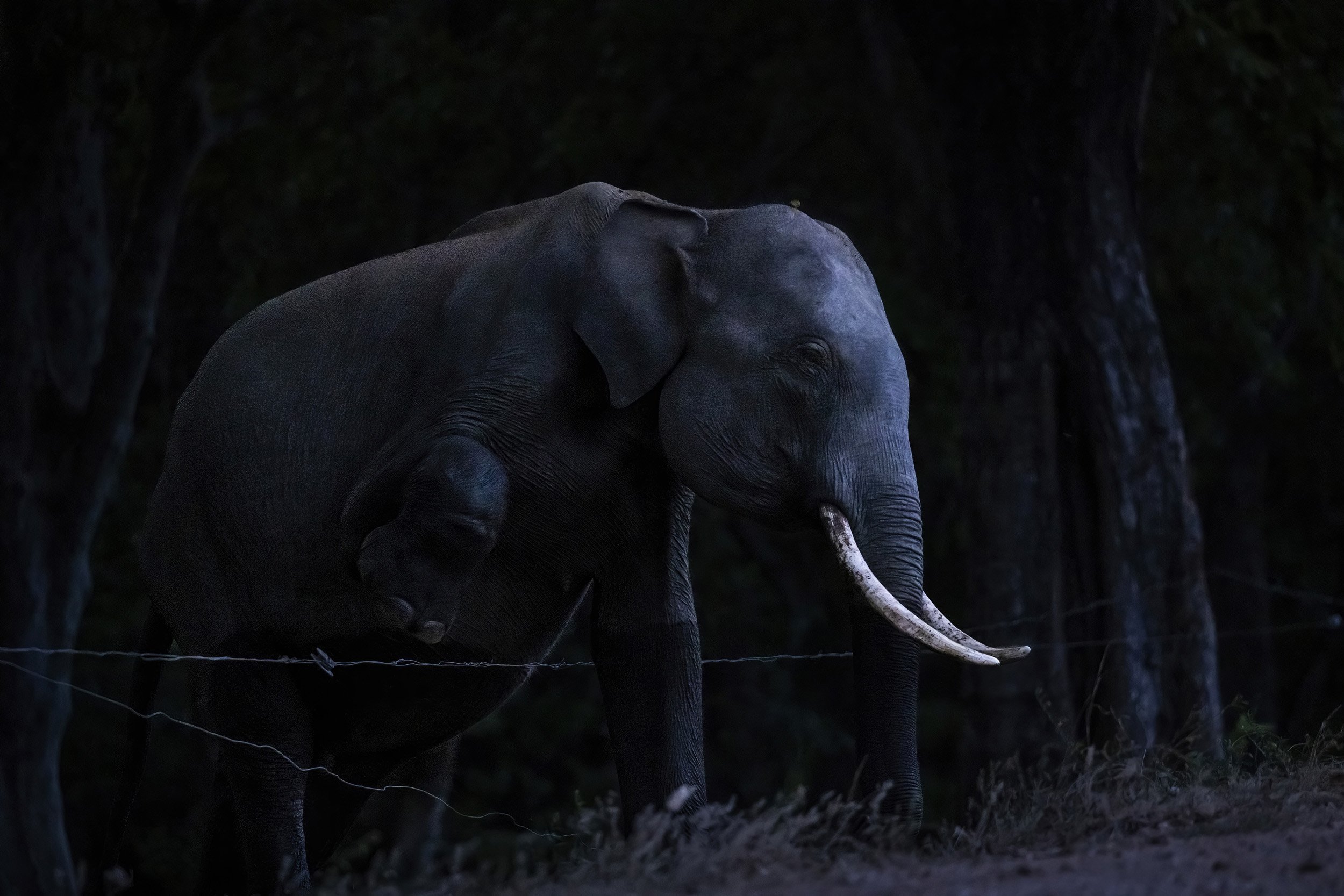
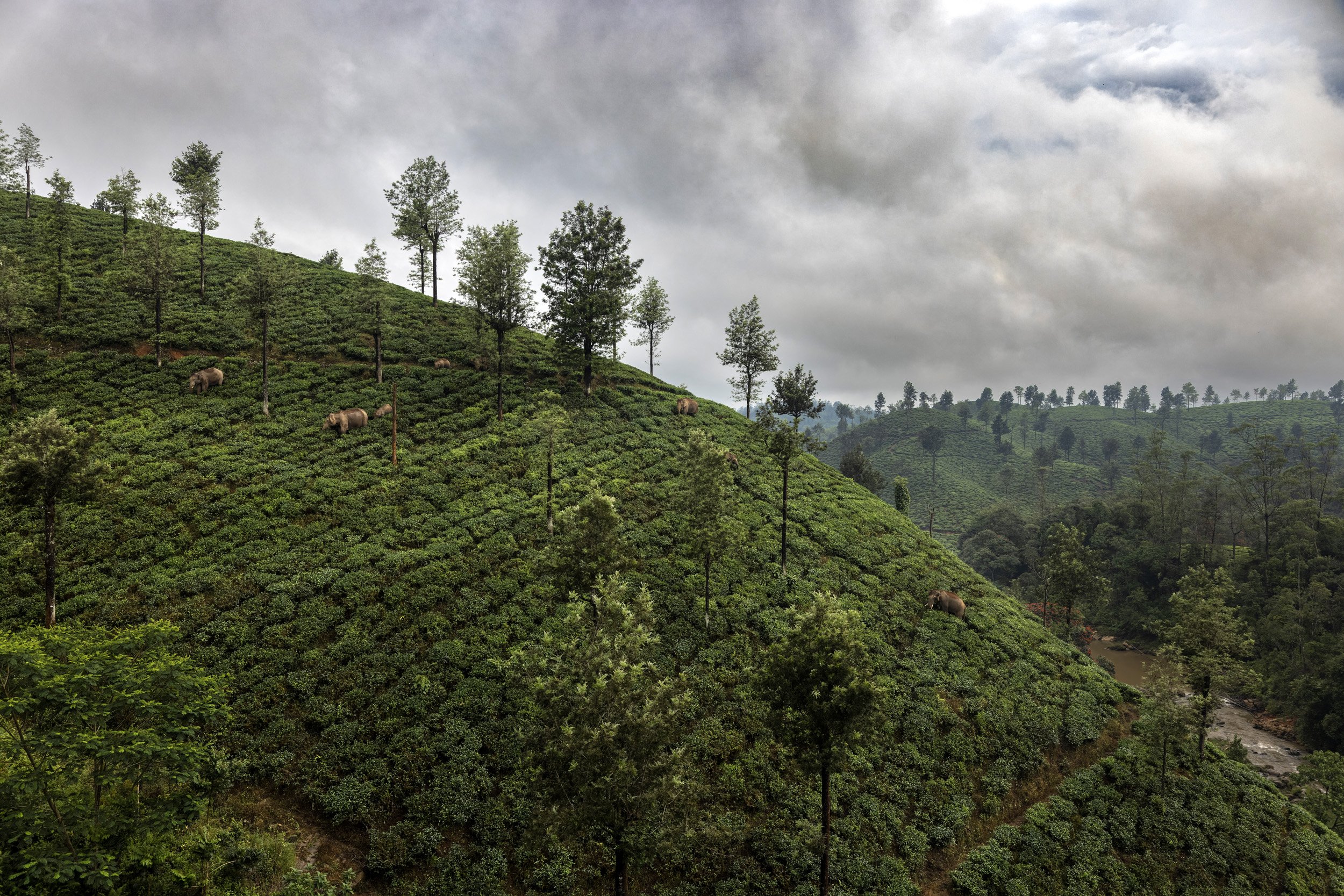

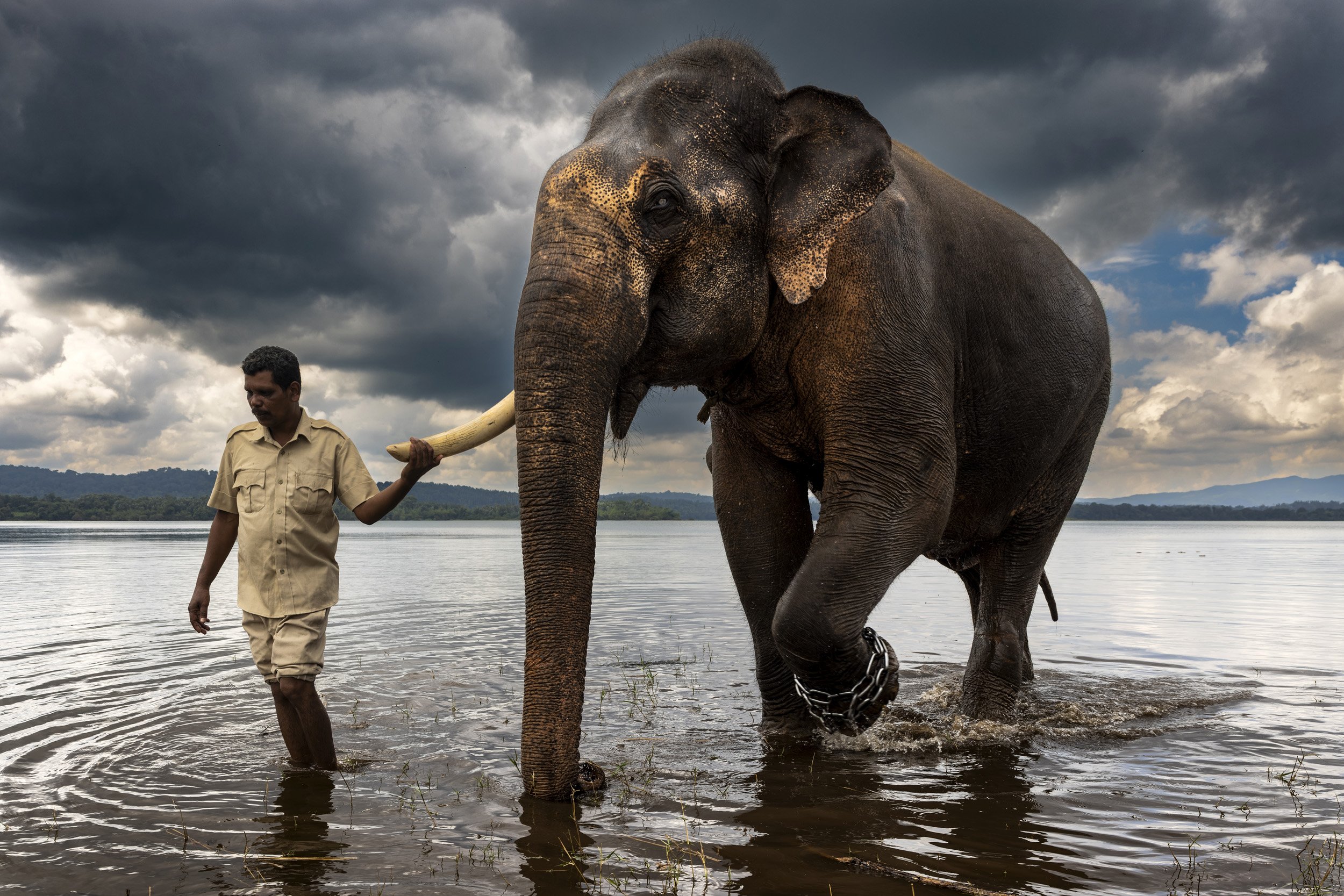
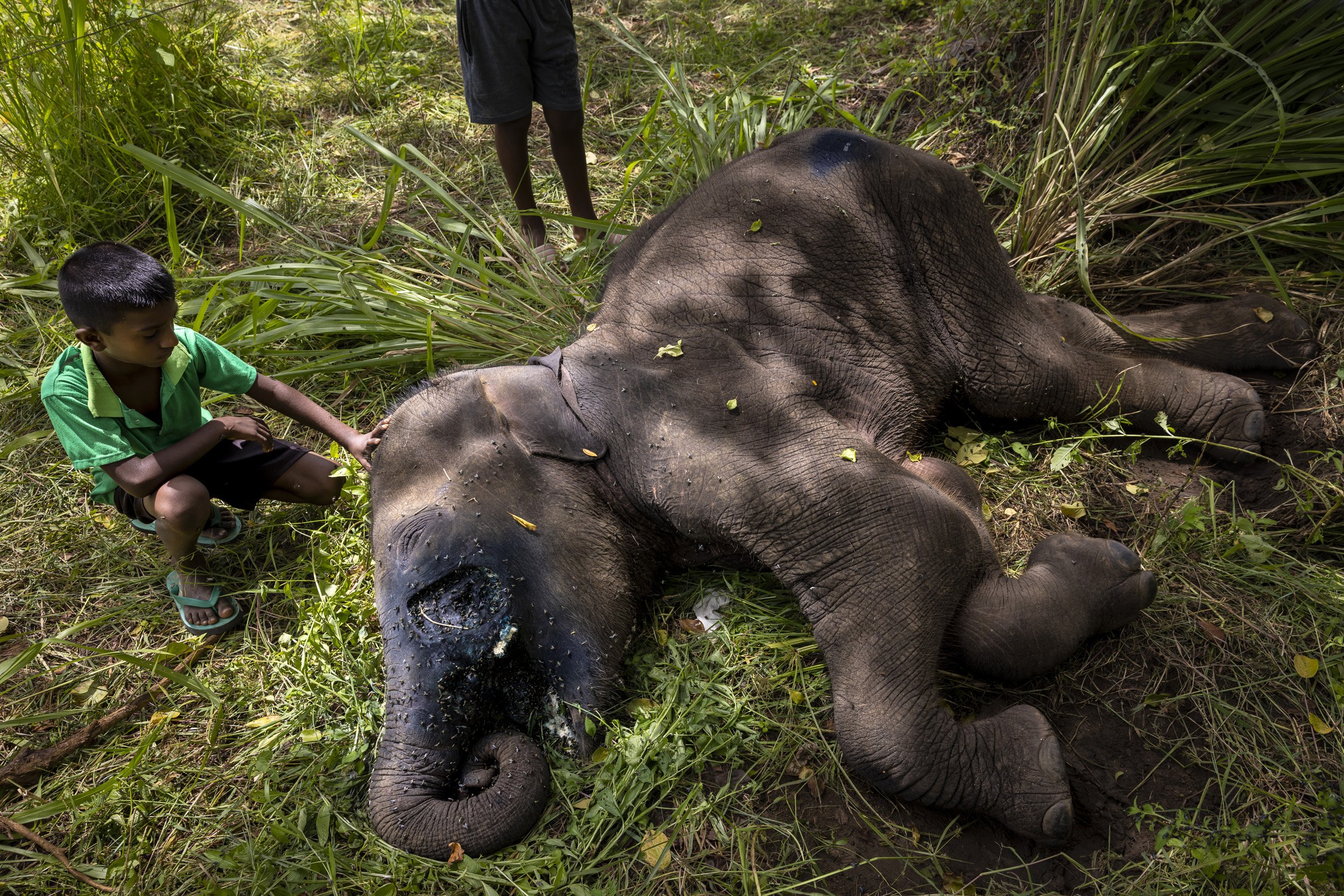
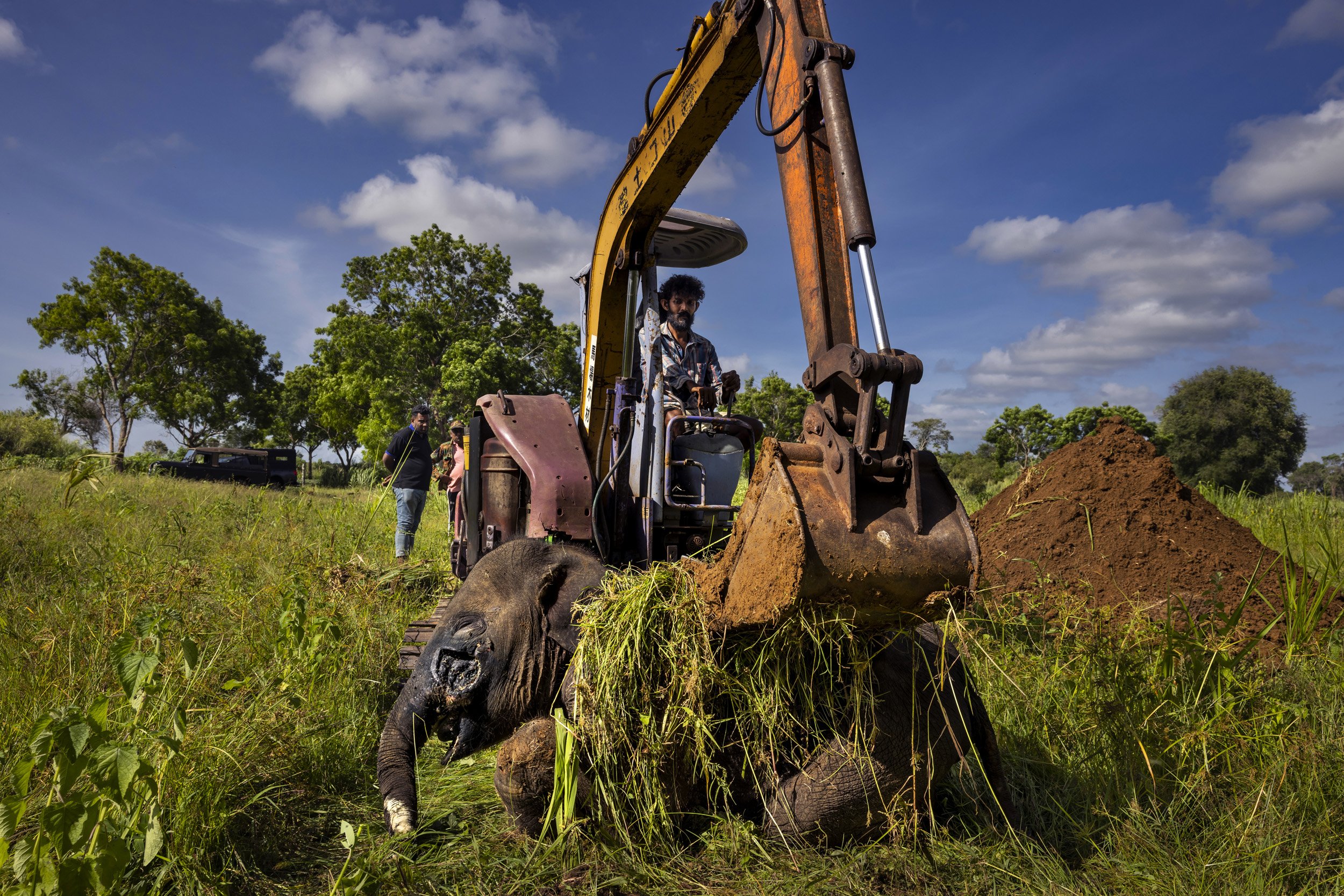

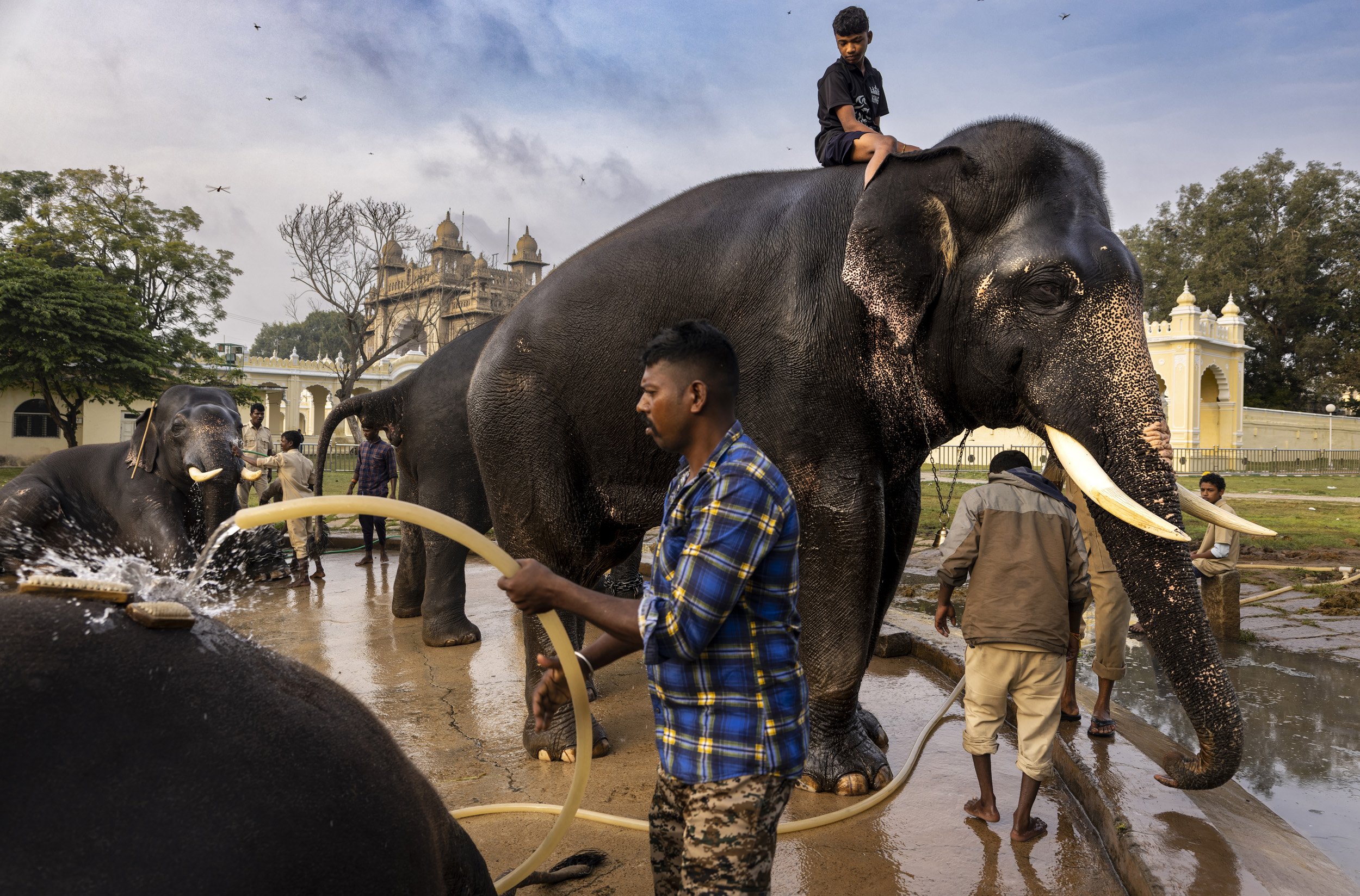
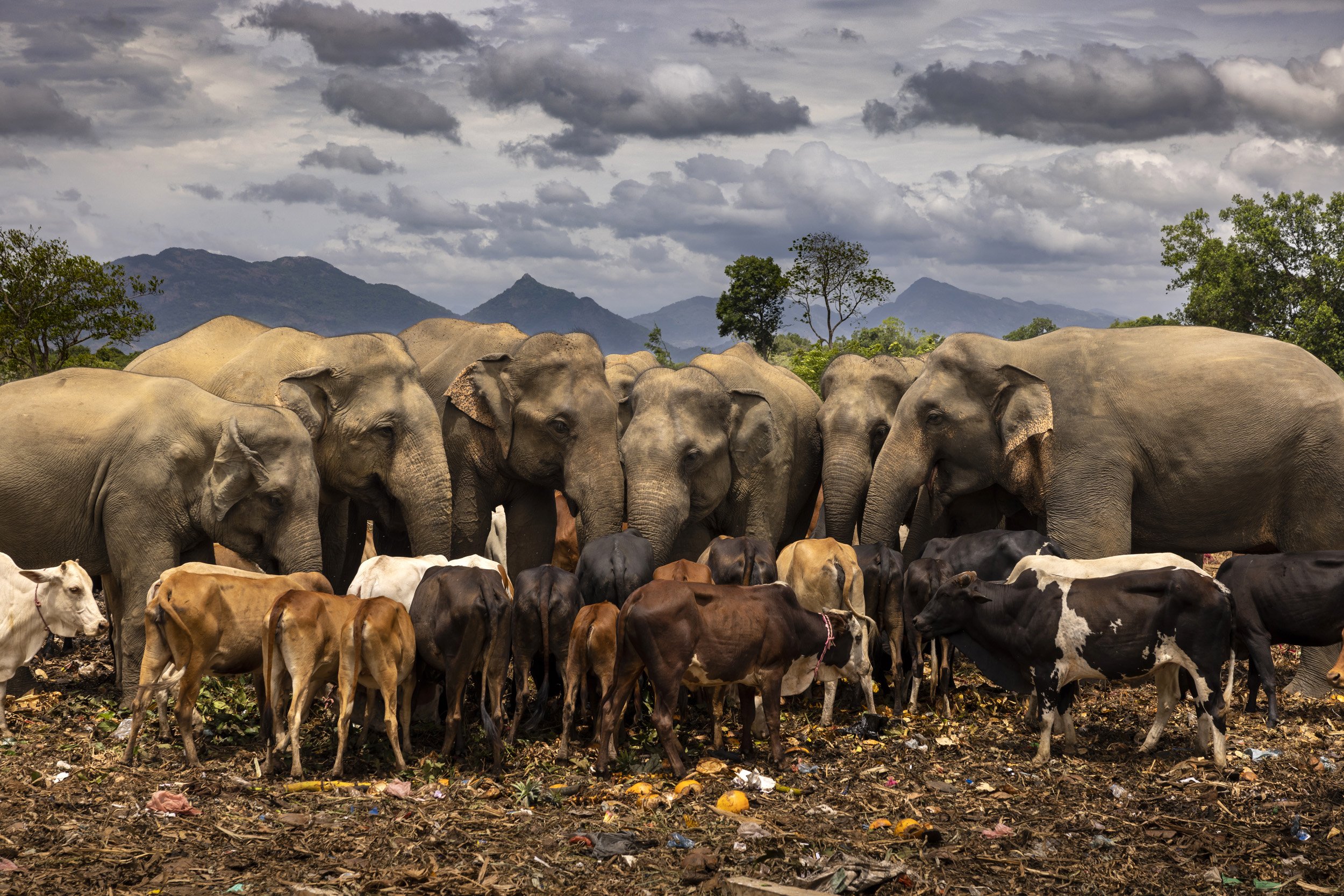
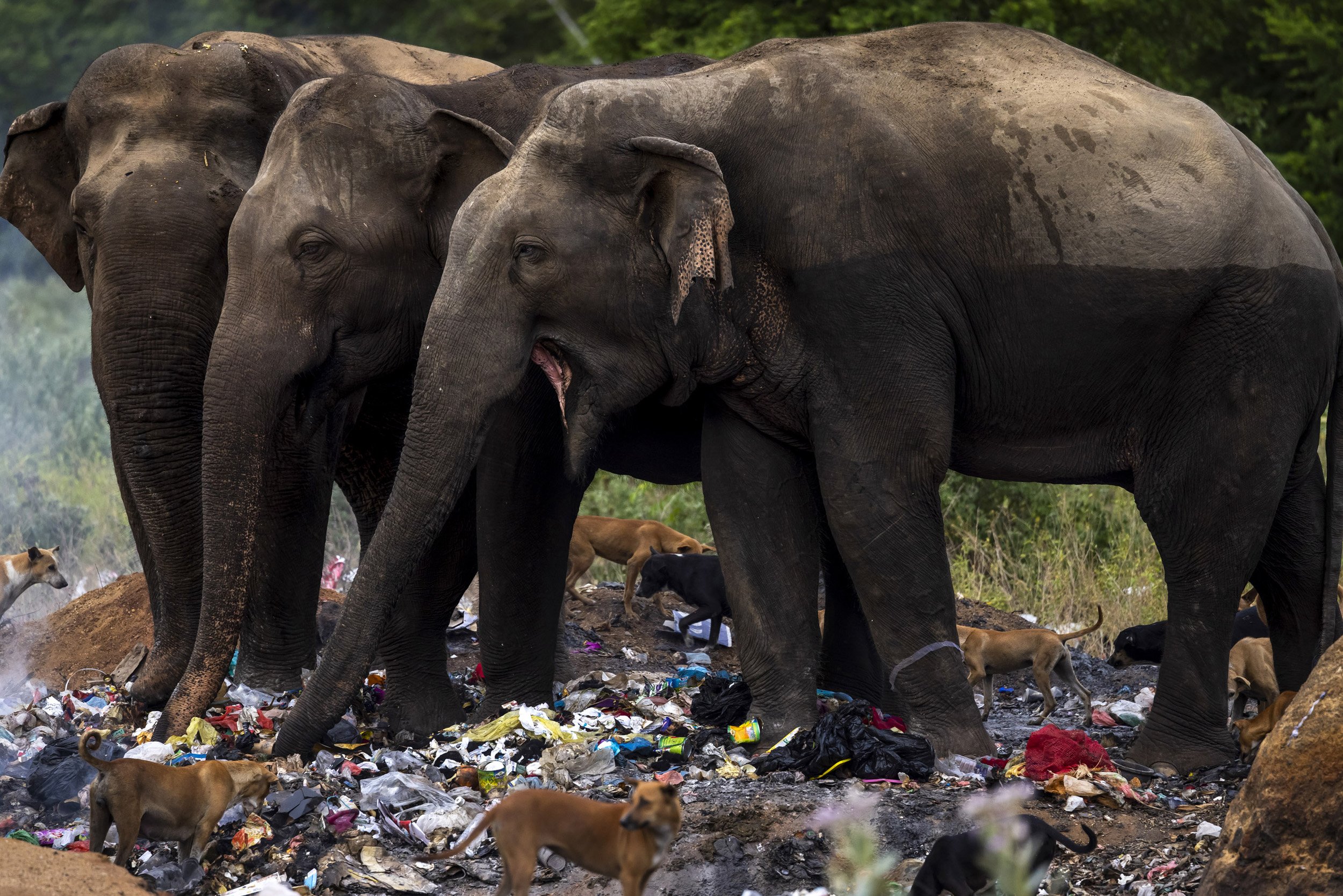
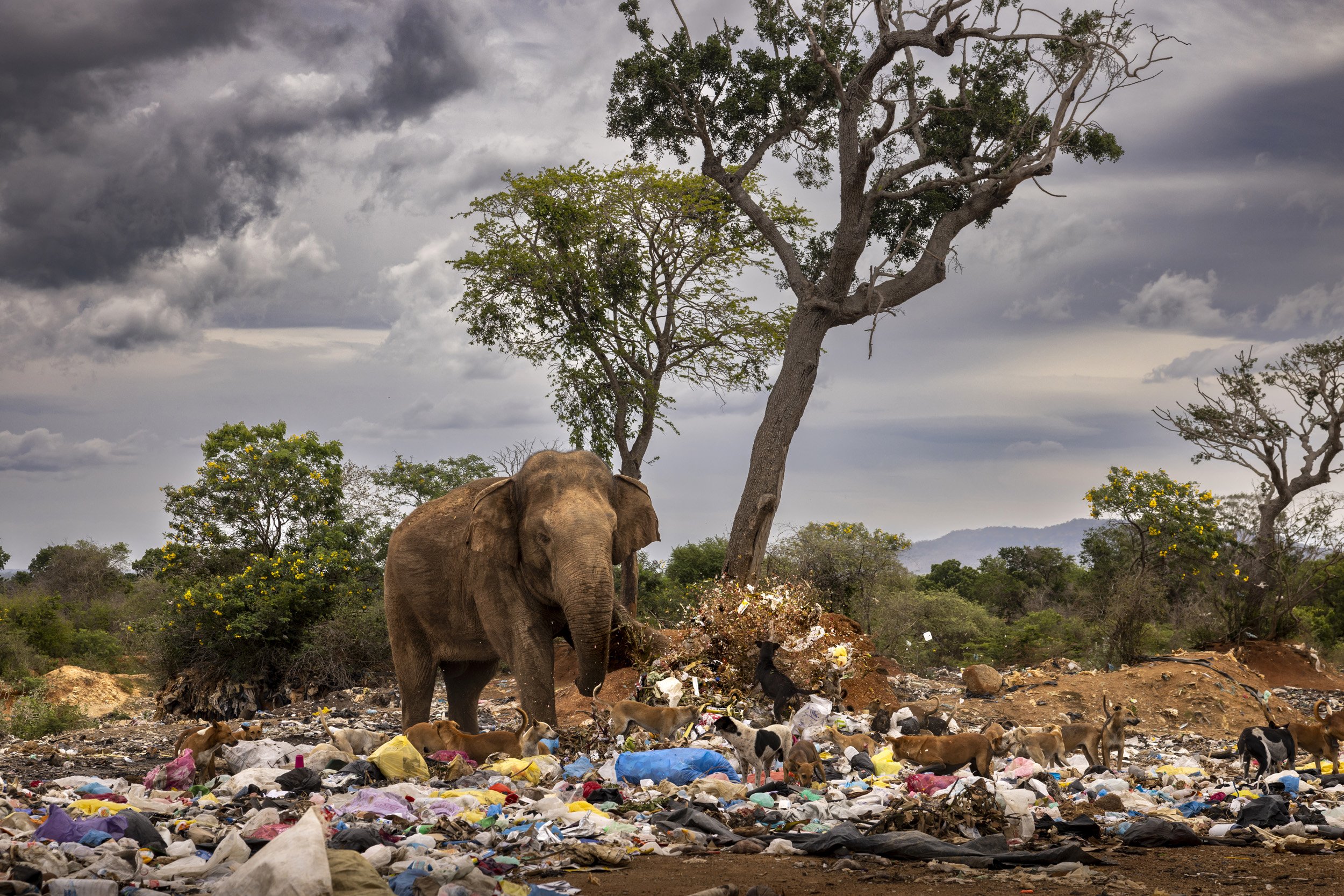
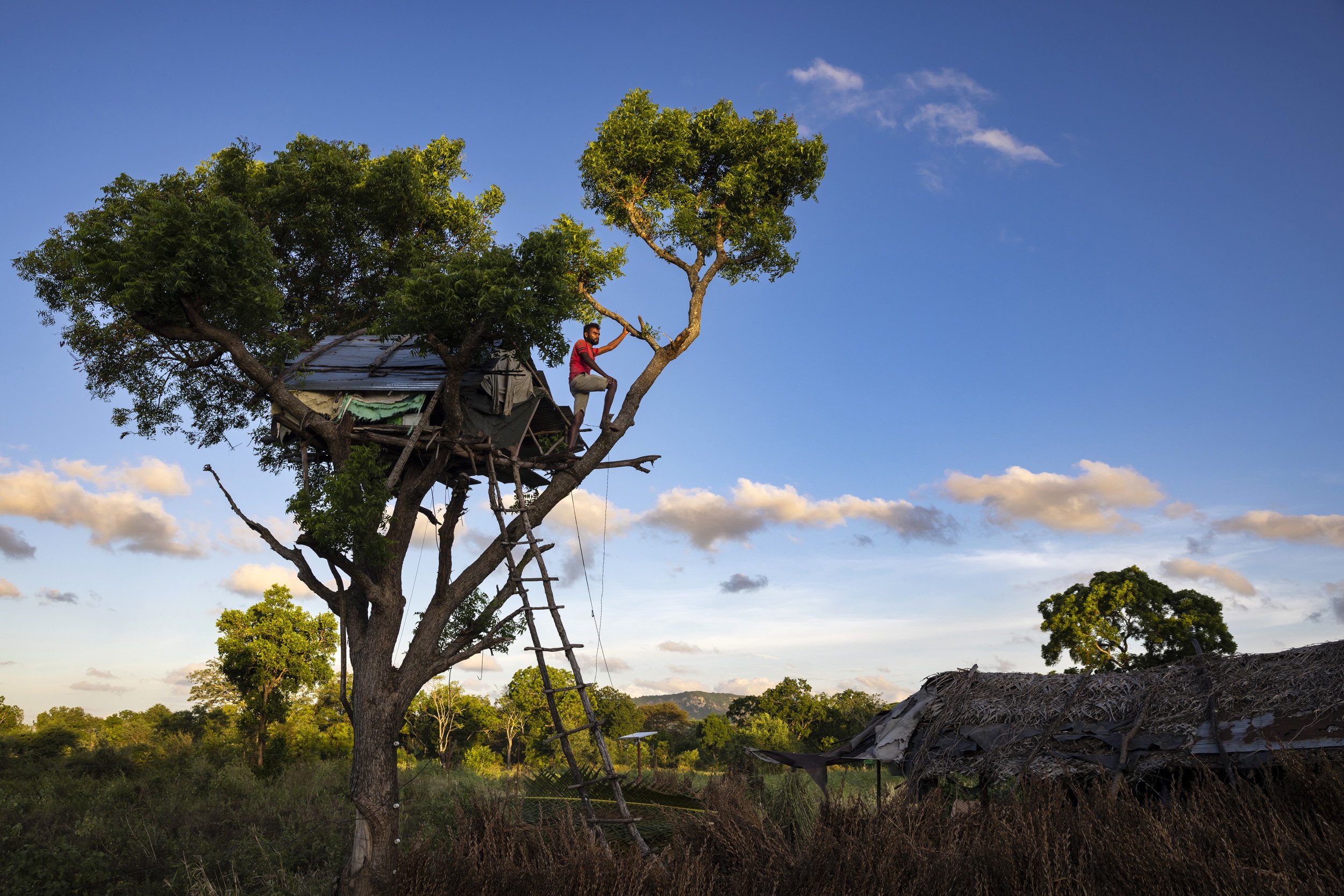
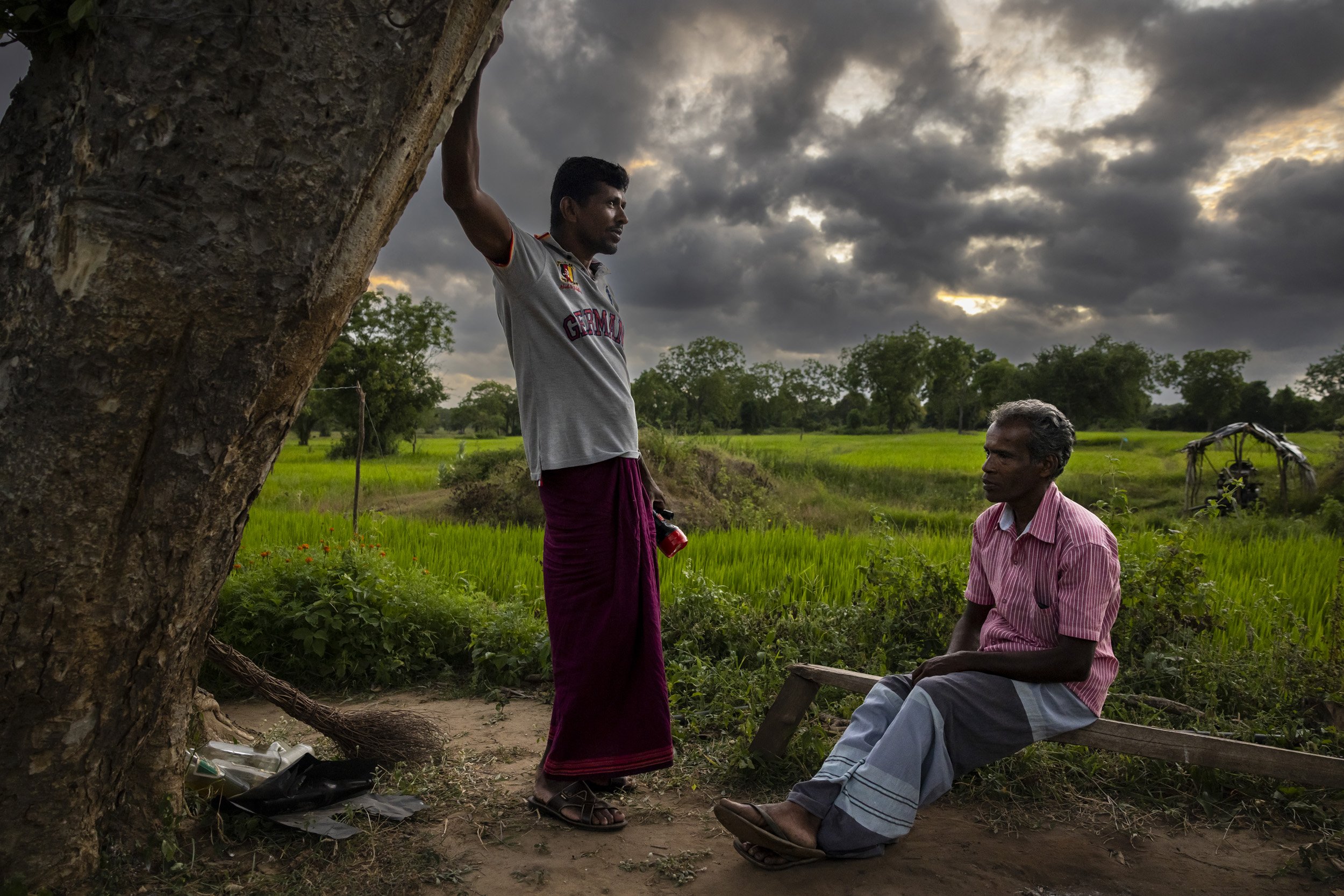

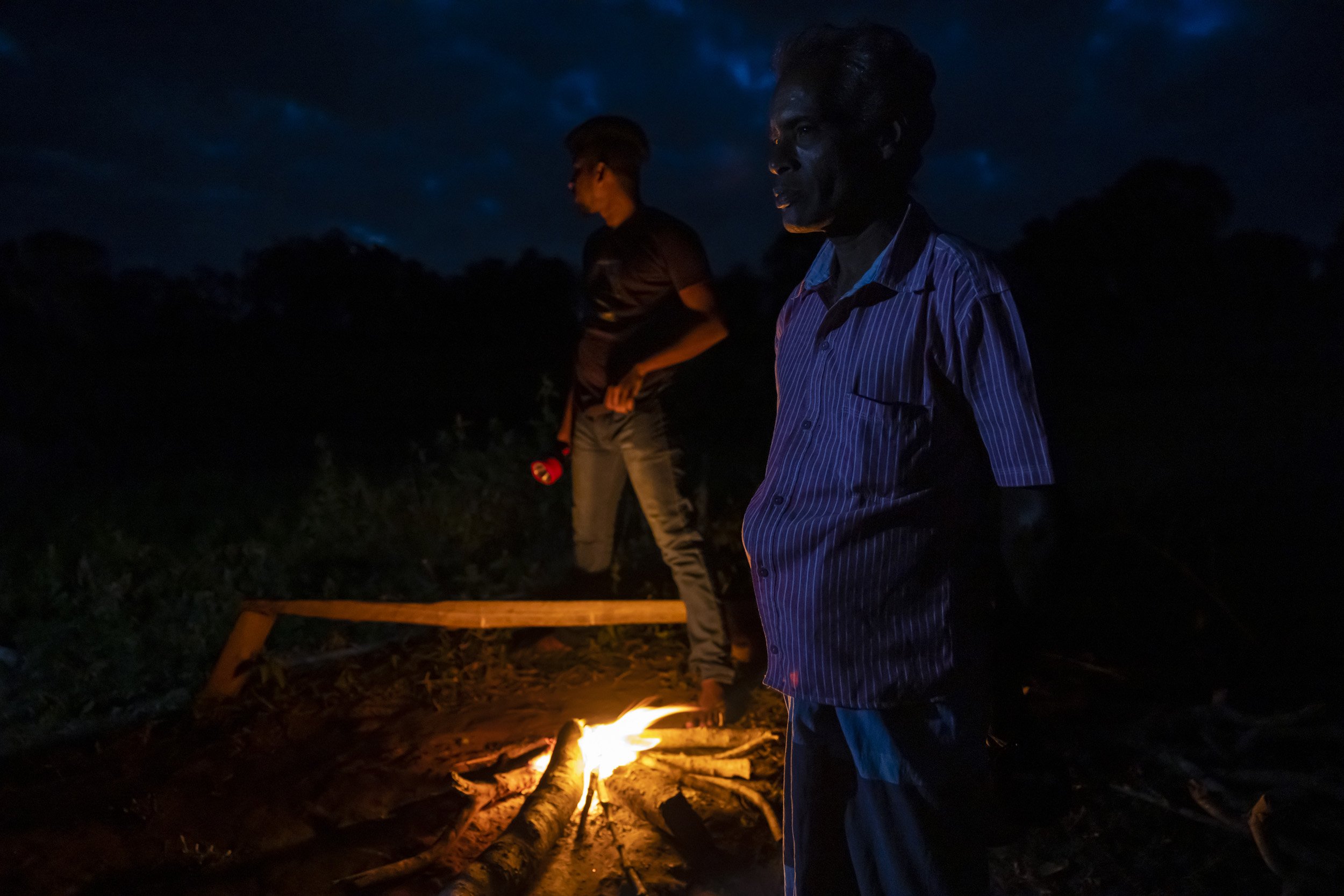
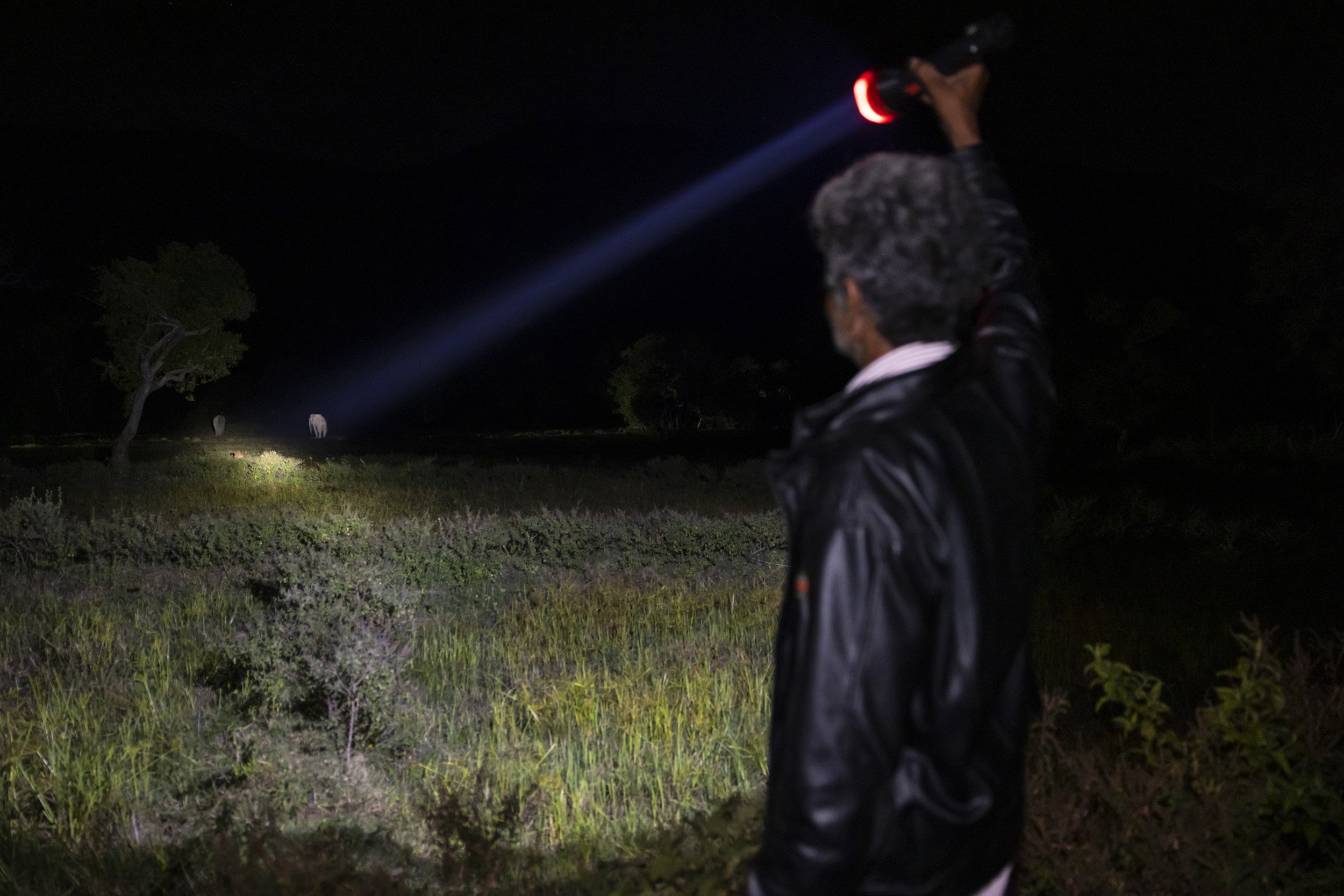
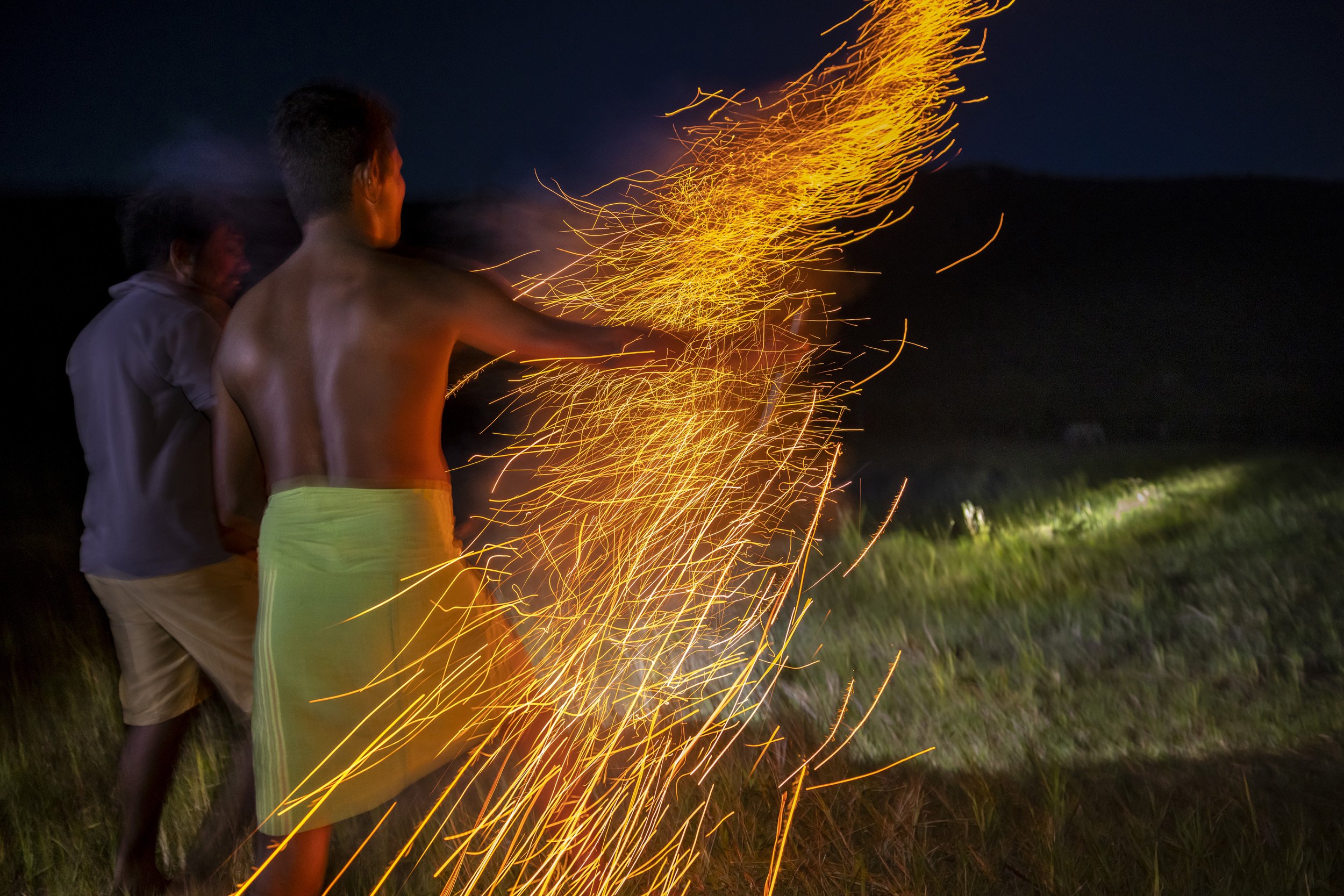
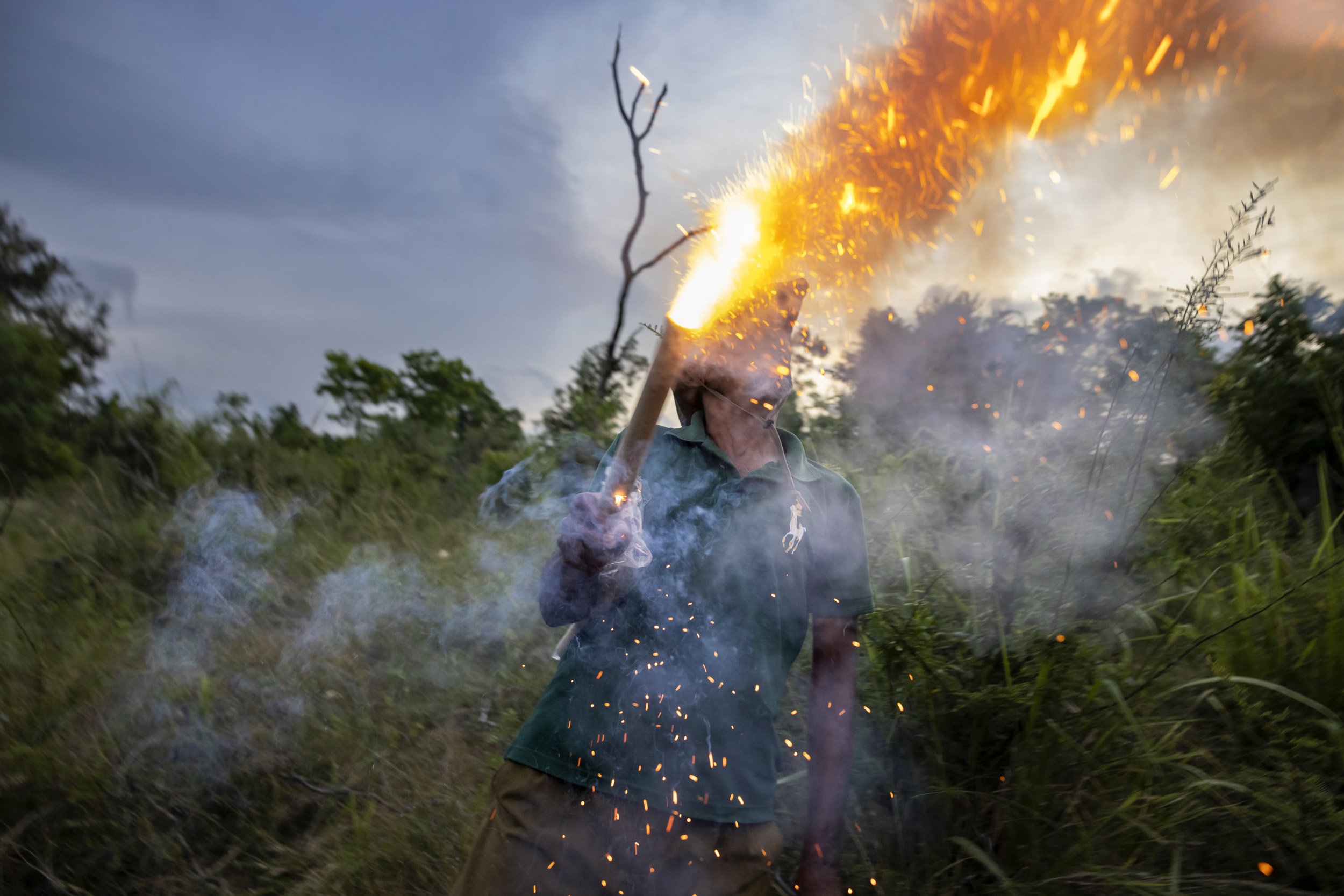
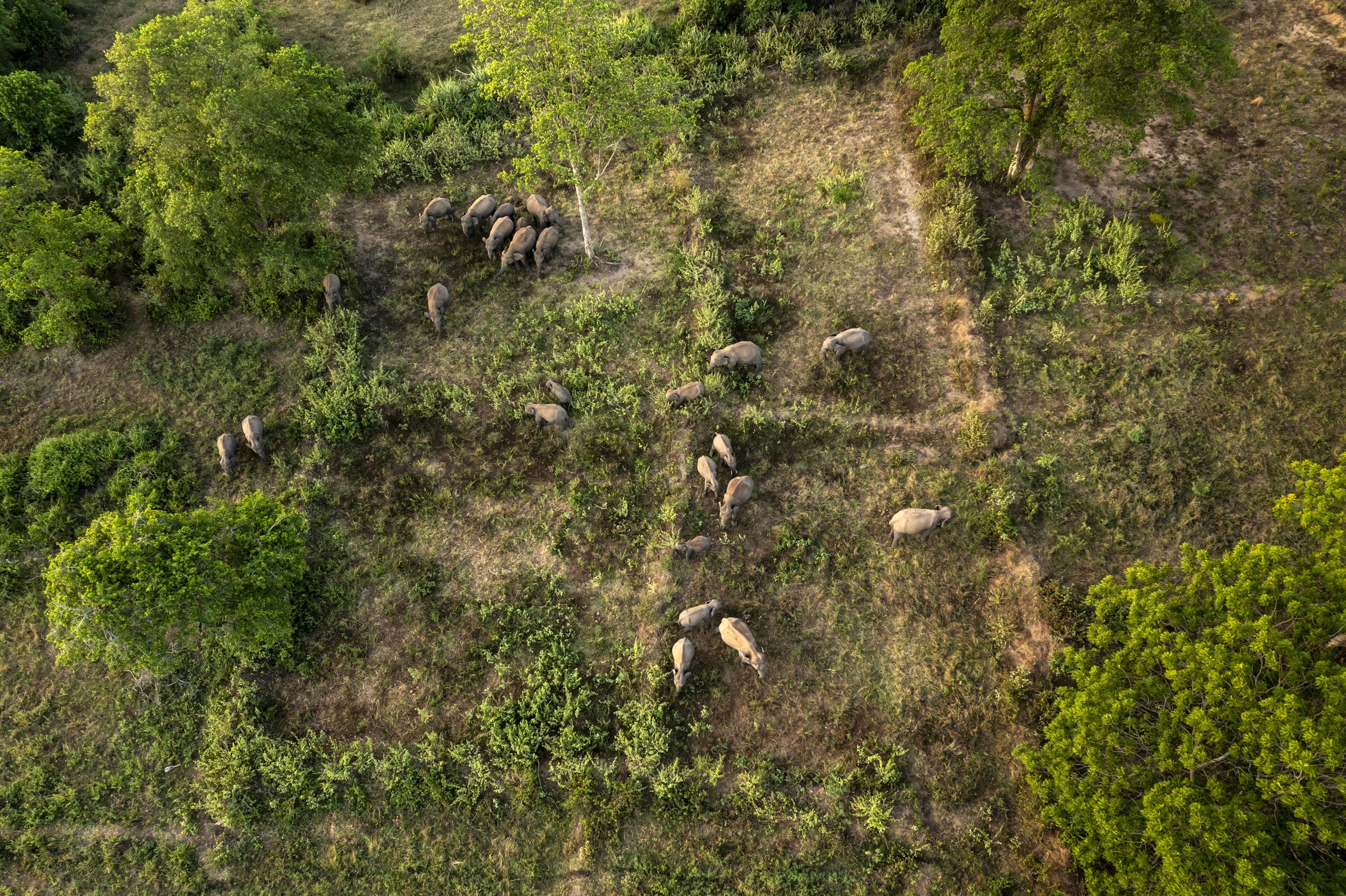
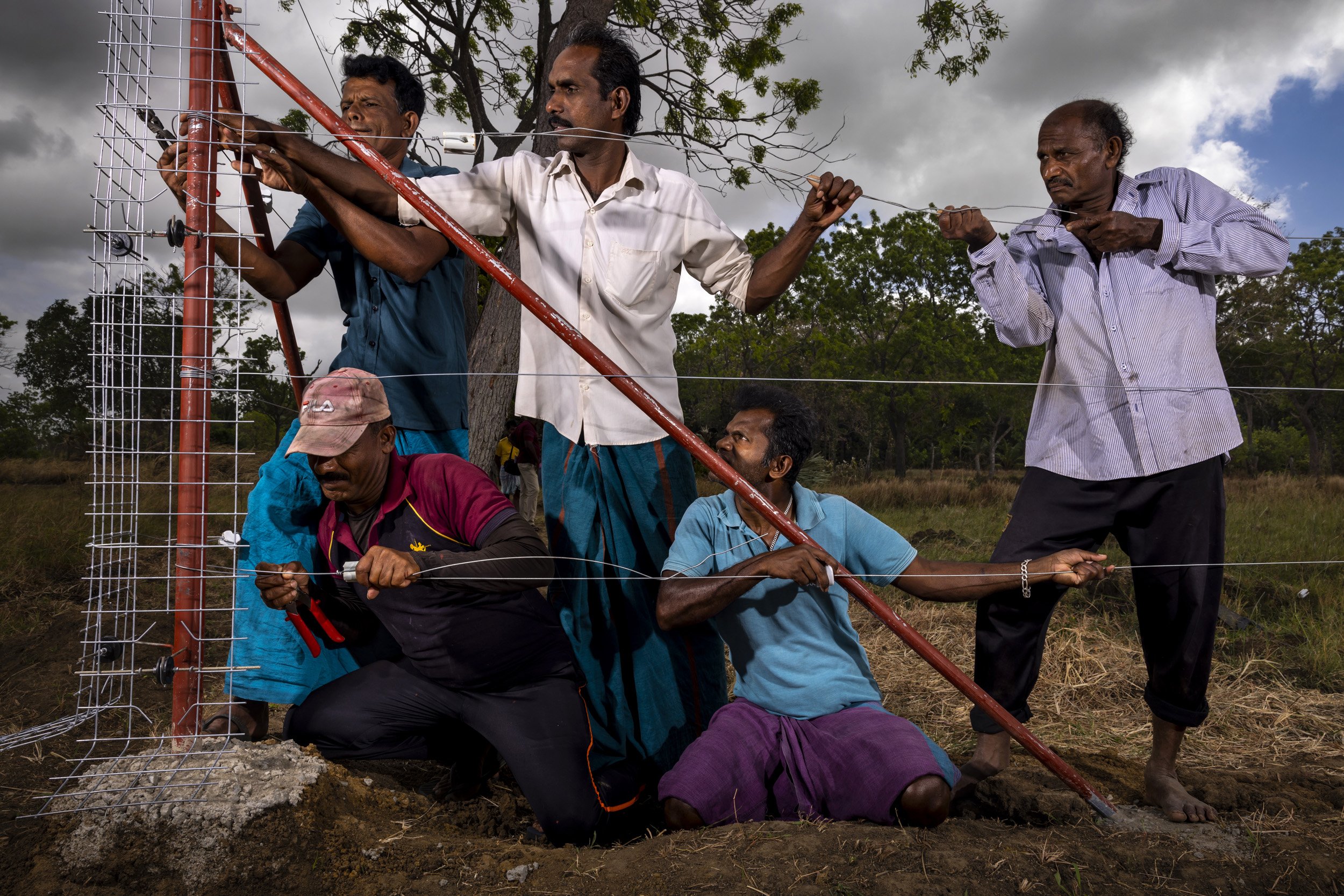
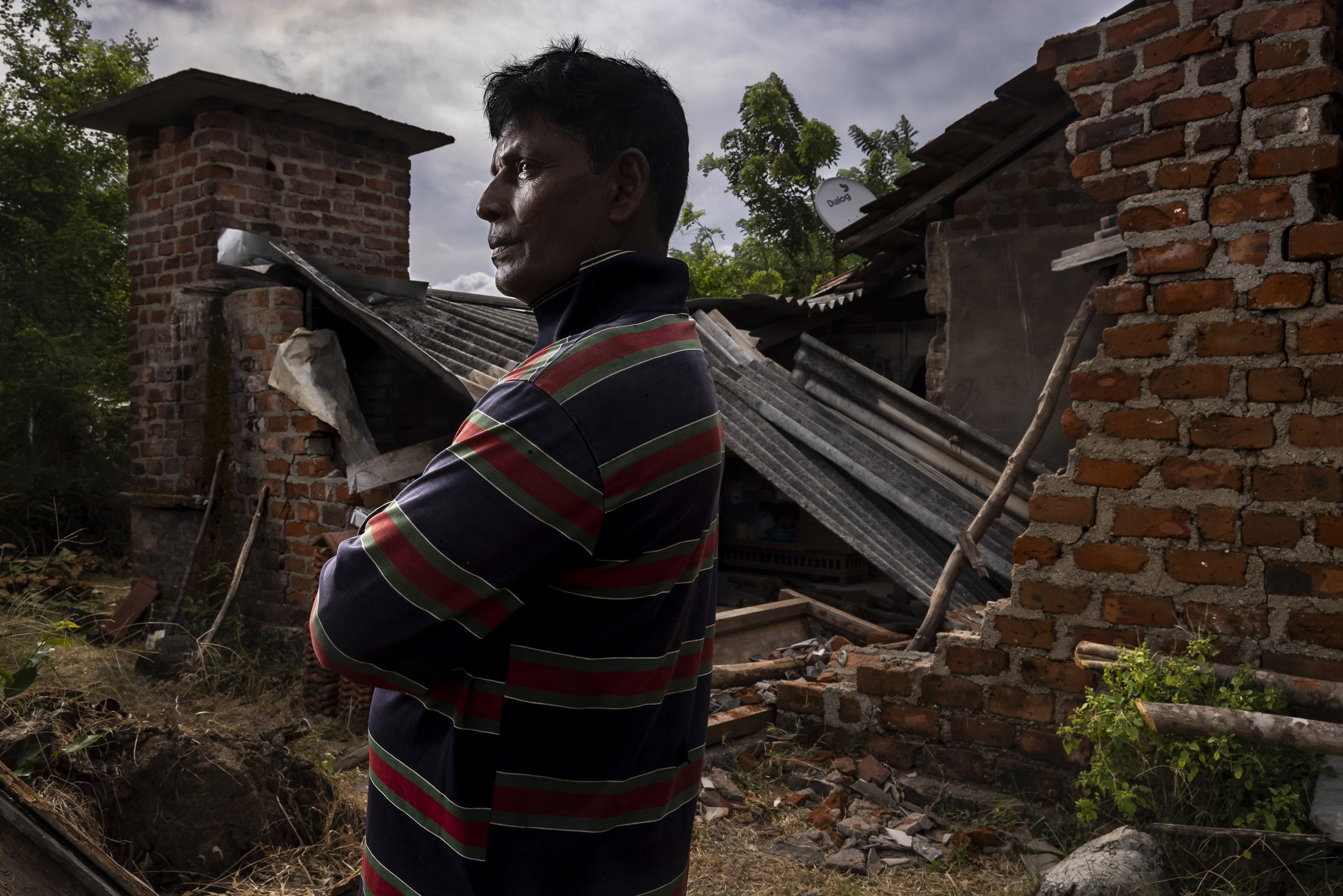
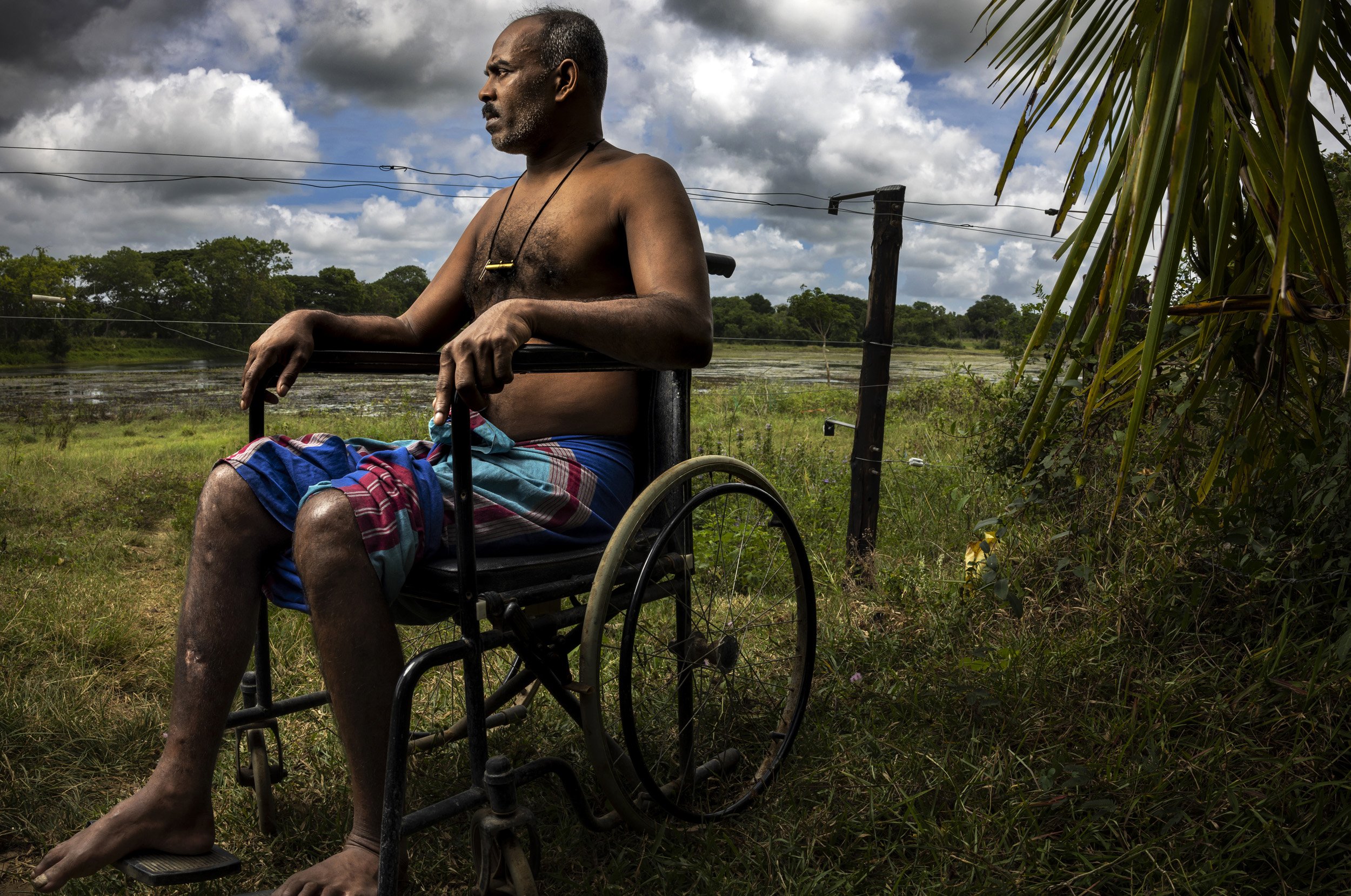

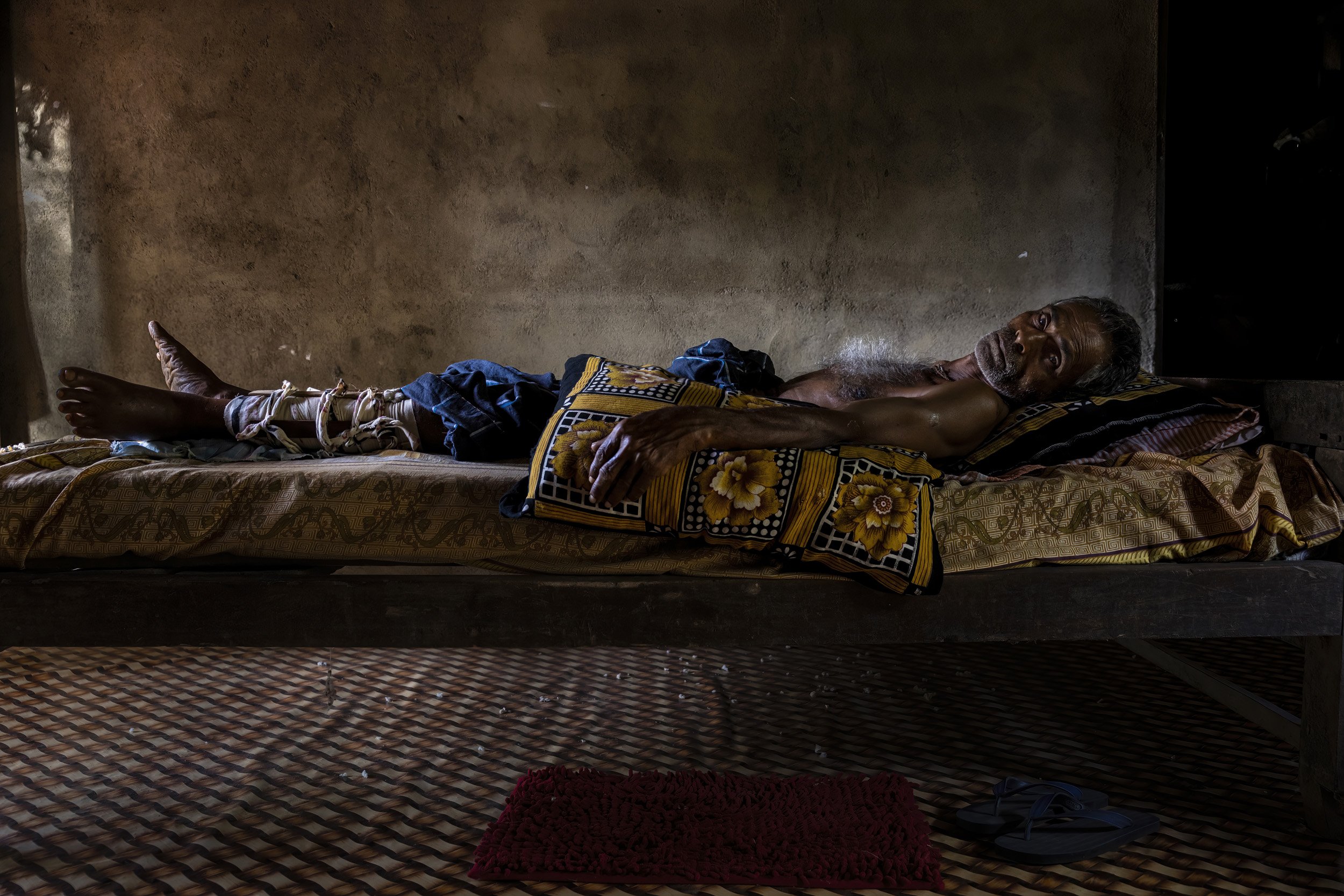



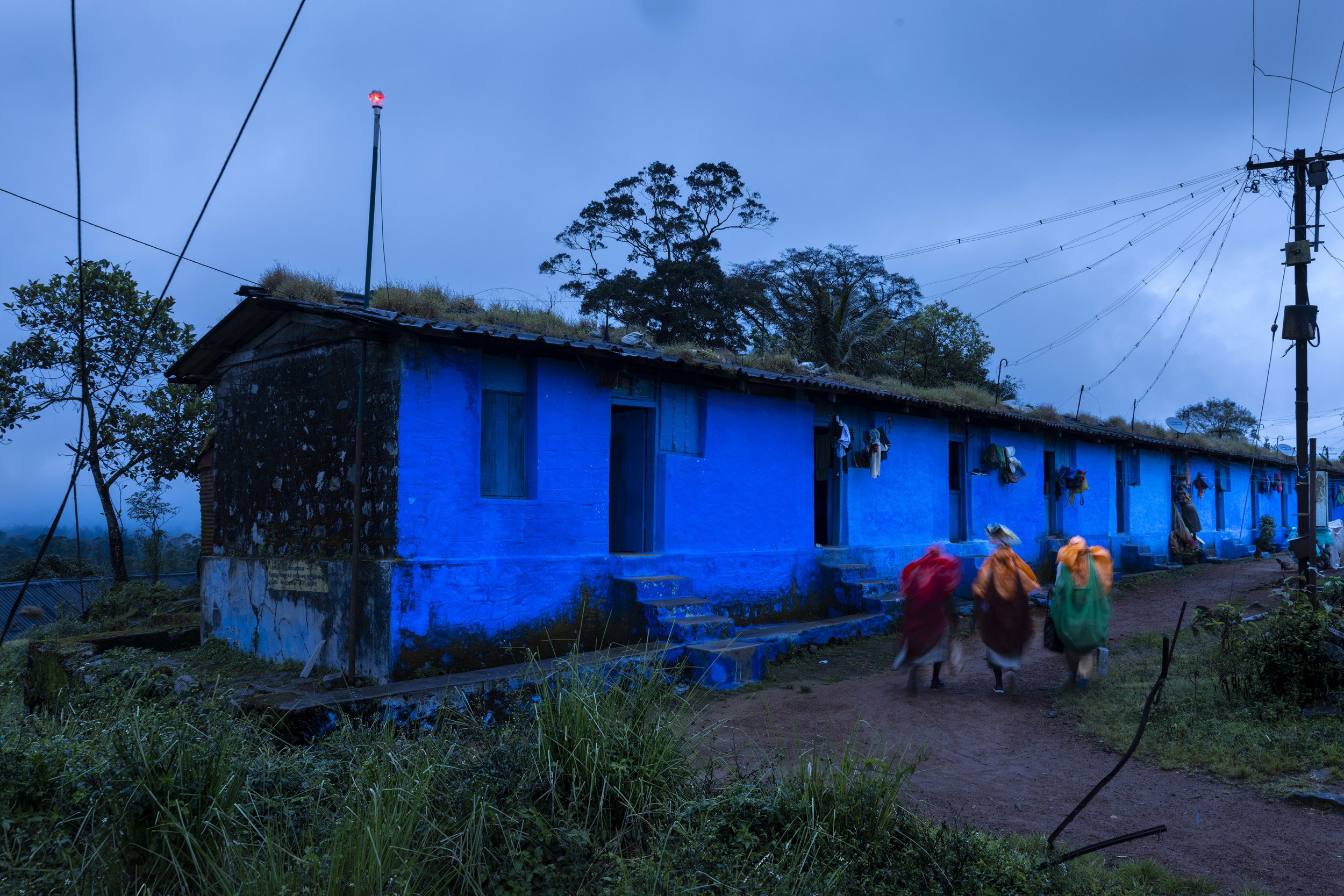
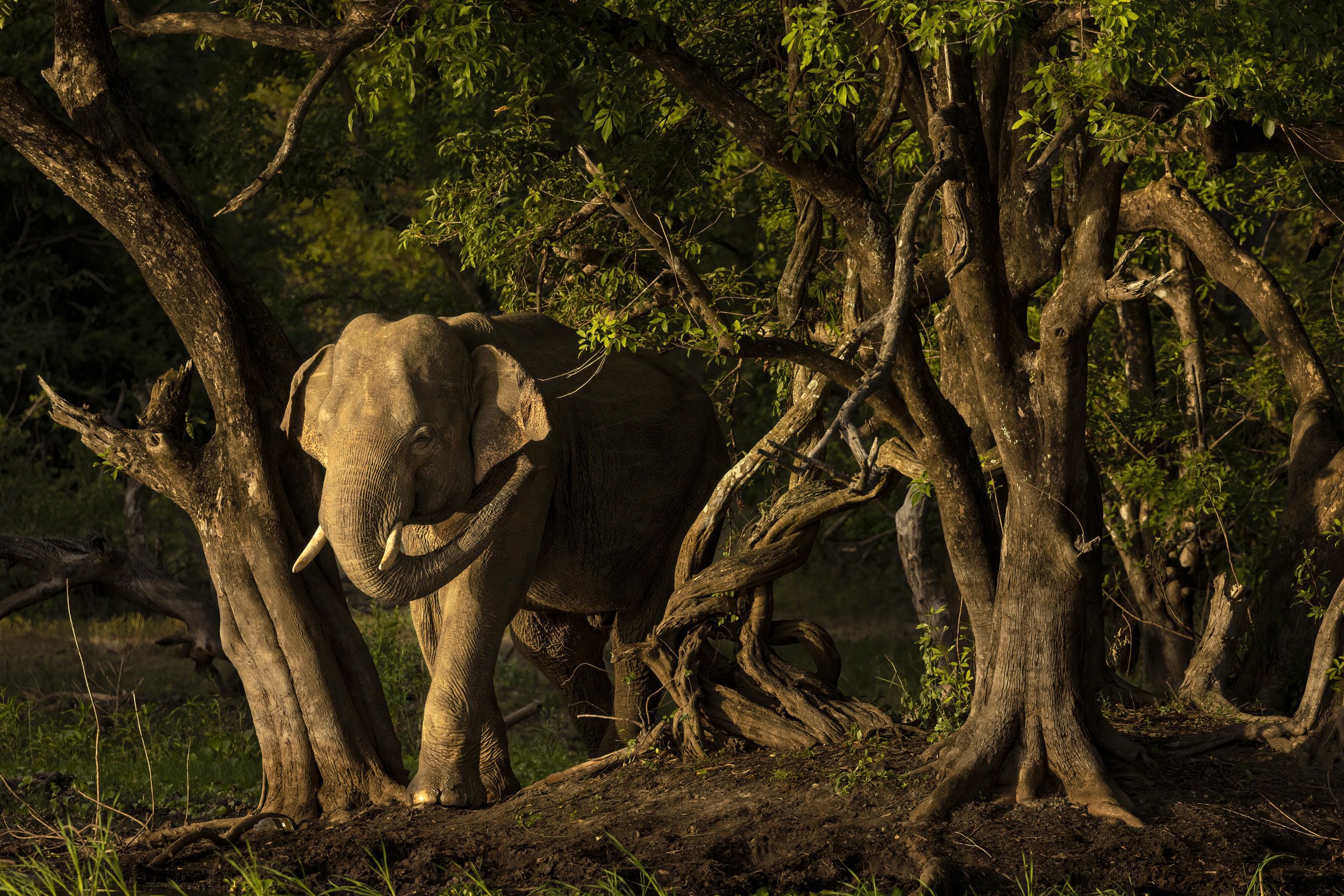
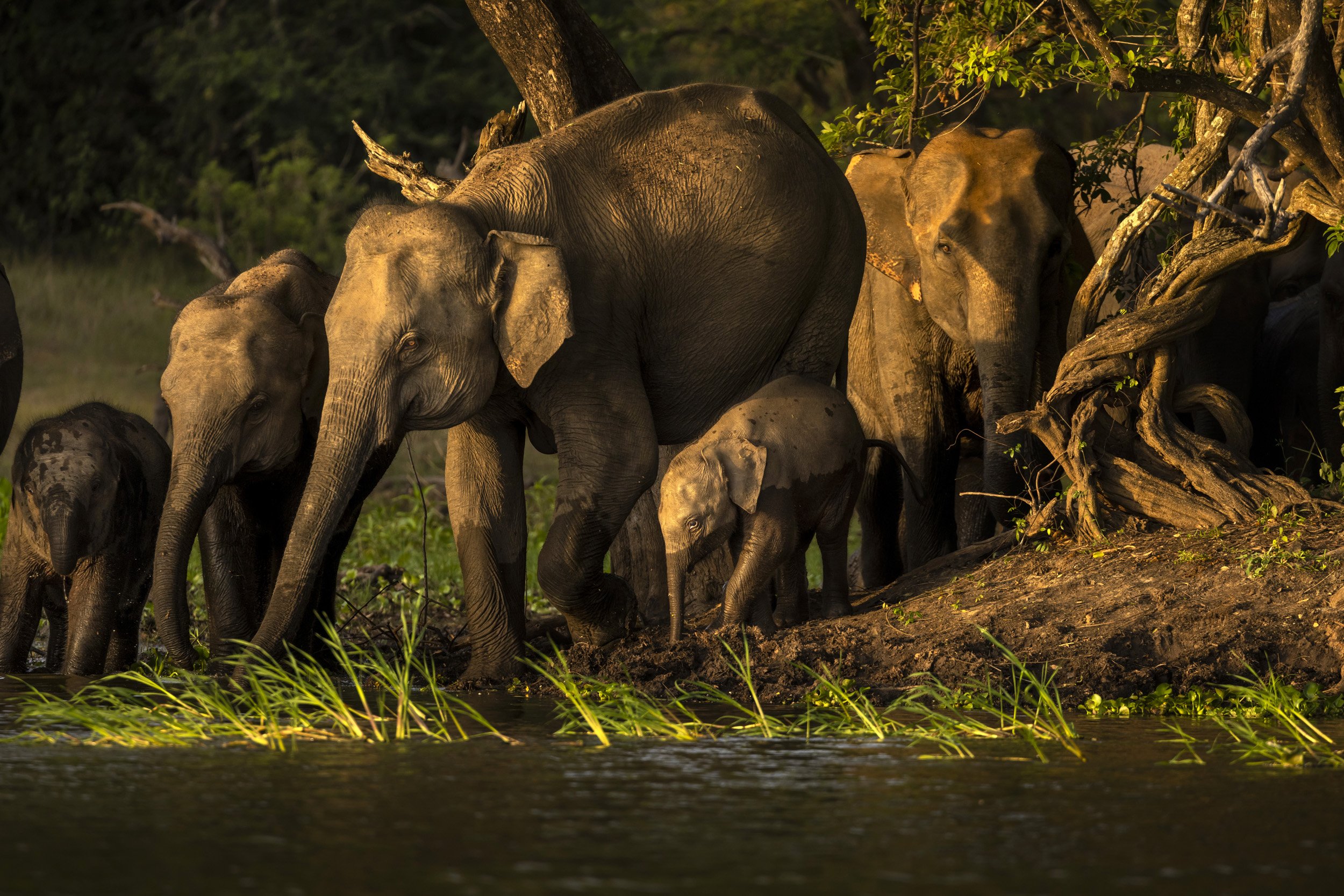
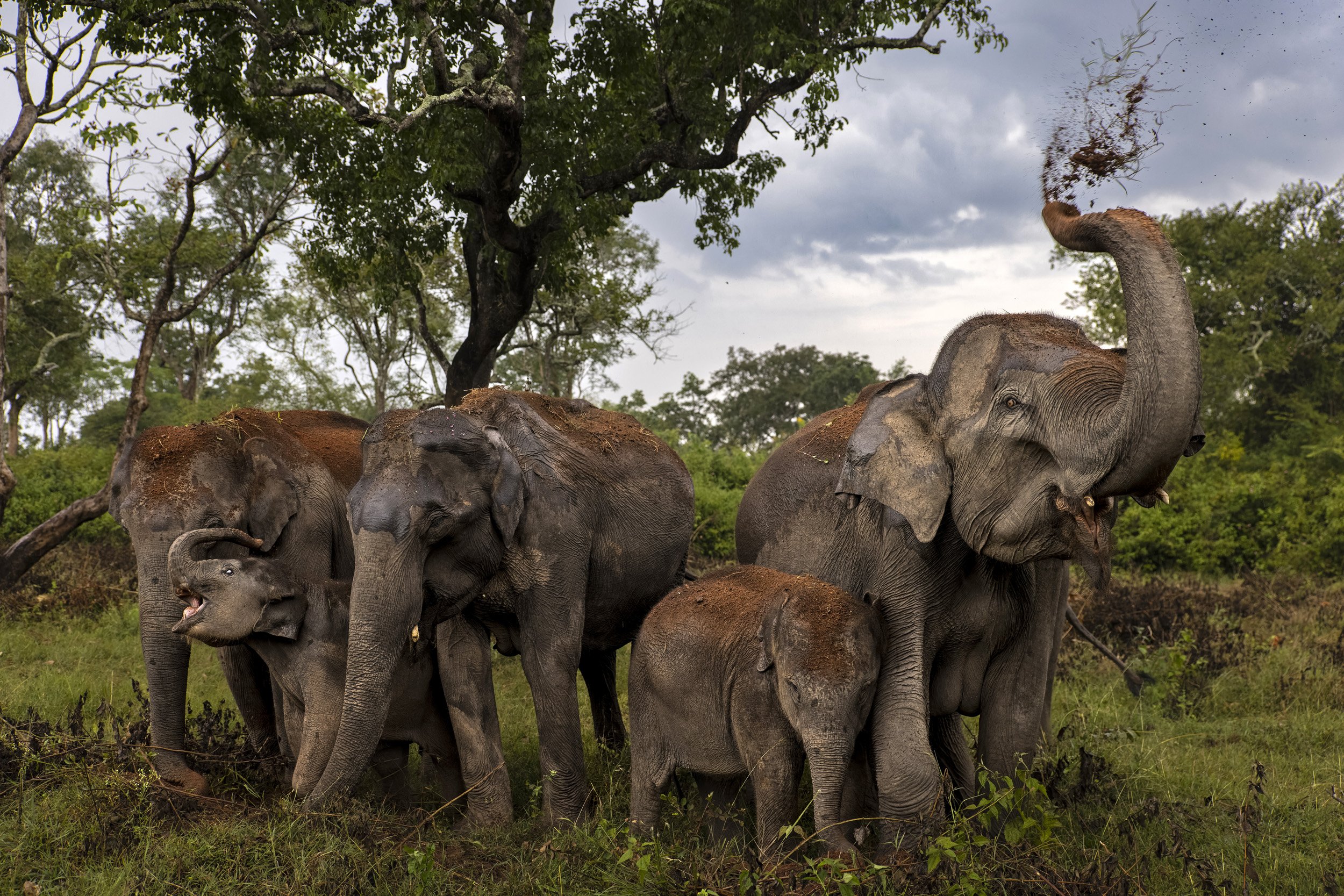
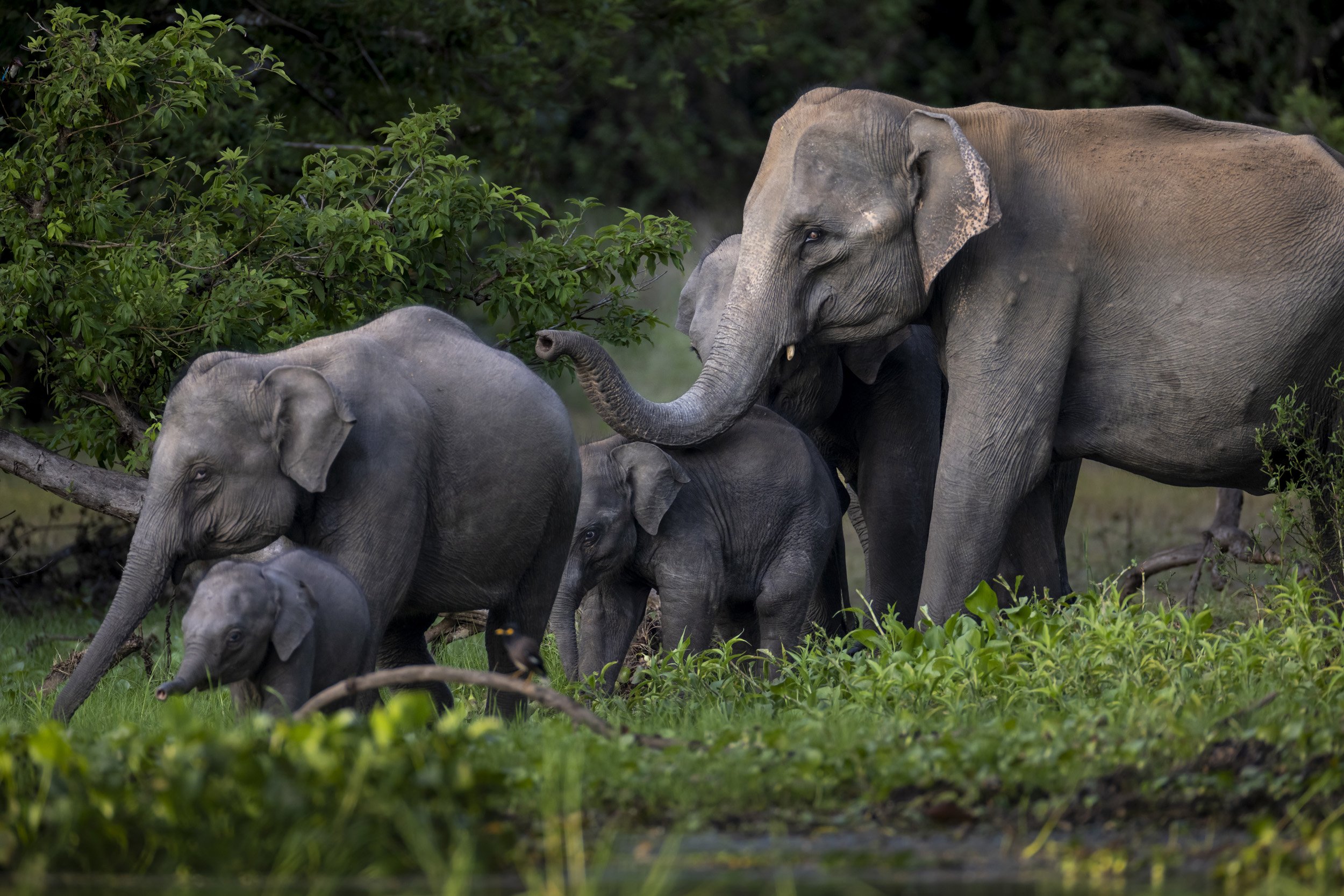
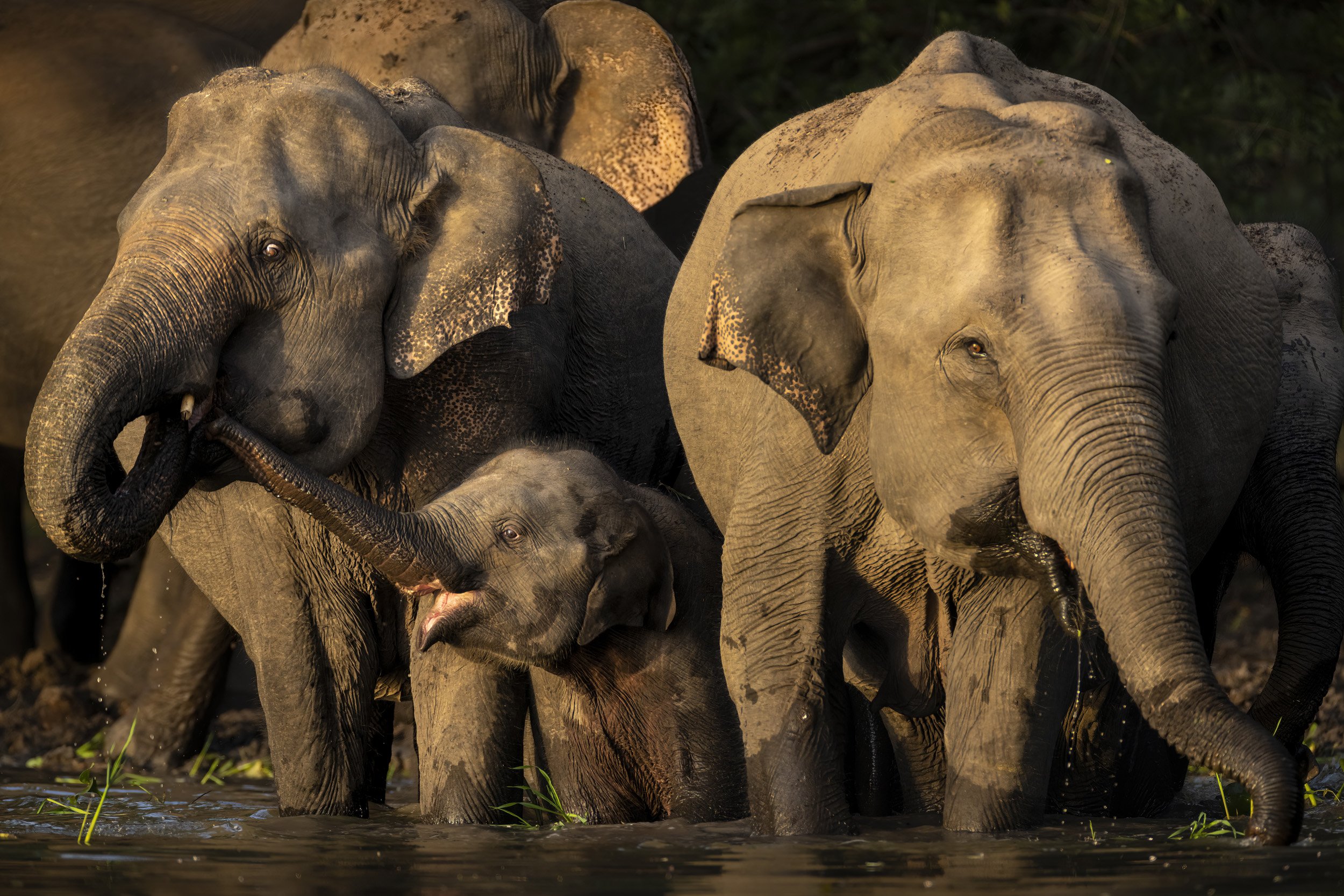

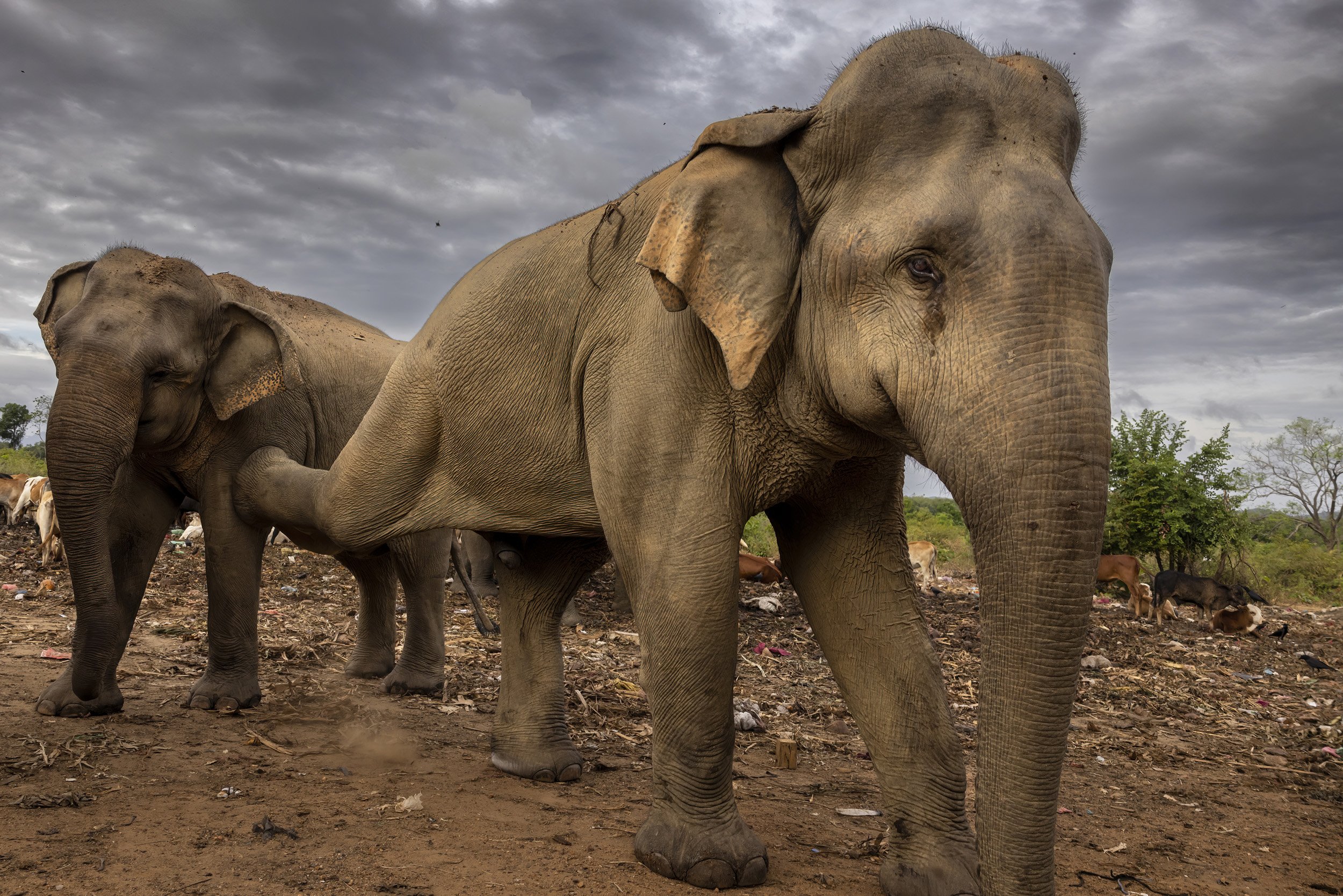
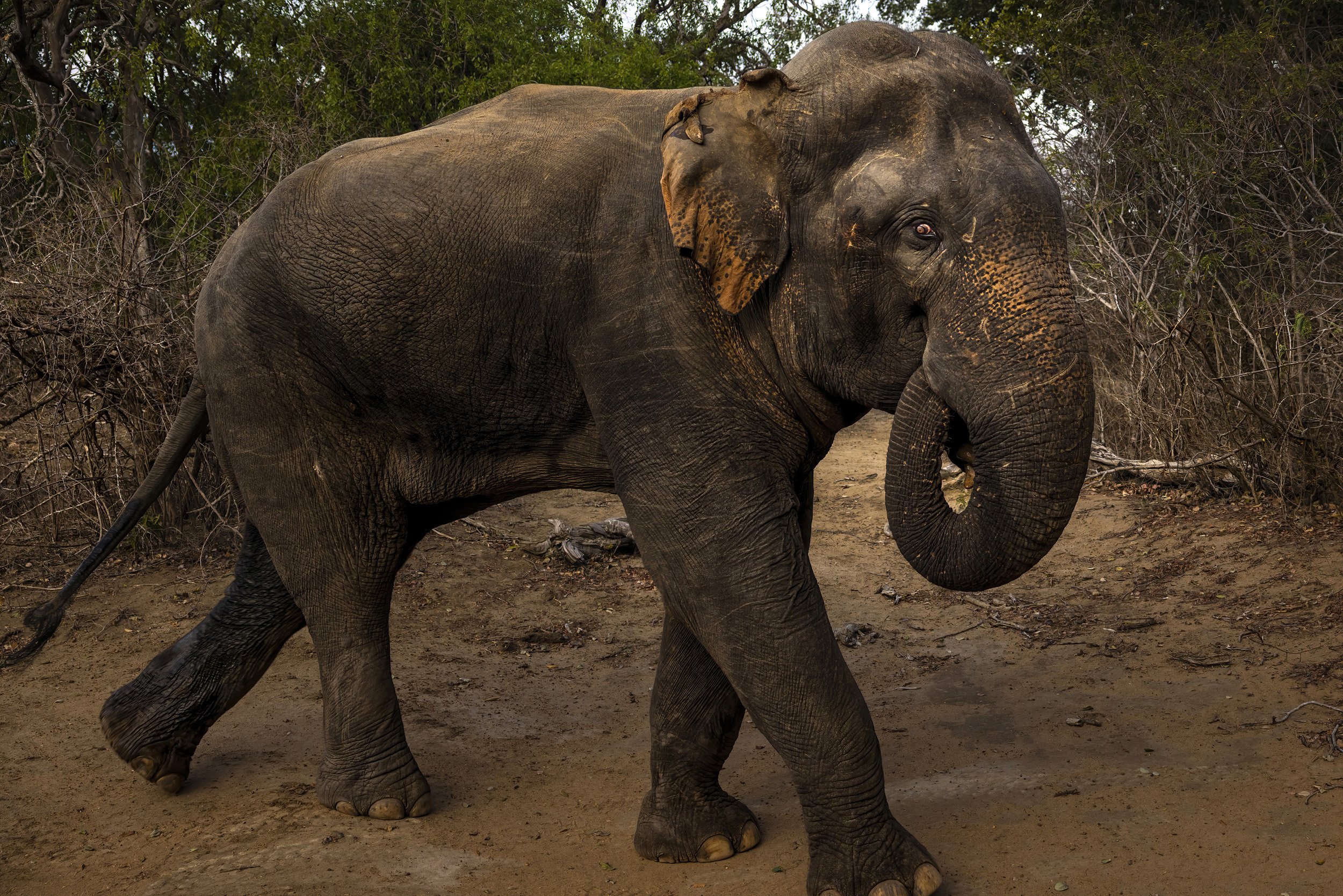
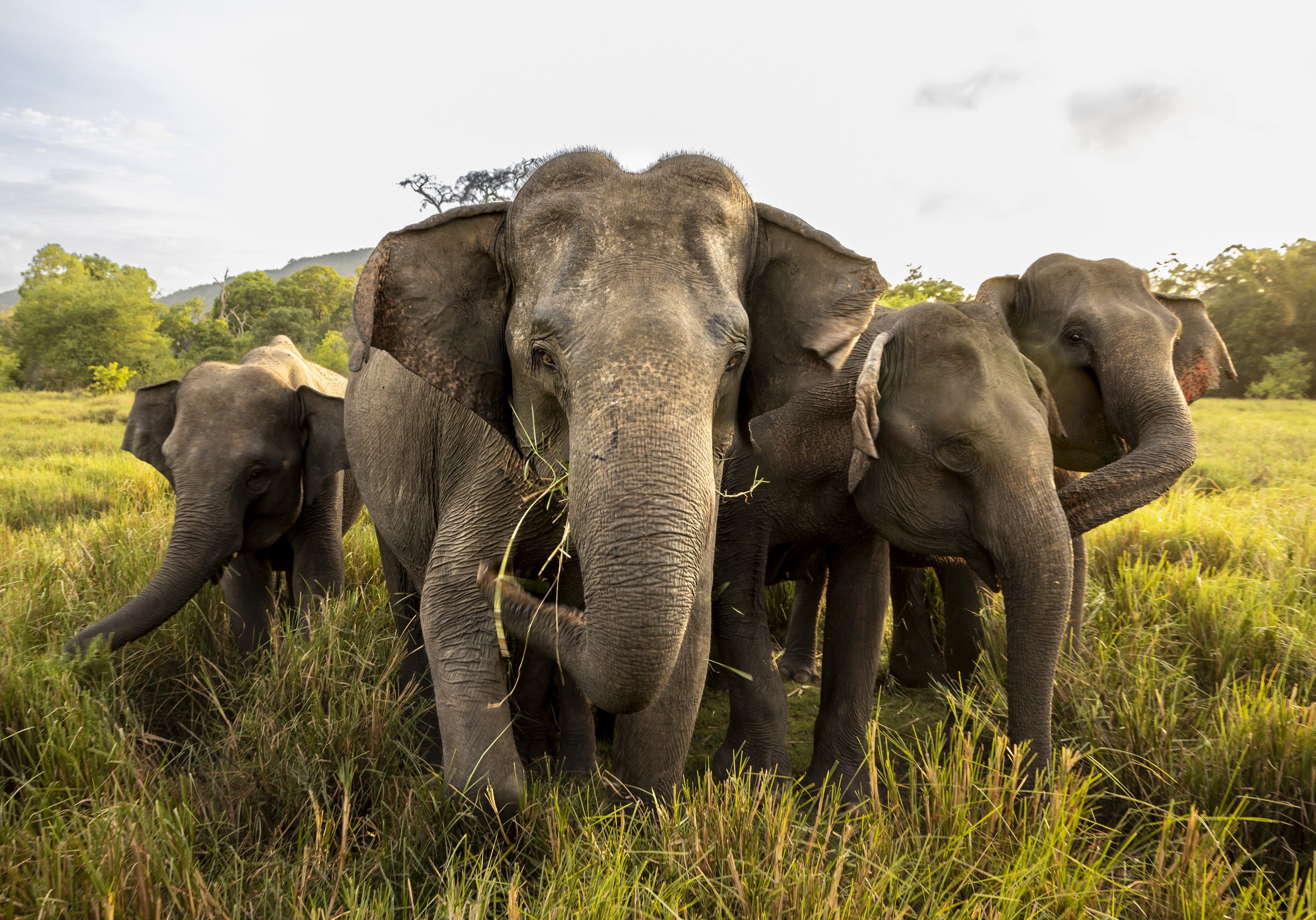
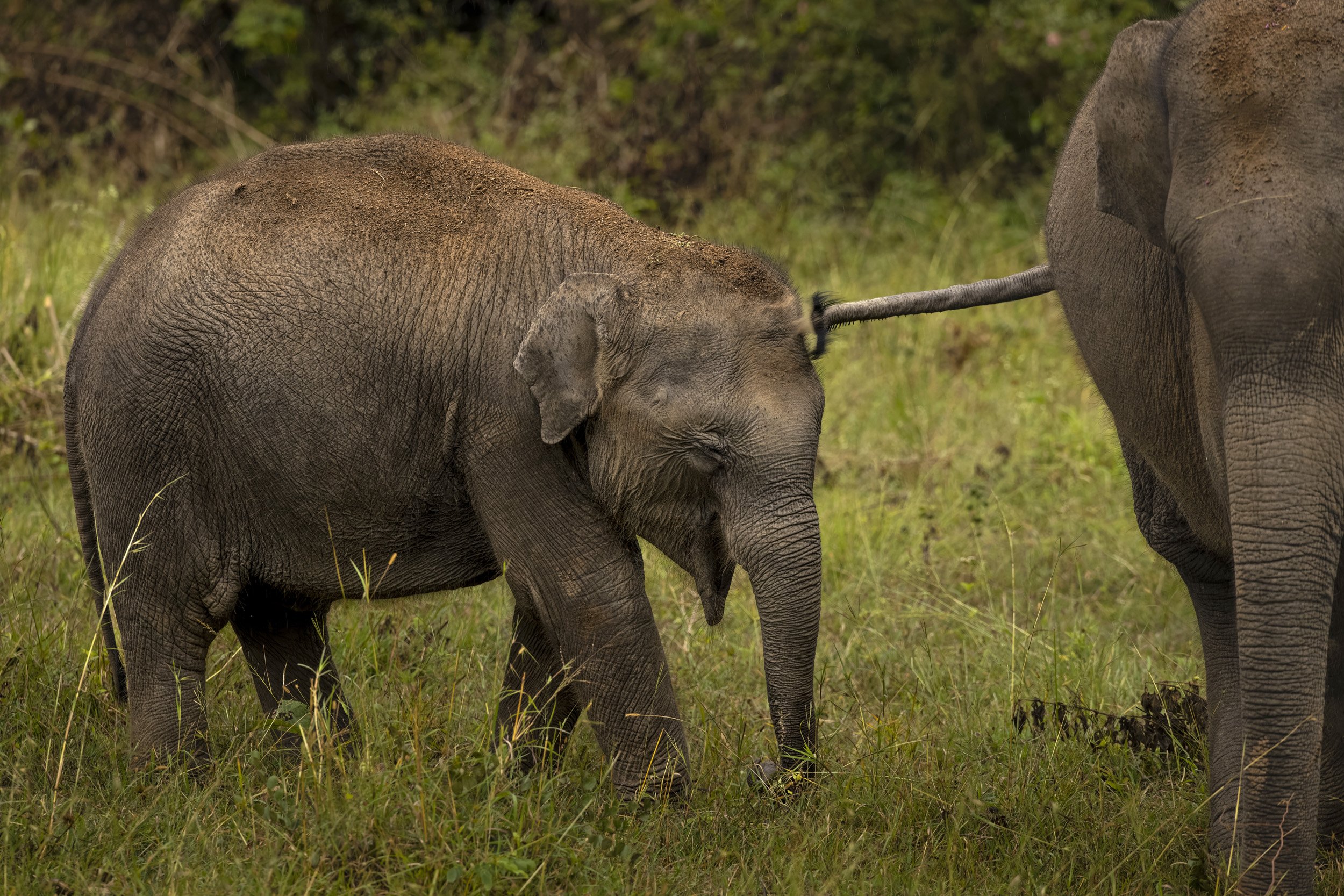
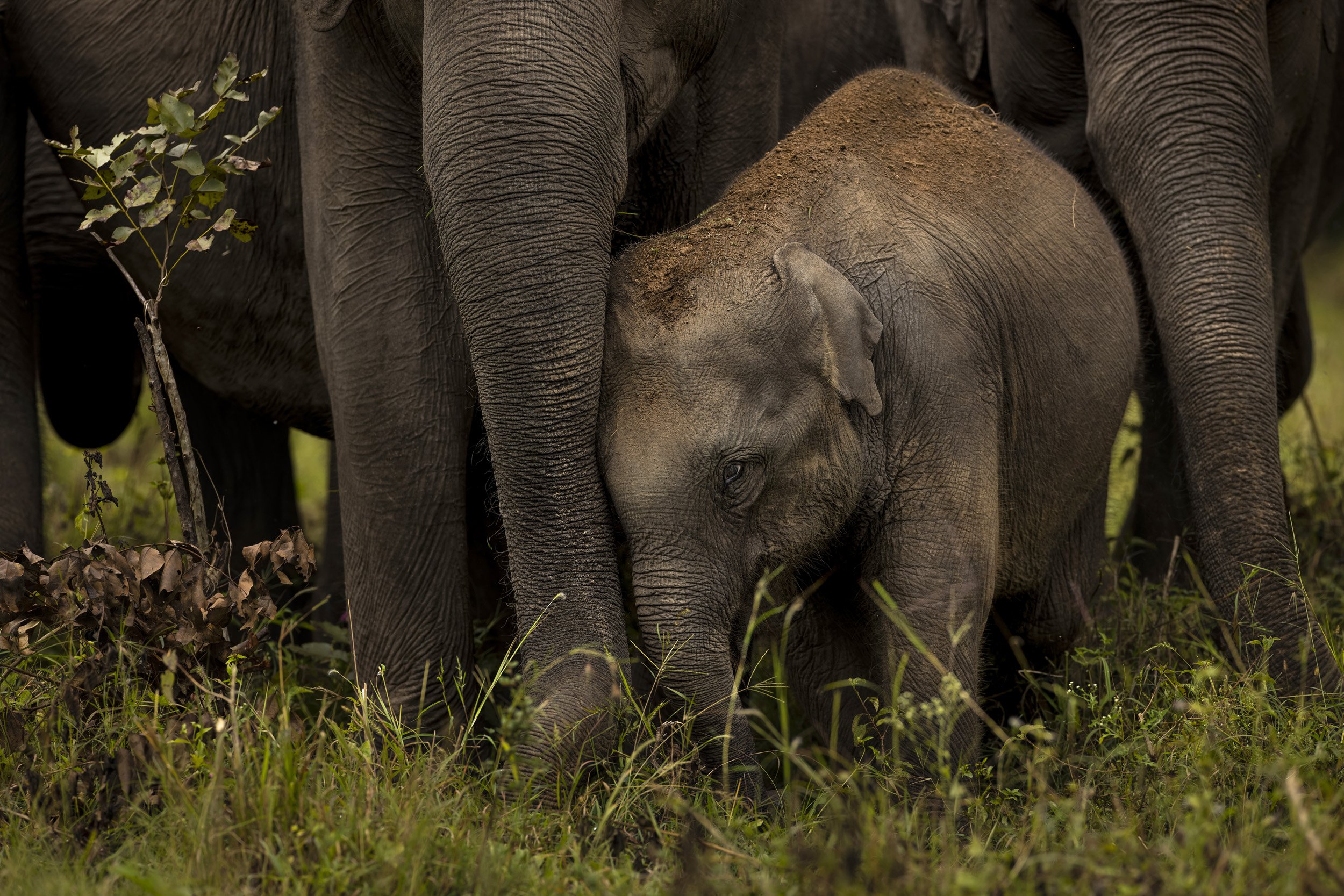
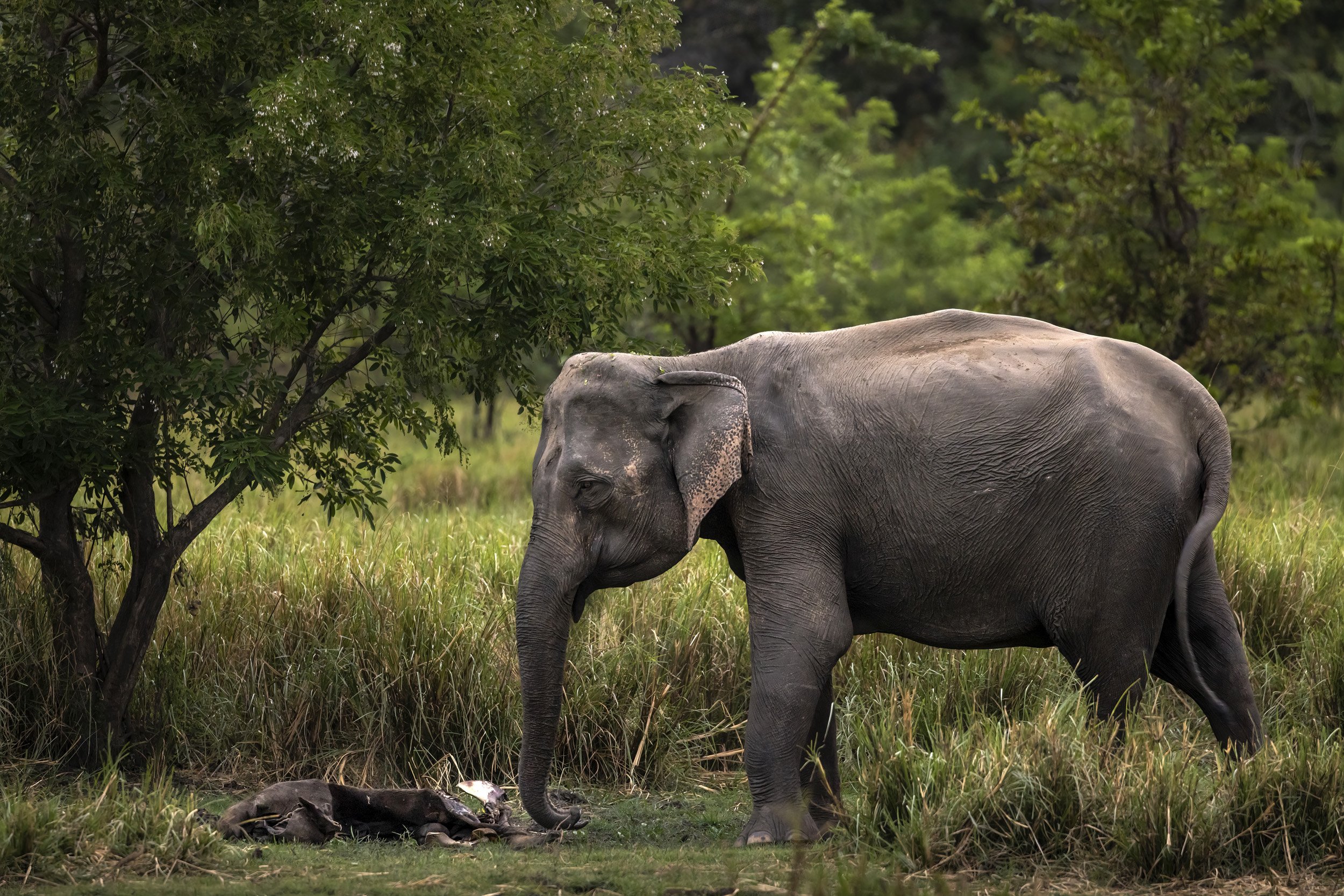
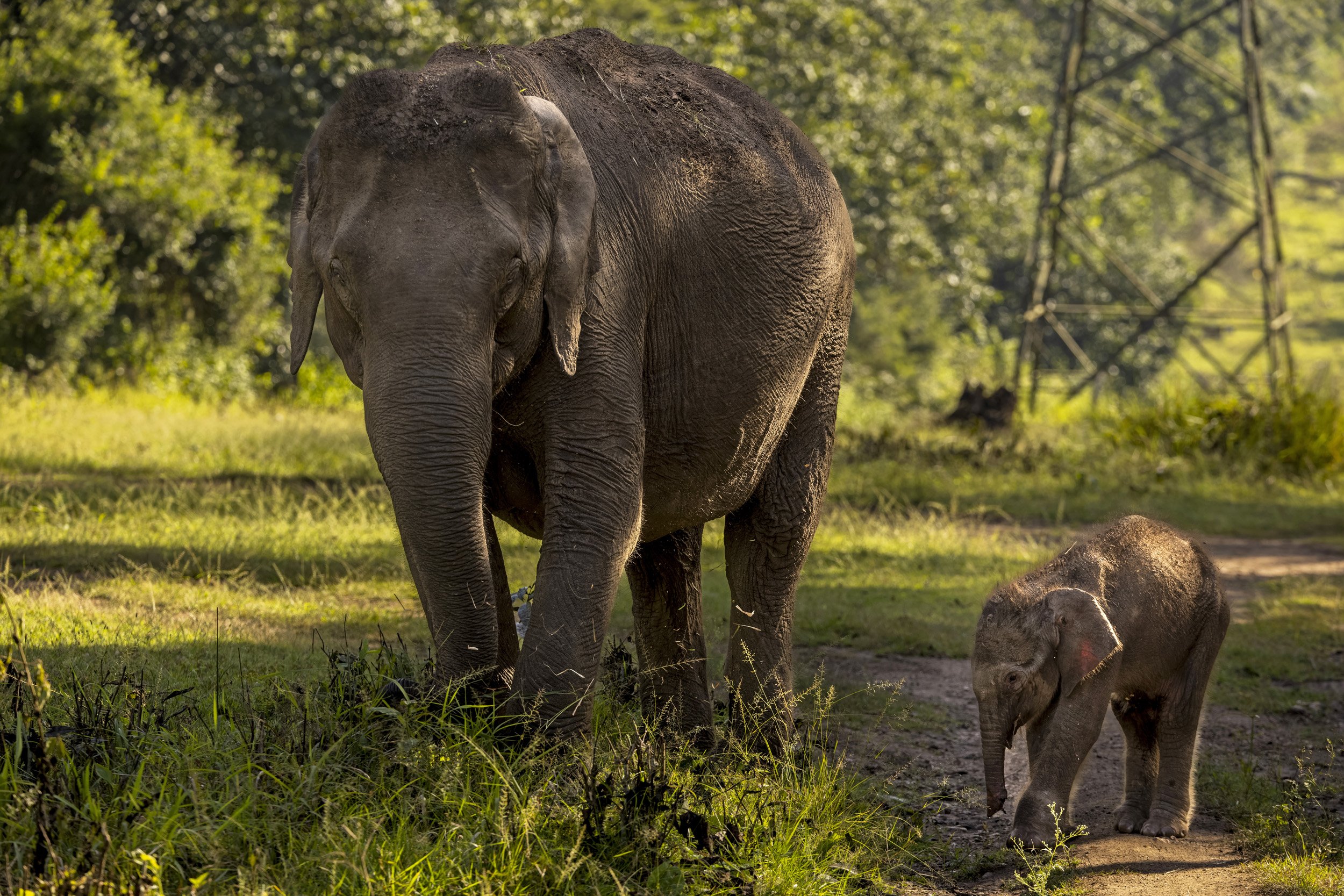
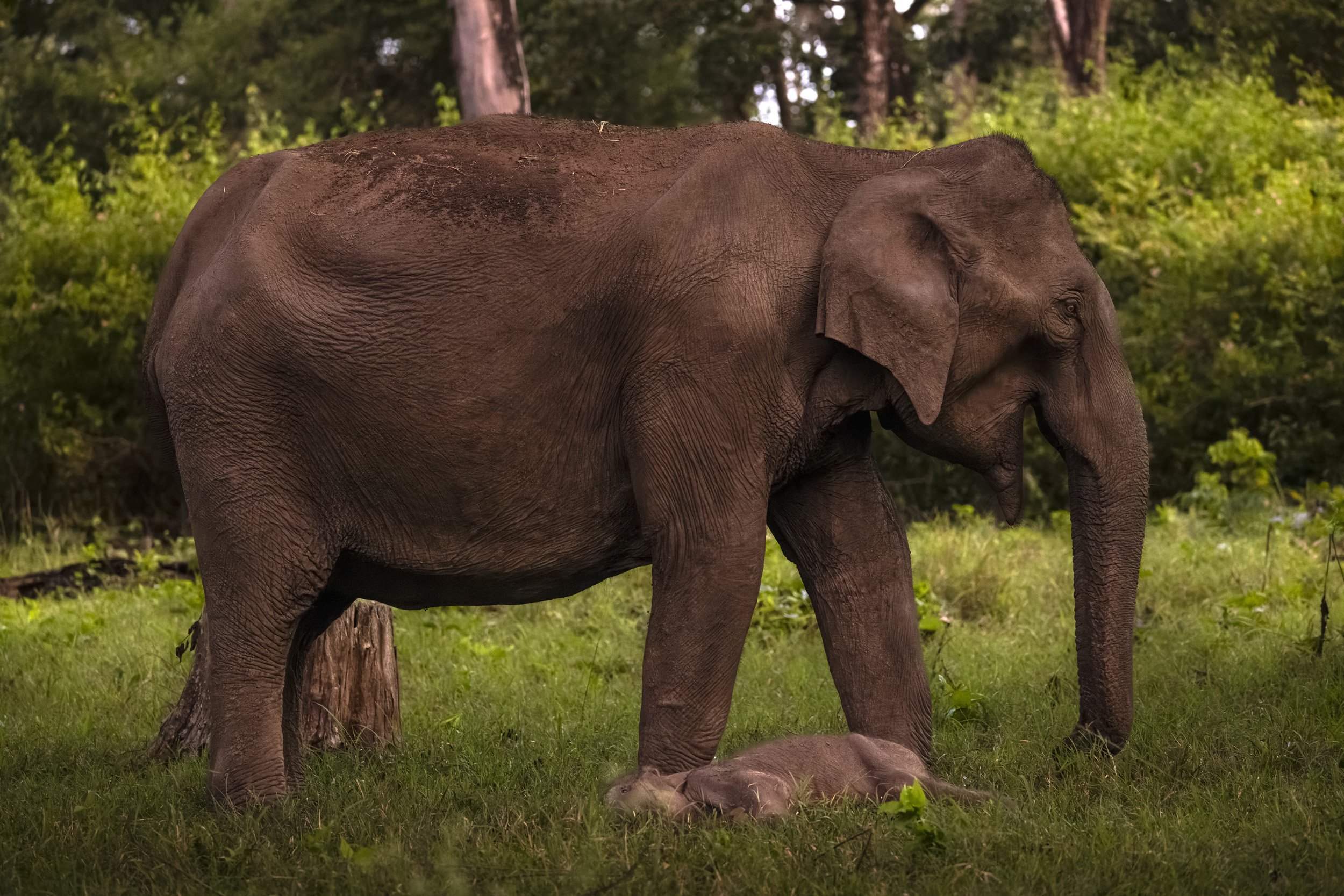
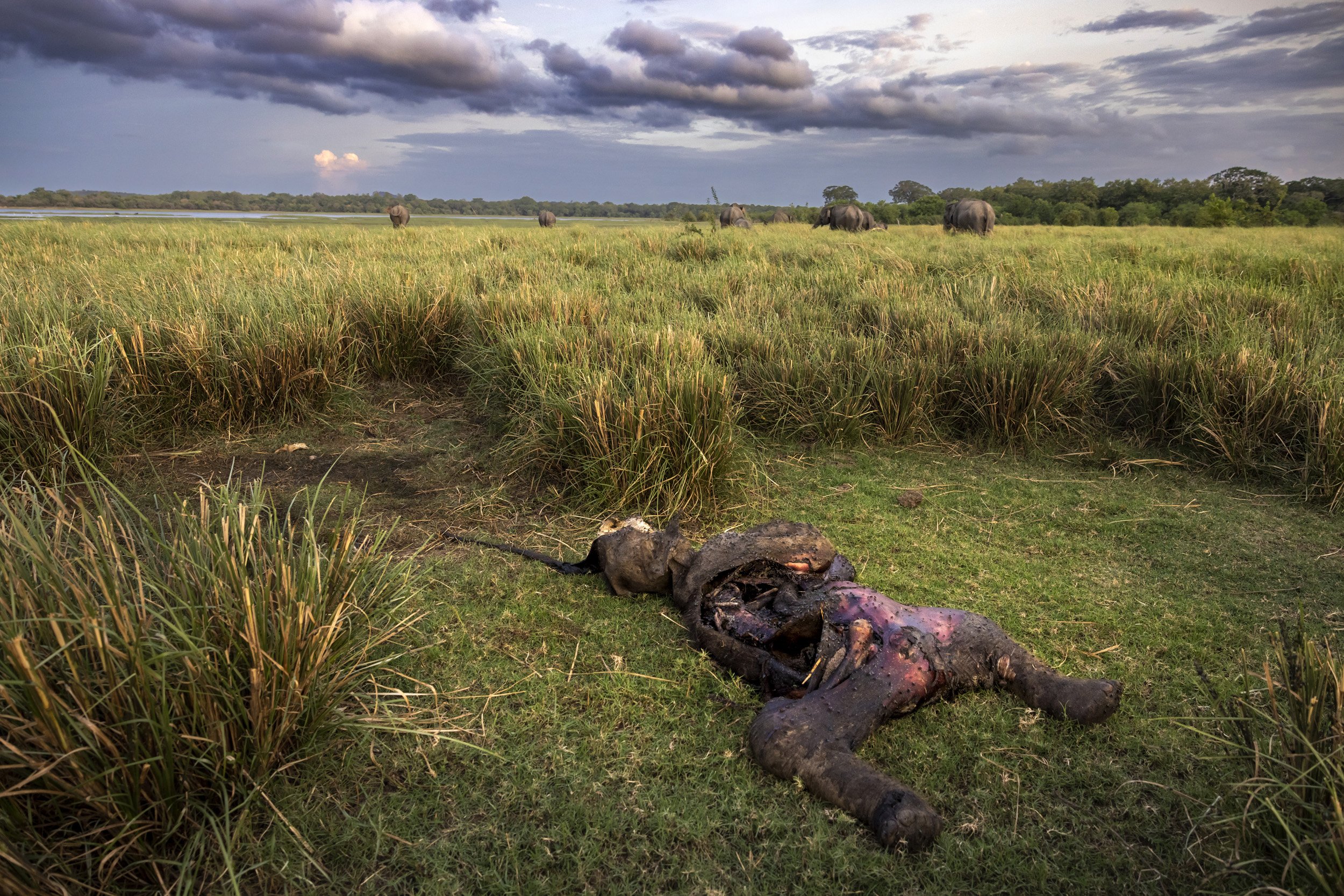
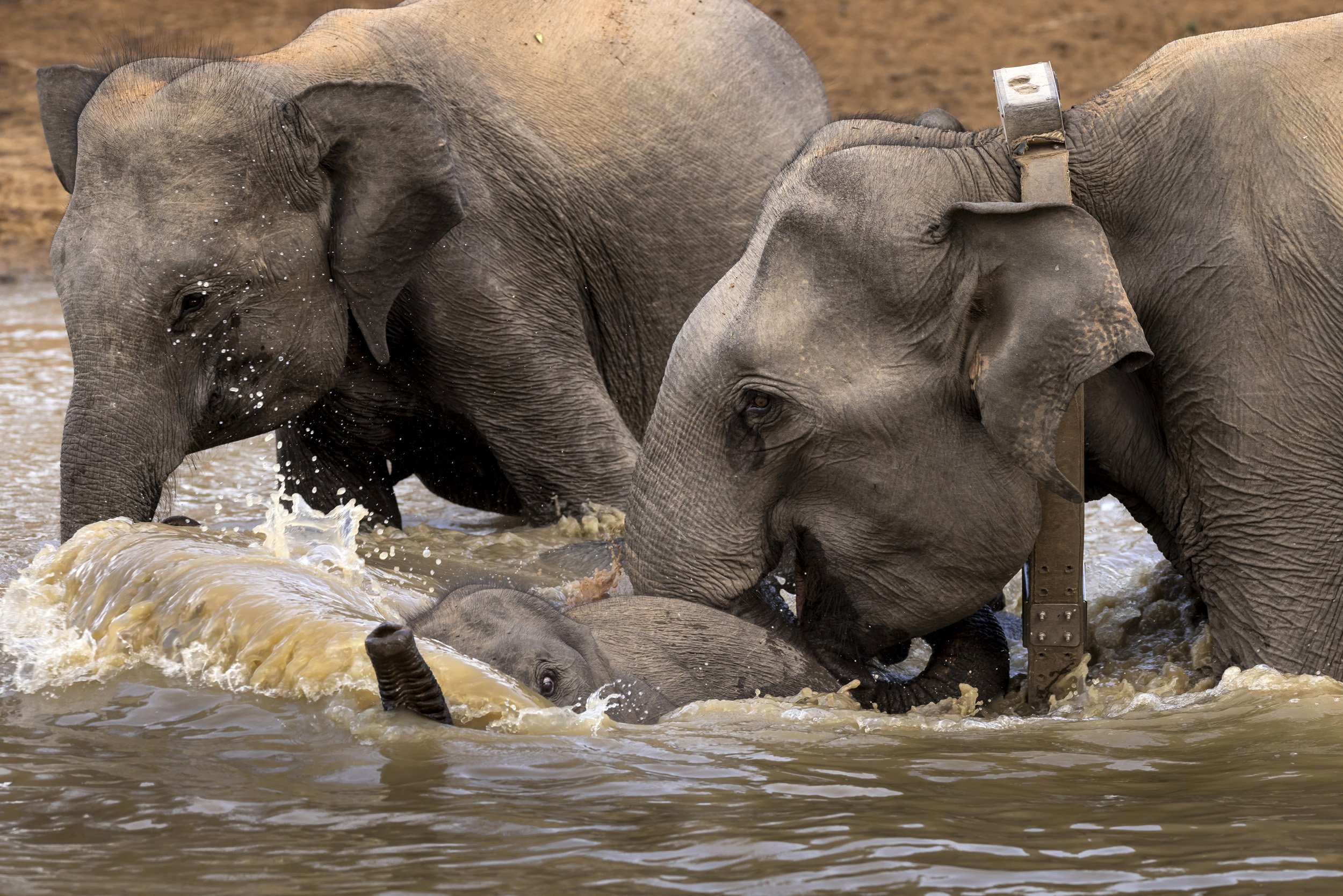
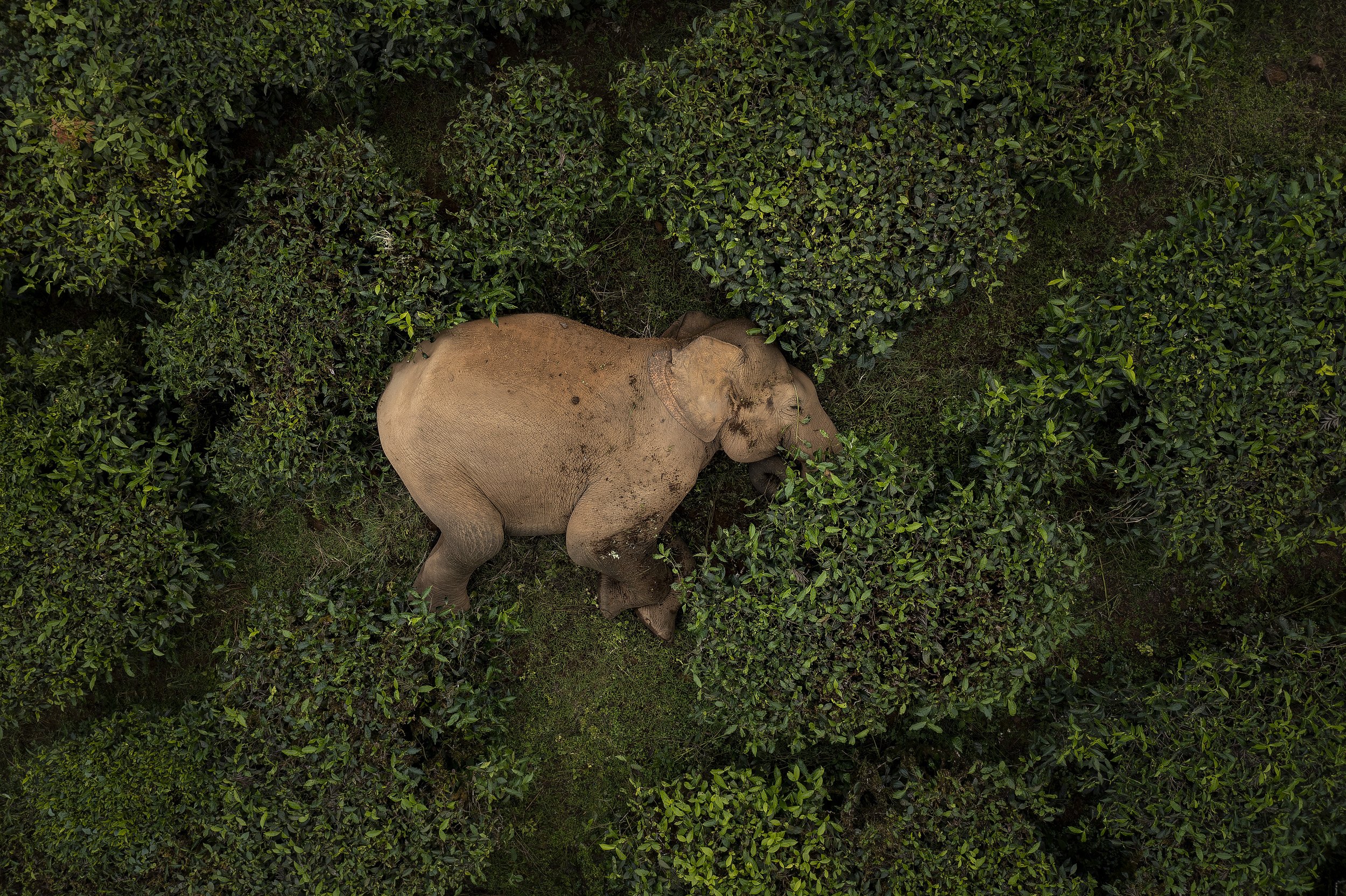
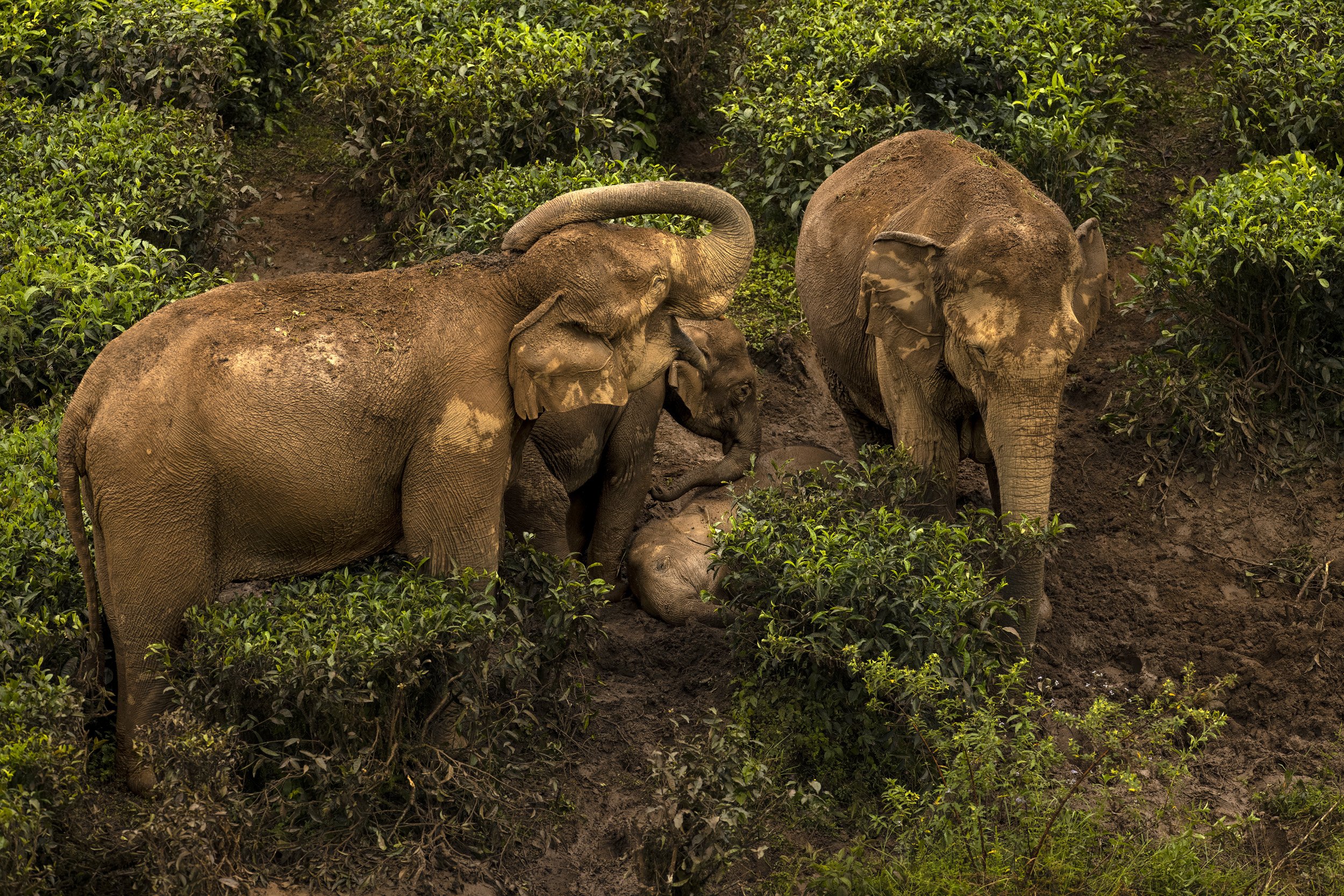
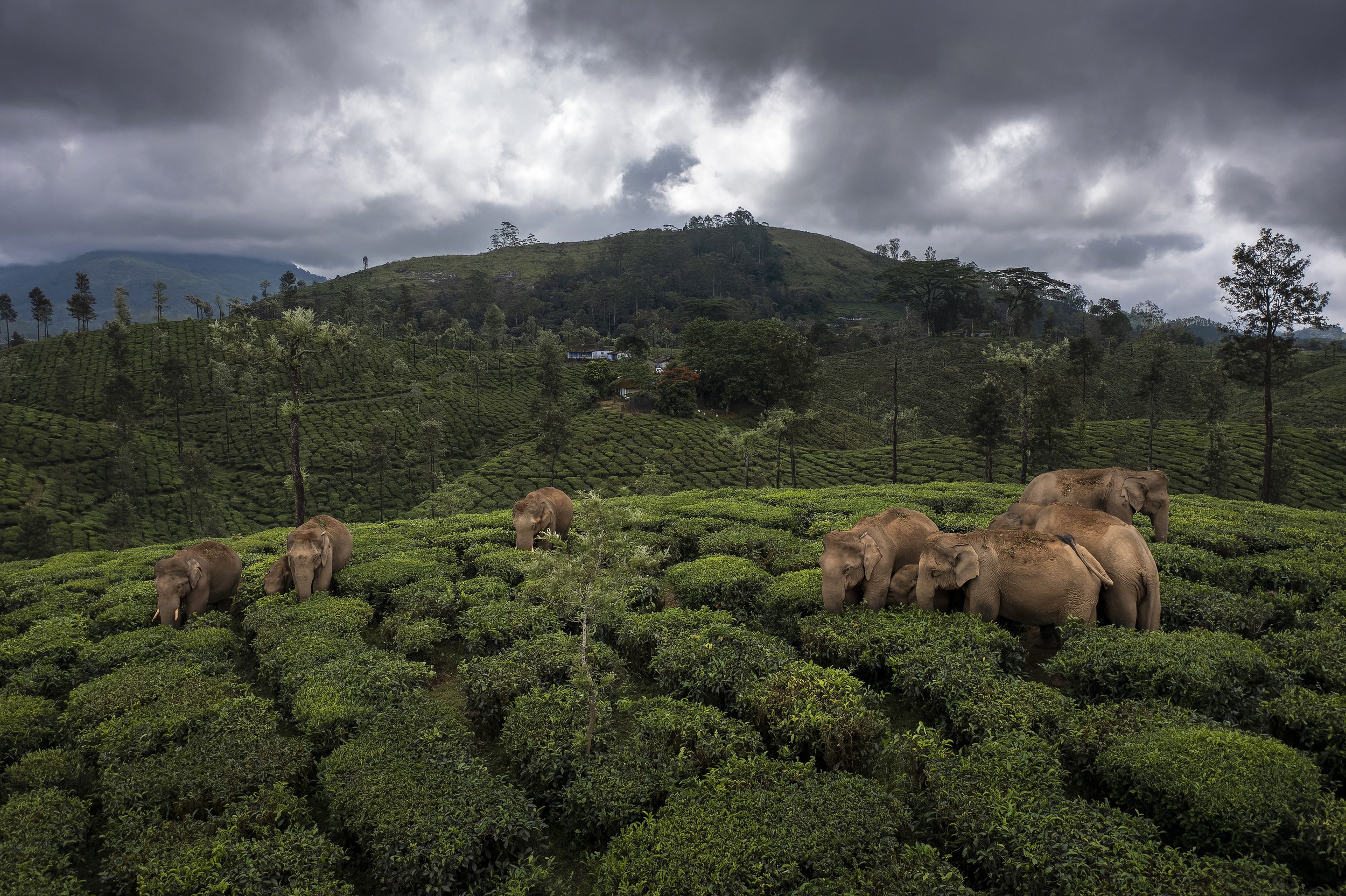
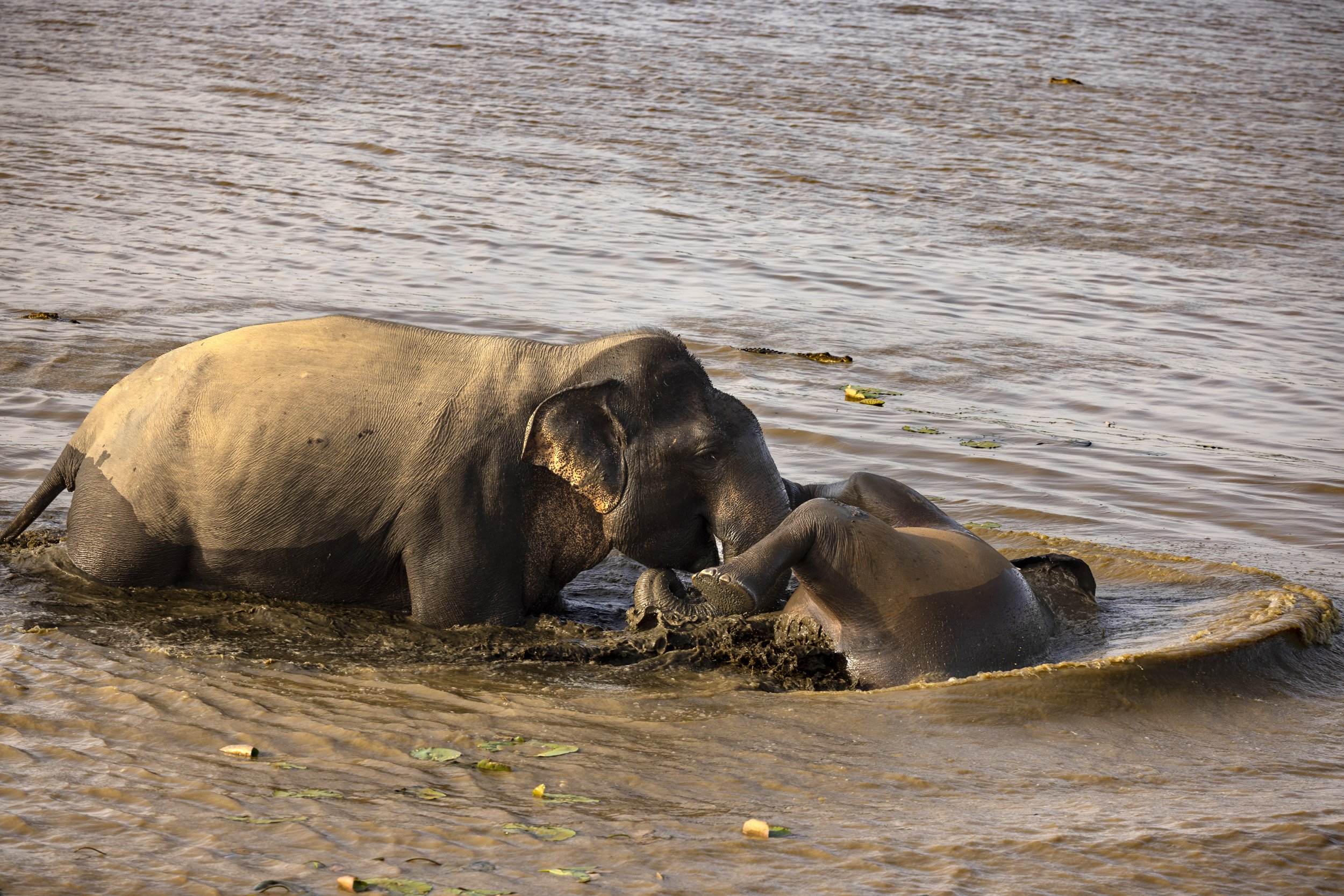
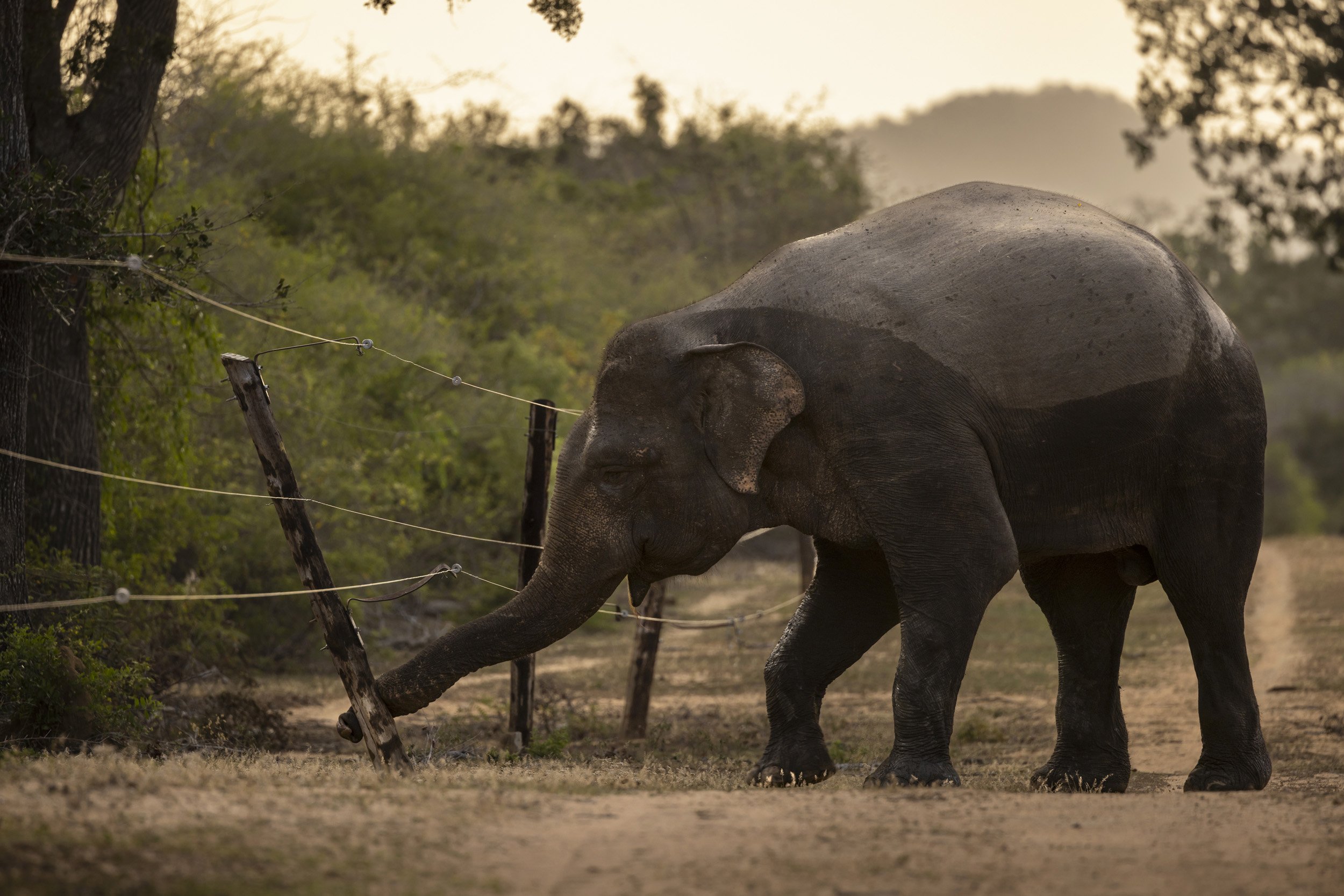
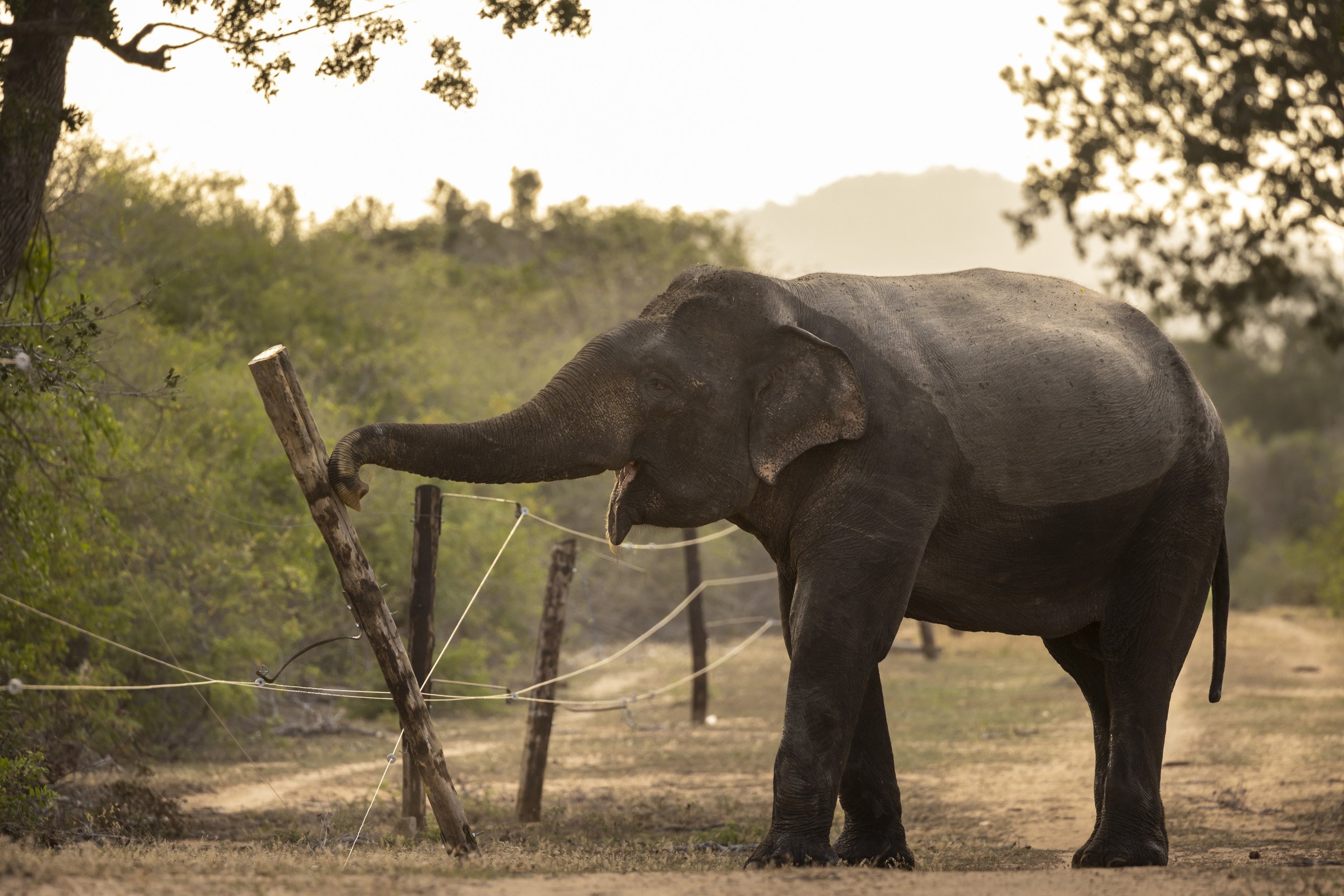
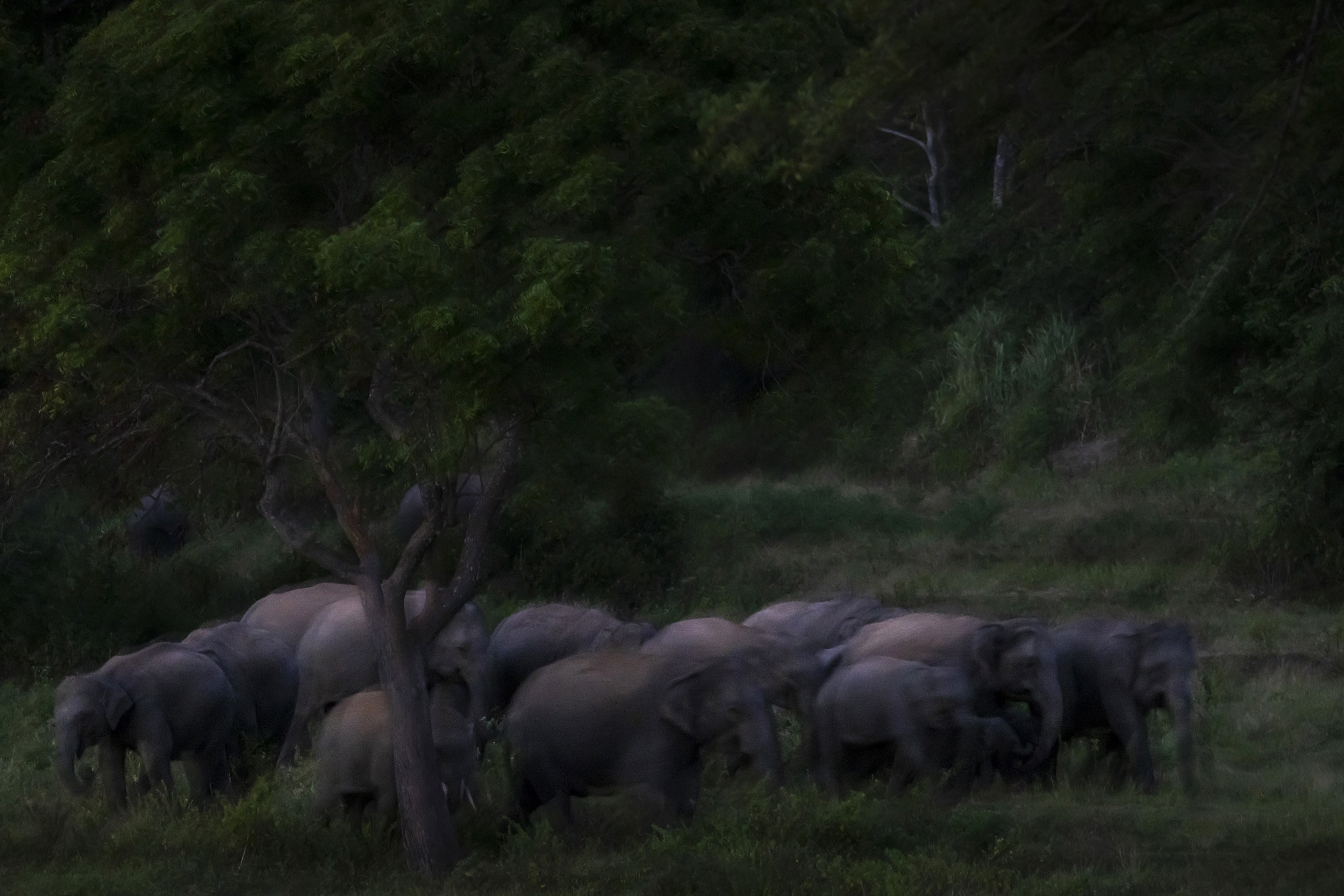
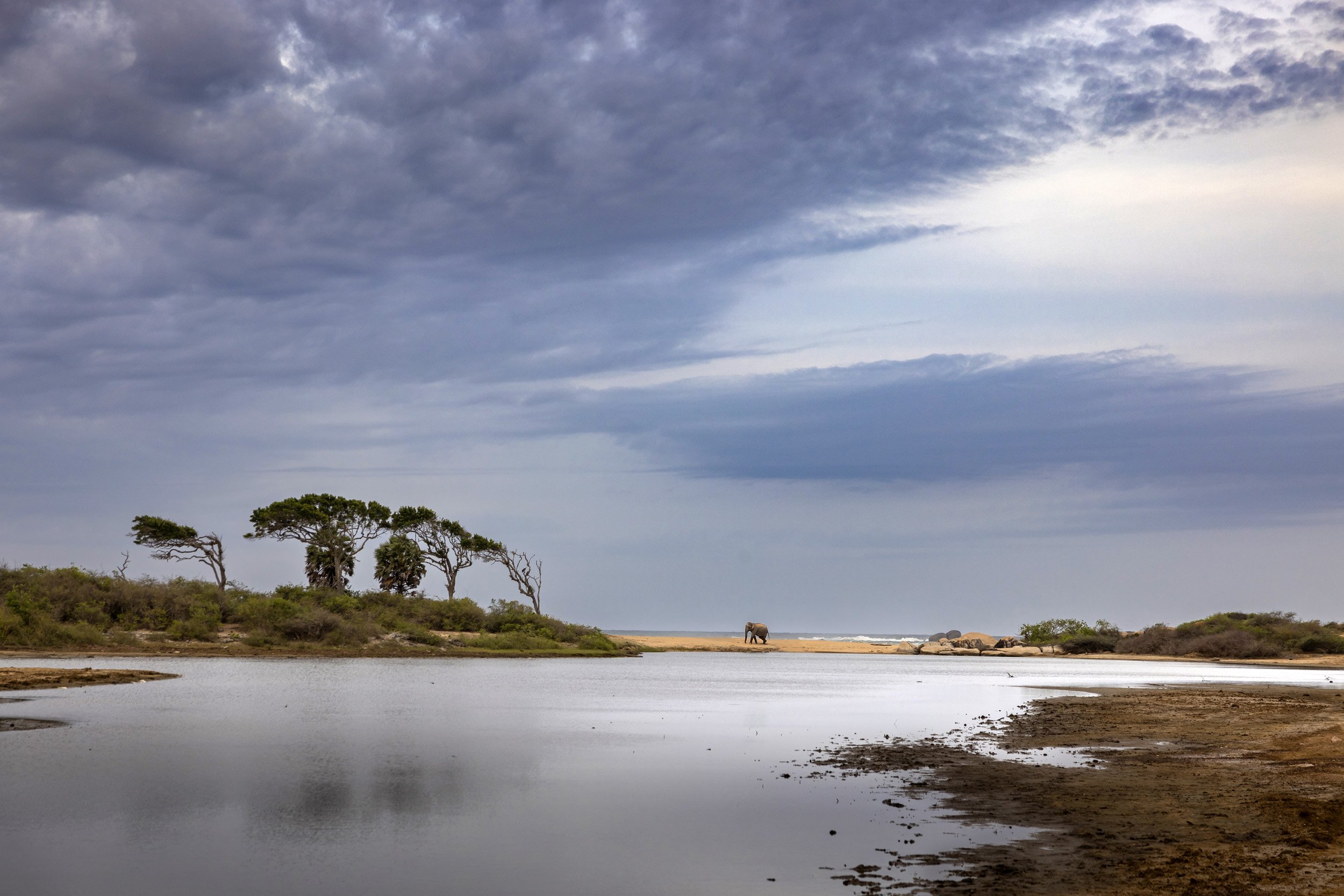
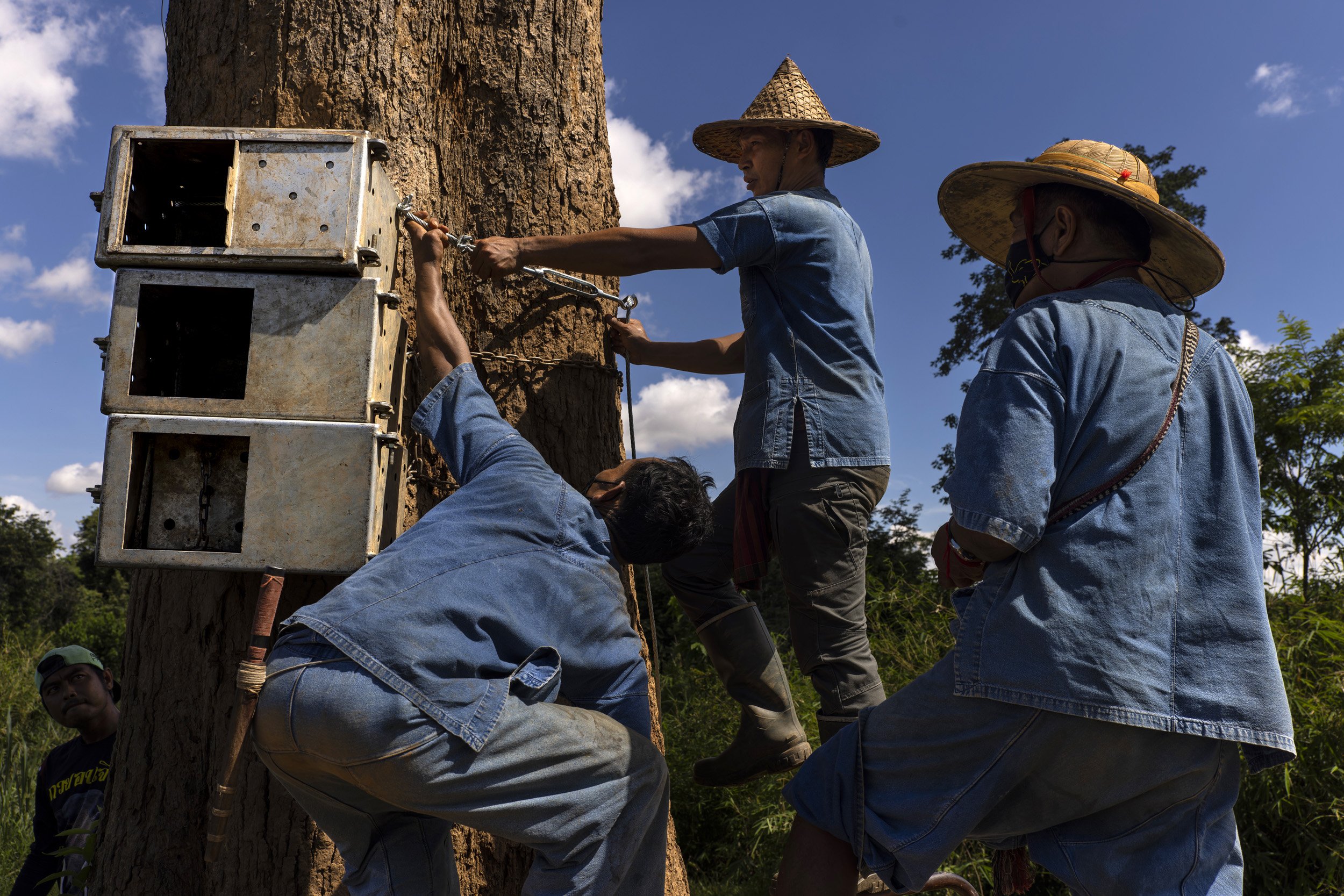
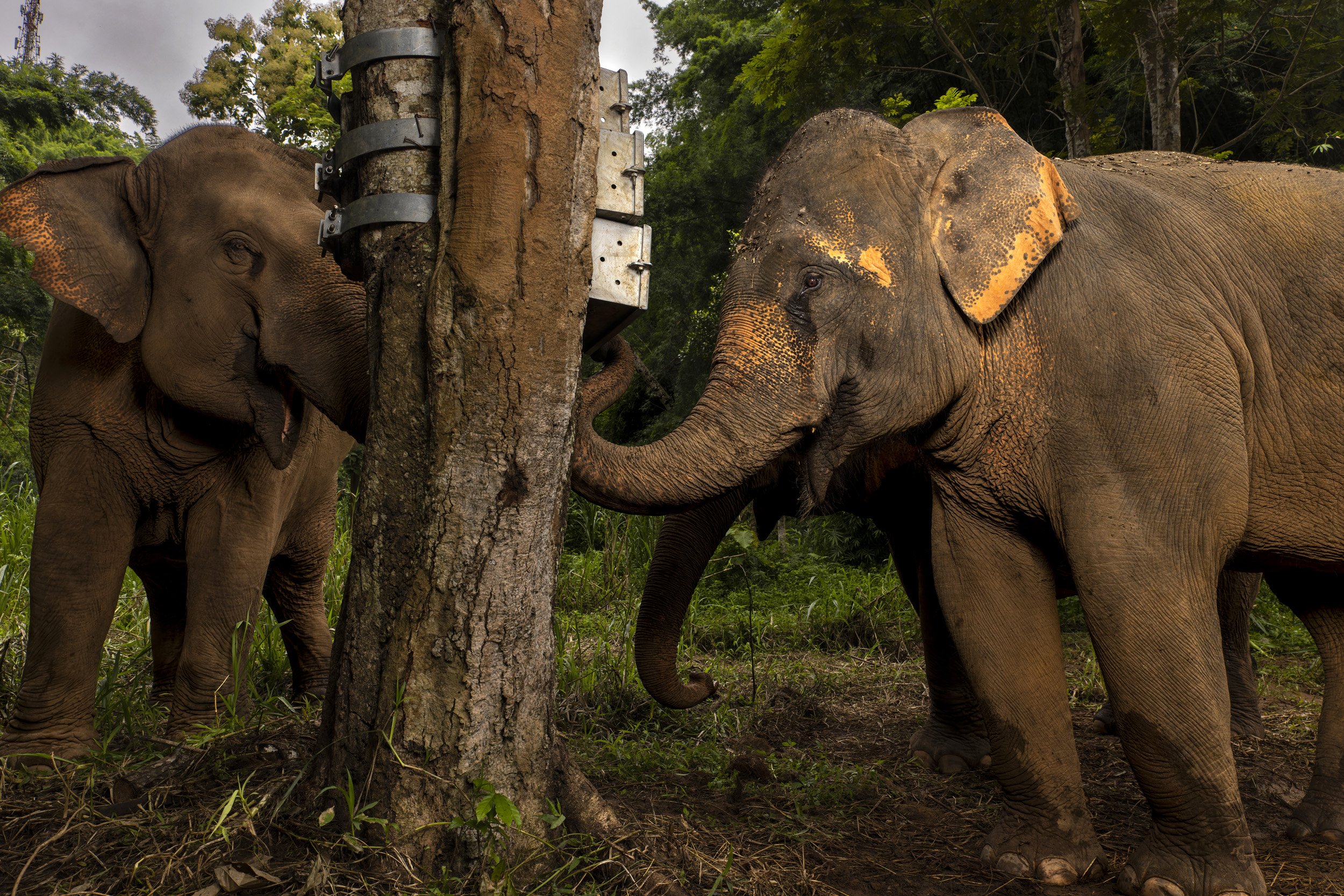
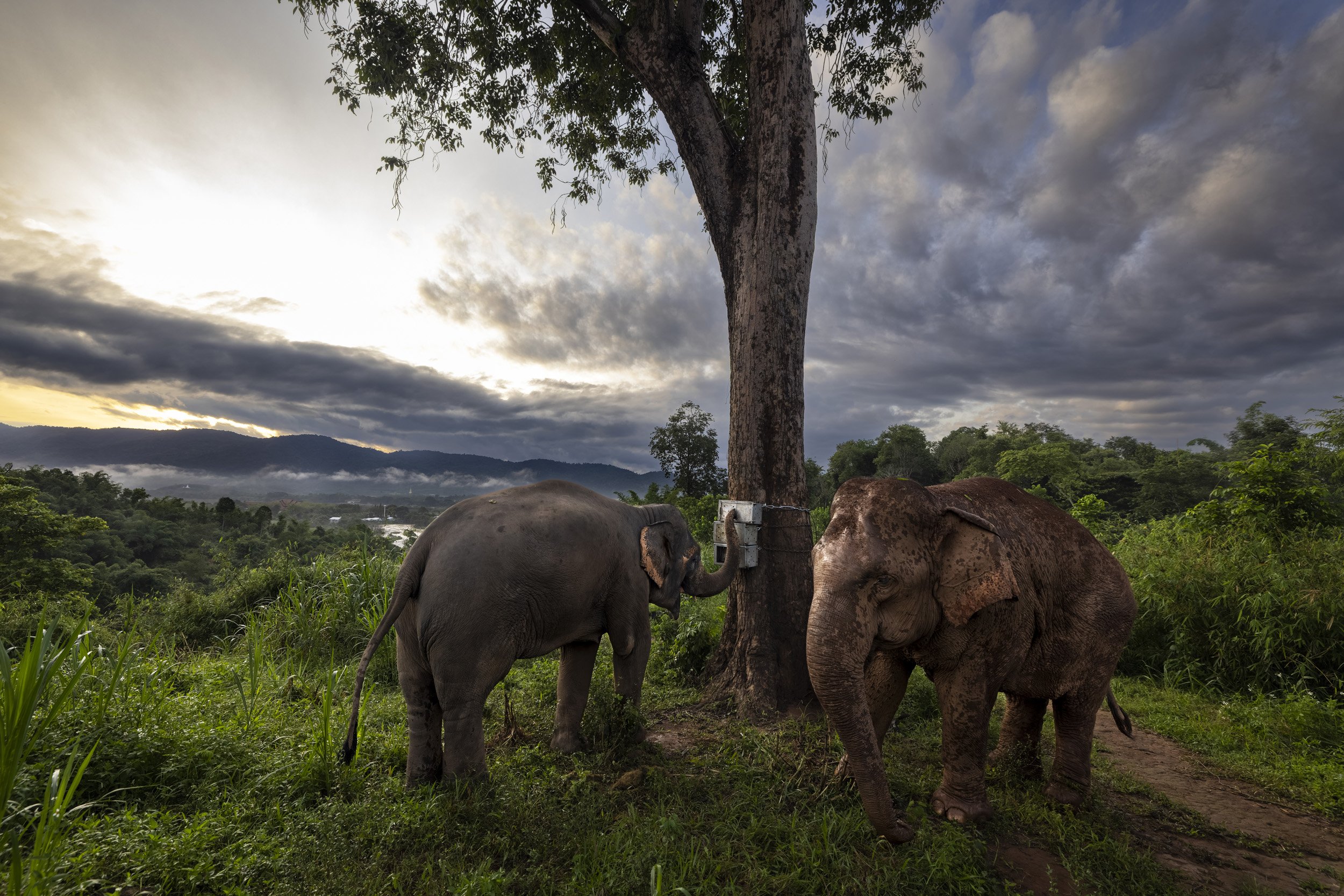
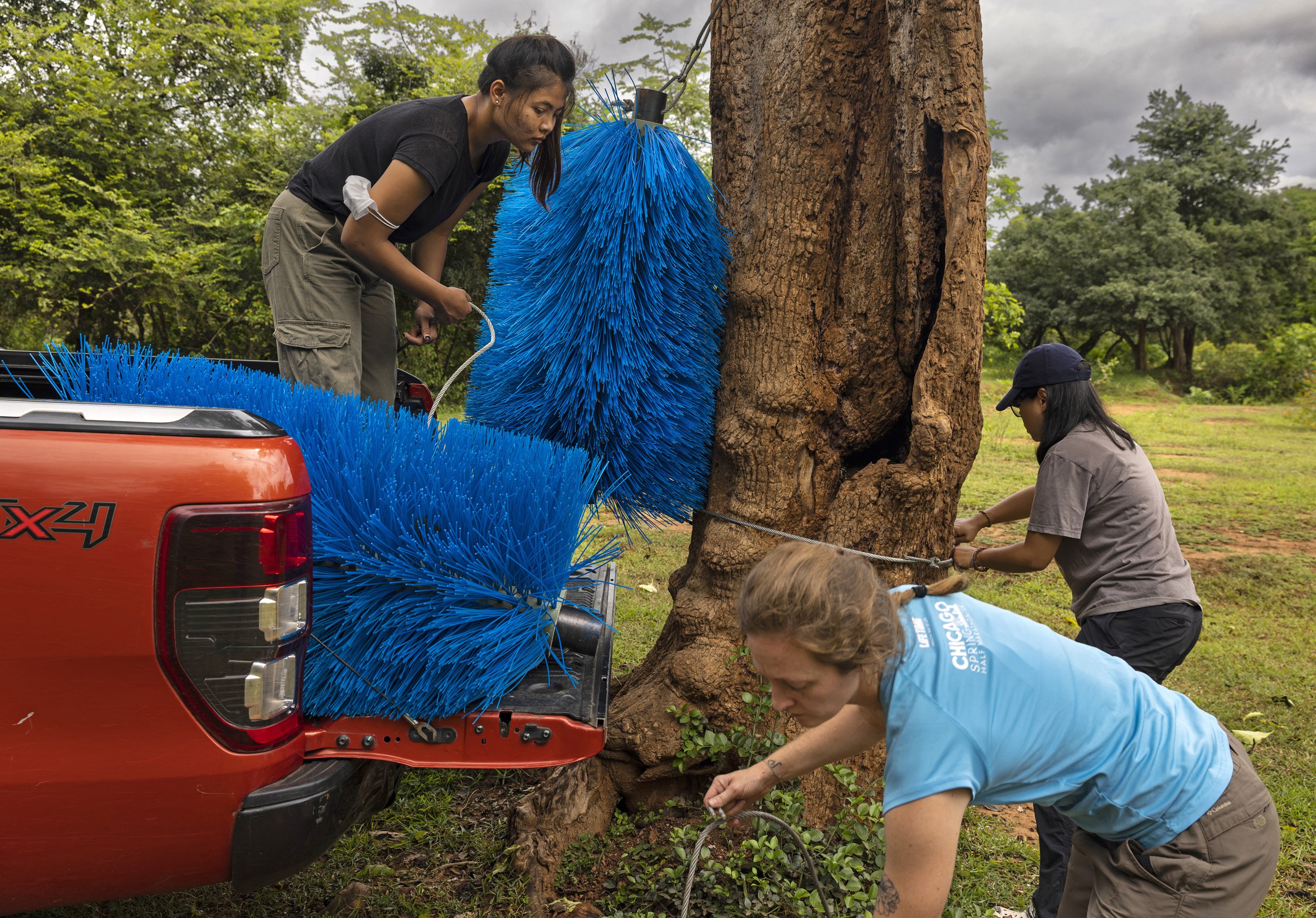
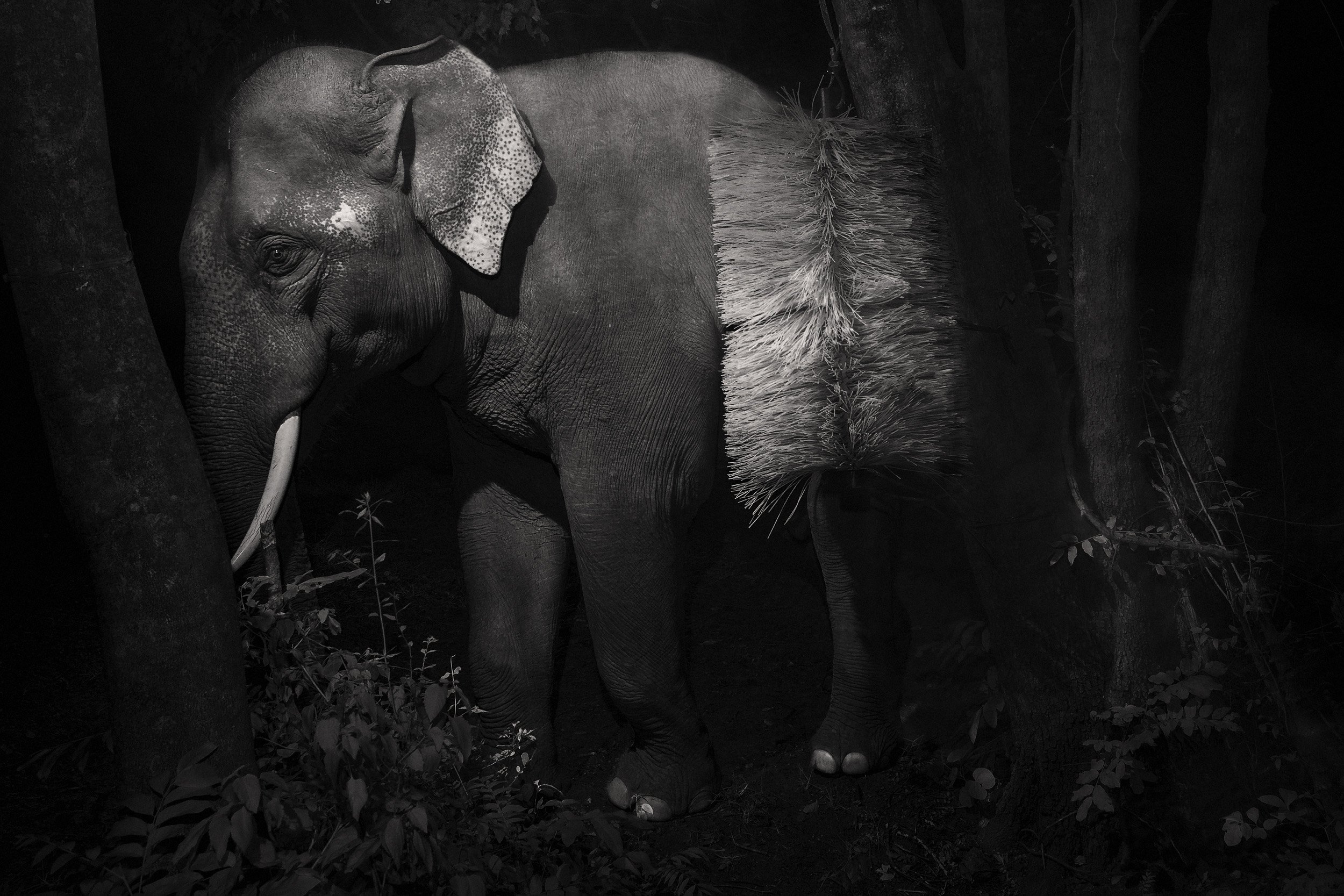
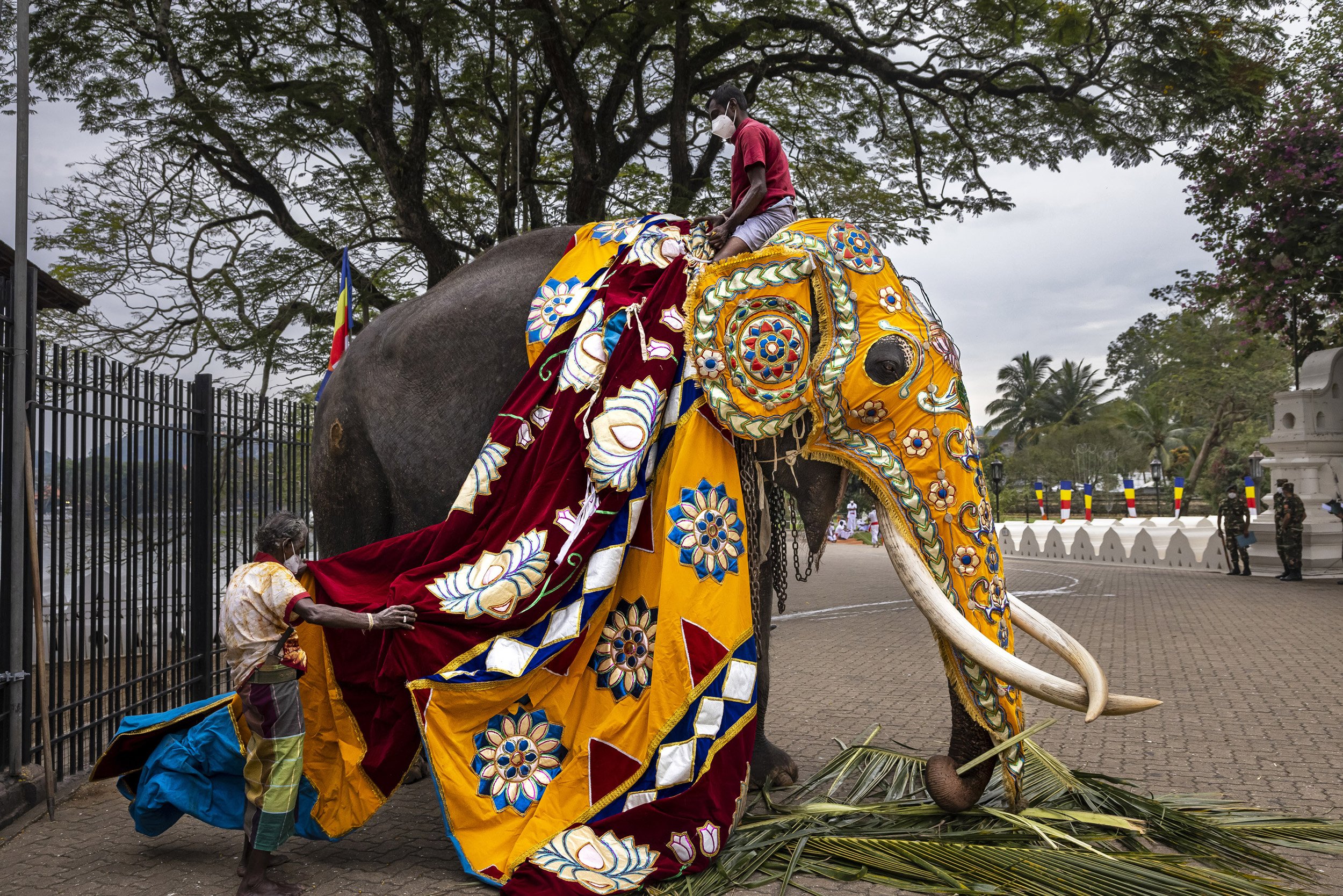
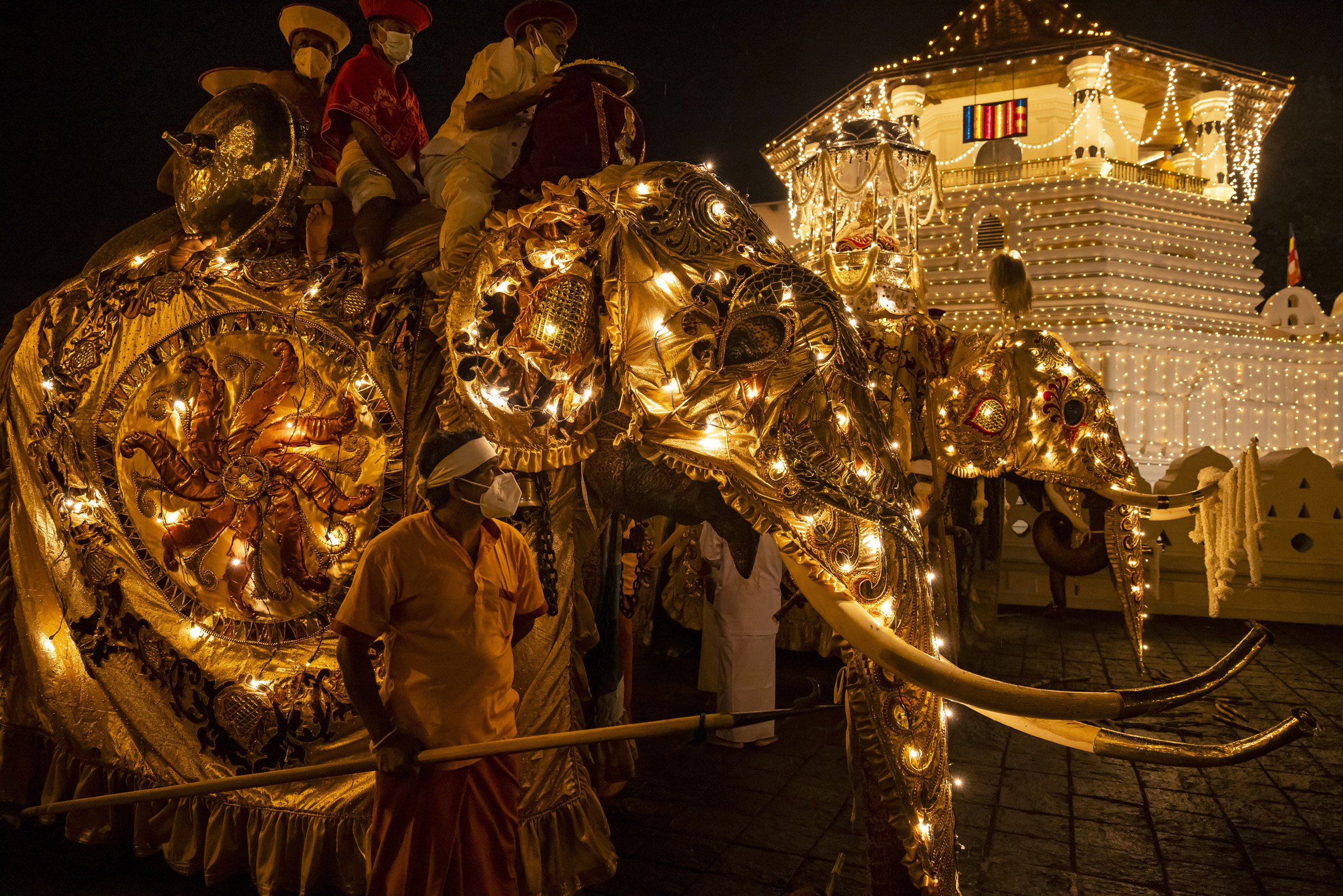
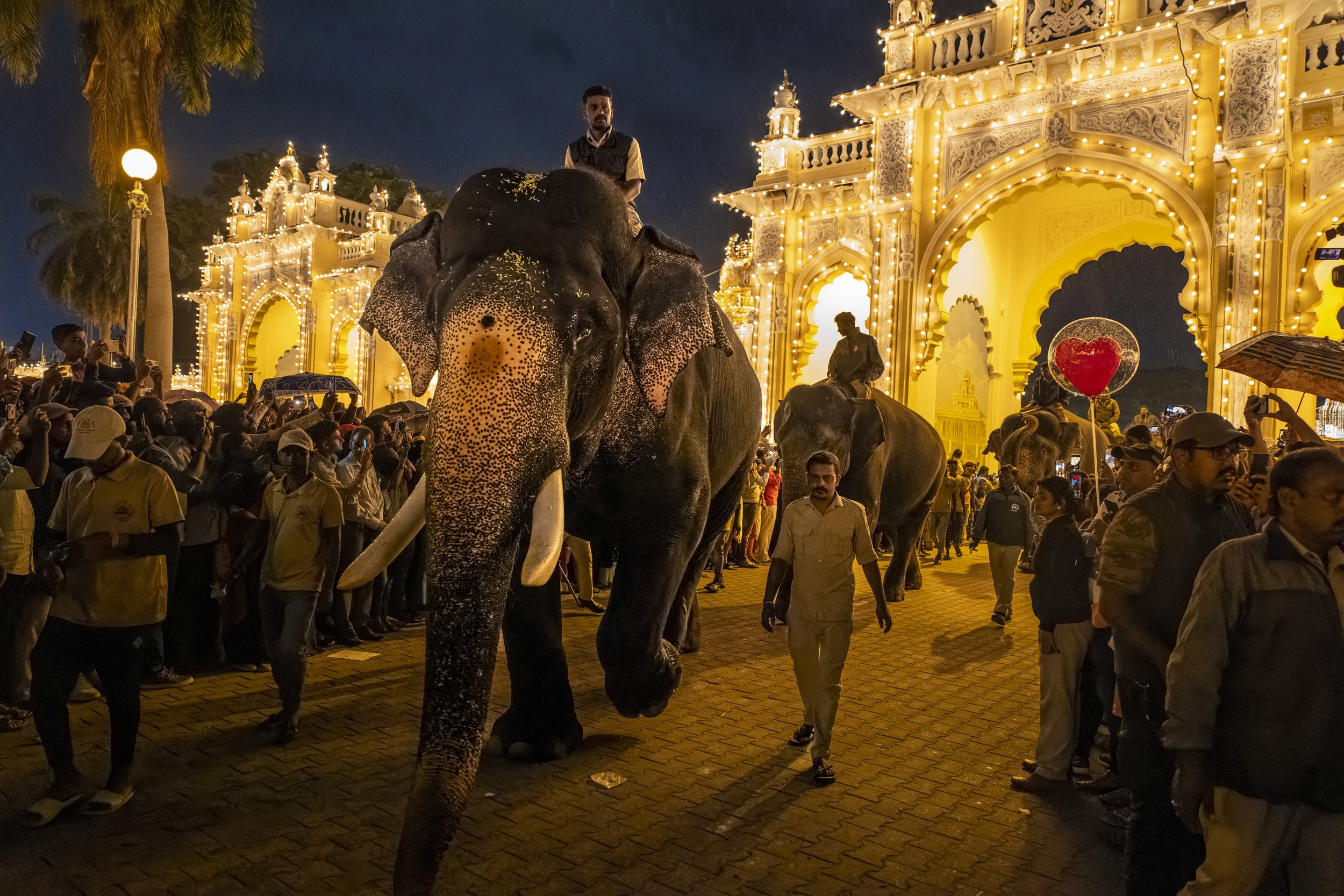
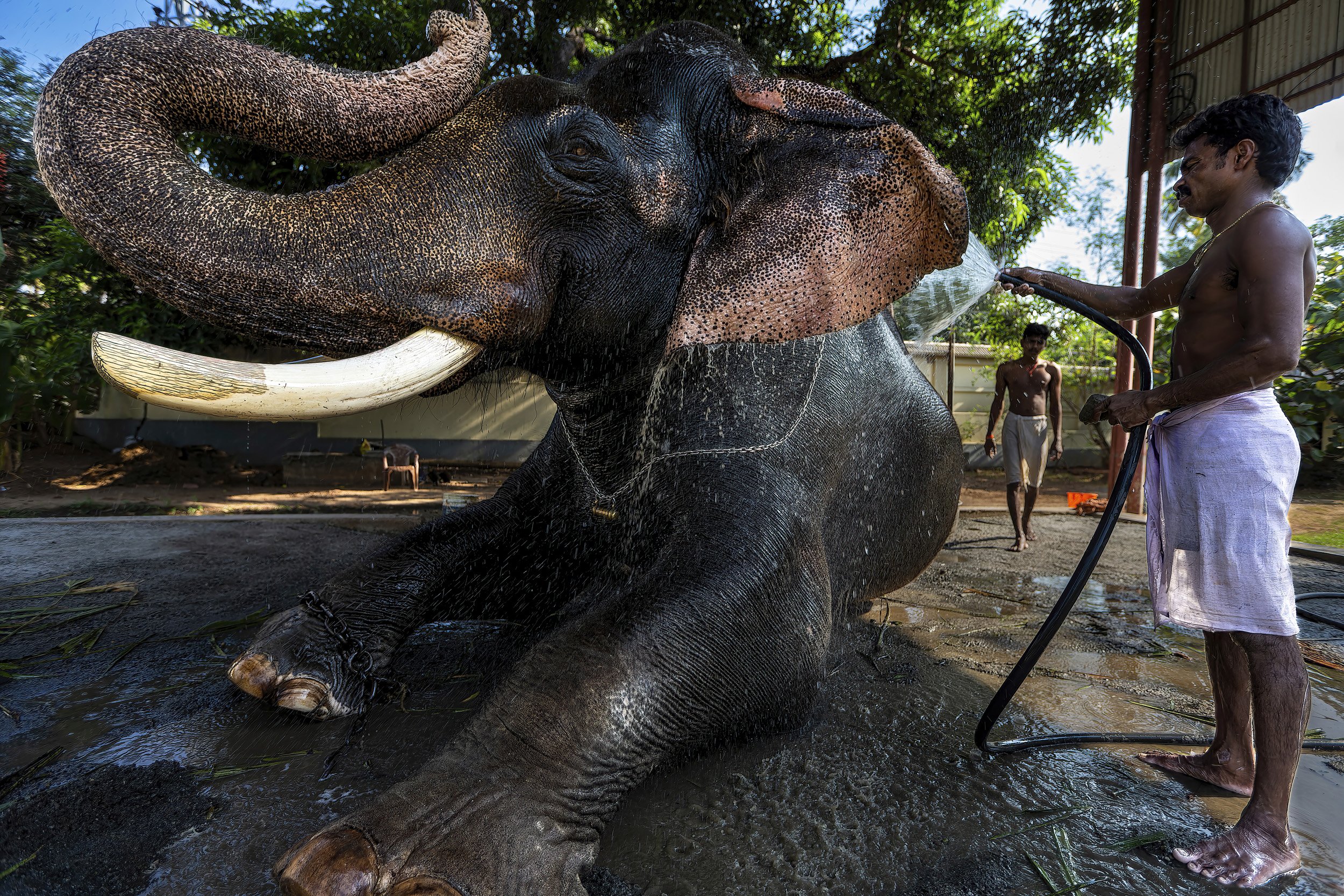
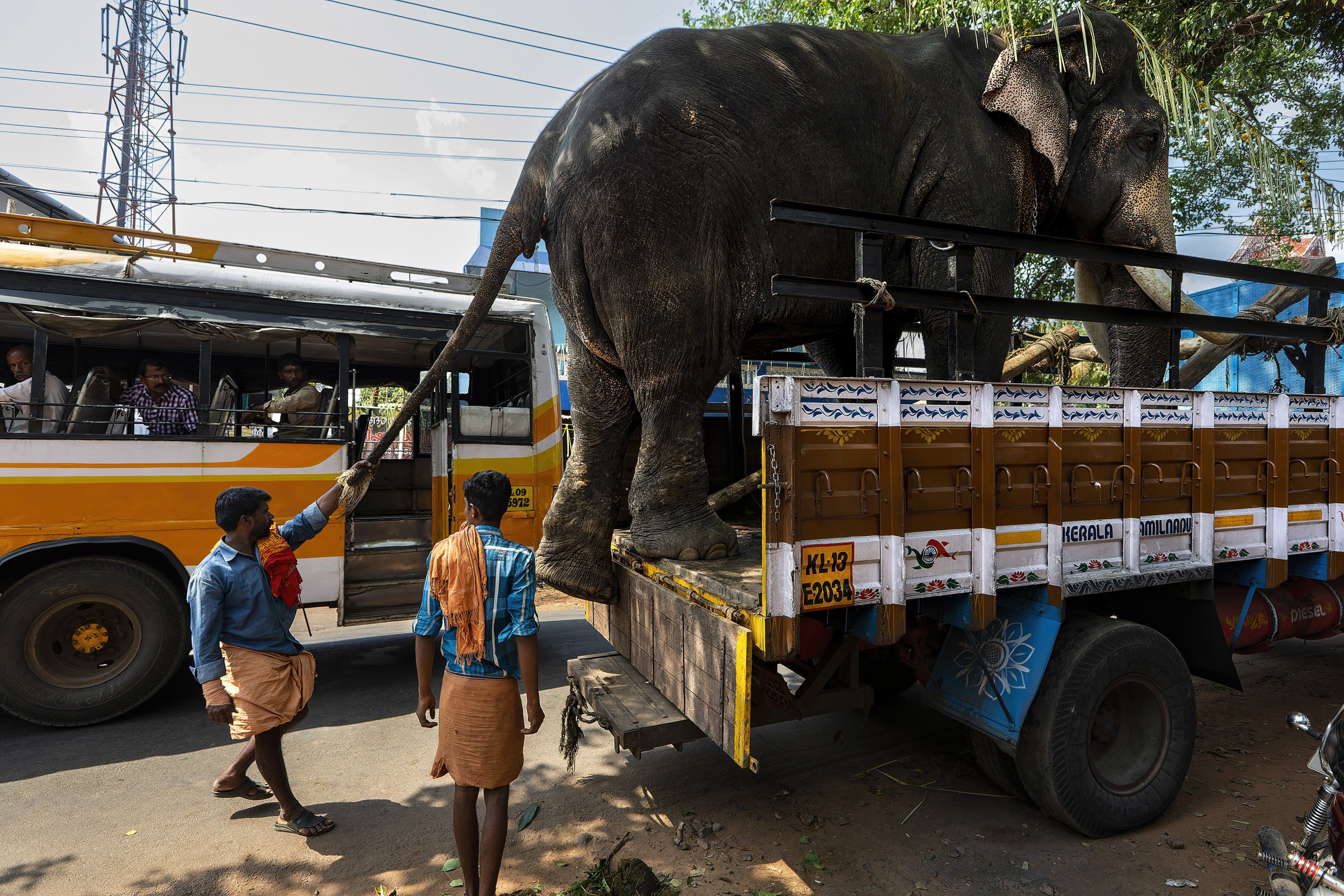
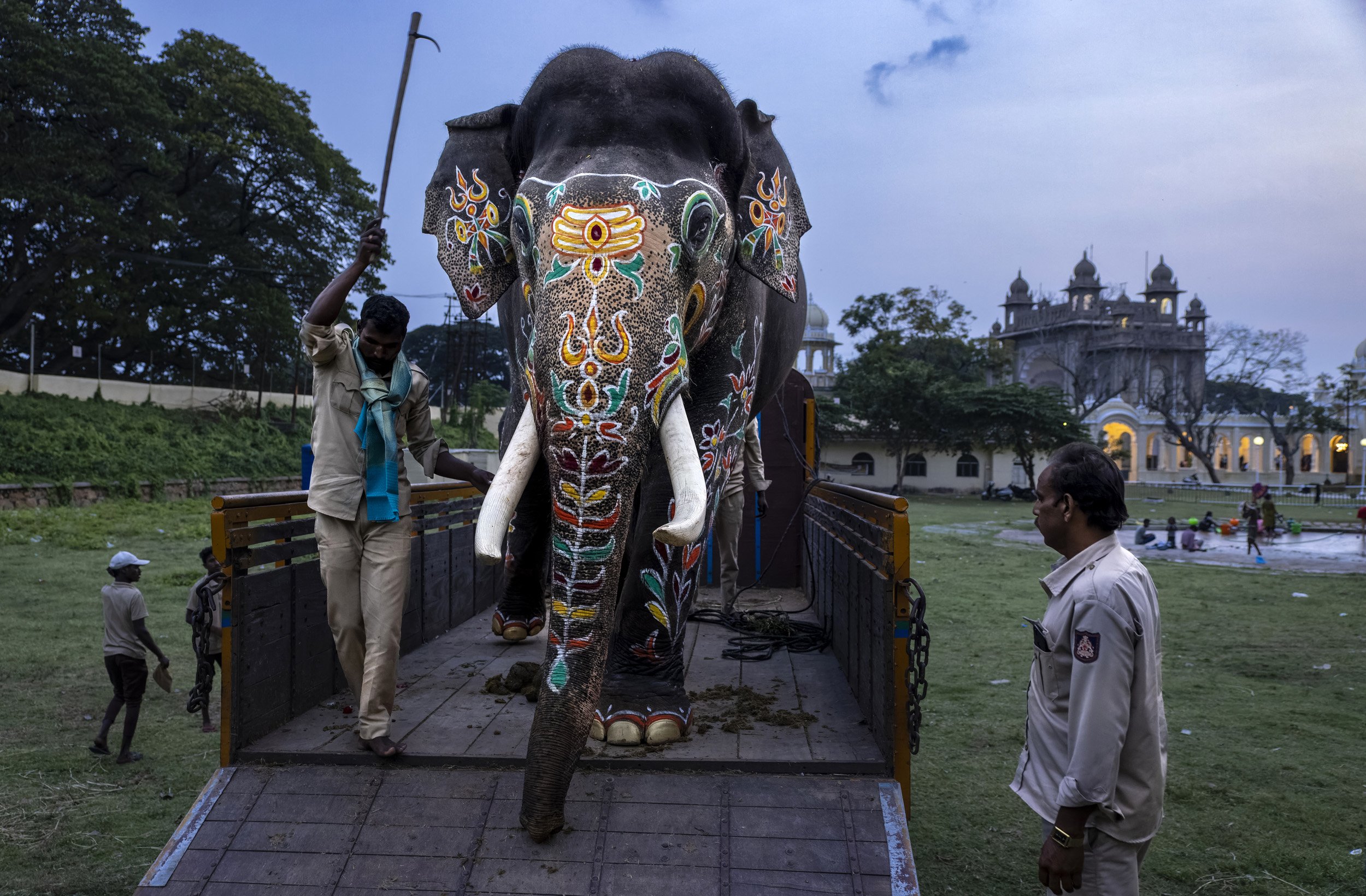
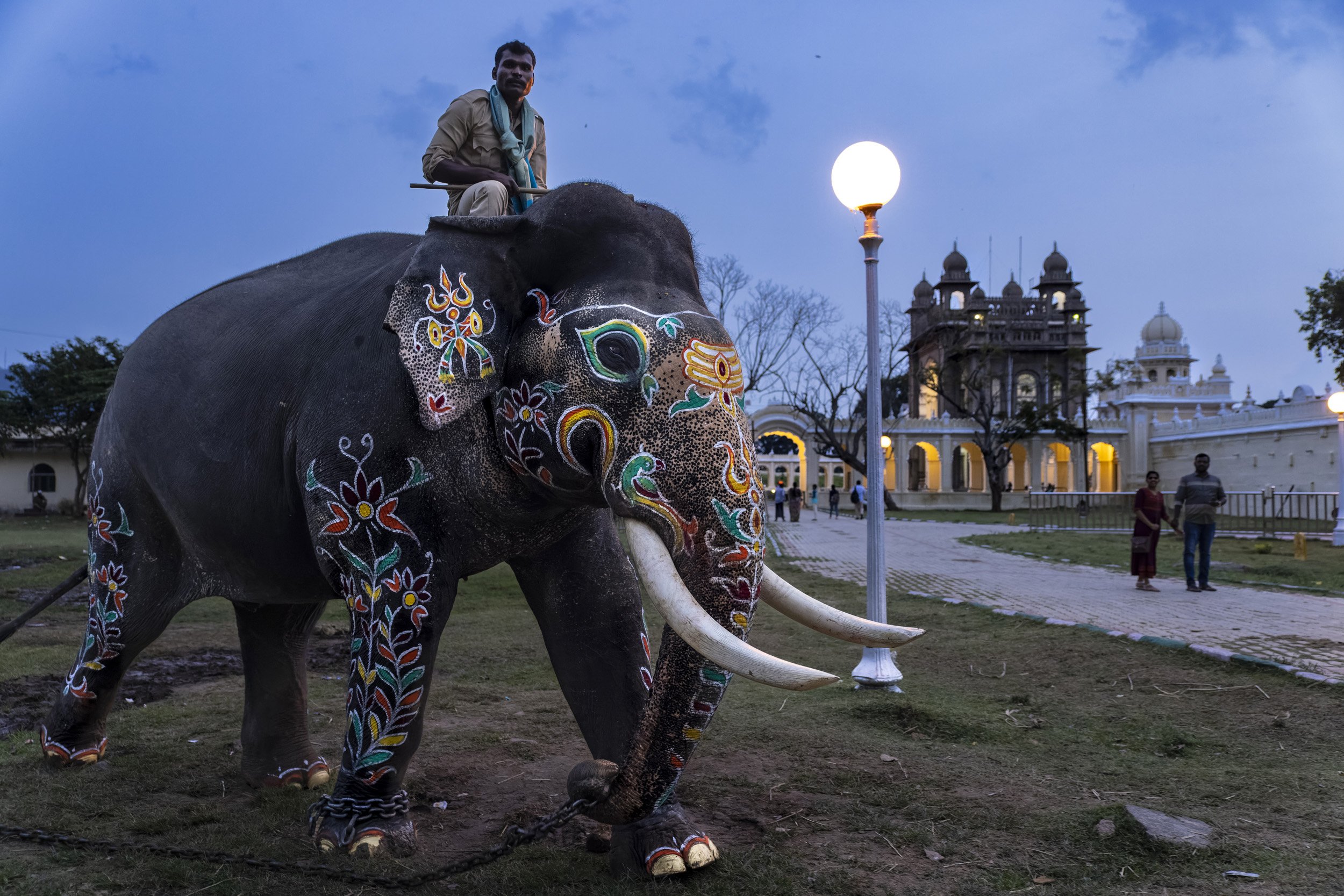
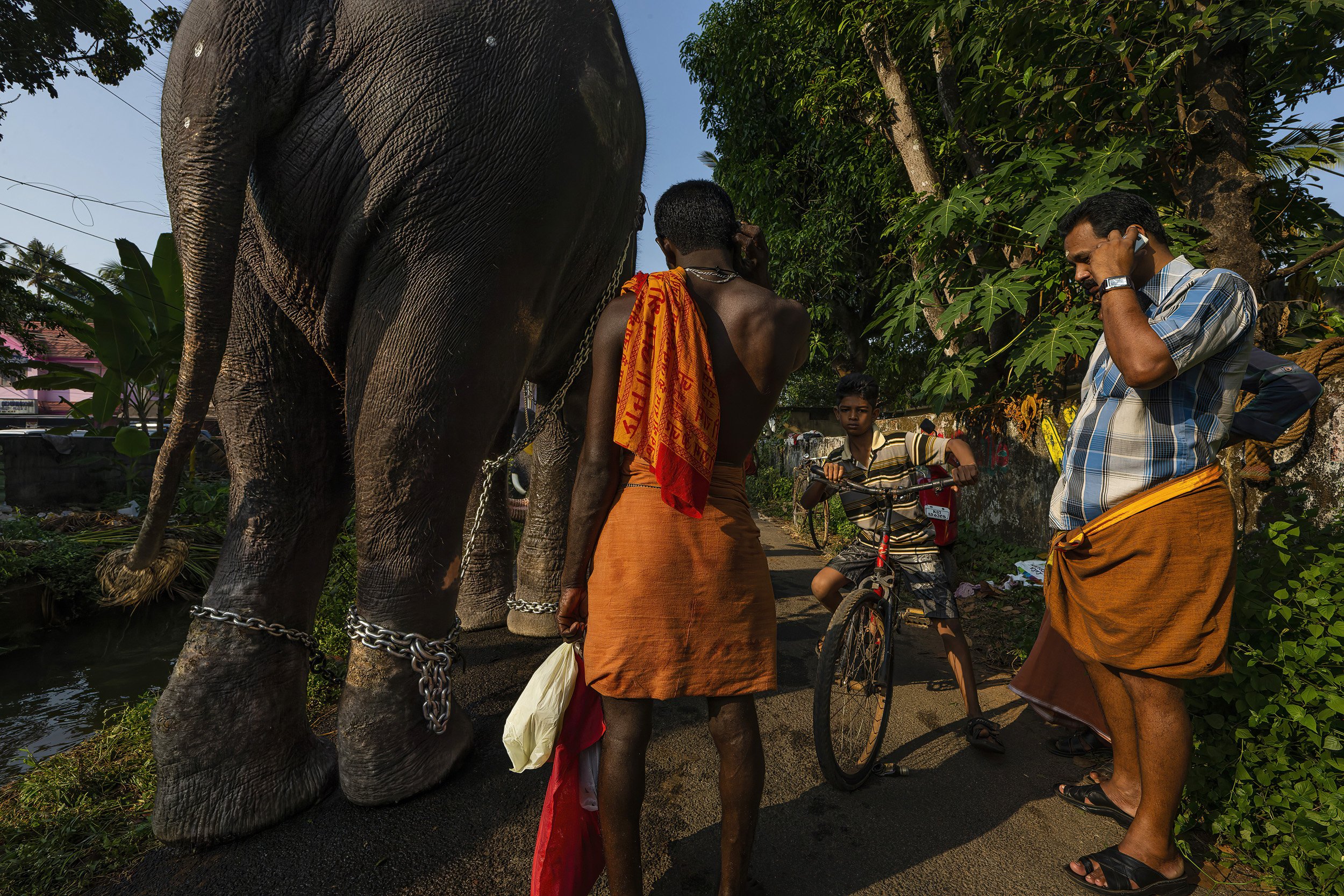
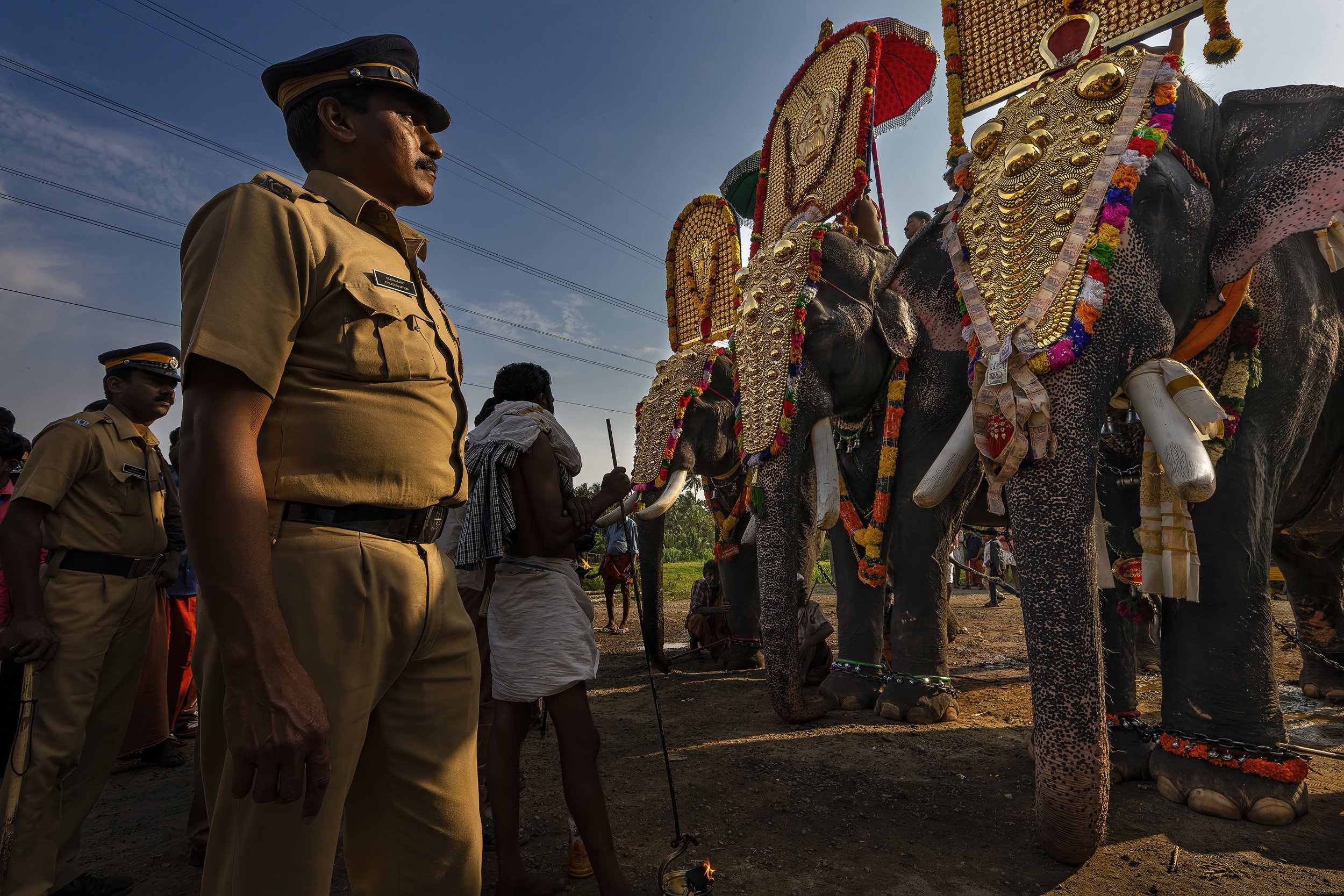

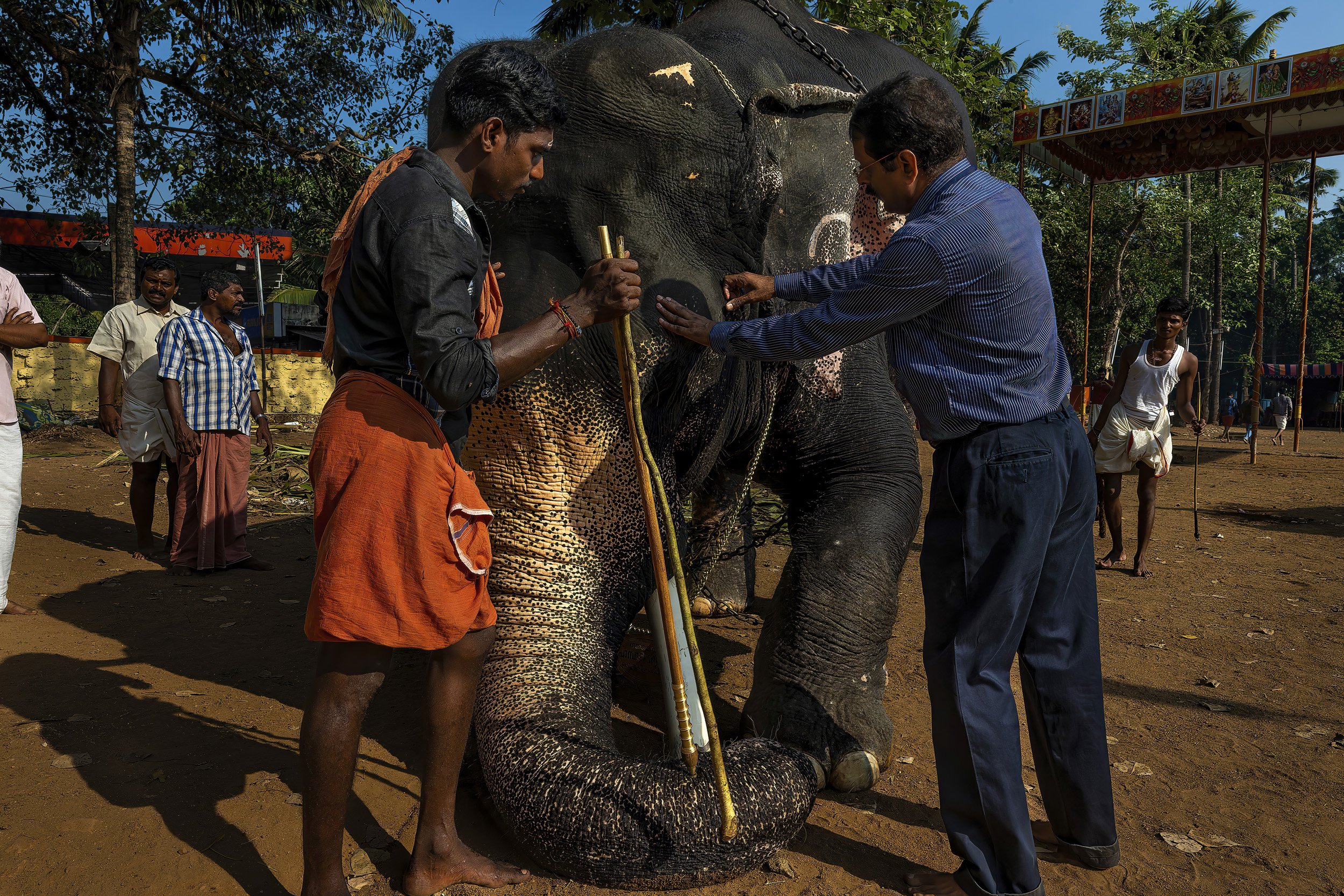
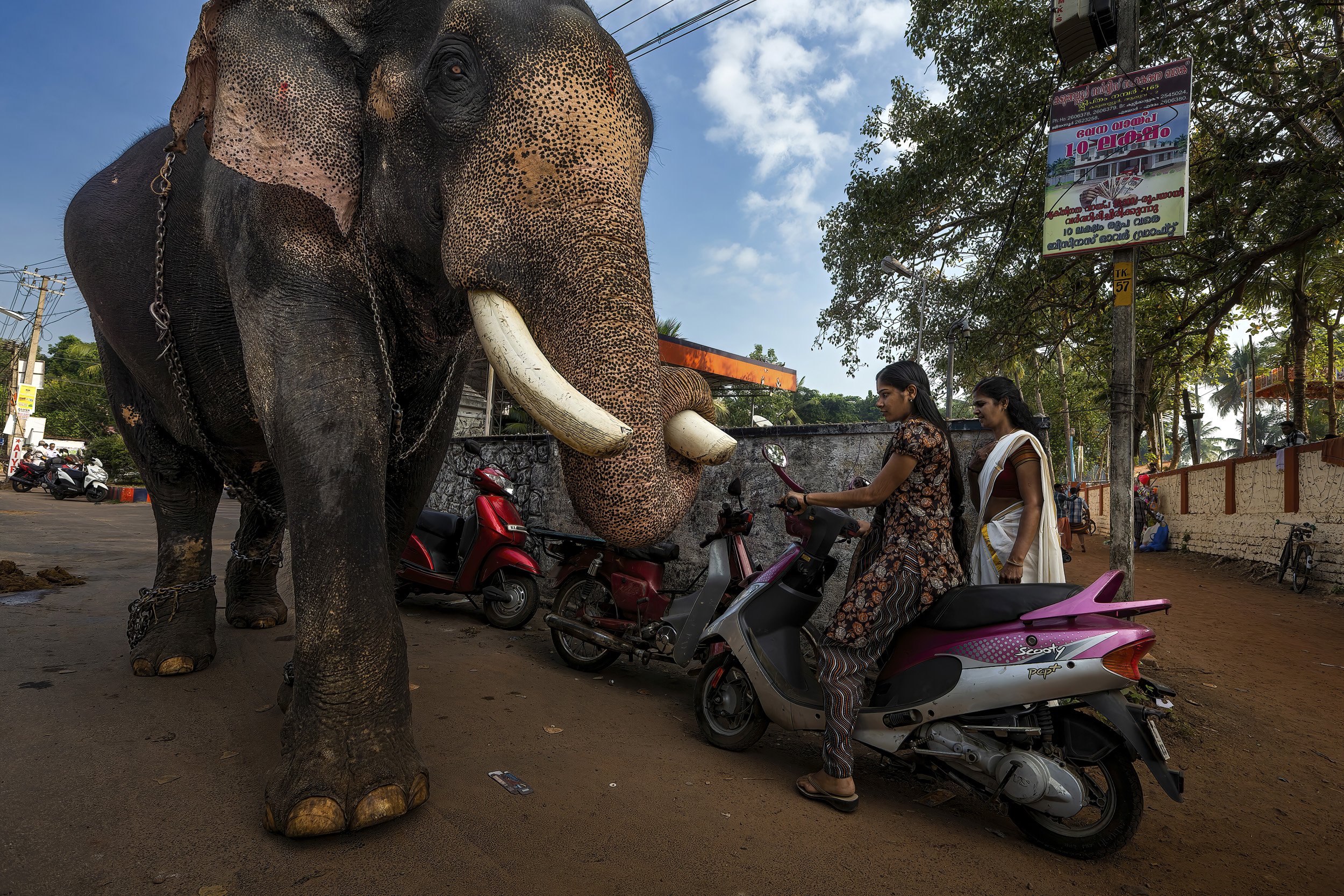
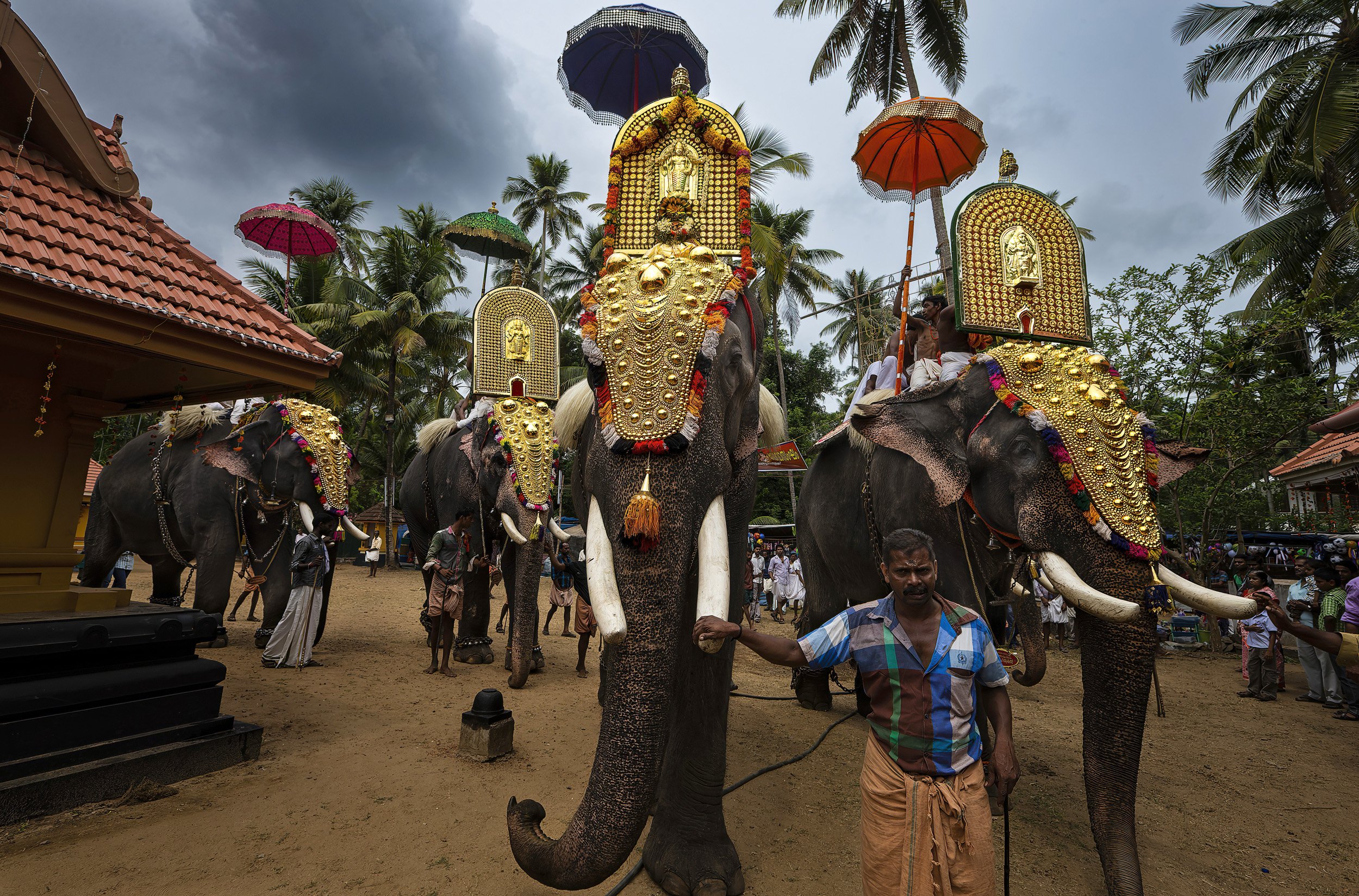
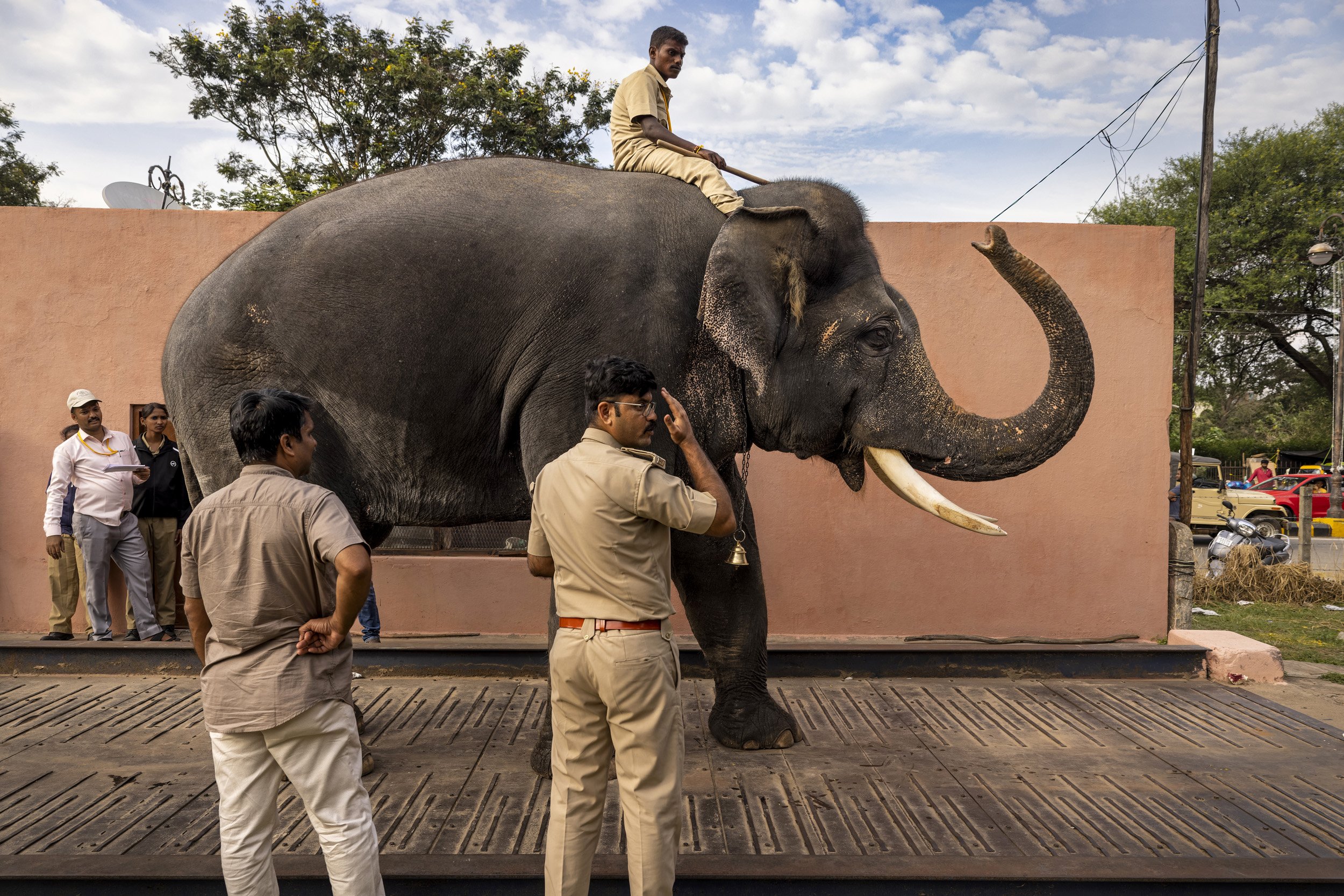


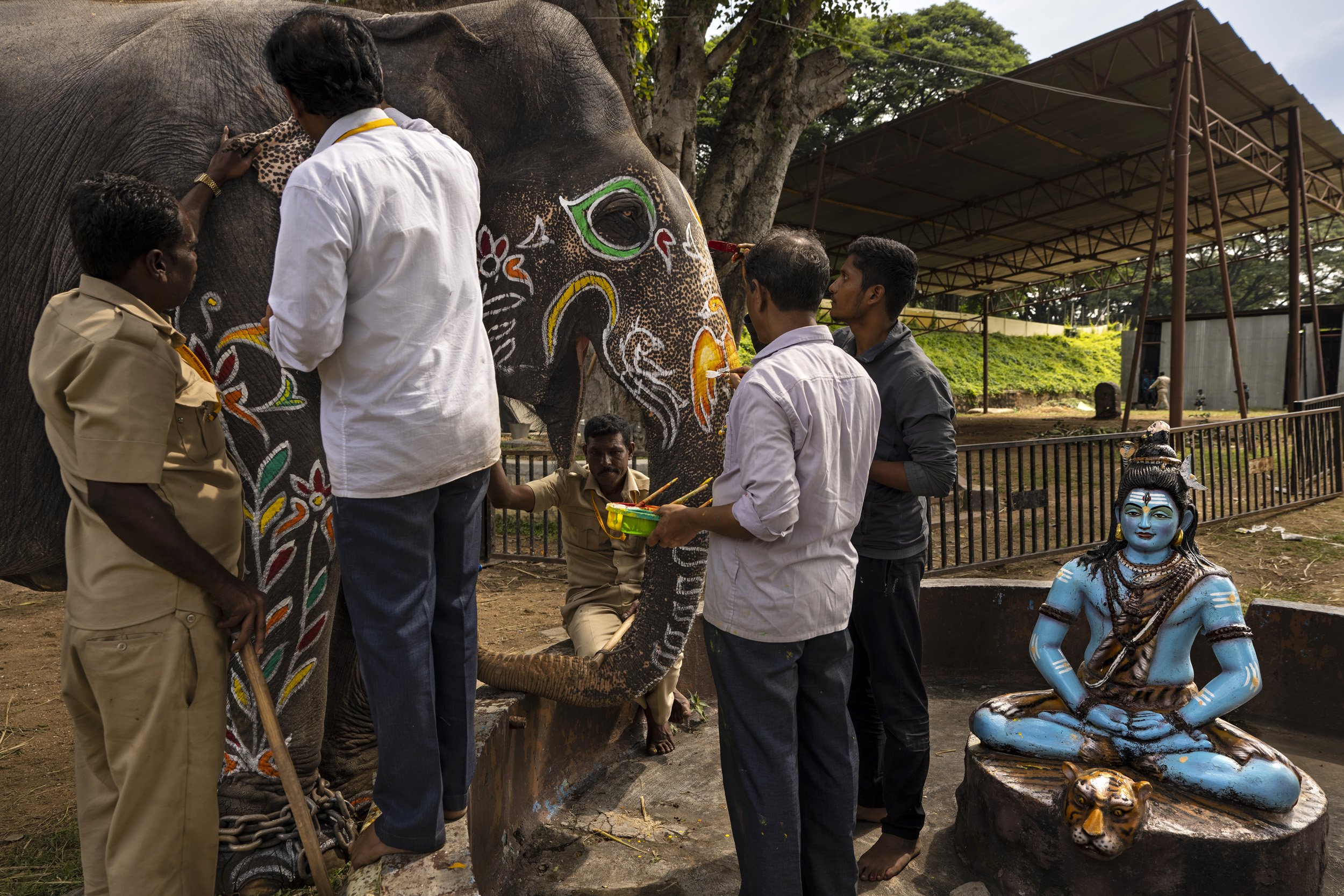
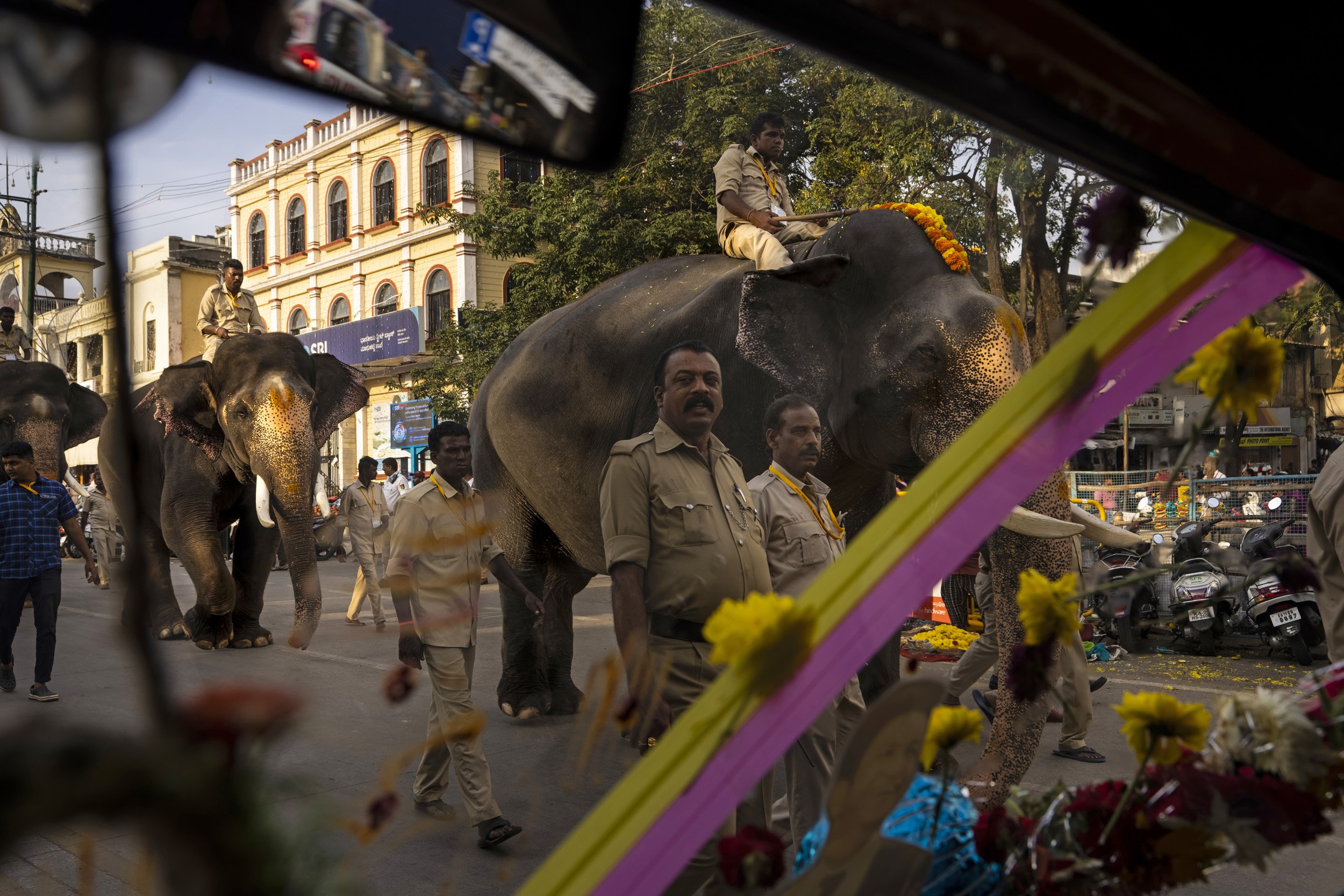
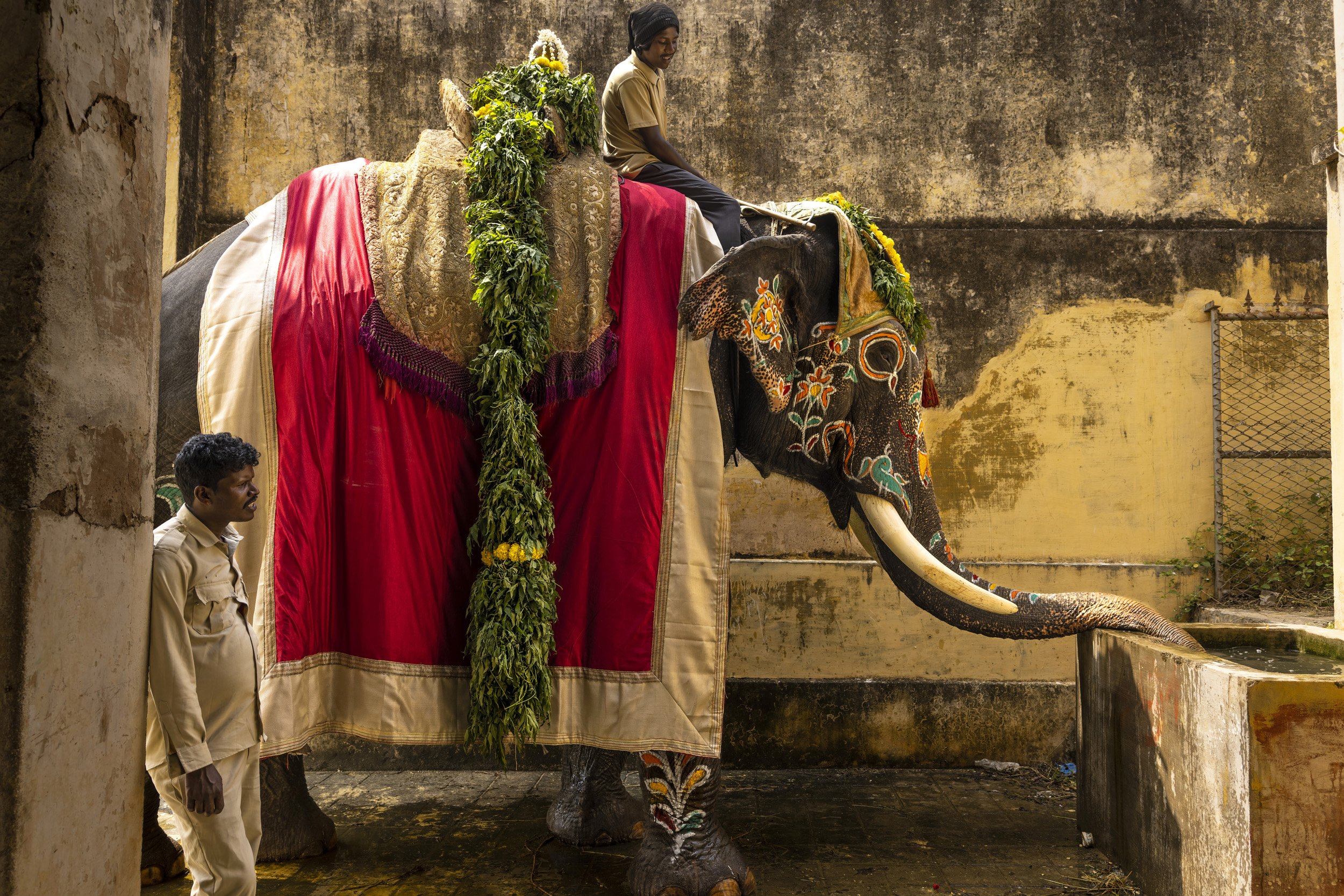
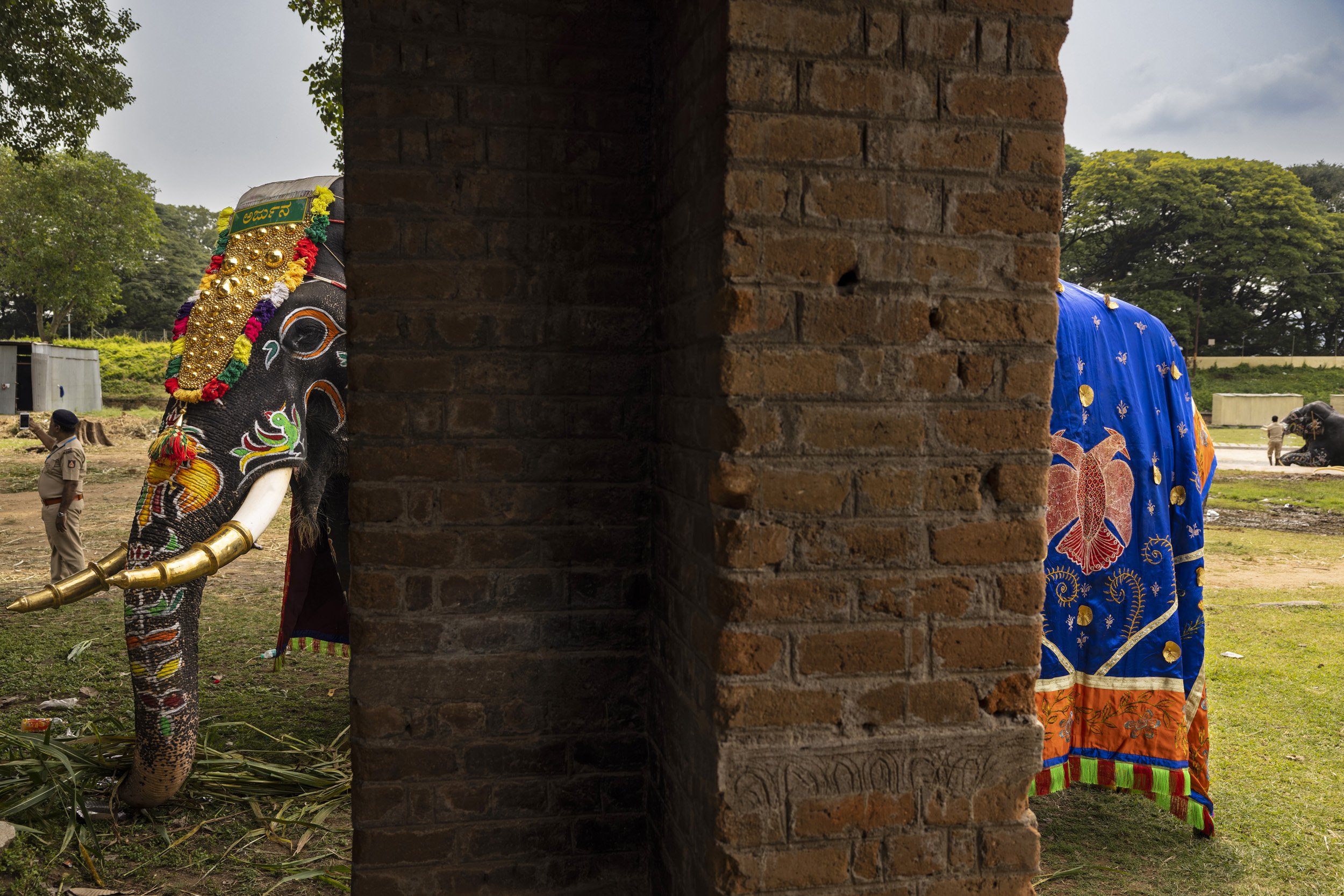
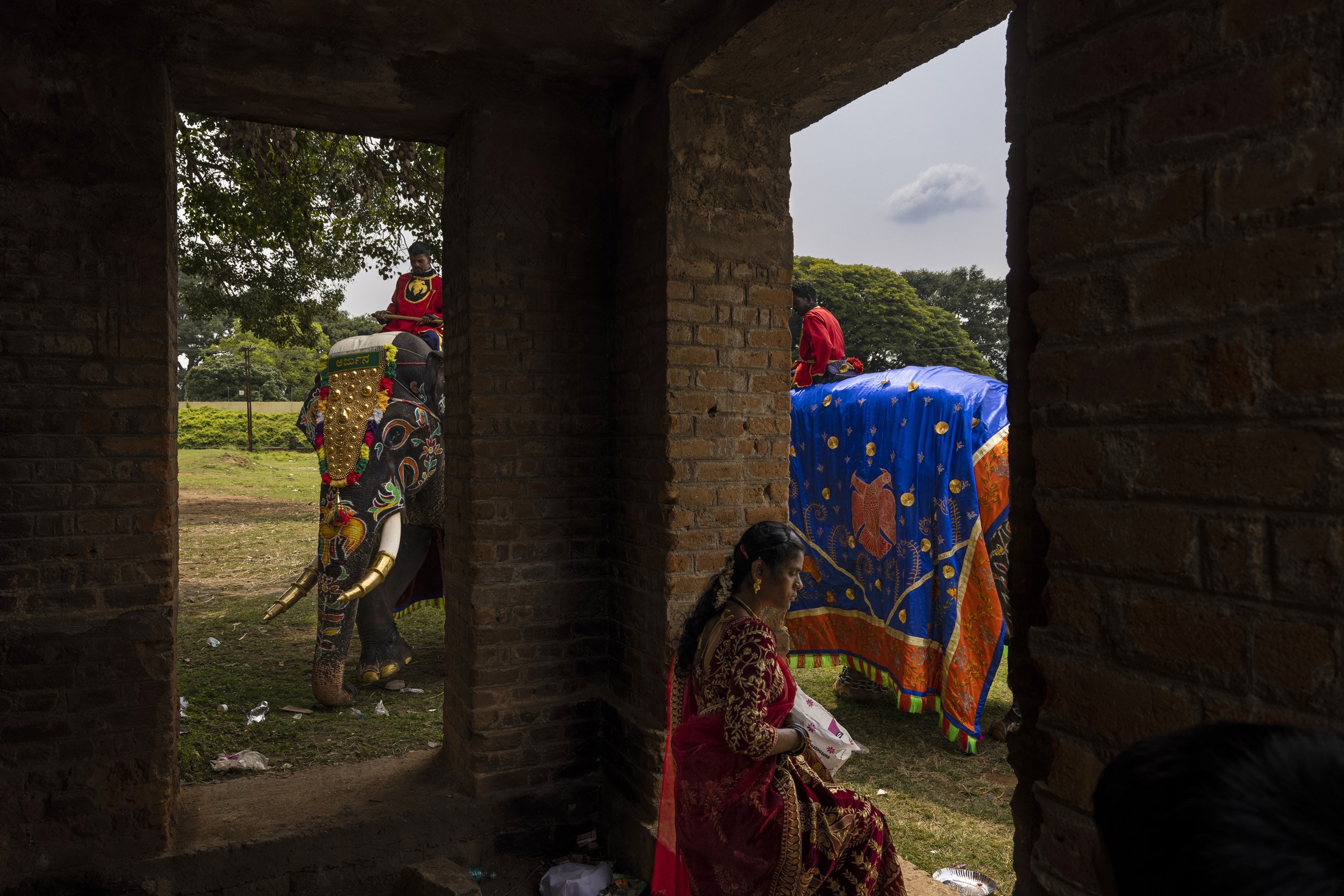
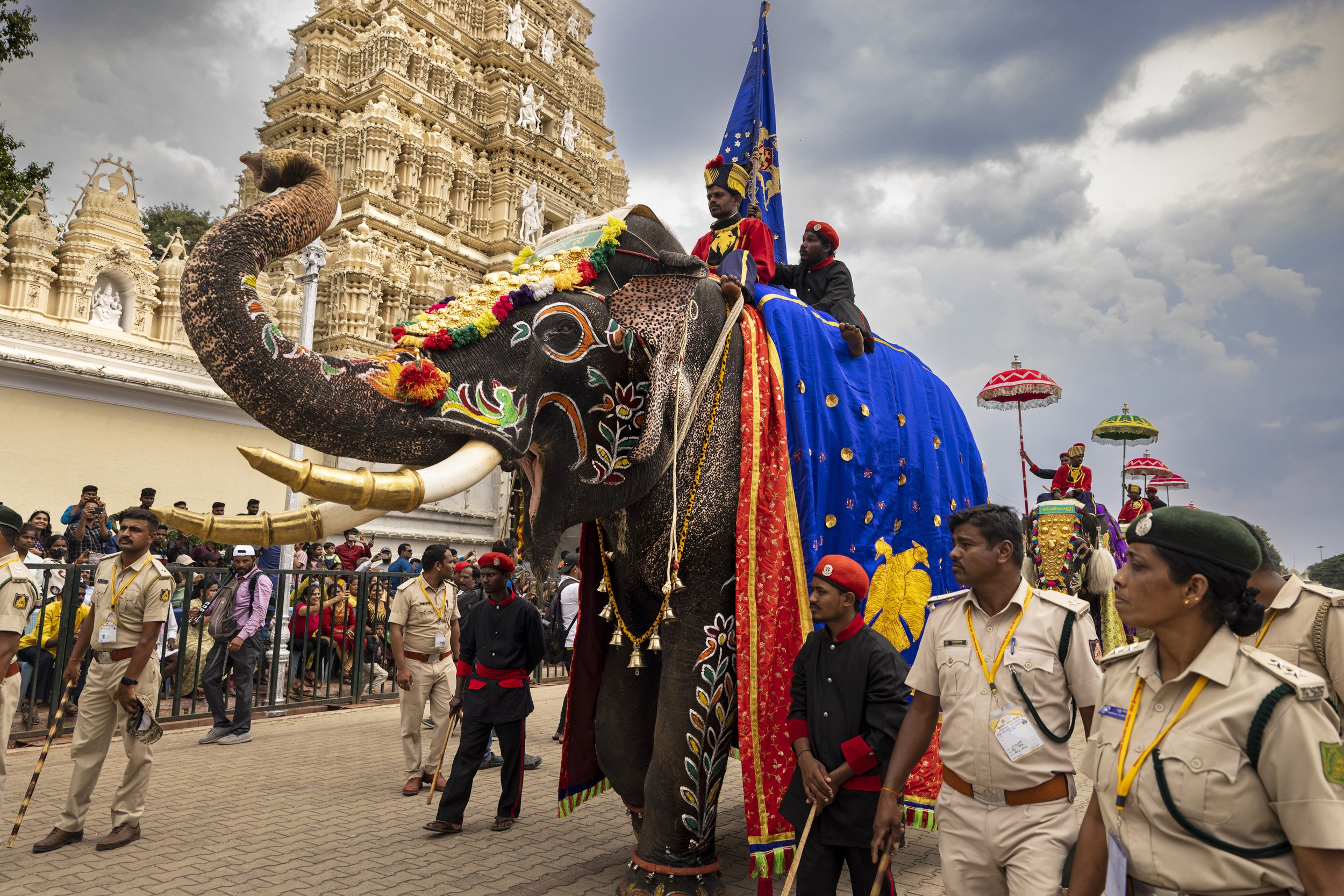

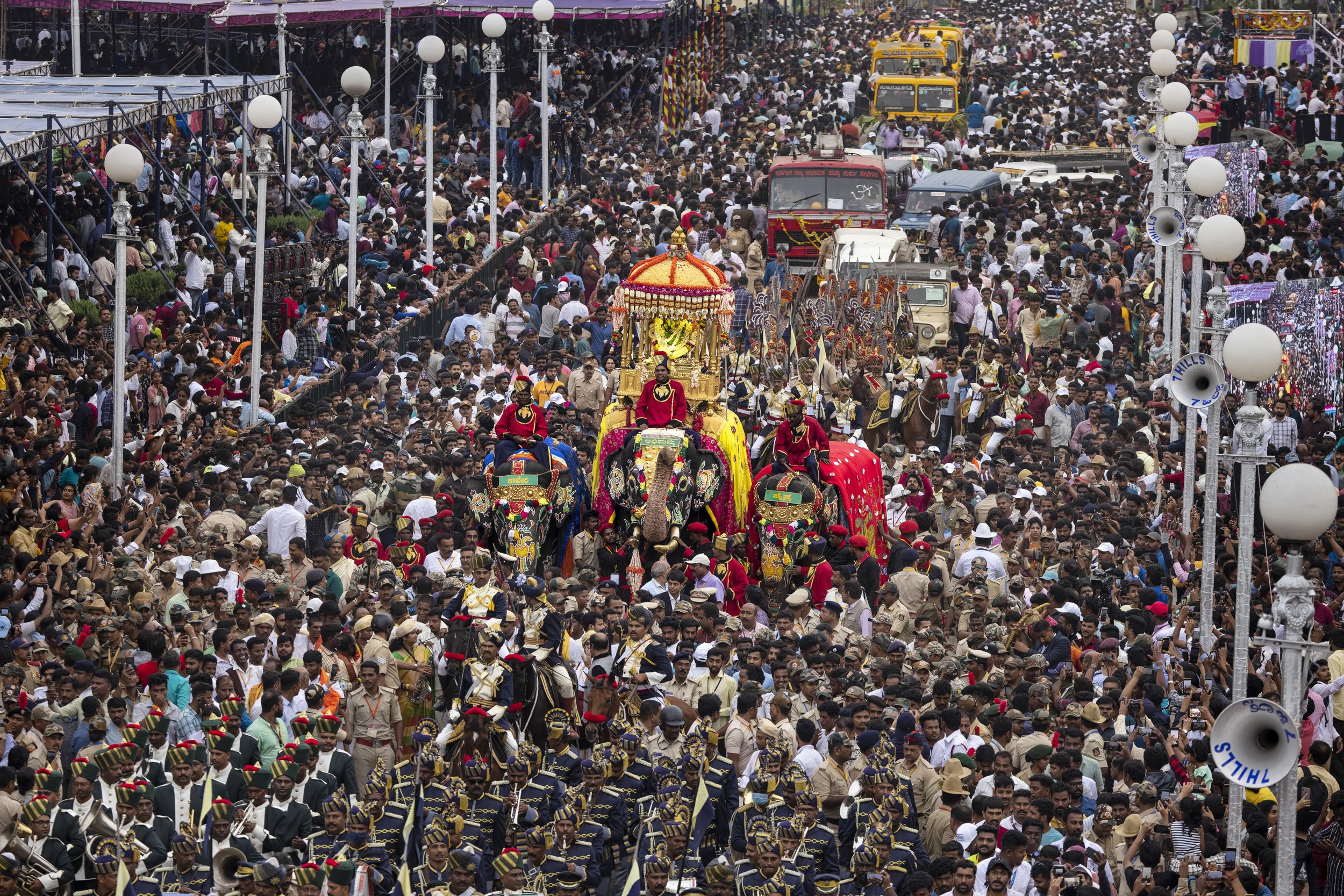
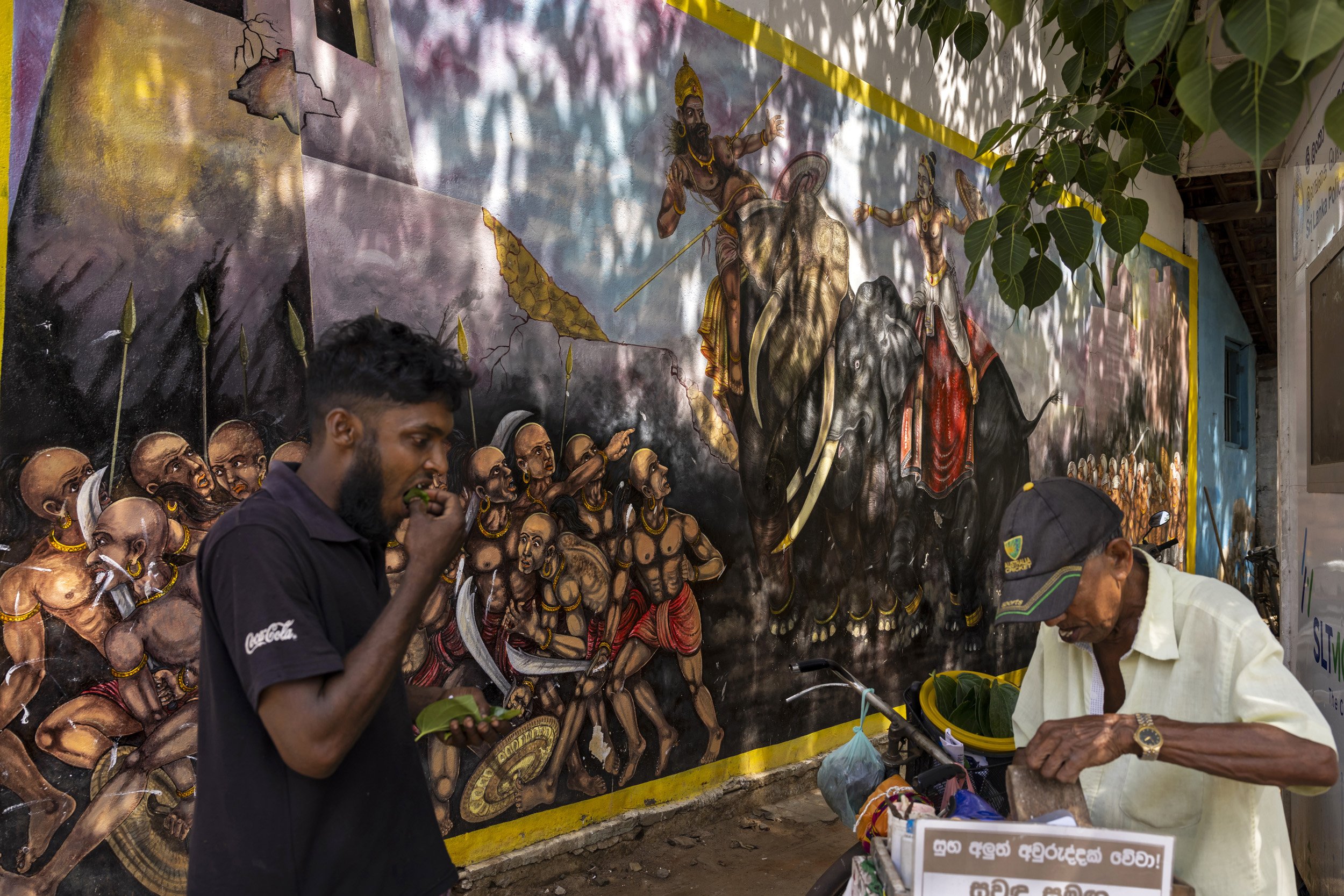
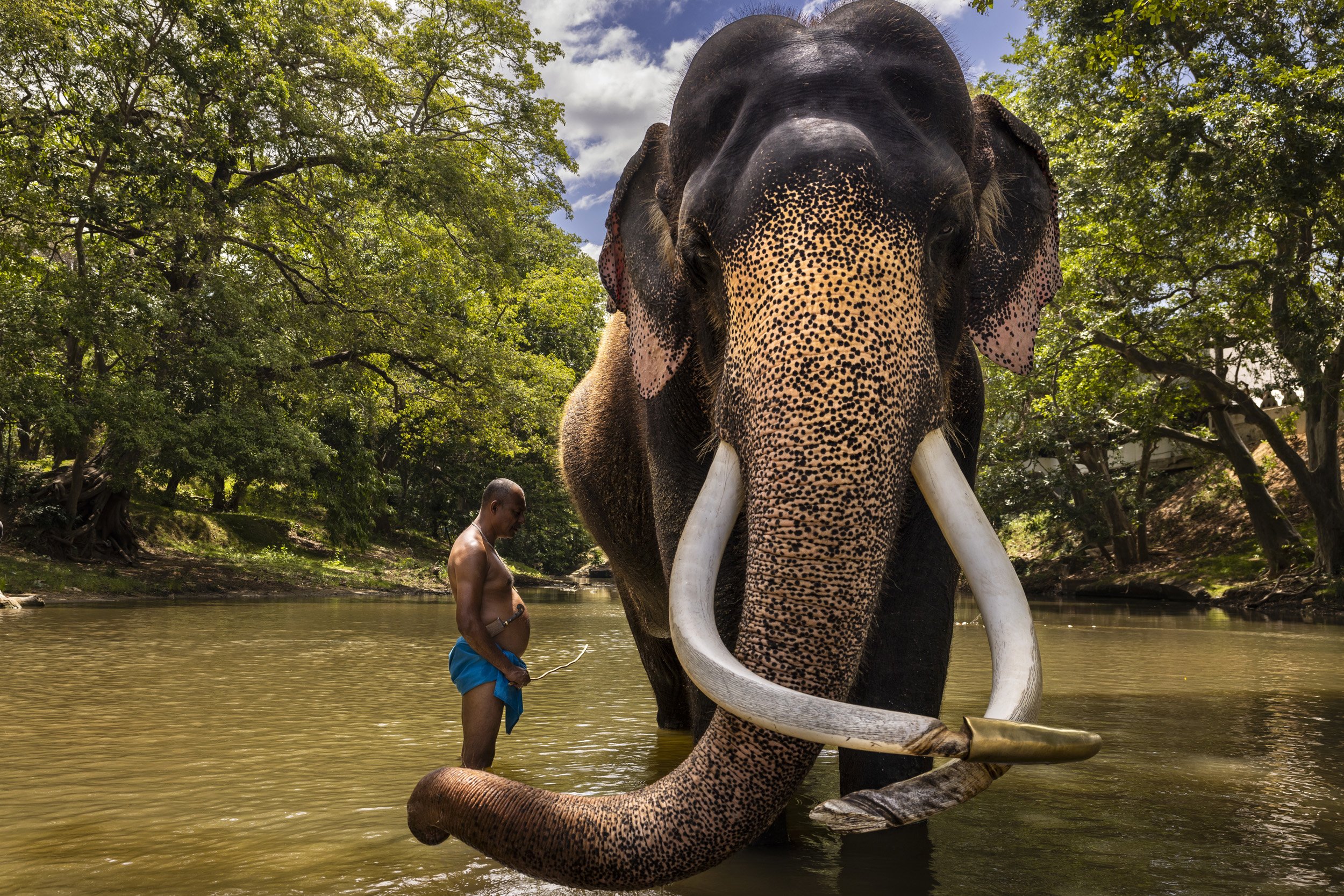
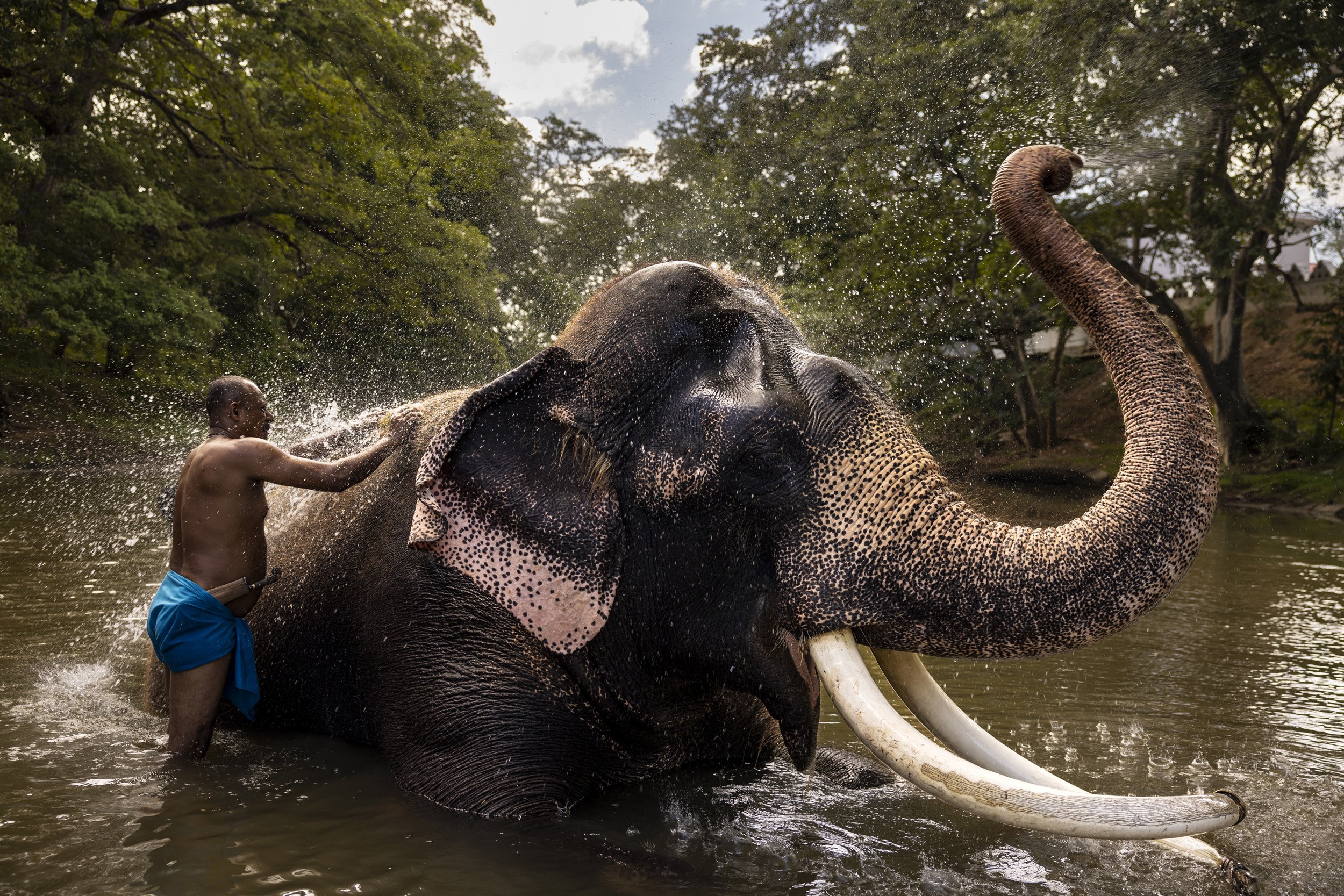
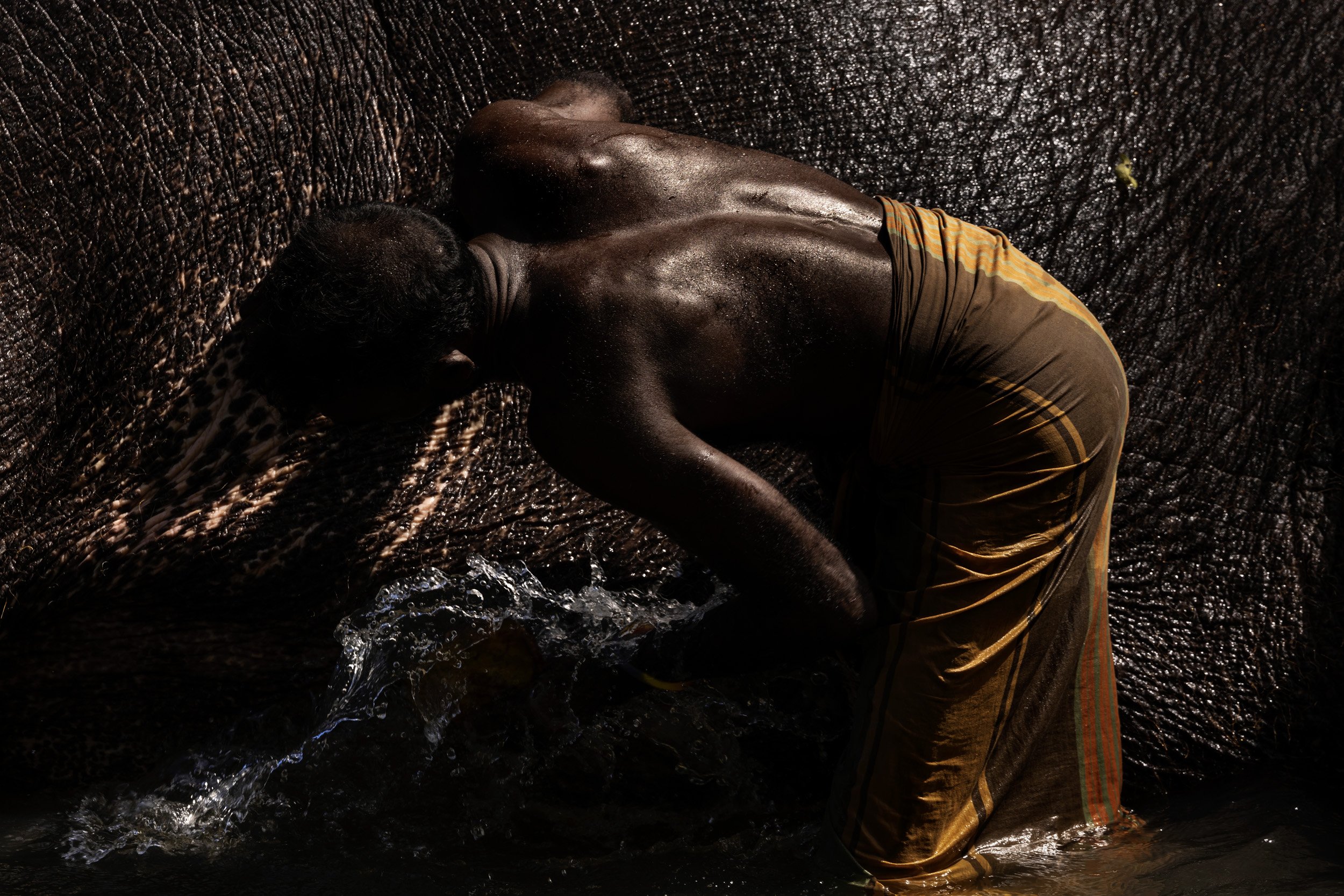

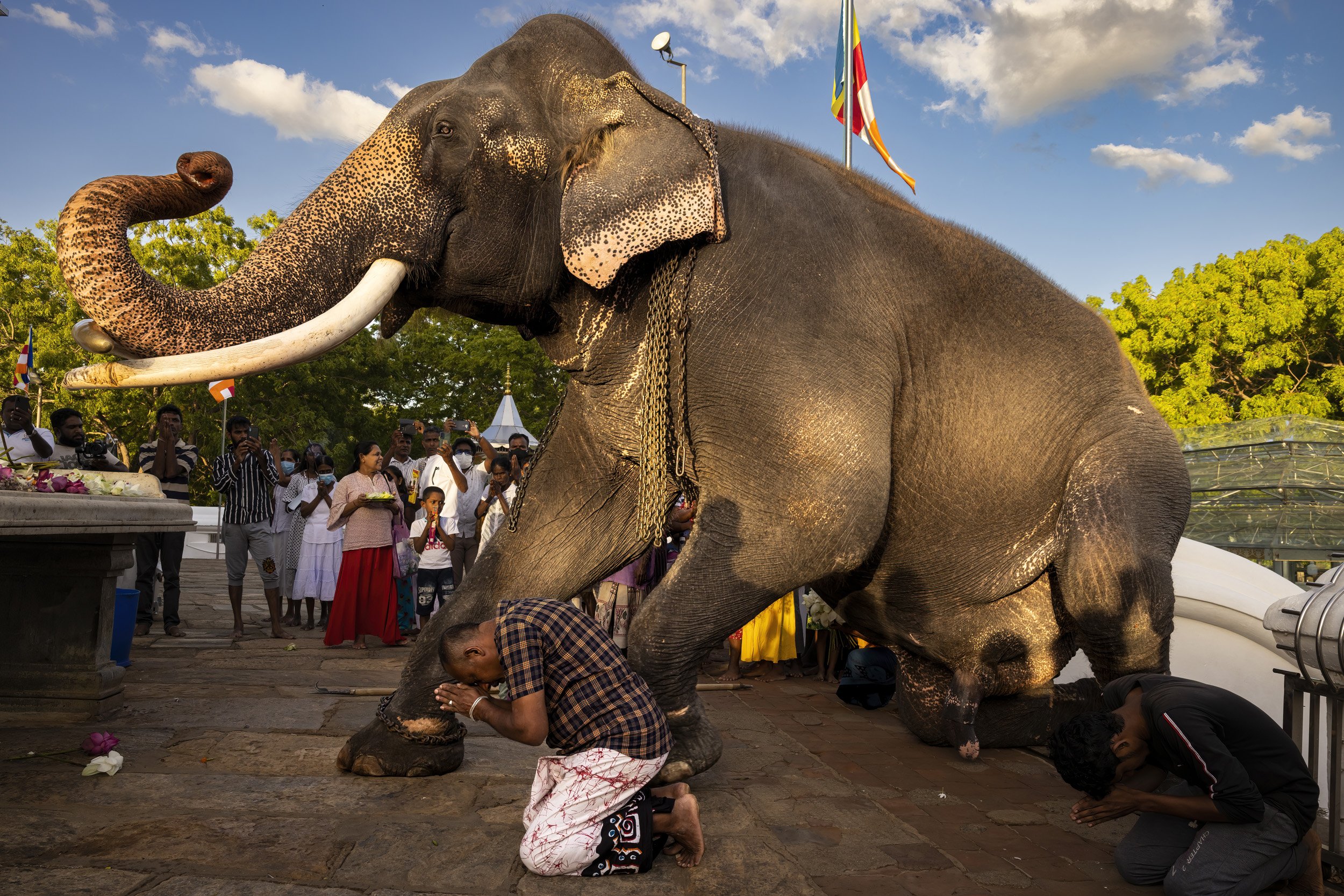
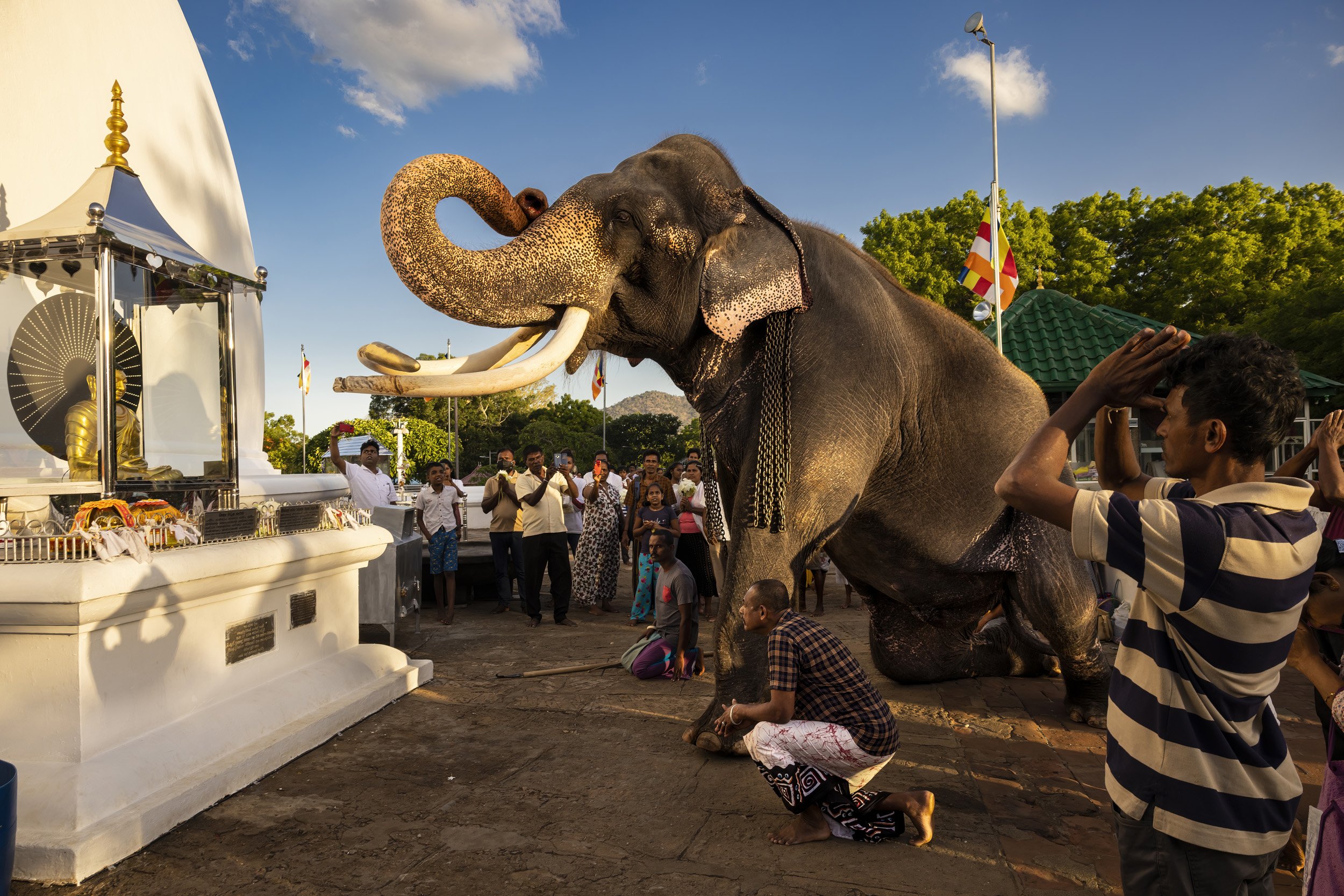

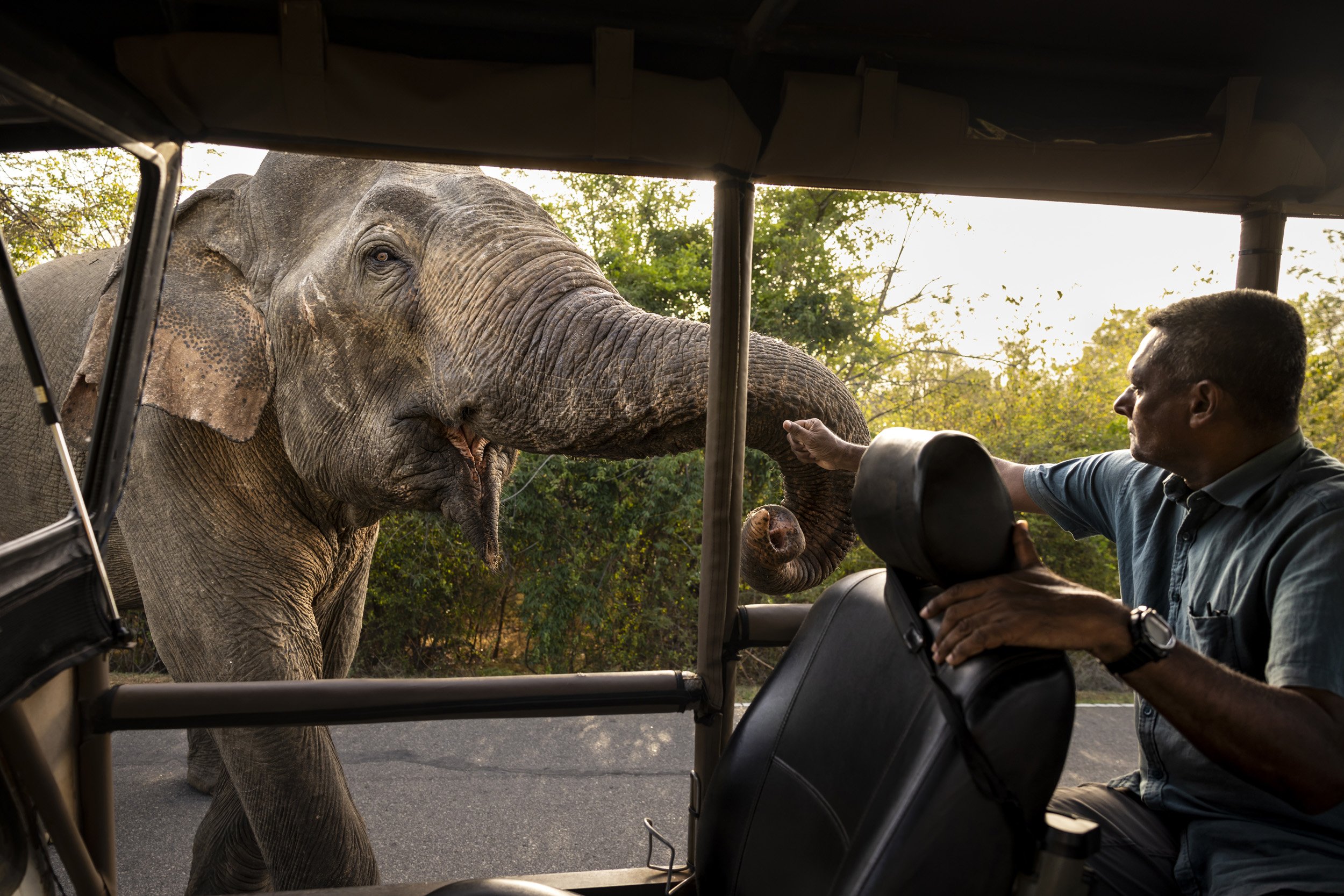
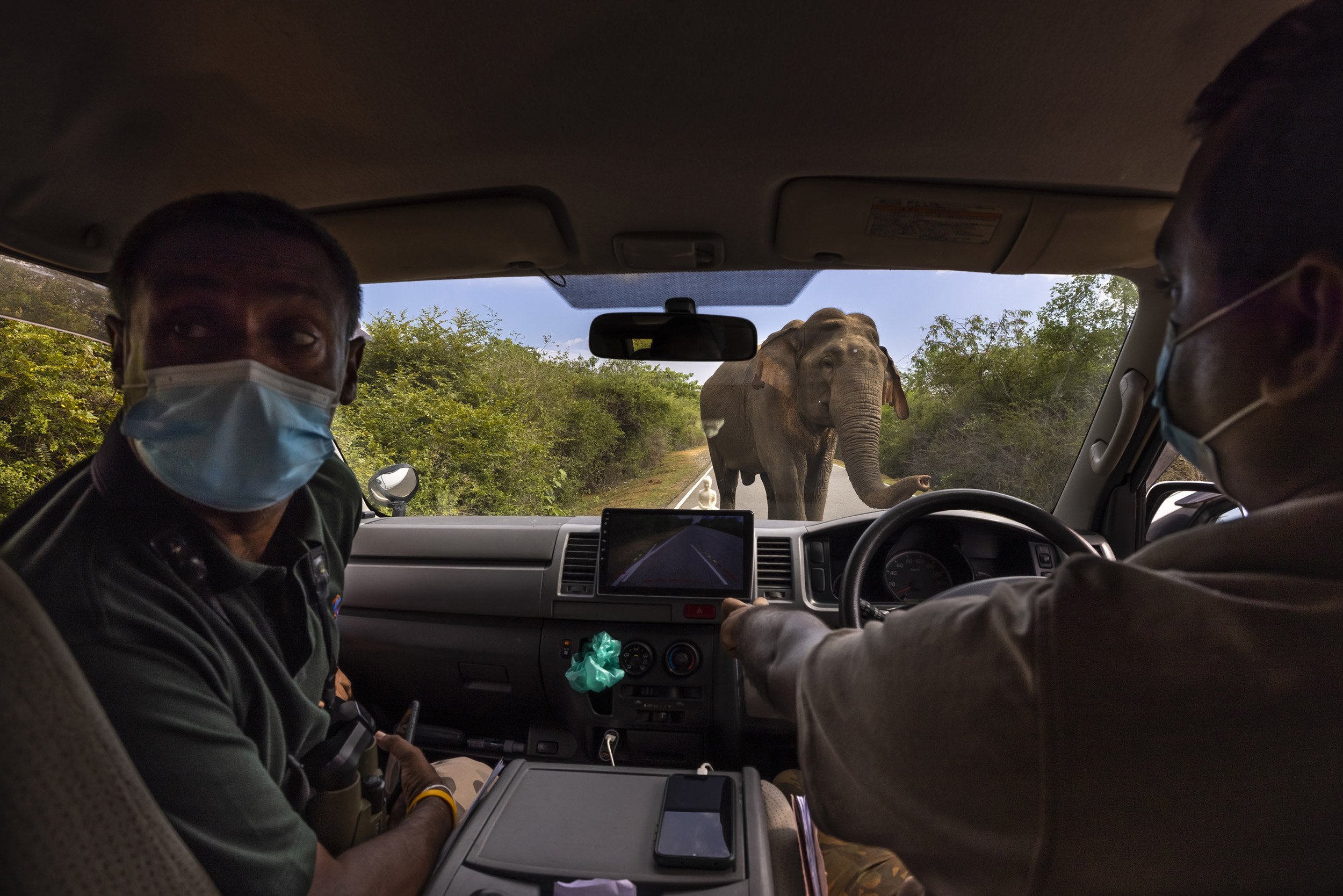

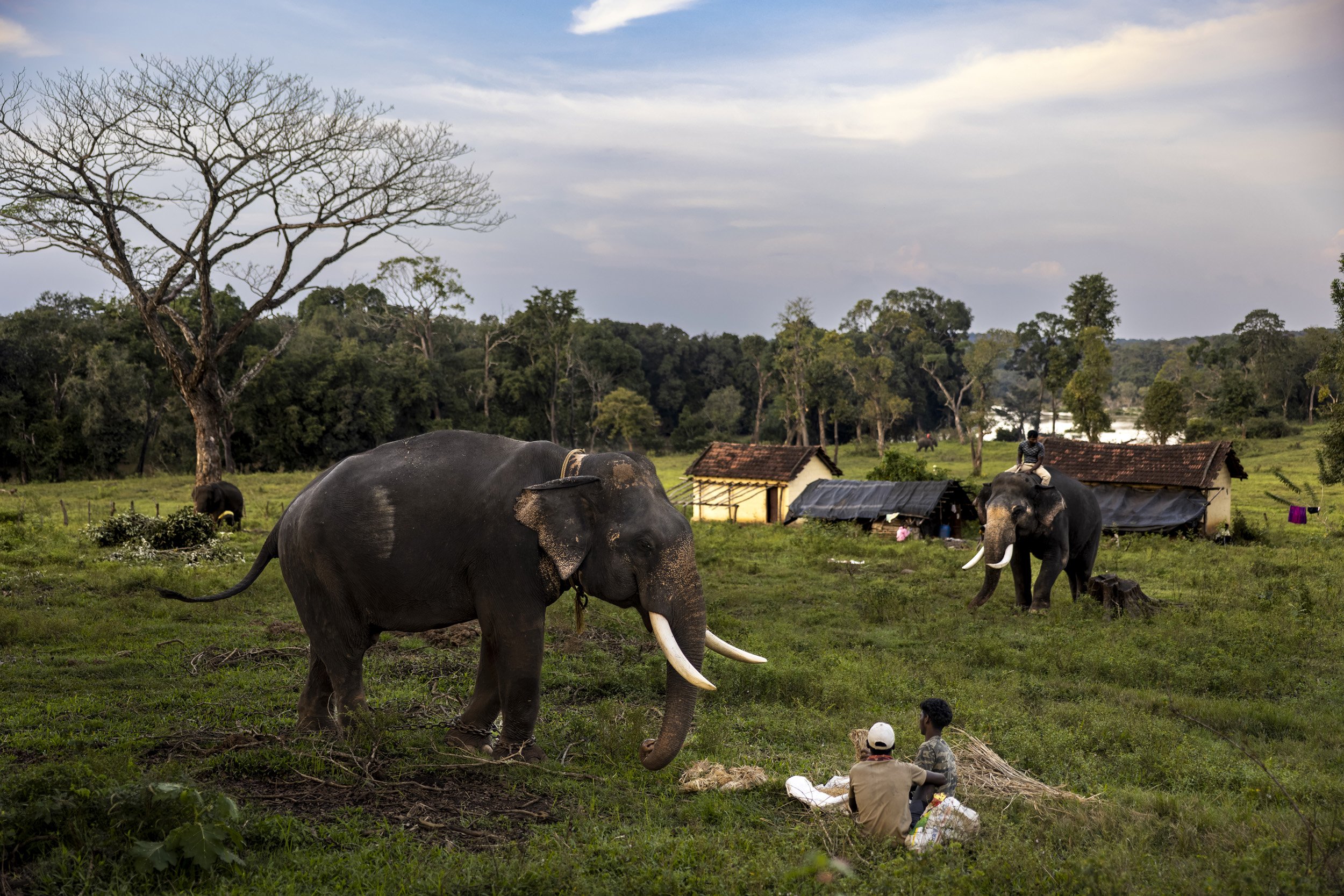
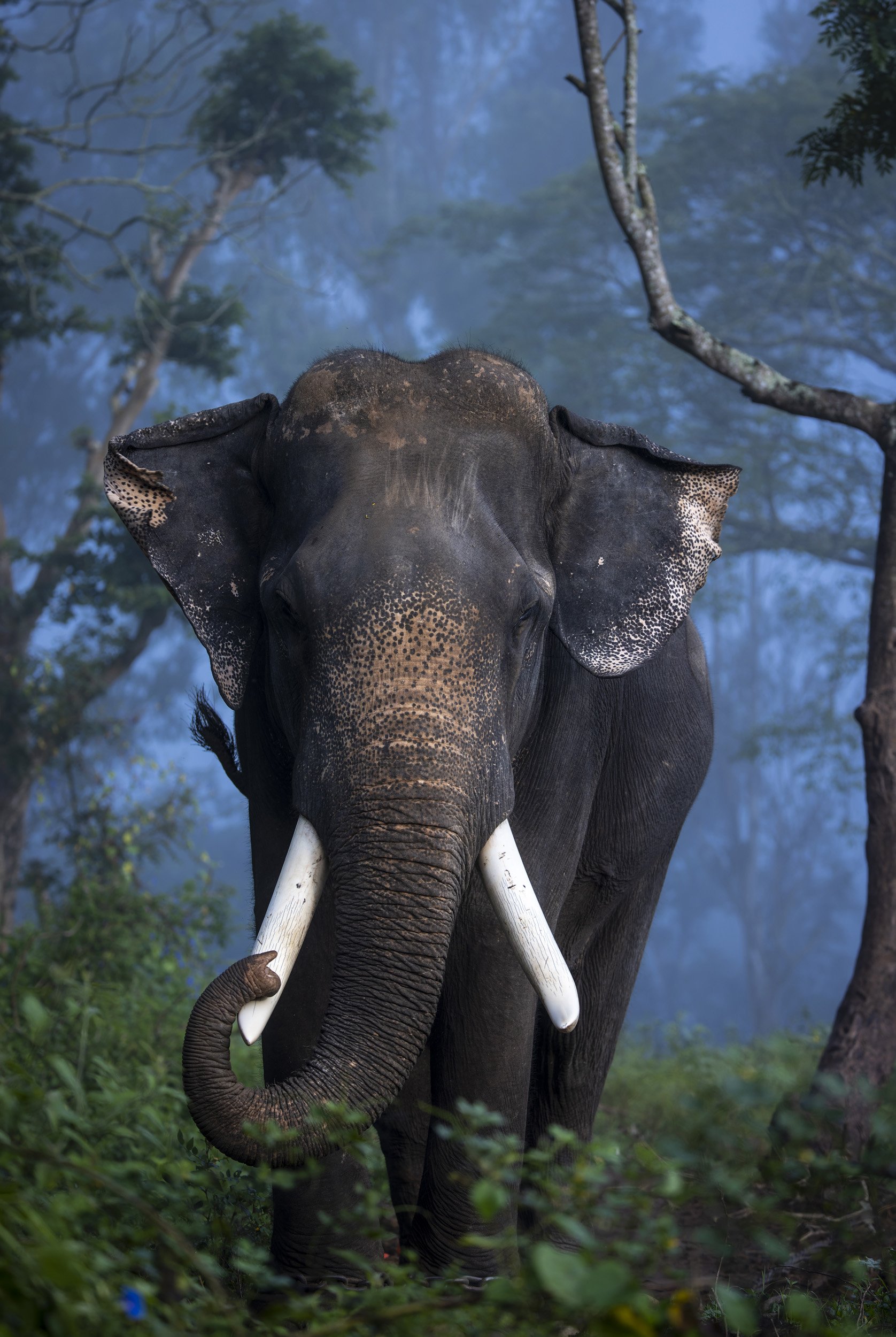

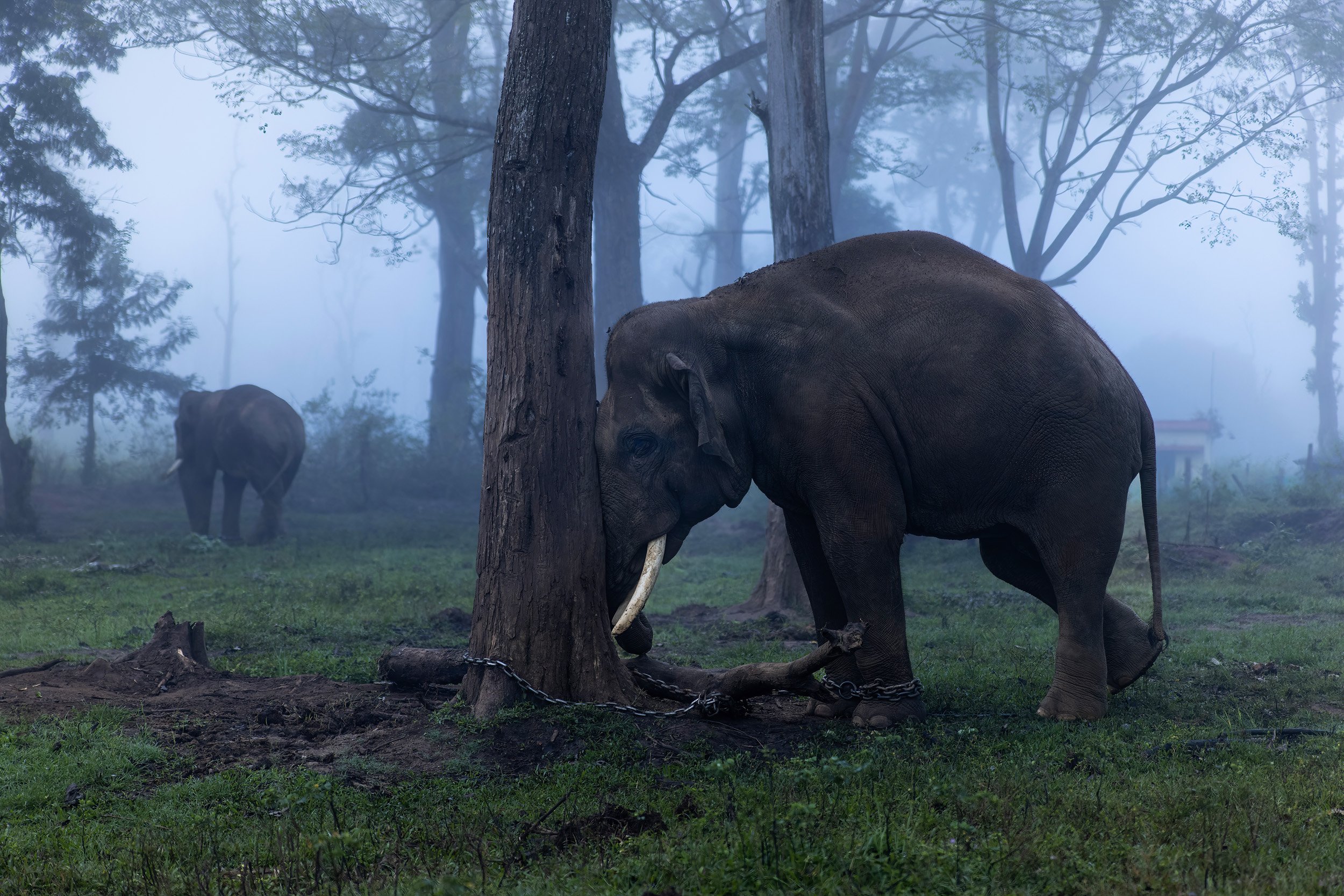
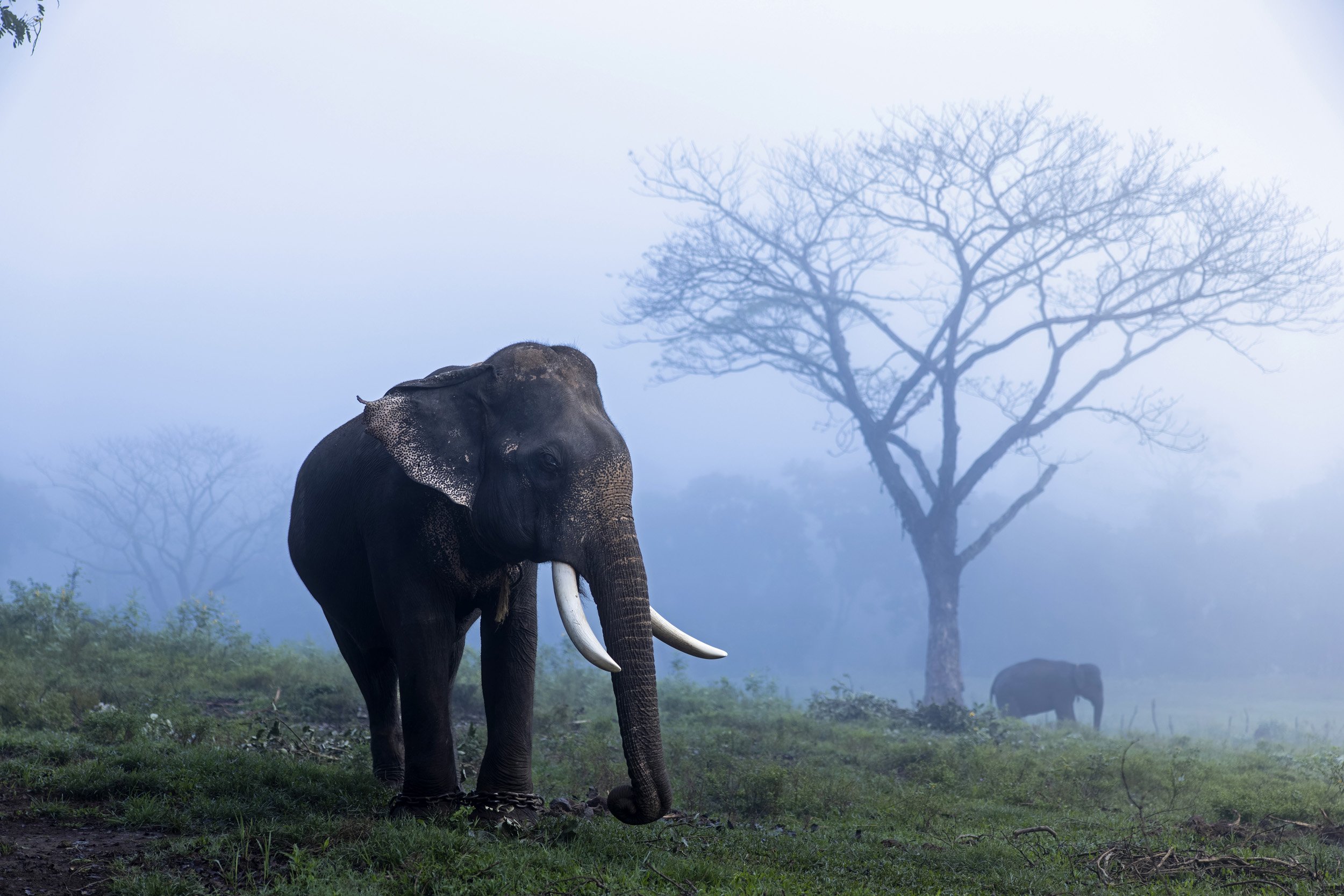
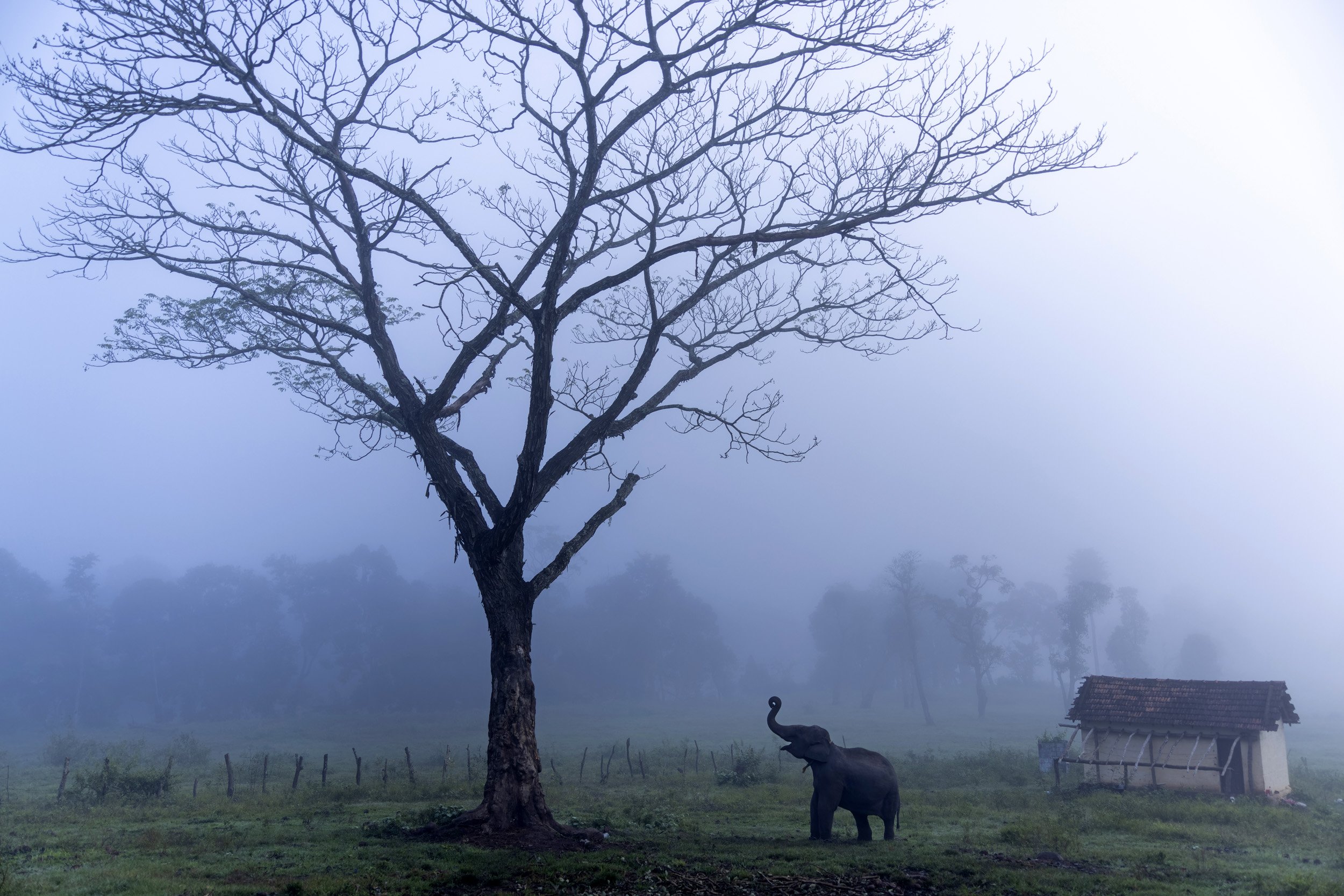
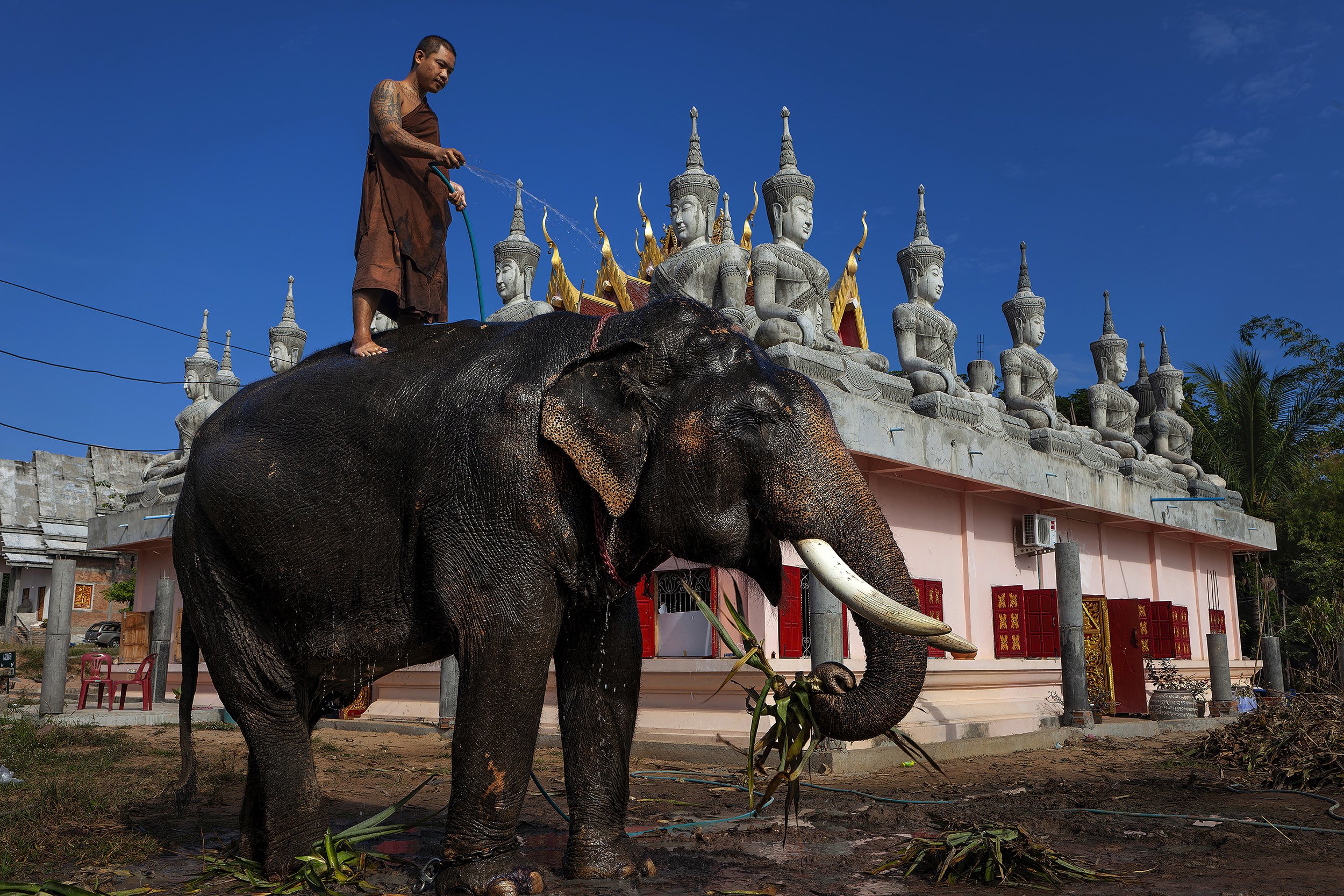
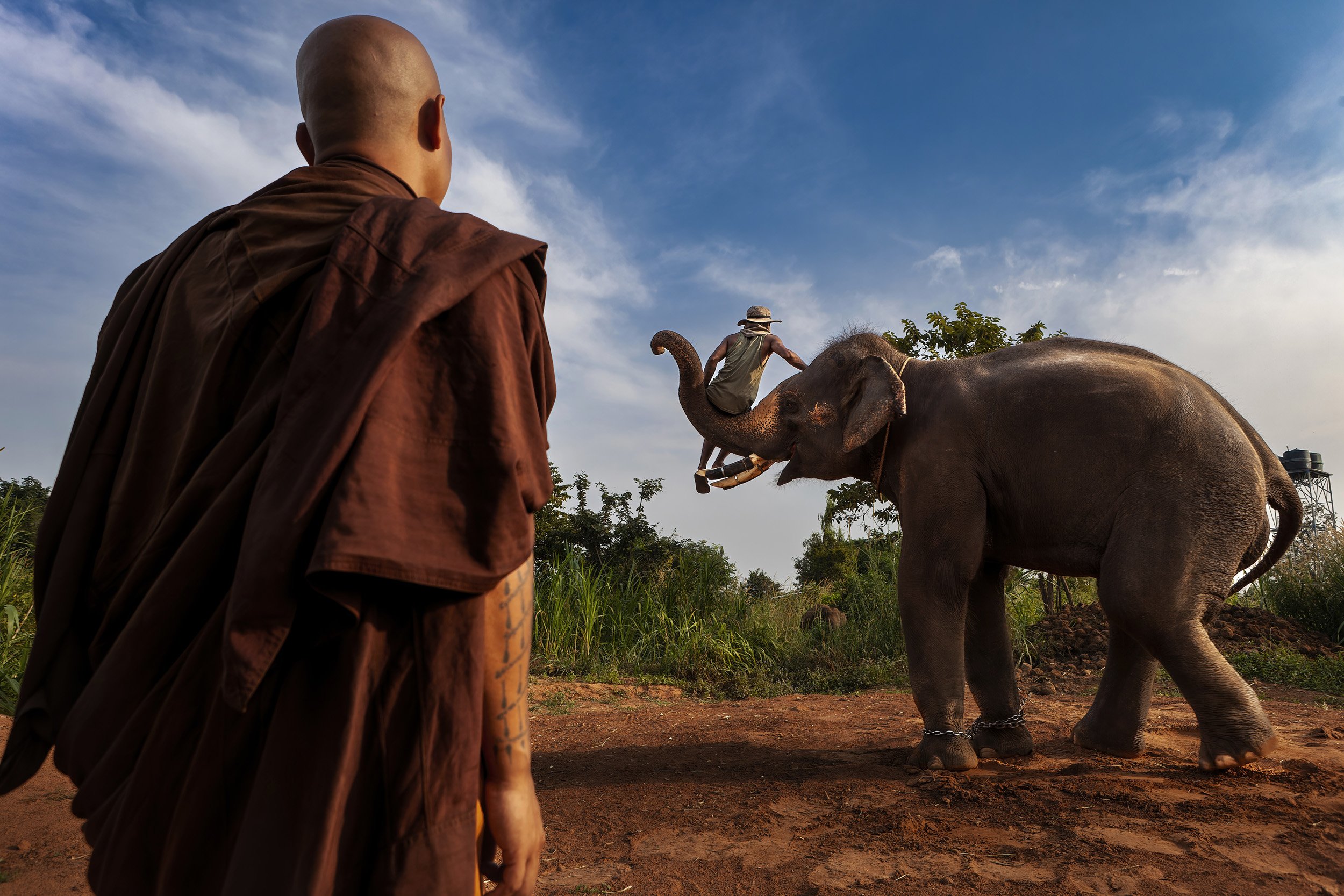
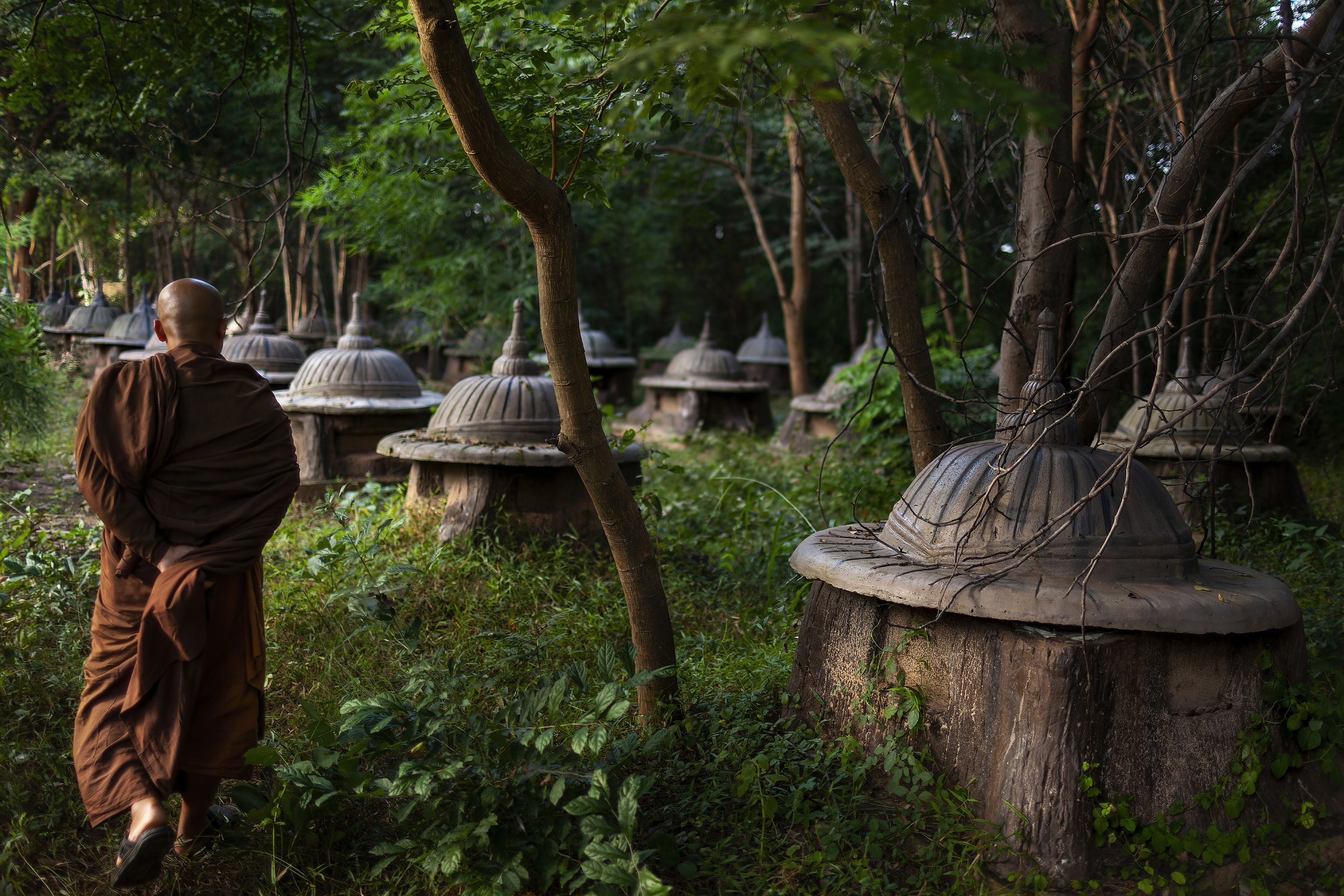
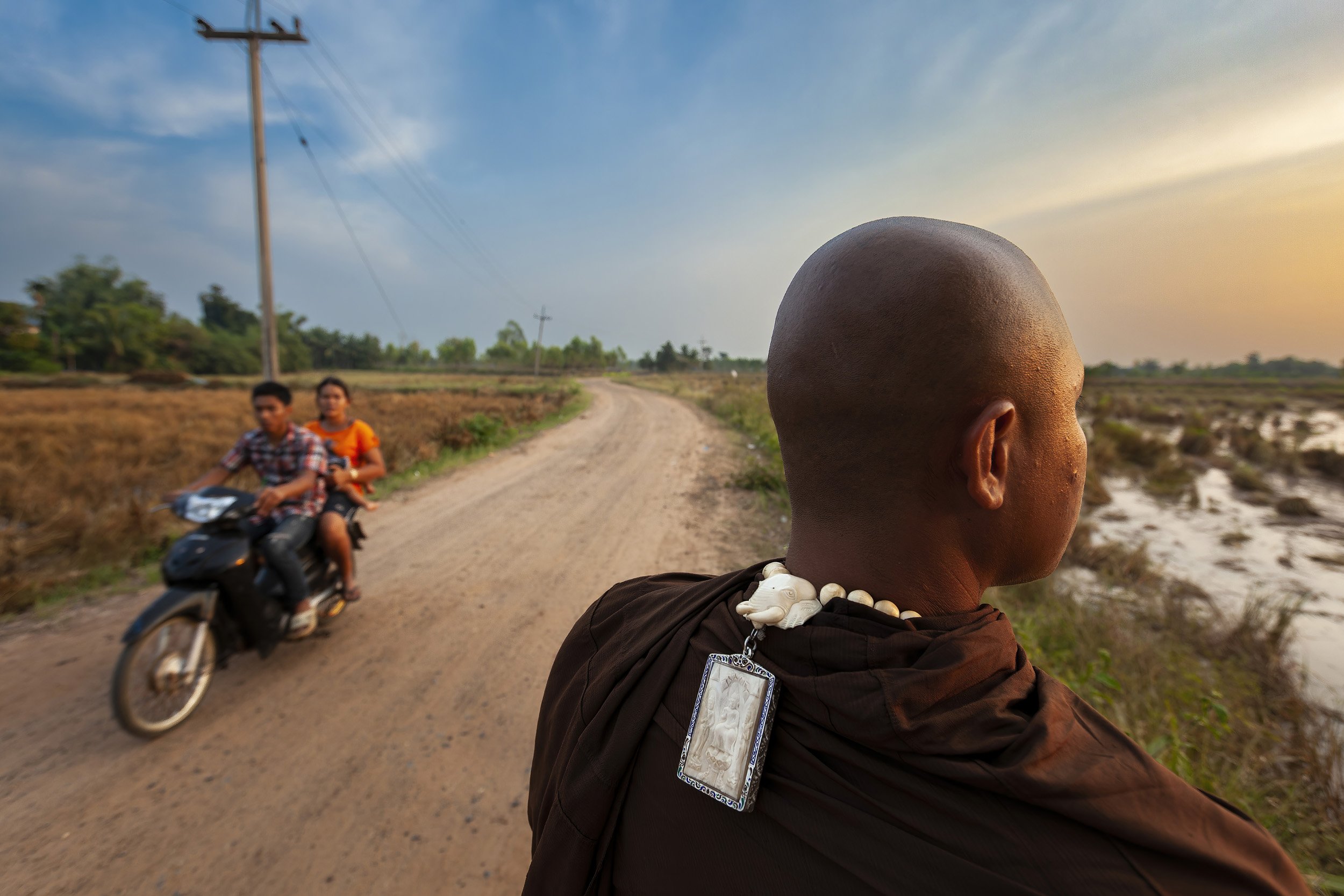



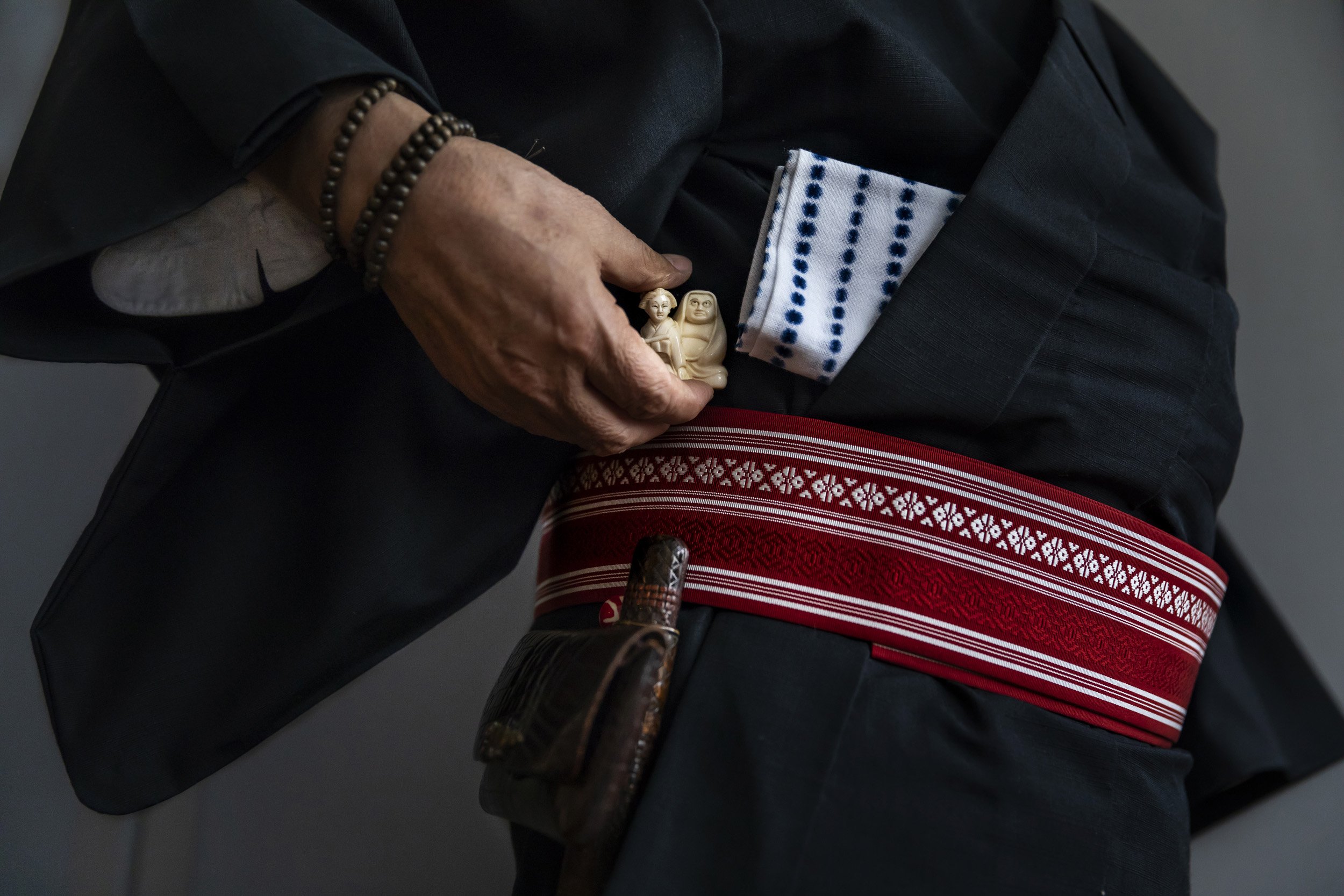
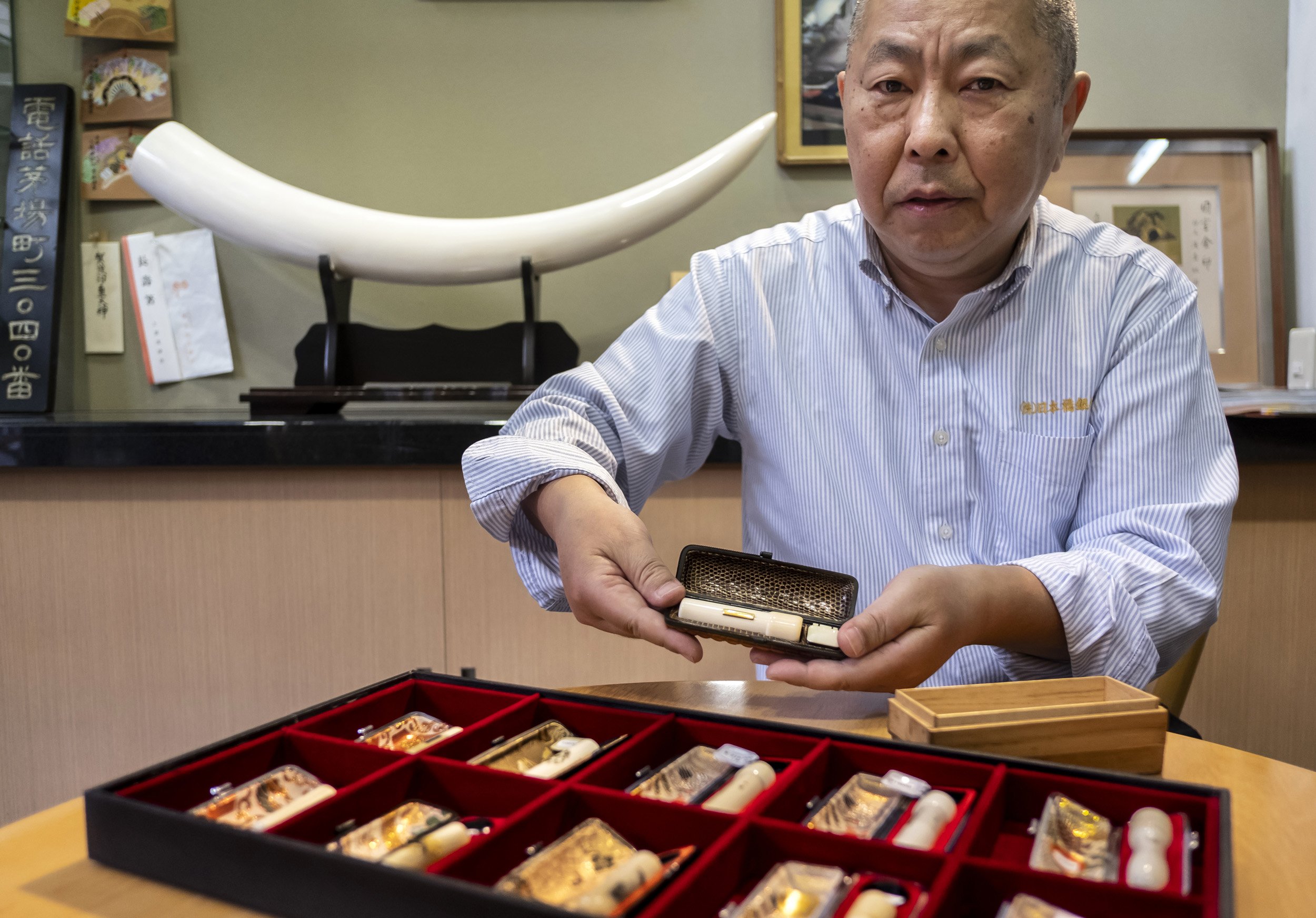
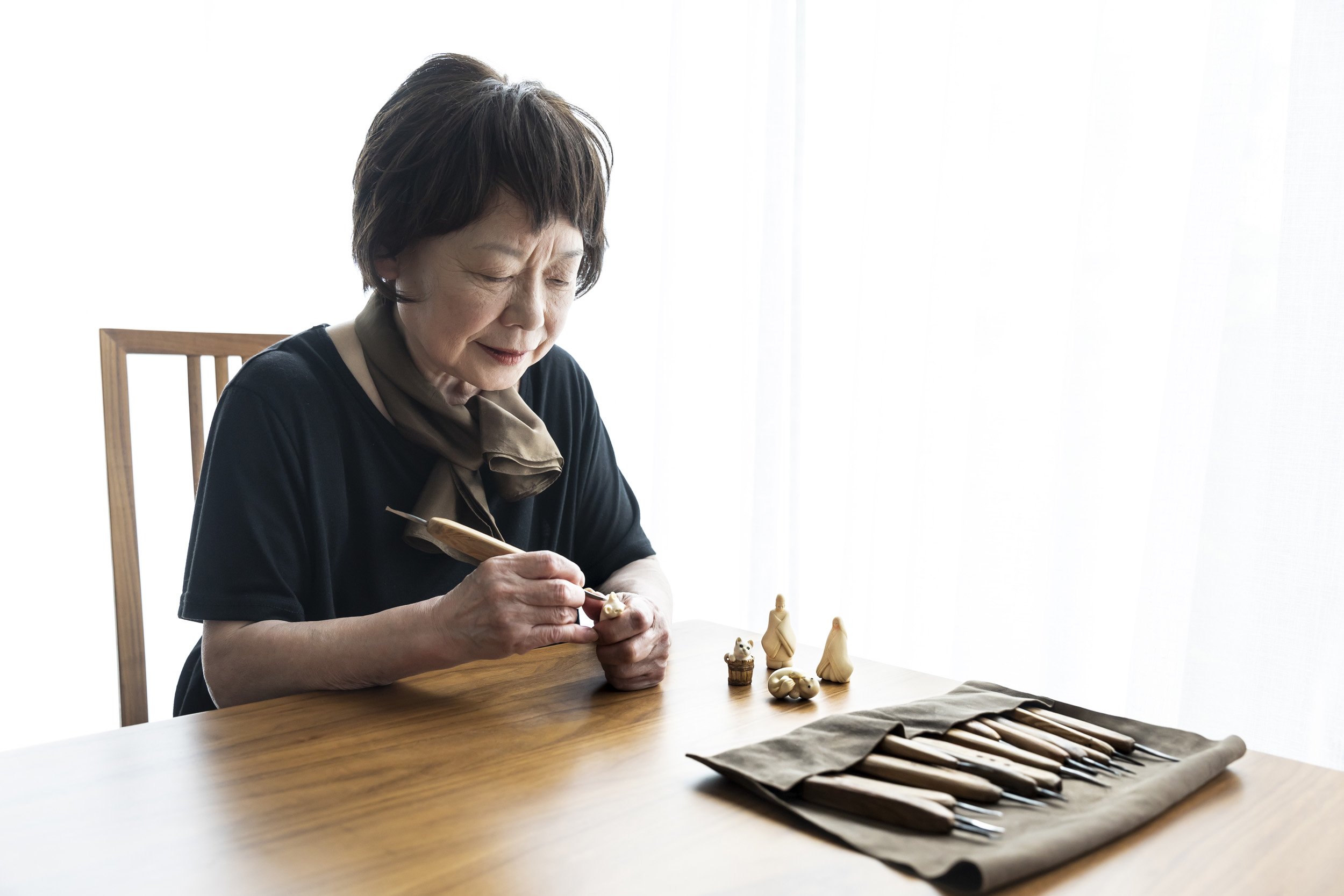
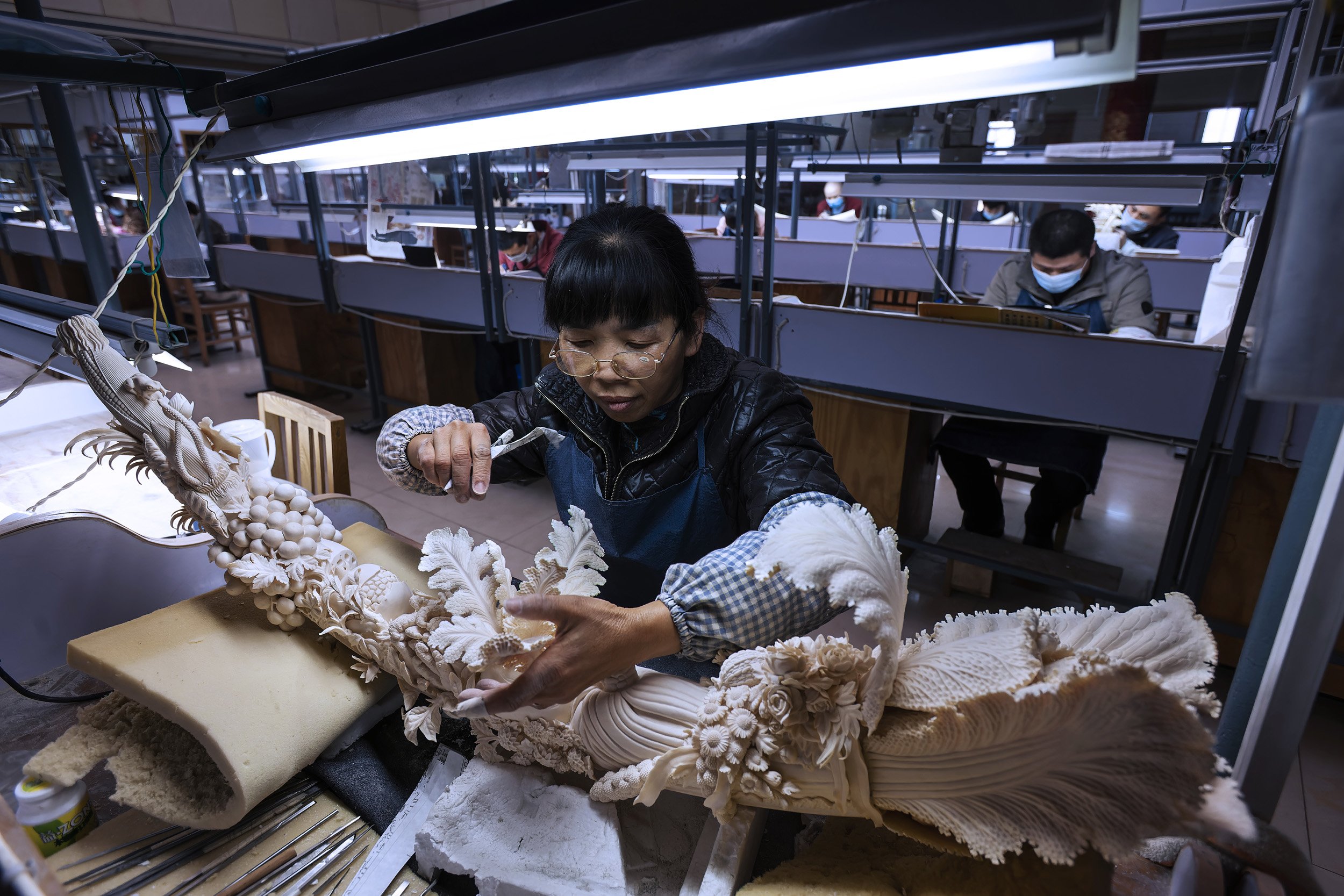

Asian Elephants – Behavior, Psychology, and Co-existence.Asian elephants today are seen as animals defined through the lens of culture, economics, and conservation. This essay attempts to examine the work of Asian elephant researchers who study these animals to best learn how they may more successfully live with humans. Close to 60% of Asian elephants live close to human populations with more of their habitat being lost every year. The hope is that a greater understanding of these elephants may mitigate much of the human elephant conflict that plays out today. I have examined the effect of agricultural and economic development in and around traditional elephant habitat, the emergence of bachelor herds of male elephants, the effects of garbage dumps and cultivation close to national parks, the stress levels of female elephants before and after they have calves, mourning amongst elephants, survival tactics within small herds, the way young calves learn through imitation, the stress that elephant festivals place on these animals and the contradiction between deifying them and yet constraining them and exploiting them. I have looked at the work of researchers who examine elephant problem-solving abilities and how this leads to a greater understanding of individual elephants as well as the human response to elephants deemed to be a threat. I have tried to examine the lack of planning for elephants around development in the countries that have the greatest numbers of elephants and how that has affected elephant habitat and their relationship to humans. I have also included some work on Ivory from Japan where domestic trade remains legal with many loopholes for ivory entering the country. Likewise, I have included some images from Thailand where ivory amulets remain highly sought after, especially with the right blessing from the right monk. I also include China where research groups like the Environmental Impact Agency report that despite the domestic ban on ivory, a s
VALPARAI, TAMIL NADU, INDIA, 15TH OCTOBER 2022: Wild elephants are seen high on the slopes of Valparai tea estate. Valparai is a huge tea-estate area that British colonialists transformed from native forest in 1890 as a response to the Chinese hike in tea prices. There was no concession given to the presence of thousands of elephants except to kill them. Today, wild elephants can sometimes be seen in the tea-estates, eating the grass between the bushes. Anamalai Tiger reserve is not far away. This has always been an elephant area but they are forced to live in forest corridors between the tea estates and are often chased away to ensure tea worker safety. The human-elephant conflict here is a delicate issue. The tea plantations are a hindrance to the movement of wildlife, particularly elephants who walk large distances to reach water bodies and feeding areas.
MYSORE, INDIA, OCTOBER 4, 2022: Two palace elephants touch trunks to comfort and reassure each other during the Mysore Dasara, the only state festival in India where elephants are used. In the days leading up to the festival these elephants injured two people, they are nervous and traumatized by the huge crowds at the festival. Their weaving behaving, constant trunk touching and placing their trunks in each other mouths is soothing behavior to cope with being chained all day and a massive human presence.
HARANGI ELEPHANT CAMP, KARNATAKA, INDIA, 21st October 2022: Experienced elephant mahout JS Raju guides blind elephant Ekadantha into the water to be bathed. This elephant will often hesitate, lifting his foot until he receives reassurance it is safe to go forward. Ekadantha is over 60 years old and is retired. He was with his previous mahout for over 40 years and locals say they knew each other so well that their relationship was almost unspoken. Good mahouts say that it is not necessary to beat the elephant or hurt it with a hooked stick in order to understand each other. Unfortunately Covid saw many of the older mahouts die and some of their wisdom died with them. Captured elephants in camps are big tourist business and that can mean impatience with the elephants and rough treatment. Elephant researchers are paying more attention to this ancident relationship now in order to glean a greater understanding from the mahouts of elephant behavior.
GALGAMUWA, SRI LANKA, 30 JUNE 2022: A juvenile elephant lies dead after eating a home-made grenade made from firecrackers combined with metal shrapnel hidden inside a pumpkin or watermelon. The explosion blew off most of this juvenile elephant’s lower jaw and decimated his tongue and teeth. Sri Lanka wildlife department officials estimate that this elephant most likely walked around for two weeks after the explosion in terrible pain, unable to eat or drink before succumbing on the morning of this photograph. There have been three such incidents in this area in the last year that have been recorded. It is a sign of growing village frustration with crop-raiding elephants that such techniques are being employed. Ironically, this area is forestry department land, the poor have been allowed to farm here by vote seeking politicans but not to put up permanent structures. The increasingly shrinking habitat available to Sri Lankan elephant means human elephant conflict is inevitable, especially as more and more crops are grown in what were formerly elephant areas. As a result, there is significant tension between local villagers and the elephants. The elephants exist in a serious of small remaining wild spaces and are often unwelcome visitors to areas where humans are living and cultivating crops.
GALGAMUWA, SRI LANKA, 30 JUNE 2022: A juvenile elephant is seen dead after eating a home-made grenade made of explosive taken from firecrackers combined with metal ball bearings hidden inside a pumpkin or watermelon. The explosion blew off most of the elephant’s lower jaw and decimated his tongue and teeth. Sri Lanka wildlife department officials estimate that this elephant most likely walked around for two weeks after the explosion in terrible pain, unable to eat or drink before succumbing on the morning of this photograph. There have been three such incidents in this area in the last three years that have been recorded. It is a sign of growing village frustration that such techniques are being employed. Ironically, this area is forestry department land, the poor have been allowed to farm here but not to put up permanent structures. The increasingly smaller habitat available to Sri Lankan elephant means human elephant conflict is inevitable, especially as more and more crops are grown in what were formerly elephant areas. As a result, there is significant tension between local villagers and the elephants. The elephants exist in a serious of small remaining wild spaces and are often unwelcome visitors to areas where humans are living and cultivating crops. Sri Lanka has one of the highest incidents of human elephant conflict as a result. (Photo by Brent Stirton/Getty Images for National Geographic.)
KERALA, INDIA, 15 APRIL 2013: Eliphants are prepared in a roadside canal to attend a religious festival in Kerala, India 15 April 2013. Elephants have become increasingly popular at religious festivals in Kerala, for centuries they have been used by the Hindu faithful because of their role in Hinduism and also as a symbol of power. In recent years both Christian and Islamic factions have introduced elephants into their festival. As a result these elephant have become heavily overused during the festival period. They have little rest, are surrounded by a roaring crowd, loud music and concussive fireworks. Elephants that are in mhust have also been used, despite their increased aggression in this period. Accidents and killings have been commonplace, panicked and aggressive elephants have killed a number of spectators, as recently as January 2013 an elephant killed 3 woman spectators yet was allowed to continue performing. The elephant owners charge large fees for appearances and there are devout, fanatical followings for individual elephants. Despite the danger, people continue to flock to these events. Elephants are typically wild animals who have been caught and broken, then trained to obey commands. Elephants in Kerala spend their whole lives chained, living in small spaces like open air prisons and performing manual labor or appearing at these festivals. (Photo by Brent Stirton/Reportage by Getty Images.)
MYSORE, INDIA, OCTOBER 2, 2022: Rehearsals and preparations for the Mysore Dasara, a festival of culture in the state of Karnataka and the only state festival in India where elephants are used. Mysore Dasara is a Royal Festival that celebrates “the victory of truth over evil” that lasts 10 days. 12 Dasara elephants march on the procession route from Mysore Palace to Bannimantap twice a day. These elephants are considered the pride of the state. The elephants used in the Mysore Dasara are all capture elephants, they usually live in Dubare Elephant camp and form a vital part of a Forestry services team that captures wild rogue elephants and and breaks them down until they integrate into Dubare or another elephant camp. Many of these captive elephants were once part of the timber industry or they have been captured themselves, or they were calf victims of human/ elephant conflict and grew up in an elephant camp. Karnataka does not allow private ownership of elephants and the elephants are the property of the Forest Department. The Mysore Dasara attracts huge crowds, and it is essential that the elephants involved can remain calm in these circumstances and obey orders from their experienced mahouts. (Photo by Brent Stirton/Getty Images for National Geographic Magazine.)
DAMBULLA DUMP SITE, HABARANA, SRI LANKA, 4TH JULY 2022: Wild elelphants from nearby Minneriya and Kaudulla National Parks are seen in Dambulla dump scavenging for fruit and vegetables that have been thrown away. This dump has existed for over ten years and elephants have been regular visitors. A number of these elephants have become residents in the area, drawn to the sweet fruits they can't get elsewhere. Conservationists argue against this practise, saying that elephants then associate humans with food and that can be dangerous for both humans and elephants. There are also many plastics and other contaminants in this garbage and there are some fears that will bring health issues to these elephants. Ironically, there is a new hotel being built at this dump site as well a a golf buggy circuit for visitor to see the elephants. This is expected to open in 2023. (Photo by Brent Stirton/Getty Images for National Geographic.)
HABARANA, SRI LANKA, 16 AUGUST 2021: Elephants from Kaudula National Park are seen scavenging inside burning trash at the controversial Minneriya Garbage dump just outside the park boundary. Elephants have been breaking through the electric fence to get to this dump to access fruit that has been thrown away but are also eating plastic and other substances. Garbage is not separated into organic material at Minneriya. Local villagers are worried this elephant behavior will extend to elephants raiding their crops and have been trying to do something about the dump visits and get the dump closed down. Human elephant conflict is common in Sri Lanka as development is often carried out without due thought to the environment and animals. Over 800 Asian elephants died in Sri Lanka last year as a result. (Photo by Brent Stirton/Getty Images)
TISSAMAHARAMA, SRI LANKA, 11 JULY 2022: A male bull elephant is seen scavenging at a garbage dump on the outskirts of town. The scar from a gun-shot wound is clearly seen on his upper left front leg. He has another wound high on his back. These wounds are usually the result of insistent crop raiding by the elephant. The human elephant conflict often escalates from shouting and fireworks to the elephant eventually being shot, most often by a shotgun. This happens when the threat to crops and sometimes to human life becomes too great and all other methods fail. This usually is not fatal and drives the elephant away for a couple of months. A number of male elephants come to this location as there is both a garbage dump with refuse vegetables and fruit as well as nearby crops. Male elephants in Sri Lanka are able to break the electric fences of the wildlife reserves and as a result their diet is more varied and they are healthier. The fences are something of an anomaly as 60% of all elephants in Sri Lanka live outside of the reserves close to human populations and many males only enter reserves when they are in mhust and seeking breeding females. (photo by Brent Stirton/Getty Images for National Geographic.)
GALGAMUWA, SRI LANKA, 24 JUNE, 2022: Upul Chataranga, 28, spends many nights of the year high in a tree in an elephant watch hut. Elephants live close by in diminished wild areas and corridors. It is normal for them to crop raid and farmers have to observe constant vigilance to protect their crops. If Upul sees elephants he will use firecrackers, shouting and even vehicles to try to frighten the elephants away. This is not always successful and farmers lose crops regularly and find themselves in real danger. (photo by Brent Stirton/Getty Images for National Geographic.)
GALGAMUWA, SRI LANKA, 28 JUNE, 2022: Mr Kiribanda, 60, is seen in his rice paddies close to his home on the border region of the Kahalla Pallawa nature reserve as it runs up against cultivation areas. Mr Kiribanda has been fighting with wild elephants who raid his fields for many years, he confesses that he is tired of fighting and sleeping in his fields to protect his crops and is thinking of giving up cultivation. He worries about alternative employment. There is significant tension between local villagers and the elephants. The elephants exist in a serious of small remaining wild spaces and in areas where humans are living and cultivating crops. There is a great deal of human elephant conflict as a result. (photo by Brent Stirton/Getty Images for National Geographic.)
GALGAMUWA, SRI LANKA, 28 JUNE, 2022: Village men prepare to spend the night on elephant watch in their rice paddies close to the border region of the Kahalla Pallawa nature reserve. This area has many elephant and the border region runs up against cultivation areas. There is significant tension between local villagers and the elephants. The elephants exist in a serious of small remaining wild spaces and in areas where humans are living and cultivating crops. There is a great deal of human elephant conflict as a result. (photo by Brent Stirton/Getty Images for National Geographic.)
GALGAMUWA, SRI LANKA, 28 JUNE, 2022: Village men prepare to spend the night on elephant watch in their rice paddies close to the border region of the Kahalla Pallawa nature reserve. This area has many elephant and the border region runs up against cultivation areas. There is significant tension between local villagers and the elephants. The elephants exist in a serious of small remaining wild spaces and in areas where humans are living and cultivating crops. There is a great deal of human elephant conflict as a result. (photo by Brent Stirton/Getty Images for National Geographic.)
GALGAMUWA, SRI LANKA, 30 JUNE, 2022: Villagers engage with elephants in a nightly ritual where the villagers try to use a limited supply of firecrackers combined with shouting to drive off wild elephants intent on eating their crops both in the fields and around the villagers homes. These village homes are on the border region of the Kahalla Pallawa nature reserve. This area runs up against cultivation areas and is a source of regular human elephant conflict. Progressive thinking in Sri Lanka on this issue states that if elephants are allowed to come into these areas once the harvest is complete, then there should be more room for coexistence. Temporary Electric fences around cultivated fields is one solution but the elephants are fast learners and will colapse trees or branches on the fences in order to access the fields. As a result, most villagers have to send men to sleep in the fields closer to harvest time in order to protect the crop with firecrackers, fire and shouting. There is significant tension between local villagers and the elephants. The elephants exist in a serious of small remaining wild spaces and are often unwelcome visitors to areas where humans are living and cultivating crops. There is a great deal of human elephant conflict as a result. (photo by Brent Stirton/Getty Images for National Geographic.)
GALGAMUWA, SRI LANKA, 30 JUNE, 2022: Villagers engage with elephants in a nightly ritual where the villagers try to use a limited supply of firecrackers combined with shouting to drive off wild elephants intent on eating their crops both in the fields and around the villagers homes. These village homes are on the border region of the Kahalla Pallawa nature reserve. This area runs up against cultivation areas and is a source of regular human elephant conflict. Progressive thinking in Sri Lanka on this issue states that if elephants are allowed to come into these areas once the harvest is complete, then there should be more room for coexistence. Temporary Electric fences around cultivated fields is one solution but the elephants are fast learners and will colapse trees or branches on the fences in order to access the fields. As a result, most villagers have to send men to sleep in the fields closer to harvest time in order to protect the crop with firecrackers, fire and shouting. There is significant tension between local villagers and the elephants. The elephants exist in a serious of small remaining wild spaces and are often unwelcome visitors to areas where humans are living and cultivating crops. There is a great deal of human elephant conflict as a result. (photo by Brent Stirton/Getty Images for National Geographic.)
GALGAMUWA, SRI LANKA, 22nd JUNE, 2022: Members of Sri Lanka's wildlife department use firecrackers to chase elephants from farms. The shotguns are only for worst case scenarios. During harvesting season this can be a nightly activity as long as supplies last. (photo by Brent Stirton/Getty Images for National Geographic.)
GALGAMUWA, SRI LANKA, 30 JUNE, 2022: A herd of 36 wild elephants are seen inside rice paddies close to village homes on the border region of the Kahalla Pallawa nature reserve. This area runs up against cultivation areas and is a source of regular human elephant conflict. Progressive thinking in Sri Lanka on this issue states that if elephants are allowed to come into these areas once the harvest is complete, then there should be more room for coexistence. Temporary electric fences around cultivated fields is one solution but the elephants are fast learners and will colapse trees or branches on the fences in order to access the fields. As a result, most villagers have to send men to sleep in the fields closer to harvest time in order to protect the crop with firecrackers, fire and shouting. There is significant tension between local villagers and the elephants. The elephants exist in a serious of small remaining wild spaces and are often unwelcome visitors to areas where humans are living and cultivating crops. There is a great deal of human elephant conflict as a result. (photo by Brent Stirton/Getty Images for National Geographic.)
BANDIWEWA VILLAGE, ANURDHAPURA, 3RD JULY 2022: Village men are seen as they finish erecting a section of elephant proof electric fence. The fence will be 3 and a half kilometeres long when it is completed. Ninety families live in this village close to a protected area and they have suffered elephant incursions into their fields and their home gardens for as long as they can remember. "My father spent his whole life up a tree looking out for elephants," said one man. These fences are the brain child of NGO The centre for Conservation Research, a group focused on harmonius coexistence between humans and elephants in Sri Lanka, the country with the highest rate of human elephant conflict. CCR donates the fence materials and the village pays for the concrete foundations and provides the labor. The villagers here expressed a unified sense of relief to have this fence in place. (Photo by Brent Stirton/Getty Images for National Geographic. )
KITHULUTHUWA VILLAGE, NORTH CENTRAL, SRI LANKA, 18 AUGUST 2021: DM Premathilaka, 69, has lived in this village for 35 years since it was founded by the Sri Lankan military in 1988 as part of a buffer zone during the country’s long civil war. A week ago, a large bull elephant pushed in the side of his house looking for fruits and vegetables. His son and neighbours chased it away with firecrackers but not before the damage was done. This is not the first time he has had to deal with elephants. Human elephant conflict is common in this area and his is the second house to be damaged this month. “First we had to deal with terrorists, now we are dealing with elelphants,” says Premathilaka. “We need a proper electric fence, but we know that will not be enough.” Sri Lanka’s wildlife authority is very good about compensation for damage caused by elephants but it takes time and can be a little less than the repairs may cost. (Photo by Brent Stirton/Getty Images)
GALGAMUWA, SRI LANKA, 24 JUNE, 2022: Sumith Ranajunga, 44, survived an elephant attack 3 months ago. While on his way to his fields on a motorbike, he was suprised by an elephant that appeared just 10 meters away from him. The elephant knocked him off his bike, grabbed Sumith with his trunk, slammed him to the ground and stamped on his legs, Sumith grabbed onto the elephants leg to try to survive," When I was holding onto the elephants leg, I thought I had no chance. For years I have seen elephants, we are always dealing with them in our fields and in our village. They are always close because we are next to a lake. In the last twenty years their behavior has changed as their area has gotten smaller. " Sumith bears no ill will towards elephants, "I have always loved elephants, I have many pictures of them. If we could return the forests to the way they were, we would not have this problem. It is us who have taken from the elephants." Both of Sumith's legs are crushed and he has extensive steel plates. 6 ribs are broken and his wife Mala takes care of him. She was working as a domestic worker in Kuwait but can no longer do that. Doctors say that Sumith must wait a year before he can begin the process of trying to walk again. (photo by Brent Stirton/Getty Images for National Geographic.)
GALGAMUWA, SRI LANKA, 23RD JUNE, 2022: Mrs N.A Dingiri Menika, 67, lost her husband to an elephant attack as he was riding his bicycle to his elephant watchtower over their paddyfield. This incident occured a week ago. She is seen at the site where he died. He was attacked as he arrived at his family's rice paddy field. A year earlier, Mrs Menika lost her son to an elephant attack in which both he and his friend were killed. Mrs Menika says this happens often and that there is not enough support and care from the Sri Lankan Wildlife department for poor farmers. "we do not even have fire-crackers, we need community village fences too with electricity. Only a few of us have private electric fences, they are too expensive." (photo by Brent Stirton/Getty Images for National Geographic.)
GALGAMUWA, SRI LANKA, 1st July 2022: Mr W.M Ranbanda, 63, was attacked by a wild elephant while in his vegetable fields. This is an elephant that is known to have attacked at least three other people but nothing has been done to remove the animal from the area. It attacked him in the morning and another woman in the afternoon. That woman had to be taken to a hospital far from Galgamuwa to deal with her critical condition. This is a poorer area of Galgamuwa, a agricultural area which has a very high rate of human elephant conflict. Mr Ranbanda has crushed ribs and a broken leg, despite this he says that the elephant problem is largely because humans are farming in what used to be their areas. "We need electric fences for the village but they are expensive, only certain private people can afford them. Our village fence is far from our fields so we are not protected." Mr Ranbanda's son added "If there is a dead or injured elephant, the wildlife department will come, but not for injured or dead people." There is significant tension between local villagers and the elephants. The elephants exist in a serious of small remaining wild spaces and are often unwelcome visitors to areas where humans are living and cultivating crops. There is a great deal of human elephant conflict as a result. (photo by Brent Stirton/Getty Images for National Geographic.)
ALAPURA DISTRICT, KERALA, INDIA: Lakshmi Alumparambil and her husband Sreedharan mourn the loss of their daugher Sudheena to a panicked elephant in a temple festival in Kerala, 17 April 2013. Sudheena and her father were attending a festival where 7 elephants were crammed into a temple space traditionally used for three. The mahout was not paying attention and the elephant was not chained properly, it panicked in the crowd and lashed out and people stampeded, fleeing the temple. Sudheena was trapped against the wall and the elephant crushed her head. She died on the way to hospital. Her parents tell of how she loved elephants, making scrapbooks of pictures and seeing them as often as she could. She was 21 years old and was studying English Literature at the time of her death. She was 20 years old. Elephants are hired for these festivals for very large sums, no-one has been held responsible yet for this attack. (Photo by Brent Stirton/Reportage for NY Times Magazine.)
VALPARAI, TAMIL NADU, INDIA, 18TH OCTOBER 2022: A man fights for his life in Valparia General Hospital after being struck by an elephant half an hour earlier. He was walking very early in the morning, a time when elephants are around, the elephant came up behind him and the man did not see it. Valparai is a huge tea-estate area that British colonialists transformed from native foreest in 1890 as a response to the Chinese hike in tea prices. There was no concession given to the presence of thousands of elephants except to kill them. Today, wild elephants can sometimes be seen in the tea-estates, eating the grass between the bushes. Anamalai Tiger reserve is not far away. This has always been an elephant area but they are forced to live in forest corridors between the tea estates and are often chased away to ensure tea worker safety. The human-elephant conflict here is a delicate issue. The tea plantations are a hindrance to the movement of wildlife, particularly elephants who walk large distances to reach water bodies and feeding areas. (Photo by Brent Stirton/Getty Images for National Geographic Magazine.)
VALPARAI, TAMIL NADU, INDIA, 17TH OCTOBER 2022: Local men check their phones for an elephant proximity warnging, a system instituted to combat human/elephant conflicts issues by local NGO Nature Conservation Foundation. Valparai is a huge tea-estate area that British colonialists transformed from native foreest in 1890 as a response to the Chinese hike in tea prices. There was no concession given to the presence of thousands of elephants except to kill them. Today, wild elephants can sometimes be seen in the tea-estates, eating the grass between the bushes. Anamalai Tiger reserve is not far away. This has always been an elephant area but they are forced to live in forest corridors between the tea estates and are often chased away to ensure tea worker safety. The human-elephant conflict here is a delicate issue. The tea plantations are a hindrance to the movement of wildlife, particularly elephants who walk large distances to reach water bodies and feeding areas. (Photo by Brent Stirton/Getty Images for National Geographic Magazine.)
VALPARAI, TAMIL NADU, INDIA, 19TH OCTOBER 2022: A flashing red light is seen in an area where tea workers live, this light is one of a number of schemes local elephant NGO Nature Conservation Foundation uses to alert local people to the presence of elephants. They also utilize local television stations as well as text messaging. This is all done to try to mitigate human elephant conflict across Valparai. Valparai is a huge tea-estate area that British colonialists transformed from native foreest in 1890 as a response to the Chinese hike in tea prices. There was no concession given to the presence of thousands of elephants except to kill them. Today, wild elephants can sometimes be seen in the tea-estates, eating the grass between the bushes. Anamalai Tiger reserve is not far away. This has always been an elephant area but they are forced to live in forest corridors between the tea estates and are often chased away to ensure tea worker safety. The human-elephant conflict here is a delicate issue. The tea plantations are a hindrance to the movement of wildlife, particularly elephants who walk large distances to reach water bodies and feeding areas. (Photo by Brent Stirton/Getty Images for National Geographic Magazine.)
GALGAMUWA, SRI LANKA, 27 JUNE, 2022: Wild elephant seen drinking water at a small lake close to village home on the border region of the Kahalla Pallawa nature reserve. This area runs up against cultivation areas and is a source of regular human elephant conflict. There is significant tension between local villagers and the elephants. The elephants exist in a serious of small remaining wild spaces and are often unwelcome visitors to areas where humans are living and cultivating crops. There is a great deal of human elephant conflict as a result. (photo by Brent Stirton/Getty Images for National Geographic.)
GALGAMUWA, SRI LANKA, 27 JUNE, 2022: Wild elephant seen drinking water at a small lake close to village home on the border region of the Kahalla Pallawa nature reserve. This area runs up against cultivation areas and is a source of regular human elephant conflict. There is significant tension between local villagers and the elephants. The elephants exist in a serious of small remaining wild spaces and are often unwelcome visitors to areas where humans are living and cultivating crops. There is a great deal of human elephant conflict as a result. (photo by Brent Stirton/Getty Images for National Geographic.)
BANDIPUR NATIONAL PARK, KARNATAKA, INDIA, 10 OCTOBER 2022: Young elephant calves learn by imitation, here they are seen inside Bandipur National Park mastering the art of throwing soil over their bodies. Researchers have established that female elephants with calves have a far lower cortisol count from stress and live more contented lives with less aggression.
GALGAMUWA, SRI LANKA, 27 JUNE, 2022: A single female escorts multiple calves and juveniles, a phenomenon known as nursery behaviour. They are seen at drinking water at a small lake close to village home on the border region of the Kahalla Pallawa nature reserve. This area runs up against cultivation areas and is a source of regular human elephant conflict. There is significant tension between local villagers and the elephants. The elephants exist in a serious of small remaining wild spaces and are often unwelcome visitors to areas where humans are living and cultivating crops. There is a great deal of human elephant conflict as a result. (photo by Brent Stirton/Getty Images for National Geographic.)
GALGAMUWA, SRI LANKA, 27 JUNE, 2022: Wild elephants with calves seen drinking water at a small lake close to village home on the border region of the Kahalla Pallawa nature reserve. Researchers have established that females with calves have far lower cortisol levels and are significantly less stressed. This area runs up against cultivation areas and is a source of regular human elephant conflict. There is significant tension between local villagers and the elephants. The elephants exist in a serious of small remaining wild spaces and are often unwelcome visitors to areas where humans are living and cultivating crops. There is a great deal of human elephant conflict as a result. (photo by Brent Stirton/Getty Images for National Geographic.)
HABARANA, SRI LANKA, 4TH JULY 2022: Two male elphants entertwine trunks in a bonding ritual. They are part of a bachelor herd of 12 wild male elephants from nearby Minneriya and Kaudulla National Parks. These groups of young males regularly intrude into human areas and croplands. Here they are seen in Dambulla dump scavenging for fruit and vegetables that have been thrown away. Conservationists argue against this practise, saying that elephants then associate humans with food and that can be dangerous for both humans and elephants. There are also many plastics and other contaminants in this garbage and there are some fears that will bring health issues to these elephants.
DAMBULLA DUMP SITE, HABARANA, SRI LANKA, 4TH JULY 2022: Wild elelphants from nearby Minneriya and Kaudulla National Parks are seen in Dambulla dump scavenging for fruit and vegetables that have been thrown away. This dump has existed for over ten years and elephants have been regular visitors. A number of these elephants have become residents in the area, drawn to the sweet fruits they can't get elsewhere. Conservationists argue against this practise, saying that elephants then associate humans with food and that can be dangerous for both humans and elephants. There are also many plastics and other contaminants in this garbage and there are some fears that will bring health issues to these elephants. Ironically, there is a new hotel being built at this dump site as well a a golf buggy circuit for visitor to see the elephants. This is expected to open in 2023. (Photo by Brent Stirton/Getty Images for National Geographic.)
YALA NATIONAL PARK, SRI LANKA, 17 JULY 2022: A male elephant in mhust is seen in Yala National Park. When male elephants are in this state, they are ready for breeding and spend most of their time searching for receptive females. These males are agitated and unpredicatable in this state and often aggressive as they experience sexual frustration. The tell-tale sign is the weeping of fluids from a gland behind the eye and a smell that can be identified from a long way away. (Photo by Brent Stirton/Getty Images for National Geographic Magazine.)
MINERIA NATIONAL PARK, SRI LANKA, 3RD JULY 2022: A small herd of female elephants and calves revisit an area where the body of a small calf lies. The calf died of malnutrition two days prior and the elephants touched it with their trunks and feet, trying to revive it. Two days later they once again revisted the scene. pausing at the body and lingering in the area. They charged the photographers vehicle multiple times before slowly walking away. (Photo by Brent Stirton/Getty Images for National Geographic)
BANDIPUR NATIONAL PARK, KARNATAKA, INDIA, 10 OCTOBER 2022: Researchers have established that females with calves have far lower cortisol levels and are significantly less stressed. This baby calf is seen inside Bandipur National Park being swatted by another elephants tail. Bandipur National Park is regarded as one of the most beautiful and better-managed national parks of India. Located amidst the picturesque surroundings of the towering Western Ghats on the Mysore-Ooty highway in Karnataka, it is an important part of the Nilgiri Biosphere Reserve that constitutes Karnataka’s Rajiv Gandhi National Park (Nagarahole) to its Northwest, Tamil Nadu’s Mudumalai Wildlife Sanctuary to its South, and Kerala’s Wayanad Wildlife Sanctuary to its Southwest. The total extent of Bandipur National Park is 872.24 sq km. (Photo by Brent Stirton/Getty Images for National Geographic Magazine.)
BANDIPUR NATIONAL PARK, KARNATAKA, INDIA, 10 OCTOBER 2022: Researchers have established that females with calves have far lower cortisol levels and are significantly less stressed. This group of elphants is seen inside Bandipur National Park. Bandipur National Park is regarded as one of the most beautiful and better-managed national parks of India. Located amidst the picturesque surroundings of the towering Western Ghats on the Mysore-Ooty highway in Karnataka, it is an important part of the Nilgiri Biosphere Reserve that constitutes Karnataka’s Rajiv Gandhi National Park (Nagarahole) to its Northwest, Tamil Nadu’s Mudumalai Wildlife Sanctuary to its South, and Kerala’s Wayanad Wildlife Sanctuary to its Southwest. The total extent of Bandipur National Park is 872.24 sq km. (Photo by Brent Stirton/Getty Images for National Geographic Magazine.)
MINNERIYA NATIONAL PARK, SRI LANKA, 6TH JULY 2022: A distressed female elephant visits the carcass of a dead baby elephant that died 5 days earlier as a result of malnutrition. Researchers suspect this was her calf. The female walked directly across the grassland towards this dead calf, she did not pause to eat but walked directly and paused in front of the carcass, touching it with her trunk. At first touch, she reversed backwards but then came in again and lingered around the former calf. She lingered in the area, not eating, all the while looking at the carcass. It was only when another juvenile elephant reached her and touched her repeatedly on her stomach with his trunk that she walked slowly away.
KABINI, KARNATAKA, 6 OCTOBER 2022: Elephant are one of the main attractions of Kabini Wildlife Sanctuary. The sanctuary has a good population of elephants during the summer months. It also shelters wildlife such as leopard, panther, sambhar, monkeys, bison, sloth bear, spotted deer, cheetal, antelope, crocodile, panther and 250 species of birds. The sanctuary was once the hunting reserve of the Maharajas of Mysore. It consists of the south-eastern part of Nagarhole National Park and extends into the Kabini reservoir. During the months of March, April and May many elephants can be seen in the park due to the presence of young grasses around the reservoir and the lack of water elsewhere. (Photo by Brent Stirton/Getty Images for National Geographic Magazine.)
KABINI, KARNATAKA, 6 OCTOBER 2022: Elephant are one of the main attractions of Kabini Wildlife Sanctuary. The sanctuary has a good population of elephants during the summer months. It also shelters wildlife such as leopard, panther, sambhar, monkeys, bison, sloth bear, spotted deer, cheetal, antelope, crocodile, panther and 250 species of birds. The sanctuary was once the hunting reserve of the Maharajas of Mysore. It consists of the south-eastern part of Nagarhole National Park and extends into the Kabini reservoir. During the months of March, April and May many elephants can be seen in the park due to the presence of young grasses around the reservoir and the lack of water elsewhere. (Photo by Brent Stirton/Getty Images for National Geographic Magazine.)
MINERIA NATIONAL PARK, SRI LANKA, 3RD JULY 2022: A small herd of female elephants and calves revisit an area where the body of a small calf lies. The calf died of malnutrition two days prior and the elephants touched it with their trunks and feet, trying to revive it. Two days later they once again revisted the scene. pausing at the body and lingering in the area. They charged the photographers vehicle multiple times before slowly walking away. (Photo by Brent Stirton/Getty Images for National Geographic)
YALA NATIONAL PARK, SRI LANKA, 17 JULY 2022: An adult female elephant pushs a young calf viciously under the water at a water hole in Yala National Park. This baby lost its mother a month ago, according to elephant observers inside Yala. It is trying to attach itself to this small herd for survival but this matriarch female keeps trying to drive the youngster away. This is part of the matriarch's tough survival strategy for this herd and their own calves.
VALPARAI, TAMIL NADU, INDIA, 16TH OCTOBER 2022: Valparai is a huge tea-estate area that British colonialists transformed from native foreest in 1890 as a response to the Chinese hike in tea prices. There was no concession given to the presence of thousands of elephants except to kill them. Today, wild elephants can sometimes be seen in the tea-estates, eating the grass between the bushes. Anamalai Tiger reserve is not far away. This has always been an elephant area but they are forced to live in forest corridors between the tea estates and are often chased away to ensure tea worker safety. The human-elephant conflict here is a delicate issue. The tea plantations are a hindrance to the movement of wildlife, particularly elephants who walk large distances to reach water bodies and feeding areas. (Photo by Brent Stirton/Getty Images for National Geographic Magazine.)
VALPARAI, TAMIL NADU, INDIA, 16TH OCTOBER 2022: Valparai is a huge tea-estate area that British colonialists transformed from native foreest in 1890 as a response to the Chinese hike in tea prices. There was no concession given to the presence of thousands of elephants except to kill them. Today, wild elephants can sometimes be seen in the tea-estates, eating the grass between the bushes. Anamalai Tiger reserve is not far away. This has always been an elephant area but they are forced to live in forest corridors between the tea estates and are often chased away to ensure tea worker safety. The human-elephant conflict here is a delicate issue. The tea plantations are a hindrance to the movement of wildlife, particularly elephants who walk large distances to reach water bodies and feeding areas. (Photo by Brent Stirton/Getty Images for National Geographic Magazine.)
VALPARAI, TAMIL NADU, INDIA, 16TH OCTOBER 2022: Valparai is a huge tea-estate area that British colonialists transformed from native foreest in 1890 as a response to the Chinese hike in tea prices. There was no concession given to the presence of thousands of elephants except to kill them. Today, wild elephants can sometimes be seen in the tea-estates, eating the grass between the bushes. Anamalai Tiger reserve is not far away. This has always been an elephant area but they are forced to live in forest corridors between the tea estates and are often chased away to ensure tea worker safety. The human-elephant conflict here is a delicate issue. The tea plantations are a hindrance to the movement of wildlife, particularly elephants who walk large distances to reach water bodies and feeding areas. (Photo by Brent Stirton/Getty Images for National Geographic Magazine.)
YALA NATIONAL PARK, SRI LANKA, 10TH JULY 2022: A bull male elephant is seen trying to rescue a dead female elephant lying in a water hole inside Yala National Park, it is thought that this elephant died of malnutrition related issues and collapsed inside the water hole at night. This male elephant saw the female and after initially hesitating due to the presence of the photographer’s car, he walked into the water and went directly to the dead female. He then tried to push her with his head to wake her up. When she did not respond, he became more forceful and pushed her body to a shallower section of the water hole. He tried a number of times to push her back on her feet but the corpse just rolled over. After multiple tried, the male waited around the body for a few minutes then left the waterhole. The fences inside national parks in Sri Lanka keep female elephants and younger elephants inside the parks, male elephants break the fence regularly and access other food sources, some of which are grown by humans. 60 % of Sri Lankas elephants live outside of her national parks and are generally healthier than those inside parks as they have more varied food sources. Conservationist observers in these parks state that many of the females in parks are smaller than females outside of the parks and that there is a high death rate for calves. This is supposedly linked to the malnourished females not having sufficient breast milk so the calves are dying of malnutrition. Adult females also appear to have shorter lives inside parks as well as growth issues. Electric fences are one line of defense for Sri Lanka’s human population, and they appear to work well at a village level and around fields during times of cultivation. There are questions however about the planning of fence lines around national parks and what those fences mean for elephants in terms of nutritional needs and breeding. (Photo by Brent Stirton/Getty Images for National Geographic)
YALA NATIONAL PARK, SRI LANKA, 10TH JULY 2022: A bull male elephant is seen meticulously dismantling an electric fence inside Yala National Park. These large males have no problem breaking through fences but this particular male has developed a delicate technique where he does not even need to break the fence but uses the fence poles to lay the wires flat and then simply step over them. The breaking of fences by male adult elephant is a daily ritual in most parks in Sri Lanka. The fences inside national parks in Sri Lanka keep female elephants and younger elephants inside the parks, male elephants break the fence regularly and access other food sources, some of which are grown by humans. 60 % of Sri Lankas elephants live outside of her national parks and are generally healthier than those inside parks as they have more varied food sources. Conservationist observers in these parks state that many of the females in parks are smaller than females outside of the parks and that there is a higher death rate for calves. (Photo by Brent Stirton/Getty Images for National Geographic)
YALA NATIONAL PARK, SRI LANKA, 10TH JULY 2022: A bull male elephant is seen meticulously dismantling an electric fence inside Yala National Park. These large males have no problem breaking through fences but this particular male has developed a delicate technique where he does not even need to break the fence but uses the fence poles to lay the wires flat and then simply step over them. The breaking of fences by male adult elephant is a daily ritual in most parks in Sri Lanka. The fences inside national parks in Sri Lanka keep female elephants and younger elephants inside the parks, male elephants break the fence regularly and access other food sources, some of which are grown by humans. 60 % of Sri Lankas elephants live outside of her national parks and are generally healthier than those inside parks as they have more varied food sources. Conservationist observers in these parks state that many of the females in parks are smaller than females outside of the parks and that there is a higher death rate for calves. (Photo by Brent Stirton/Getty Images for National Geographic)
GALGAMUWA, SRI LANKA, 3 July, 2022: Wild elephant that live in the border region of the Kahalla Pallawa nature reserve are seen coming into cultivated fields of the nearby villages. This area runs up against many rice paddies, manioc and peanut farms and is a source of regular human elephant conflict. There is significant tension between local villagers and the elephants. The elephants exist in a serious of small remaining wild spaces and are often unwelcome visitors to areas where humans are living and cultivating crops. There is a great deal of human elephant conflict as a result. (photo by Brent Stirton/Getty Images for National Geographic.)
YALA NATIONAL PARK, SRI LANKA, 17 JULY 2022: An older male elephant walks on the beach inside Yala National Park. Apparently this male walks on the beach regularly, often in the moonlight. (Photo by Brent Stirton/Getty Images for National Geographic Magazine.)
THE GOLDEN TRIANGLE, THAILAND, AUGUST 17 2022: Mahouts from the Anantara Golden Triangle elephant camp set up elephant puzzle boxes on the top of a hill that overlooks Laos, Thailand and Myanmar. Thai elephants interact with these steel puzzle boxes. The boxes contain fruit but in order to access the fruit, the elephant must learn to open three different doors using their trunk. This project is part of the work of the Comparative Cognition Lab at Hunter College City University of New York in their ongoing efforts to better understand how Asian elephants think in order to potentially mitigate human/elephant conflict across the region. The tests are conducted on both captive and wild elephants, the main difference that has emerged is that captive elephants are less wary and cautious of the boxes. (Photo by Brent Stirton/Getty Images for National Geographic Magazine.)
THE GOLDEN TRIANGLE, THAILAND, AUGUST 16 2022: Thai elephants interact with steel puzzle boxes strapped to trees close to the Anantara Golden Triangle elephant camp. The boxes contain fruit but in order to access the fruit, the elephant must learn to open three different doors using their trunk. This project is part of the work of the Comparative Cognition Lab at Hunter College City University of New York in their ongoing efforts to better understand how Asian elephants think in order to potentially mitigate human/elephant conflict across the region. The tests are conducted on both captive and wild elephants, the main difference that has emerged is that captive elephants are less wary and cautious of the boxes. (Photo by Brent Stirton/Getty Images for National Geographic Magazine.)
THE GOLDEN TRIANGLE, THAILAND, AUGUST 18 2022: Thai elephants interact with steel puzzle boxes on top of a hill that overlooks Laos, Thailand and Myanmar very early in the morning. The boxes contain fruit but to access the fruit, the elephant must learn to open three different doors using their trunk. This project is part of the work of the Comparative Cognition Lab at Hunter College City University of New York in their ongoing efforts to better understand how Asian elephants think in order to potentially mitigate human/elephant conflict across the region. The tests are conducted on both captive and wild elephants, the main difference that has emerged is that captive elephants are less wary and cautious of the boxes.
SALAKPRA NATIONAL PARK, KANCHANABURI, THAILAND: Sarah Jacobson, PHD candidate from the Graduate center City University of New York, works with Thai researcher Pornpimol Kubsanit, 26, and Thai researcher Mananya Pla-ard, 29, to install a "novel object" to a tree on the border of SALAKPRA WILDLIFE SANCTUARY. The researchers also install video camera traps to observe how wild elephants react to these new objects in their environment. This project is part of the work of the Comparative Cognition Lab at Hunter College City University of New York in their ongoing efforts to better understand how Asian elephants think in order to potentially mitigate human/elephant conflict across the region. The tests are conducted on both captive and wild elephants, the main difference that has emerged is that captive elephants are less wary and cautious of the boxes. (Photo by Brent Stirton/Getty Images for National Geographic Magazine.)
SALAKPRA WILDLIFE SANCTUARY, KANCHANABURI, THAILAND: A wild elephant is seen at night investigating a “novel object,” in this case a car wash brush, strapped to a tree on the border of Salakpra Wildlife Sanctuary. The wild elephants are often wary of anything new in their environment, in this case, the elephant has decided the brush would make an ideal back-scratcher. This project is part of the work of the Comparative Cognition Lab at Hunter College City University of New York in their ongoing efforts to better understand how Asian elephants think in order to potentially mitigate human/elephant conflict across the region. The tests are conducted on both captive and wild elephants, the main difference that has emerged is that captive elephants are less wary and cautious of the boxes. (Photo by Brent Stirton/Getty Images for National Geographic Magazine.)
KANDY, SRI LANKA, 21 AUGUST 2021: Significant elephants are bathed and dressed for the Perahera. The Esala Perahera in Kandy is celebrated to honor the Sacred Tooth Relic and the four 'guardian' Gods Natha, Vishnu, Kataragama and Goddess Pattini. It is the only Perahera in the world which is held with the participation of more than fifty elephants and tuskers adorned with ceremonial costumes, hundreds of drummers, dancers and singers. The Sinhalese term 'Perahera' means a parade of musicians, dancers, singers, acrobats and various other performers accompanied by a large number of caparisoned Tuskers and Elephants parading the streets in celebration of a religious event. The Dalada Perahera is believed to have begun when the Sacred Tooth Relic of the Buddha was brought to Sri Lanka from India during the 4th century CE, eight hundred years after the passing away of Buddha. According to tradition, the Tooth Relic was taken in procession to Sri Lanka by Princess Hemamala & Prince Dantha.
KANDY, SRI LANKA, 21 AUGUST 2021: The Esala Perahera in Kandy is celebrated to honor the Sacred Tooth Relic and the four 'guardian' Gods Natha, Vishnu, Kataragama and Goddess Pattini. It is the only Perahera in the world which is held with the participation of more than fifty elephants and tuskers adorned with ceremonial costumes, hundreds of drummers, dancers and singers. The Sinhalese term 'Perahera' means a parade of musicians, dancers, singers, acrobats and various other performers accompanied by a large number of caparisoned Tuskers and Elephants parading the streets in celebration of a religious event. The Dalada Perahera is believed to have begun when the Sacred Tooth Relic of the Buddha was brought to Sri Lanka from India during the 4th century CE, eight hundred years after the passing away of Buddha. According to tradition, the Tooth Relic was taken in procession to Sri Lanka by Princess Hemamala & Prince Dantha.
MYSORE, INDIA, OCTOBER 2, 2022: Rehearsals and preparations for the Mysore Dasara, a festival of culture in the state of Karnataka and the only state festival in India where elephants are used. Mysore Dasara is a Royal Festival that celebrates “the victory of truth over evil” that lasts 10 days. 12 Dasara elephants march on the procession route from Mysore Palace to Bannimantap twice a day. These elephants are considered the pride of the state. The elephants used in the Mysore Dasara are all capture elephants, they usually live in Dubare Elephant camp and form a vital part of a Forestry services team that captures wild rogue elephants and and breaks them down until they integrate into Dubare or another elephant camp. Many of these captive elephants were once part of the timber industry or they have been captured themselves, or they were calf victims of human/ elephant conflict and grew up in an elephant camp. Karnataka does not allow private ownership of elephants and the elephants are the property of the Forest Department. The Mysore Dasara attracts huge crowds, and it is essential that the elephants involved can remain calm in these circumstances and obey orders from their experienced mahouts. (Photo by Brent Stirton/Getty Images for National Geographic Magazine.)
THRISSUR, KERALA, INDIA, 19 APRIL 2013: Mahouts clean an elephant in a private home enclosure, Thrissur, Kerala, India 19 April 2013. This elephant belongs to Sundar Menon, a fuel supply magnate who runs Sungroup international. His is one of over 50 elephants that will attend the largest elephant festival in Kerala. These 50 elephants attend this festival amidst a crowd of over 500 000 people. Elephants have become increasingly popular at religious festivals in Kerala, for centuries they have been used by the Hindu faithful because of their role in Hinduism and also as a symbol of power. In recent years both Christian and Islamic factions have introduced elephants into their festival. As a result these elephant have become heavily overused during the festival period. They have little rest, are surrounded by a roaring crowd, loud music and concussive fireworks. Elephants that are in Must have also been used, despite their increased aggression in this period. Accidents and killings have been commonplace, panicked and aggressive elephants have killed a number of spectators, as recently as January 2013 an elephant killed 3 woman spectators yet was allowed to continue performing. The elephant owners charge large fees for appearances and there are devout, fanatical followings for individual elephants. Despite the danger, people continue to flock to these events. Elephants are typically wild animals who have been caught and broken, then trained to obey commands. Elephants in Kerala spend their whole lives chained, living in small spaces like open air prisons and performing manual labor or appearing at these festivals. (Photo by Brent Stirton/Reportage by Getty Images.)
KERALA, INDIA, 15 APRIL 2013: An elephant is delivered by truck to attend a festival in Kerala, India 15 April 2013. Elephants have become increasingly popular at religious festivals in Kerala, for centuries they have been used by the Hindu faithful because of their role in Hinduism and also as a symbol of power. In recent years both Christian and Islamic factions have introduced elephants into their festival. As a result these elephant have become heavily overused during the festival period. They have little rest, are surrounded by a roaring crowd, loud music and concussive fireworks. Elephants that are in mhust have also been used, despite their increased aggression in this period. Accidents and killings have been commonplace, panicked and aggressive elephants have killed a number of spectators, as recently as January 2013 an elephant killed 3 woman spectators yet was allowed to continue performing. The elephant owners charge large fees for appearances and there are devout, fanatical followings for individual elephants. Despite the danger, people continue to flock to these events. Elephants are typically wild animals who have been caught and broken, then trained to obey commands. Elephants in Kerala spend their whole lives chained, living in small spaces like open air prisons and performing manual labor or appearing at these festivals. (Photo by Brent Stirton/Reportage by Getty Images.)
MYSORE, INDIA, OCTOBER 3, 2022: Rehearsals and preparations for the Mysore Dasara, a festival of culture in the state of Karnataka and the only state festival in India where elephants are used. Mysore Dasara is a Royal Festival that celebrates “the victory of truth over evil” that lasts 10 days. 12 Dasara elephants march on the procession route from Mysore Palace to Bannimantap twice a day. These elephants are considered the pride of the state. The elephants used in the Mysore Dasara are all capture elephants, they usually live in Dubare Elephant camp and form a vital part of a Forestry services team that captures wild rogue elephants and and breaks them down until they integrate into Dubare or another elephant camp. Many of these captive elephants were once part of the timber industry or they have been captured themselves, or they were calf victims of human/ elephant conflict and grew up in an elephant camp. Karnataka does not allow private ownership of elephants and the elephants are the property of the Forest Department. The Mysore Dasara attracts huge crowds, and it is essential that the elephants involved can remain calm in these circumstances and obey orders from their experienced mahouts. (Photo by Brent Stirton/Getty Images for National Geographic Magazine.)
MYSORE, INDIA, OCTOBER 3, 2022: Rehearsals and preparations for the Mysore Dasara, a festival of culture in the state of Karnataka and the only state festival in India where elephants are used. Mysore Dasara is a Royal Festival that celebrates “the victory of truth over evil” that lasts 10 days. 12 Dasara elephants march on the procession route from Mysore Palace to Bannimantap twice a day. These elephants are considered the pride of the state. The elephants used in the Mysore Dasara are all capture elephants, they usually live in Dubare Elephant camp and form a vital part of a Forestry services team that captures wild rogue elephants and and breaks them down until they integrate into Dubare or another elephant camp. Many of these captive elephants were once part of the timber industry or they have been captured themselves, or they were calf victims of human/ elephant conflict and grew up in an elephant camp. Karnataka does not allow private ownership of elephants and the elephants are the property of the Forest Department. The Mysore Dasara attracts huge crowds, and it is essential that the elephants involved can remain calm in these circumstances and obey orders from their experienced mahouts. (Photo by Brent Stirton/Getty Images for National Geographic Magazine.)
KERALA, INDIA, 15 APRIL 2013: Eliphants are prepared in a roadside canal to attend a religious festival in Kerala, India 15 April 2013. Elephants have become increasingly popular at religious festivals in Kerala, for centuries they have been used by the Hindu faithful because of their role in Hinduism and also as a symbol of power. In recent years both Christian and Islamic factions have introduced elephants into their festival. As a result these elephant have become heavily overused during the festival period. They have little rest, are surrounded by a roaring crowd, loud music and concussive fireworks. Elephants that are in mhust have also been used, despite their increased aggression in this period. Accidents and killings have been commonplace, panicked and aggressive elephants have killed a number of spectators, as recently as January 2013 an elephant killed 3 woman spectators yet was allowed to continue performing. The elephant owners charge large fees for appearances and there are devout, fanatical followings for individual elephants. Despite the danger, people continue to flock to these events. Elephants are typically wild animals who have been caught and broken, then trained to obey commands. Elephants in Kerala spend their whole lives chained, living in small spaces like open air prisons and performing manual labor or appearing at these festivals. (Photo by Brent Stirton/Reportage by Getty Images.)
MAMUTHY TOWN, KERALA, INDIA, 14 APRIL 2013: An elephant festival at Subrimanya Temple, Mamuthy Town, Kerala, India 14 April 2013. Elephants have become increasingly popular at religious festivals in Kerala, for centuries they have been used by the Hindu faithful because of their role in Hinduism and also as a symbol of power. In recent years both Christian and Islamic factions have introduced elephants into their festival. As a result these elephant have become heavily overused during the festival period. They have little rest, are surrounded by a roaring crowd, loud music and concussive fireworks. Elephants that are in Must have also been used, despite their increased aggression in this period. Accidents and killings have been commonplace, panicked and aggressive elephants have killed a number of spectators, as recently as January 2013 an elephant killed 3 woman spectators yet was allowed to continue performing. The elephant owners charge large fees for appearances and there are devout, fanatical followings for individual elephants. Despite the danger, people continue to flock to these events. Elephants are typically wild animals who have been caught and broken, then trained to obey commands. Elephants in Kerala spend their whole lives chained, living in small spaces like open air prisons and performing manual labor or appearing at these festivals. (Photo by Brent Stirton/Reportage by Getty Images.)
MAMUTHY TOWN, KERALA, INDIA, 14 APRIL 2013: An elephant festival at Subrimanya Temple, Mamuthy Town, Kerala, India 14 April 2013. Elephants have become increasingly popular at religious festivals in Kerala, for centuries they have been used by the Hindu faithful because of their role in Hinduism and also as a symbol of power. In recent years both Christian and Islamic factions have introduced elephants into their festival. As a result these elephant have become heavily overused during the festival period. They have little rest, are surrounded by a roaring crowd, loud music and concussive fireworks. Elephants that are in Must have also been used, despite their increased aggression in this period. Accidents and killings have been commonplace, panicked and aggressive elephants have killed a number of spectators, as recently as January 2013 an elephant killed 3 woman spectators yet was allowed to continue performing. The elephant owners charge large fees for appearances and there are devout, fanatical followings for individual elephants. Despite the danger, people continue to flock to these events. Elephants are typically wild animals who have been caught and broken, then trained to obey commands. Elephants in Kerala spend their whole lives chained, living in small spaces like open air prisons and performing manual labor or appearing at these festivals. (Photo by Brent Stirton/Reportage by Getty Images.)
KERALA, INDIA, 15 APRIL 2013: A vet checks to see if an elephant is in mhust before allowing it to attend a festival in Kerala, India 15 April 2013. This vet told the NY Times the elephant was safe yet told the owner in Hindi that it was in fact coming into mhust and could become aggressive with the crowd at the temple. Elephants have become increasingly popular at religious festivals in Kerala, for centuries they have been used by the Hindu faithful because of their role in Hinduism and also as a symbol of power. In recent years both Christian and Islamic factions have introduced elephants into their festival. As a result these elephant have become heavily overused during the festival period. They have little rest, are surrounded by a roaring crowd, loud music and concussive fireworks. Elephants that are in mhust have also been used, despite their increased aggression in this period. Accidents and killings have been commonplace, panicked and aggressive elephants have killed a number of spectators, as recently as January 2013 an elephant killed 3 woman spectators yet was allowed to continue performing. The elephant owners charge large fees for appearances and there are devout, fanatical followings for individual elephants. Despite the danger, people continue to flock to these events. Elephants are typically wild animals who have been caught and broken, then trained to obey commands. Elephants in Kerala spend their whole lives chained, living in small spaces like open air prisons and performing manual labor or appearing at these festivals. (Photo by Brent Stirton/Reportage by Getty Images.)
KERALA, INDIA, 15 APRIL 2013: An elephant walks past two nervous women on its way to attend a festival in Kerala, India 15 April 2013. Elephants have become increasingly popular at religious festivals in Kerala, for centuries they have been used by the Hindu faithful because of their role in Hinduism and also as a symbol of power. In recent years both Christian and Islamic factions have introduced elephants into their festival. As a result these elephant have become heavily overused during the festival period. They have little rest, are surrounded by a roaring crowd, loud music and concussive fireworks. Elephants that are in mhust have also been used, despite their increased aggression in this period. Accidents and killings have been commonplace, panicked and aggressive elephants have killed a number of spectators, as recently as January 2013 an elephant killed 3 woman spectators yet was allowed to continue performing. The elephant owners charge large fees for appearances and there are devout, fanatical followings for individual elephants. Despite the danger, people continue to flock to these events. Elephants are typically wild animals who have been caught and broken, then trained to obey commands. Elephants in Kerala spend their whole lives chained, living in small spaces like open air prisons and performing manual labor or appearing at these festivals. (Photo by Brent Stirton/Reportage by Getty Images.)
PARAVOOR, KERALA, INDIA, 15 APRIL 2013: An elephant festival at Paravoor, Kerala, India 15 April 2013. Elephants have become increasingly popular at religious festivals in Kerala, for centuries they have been used by the Hindu faithful because of their role in Hinduism and also as a symbol of power. In recent years both Christian and Islamic factions have introduced elephants into their festival. As a result these elephant have become heavily overused during the festival period. They have little rest, are surrounded by a roaring crowd, loud music and concussive fireworks. Elephants that are in Must have also been used, despite their increased aggression in this period. Accidents and killings have been commonplace, panicked and aggressive elephants have killed a number of spectators, as recently as January 2013 an elephant killed 3 woman spectators yet was allowed to continue performing. The elephant owners charge large fees for appearances and there are devout, fanatical followings for individual elephants. Despite the danger, people continue to flock to these events. Elephants are typically wild animals who have been caught and broken, then trained to obey commands. Elephants in Kerala spend their whole lives chained, living in small spaces like open air prisons and performing manual labor or appearing at these festivals. (Photo by Brent Stirton/Reportage by Getty Images.)
MYSORE, INDIA, OCTOBER 4, 2022: Festival elephants are weighed at a truck weigh station to check on their well-being, this is all part of preparations for the Mysore Dasara, a festival of culture in the state of Karnataka and the only state festival in India where elephants are used. Mysore Dasara is a Royal Festival that celebrates “the victory of truth over evil” that lasts 10 days. 12 Dasara elephants march on the procession route from Mysore Palace to Bannimantap twice a day. These elephants are considered the pride of the state. The elephants used in the Mysore Dasara are all capture elephants, they usually live in Dubare Elephant camp and form a vital part of a Forestry services team that captures wild rogue elephants and and breaks them down until they integrate into Dubare or another elephant camp. Many of these captive elephants were once part of the timber industry or they have been captured themselves, or they were calf victims of human/ elephant conflict and grew up in an elephant camp. Karnataka does not allow private ownership of elephants and the elephants are the property of the Forest Department. The Mysore Dasara attracts huge crowds, and it is essential that the elephants involved can remain calm in these circumstances and obey orders from their experienced mahouts. (Photo by Brent Stirton/Getty Images for National Geographic Magazine.)
MYSORE, INDIA, OCTOBER 2, 2022: Rehearsals and preparations for the Mysore Dasara, a festival of culture in the state of Karnataka and the only state festival in India where elephants are used. Mysore Dasara is a Royal Festival that celebrates “the victory of truth over evil” that lasts 10 days. 12 Dasara elephants march on the procession route from Mysore Palace to Bannimantap twice a day. These elephants are considered the pride of the state. The elephants used in the Mysore Dasara are all capture elephants, they usually live in Dubare Elephant camp and form a vital part of a Forestry services team that captures wild rogue elephants and and breaks them down until they integrate into Dubare or another elephant camp. Many of these captive elephants were once part of the timber industry or they have been captured themselves, or they were calf victims of human/ elephant conflict and grew up in an elephant camp. Karnataka does not allow private ownership of elephants and the elephants are the property of the Forest Department. The Mysore Dasara attracts huge crowds, and it is essential that the elephants involved can remain calm in these circumstances and obey orders from their experienced mahouts. (Photo by Brent Stirton/Getty Images for National Geographic Magazine.)
MYSORE, INDIA, OCTOBER 2, 2022: Rehearsals and preparations for the Mysore Dasara, a festival of culture in the state of Karnataka and the only state festival in India where elephants are used. Mysore Dasara is a Royal Festival that celebrates “the victory of truth over evil” that lasts 10 days. 12 Dasara elephants march on the procession route from Mysore Palace to Bannimantap twice a day. These elephants are considered the pride of the state. The elephants used in the Mysore Dasara are all capture elephants, they usually live in Dubare Elephant camp and form a vital part of a Forestry services team that captures wild rogue elephants and and breaks them down until they integrate into Dubare or another elephant camp. Many of these captive elephants were once part of the timber industry or they have been captured themselves, or they were calf victims of human/ elephant conflict and grew up in an elephant camp. Karnataka does not allow private ownership of elephants and the elephants are the property of the Forest Department. The Mysore Dasara attracts huge crowds, and it is essential that the elephants involved can remain calm in these circumstances and obey orders from their experienced mahouts. (Photo by Brent Stirton/Getty Images for National Geographic Magazine.)
MYSORE, INDIA, OCTOBER 5, 2022: The final day of the Mysore Dasara, a festival of culture in the state of Karnataka and the only state festival in India where elephants are used. Mysore Dasara is a Royal Festival that celebrates “the victory of truth over evil” that lasts 10 days. 12 Dasara elephants march on the procession route from Mysore Palace to Bannimantap twice a day. These elephants are considered the pride of the state. The elephants used in the Mysore Dasara are all capture elephants, they usually live in Dubare Elephant camp and form a vital part of a Forestry services team that captures wild rogue elephants and and breaks them down until they integrate into Dubare or another elephant camp. Many of these captive elephants were once part of the timber industry or they have been captured themselves, or they were calf victims of human/ elephant conflict and grew up in an elephant camp. Karnataka does not allow private ownership of elephants and the elephants are the property of the Forest Department. The Mysore Dasara attracts huge crowds, and it is essential that the elephants involved can remain calm in these circumstances and obey orders from their experienced mahouts. (Photo by Brent Stirton/Getty Images for National Geographic Magazine.)
MYSORE, INDIA, OCTOBER 4, 2022: Rehearsals and preparations for the Mysore Dasara, a festival of culture in the state of Karnataka and the only state festival in India where elephants are used. Mysore Dasara is a Royal Festival that celebrates “the victory of truth over evil” that lasts 10 days. 12 Dasara elephants march on the procession route from Mysore Palace to Bannimantap twice a day. These elephants are considered the pride of the state. The elephants used in the Mysore Dasara are all capture elephants, they usually live in Dubare Elephant camp and form a vital part of a Forestry services team that captures wild rogue elephants and and breaks them down until they integrate into Dubare or another elephant camp. Many of these captive elephants were once part of the timber industry or they have been captured themselves, or they were calf victims of human/ elephant conflict and grew up in an elephant camp. Karnataka does not allow private ownership of elephants and the elephants are the property of the Forest Department. The Mysore Dasara attracts huge crowds, and it is essential that the elephants involved can remain calm in these circumstances and obey orders from their experienced mahouts. (Photo by Brent Stirton/Getty Images for National Geographic Magazine.)
MYSORE, INDIA, OCTOBER 4, 2022: Rehearsals and preparations for the Mysore Dasara, a festival of culture in the state of Karnataka and the only state festival in India where elephants are used. Mysore Dasara is a Royal Festival that celebrates “the victory of truth over evil” that lasts 10 days. 12 Dasara elephants march on the procession route from Mysore Palace to Bannimantap twice a day. These elephants are considered the pride of the state. The elephants used in the Mysore Dasara are all capture elephants, they usually live in Dubare Elephant camp and form a vital part of a Forestry services team that captures wild rogue elephants and and breaks them down until they integrate into Dubare or another elephant camp. Many of these captive elephants were once part of the timber industry or they have been captured themselves, or they were calf victims of human/ elephant conflict and grew up in an elephant camp. Karnataka does not allow private ownership of elephants and the elephants are the property of the Forest Department. The Mysore Dasara attracts huge crowds, and it is essential that the elephants involved can remain calm in these circumstances and obey orders from their experienced mahouts. (Photo by Brent Stirton/Getty Images for National Geographic Magazine.)
MYSORE, INDIA, OCTOBER 5, 2022: The final day of the Mysore Dasara, a festival of culture in the state of Karnataka and the only state festival in India where elephants are used. Mysore Dasara is a Royal Festival that celebrates “the victory of truth over evil” that lasts 10 days. 12 Dasara elephants march on the procession route from Mysore Palace to Bannimantap twice a day. These elephants are considered the pride of the state. The elephants used in the Mysore Dasara are all capture elephants, they usually live in Dubare Elephant camp and form a vital part of a Forestry services team that captures wild rogue elephants and and breaks them down until they integrate into Dubare or another elephant camp. Many of these captive elephants were once part of the timber industry or they have been captured themselves, or they were calf victims of human/ elephant conflict and grew up in an elephant camp. Karnataka does not allow private ownership of elephants and the elephants are the property of the Forest Department. The Mysore Dasara attracts huge crowds, and it is essential that the elephants involved can remain calm in these circumstances and obey orders from their experienced mahouts. (Photo by Brent Stirton/Getty Images for National Geographic Magazine.)
MYSORE, INDIA, OCTOBER 5, 2022: The final day of the Mysore Dasara, a festival of culture in the state of Karnataka and the only state festival in India where elephants are used. Mysore Dasara is a Royal Festival that celebrates “the victory of truth over evil” that lasts 10 days. 12 Dasara elephants march on the procession route from Mysore Palace to Bannimantap twice a day. These elephants are considered the pride of the state. The elephants used in the Mysore Dasara are all capture elephants, they usually live in Dubare Elephant camp and form a vital part of a Forestry services team that captures wild rogue elephants and and breaks them down until they integrate into Dubare or another elephant camp. Many of these captive elephants were once part of the timber industry or they have been captured themselves, or they were calf victims of human/ elephant conflict and grew up in an elephant camp. Karnataka does not allow private ownership of elephants and the elephants are the property of the Forest Department. The Mysore Dasara attracts huge crowds, and it is essential that the elephants involved can remain calm in these circumstances and obey orders from their experienced mahouts. (Photo by Brent Stirton/Getty Images for National Geographic Magazine.)
MYSORE, INDIA, OCTOBER 5, 2022: The final day of the Mysore Dasara, a festival of culture in the state of Karnataka and the only state festival in India where elephants are used. Mysore Dasara is a Royal Festival that celebrates “the victory of truth over evil” that lasts 10 days. 12 Dasara elephants march on the procession route from Mysore Palace to Bannimantap twice a day. These elephants are considered the pride of the state. The elephants used in the Mysore Dasara are all capture elephants, they usually live in Dubare Elephant camp and form a vital part of a Forestry services team that captures wild rogue elephants and and breaks them down until they integrate into Dubare or another elephant camp. Many of these captive elephants were once part of the timber industry or they have been captured themselves, or they were calf victims of human/ elephant conflict and grew up in an elephant camp. Karnataka does not allow private ownership of elephants and the elephants are the property of the Forest Department. The Mysore Dasara attracts huge crowds, and it is essential that the elephants involved can remain calm in these circumstances and obey orders from their experienced mahouts. (Photo by Brent Stirton/Getty Images for National Geographic Magazine.)
PARAVOOR, KERALA, INDIA, 19 APRIL 2013: Elephants packed very tightly into a festival at Paravoor, Kerala, India 19 April 2013. This flouts the Kerala law that states there must be 5 meters from center of each elephant to the next. These are male elephants who do not know each other and these conditions exacerbate the potential for violence. Elephants have become increasingly popular at religious festivals in Kerala, for centuries they have been used by the Hindu faithful because of their role in Hinduism and also as a symbol of power. In recent years both Christian and Islamic factions have introduced elephants into their festival. As a result these elephant have become heavily overused during the festival period. They have little rest, are surrounded by a roaring crowd, loud music and concussive fireworks. Elephants that are in Must have also been used, despite their increased aggression in this period. Accidents and killings have been commonplace, panicked and aggressive elephants have killed a number of spectators, as recently as January 2013 an elephant killed 3 woman spectators yet was allowed to continue performing. The elephant owners charge large fees for appearances and there are devout, fanatical followings for individual elephants. Despite the danger, people continue to flock to these events. Elephants are typically wild animals who have been caught and broken, then trained to obey commands. Elephants in Kerala spend their whole lives chained, living in small spaces like open air prisons and performing manual labor or appearing at these festivals. (Photo by Brent Stirton/Reportage by Getty Images.)
MYSORE, INDIA, OCTOBER 5, 2022: The final day of the Mysore Dasara, a festival of culture in the state of Karnataka and the only state festival in India where elephants are used. Mysore Dasara is a Royal Festival that celebrates “the victory of truth over evil” that lasts 10 days. 12 Dasara elephants march on the procession route from Mysore Palace to Bannimantap twice a day. These elephants are considered the pride of the state. The elephants used in the Mysore Dasara are all capture elephants, they usually live in Dubare Elephant camp and form a vital part of a Forestry services team that captures wild rogue elephants and and breaks them down until they integrate into Dubare or another elephant camp. Many of these captive elephants were once part of the timber industry or they have been captured themselves, or they were calf victims of human/ elephant conflict and grew up in an elephant camp. Karnataka does not allow private ownership of elephants and the elephants are the property of the Forest Department. The Mysore Dasara attracts huge crowds, and it is essential that the elephants involved can remain calm in these circumstances and obey orders from their experienced mahouts. (Photo by Brent Stirton/Getty Images for National Geographic Magazine.)
TISSAMAHARAMA, SRI LANKA, 11 JULY 2022: Men visiting a betel nut seller standing by a mural depicting an elephant battle from the 1st century. The mural shows a scene where a Southern Sri Lankan prince battles and kills an invading South Indian king. Sri Lankans have a centuries old relationship with elephants that continues today. (photo by Brent Stirton/Getty Images for National Geographic.)
KATARAGAMA, SRI LANKA, 12 JULY 2022: Kataragama temple complex houses a Buddhist temple, a Hindu temple and a Mosque. Wasana, 53, is the temple tusker and he is considered the most revered and important elephant in Sri Lanka. He has led the Pera Hera in Kandy on a number of occasions and carried the sacred tooth relic. He was also born in Sri Lanka and that adds to his status amongst Sri Lankans. Wasana’s chief Mahout is Ajith Ashoka Liyanaye, who has spent 28 years with Wasana. Ajith comes from a long lineage of mahouts and his son works with him on taking care of Wasana. The elephant wears copper protection on the end of his very long tusks, he damaged them during Mhust and the copper covers are there to protect him. Wasana came to the temple at age 7 and he is originally from North Central Sri Lanka. On certain occasions, Wasana makes the temple rounds, delivering flowers to sacred sites and kneeling in front of each of them. (Photo by Brent Stirton/Getty Images for National Geographic.)
KATARAGAMA, SRI LANKA, 12 JULY 2022: Kataragama temple complex houses a Buddhist temple, a Hindu temple and a Mosque. Wasana, 53, is the temple tusker and he is considered the most revered and important elephant in Sri Lanka. He has led the Pera Hera in Kandy on a number of occasions and carried the sacred tooth relic. He was also born in Sri Lanka and that adds to his status amongst Sri Lankans. Wasana’s chief Mahout is Ajith Ashoka Liyanaye, who has spent 28 years with Wasana. Ajith comes from a long lineage of mahouts and his son works with him on taking care of Wasana. The elephant wears copper protection on the end of his very long tusks, he damaged them during Mhust and the copper covers are there to protect him. Wasana came to the temple at age 7 and he is originally from North Central Sri Lanka. On certain occasions, Wasana makes the temple rounds, delivering flowers to sacred sites and kneeling in front of each of them. (Photo by Brent Stirton/Getty Images for National Geographic.)
KATARAGAMA, SRI LANKA, 12 JULY 2022: Kataragama temple complex houses a Buddhist temple, a Hindu temple and a Mosque. Wasana, 53, is the temple tusker and he is considered the most revered and important elephant in Sri Lanka. He has led the Pera Hera in Kandy on a number of occasions and carried the sacred tooth relic. He was also born in Sri Lanka and that adds to his status amongst Sri Lankans. Wasana’s chief Mahout is Ajith Ashoka Liyanaye, who has spent 28 years with Wasana. Ajith comes from a long lineage of mahouts and his son works with him on taking care of Wasana. The elephant wears copper protection on the end of his very long tusks, he damaged them during Mhust and the copper covers are there to protect him. Wasana came to the temple at age 7 and he is originally from North Central Sri Lanka. On certain occasions, Wasana makes the temple rounds, delivering flowers to sacred sites and kneeling in front of each of them. (Photo by Brent Stirton/Getty Images for National Geographic.)
THRISSUR, KERALA, INDIA, 19 APRIL 2013: An elephant attends a temple ceremony at Thrissur, Kerala, India 19 April 2013. Elephants have become increasingly popular at religious festivals in Kerala, for centuries they have been used by the Hindu faithful because of their role in Hinduism and also as a symbol of power. In recent years both Christian and Islamic factions have introduced elephants into their festival. As a result these elephant have become heavily overused during the festival period. They have little rest, are surrounded by a roaring crowd, loud music and concussive fireworks. Elephants that are in Must have also been used, despite their increased aggression in this period. Accidents and killings have been commonplace, panicked and aggressive elephants have killed a number of spectators, as recently as January 2013 an elephant killed 3 woman spectators yet was allowed to continue performing. The elephant owners charge large fees for appearances and there are devout, fanatical followings for individual elephants. Despite the danger, people continue to flock to these events. Elephants are typically wild animals who have been caught and broken, then trained to obey commands. Elephants in Kerala spend their whole lives chained, living in small spaces like open air prisons and performing manual labor or appearing at these festivals. (Photo by Brent Stirton/Reportage by Getty Images.)
KATARAGAMA, SRI LANKA, 12 JULY 2022: Kataragama temple complex houses a Buddhist temple, a Hindu temple and a Mosque. Wasana, 53, is the temple tusker and he is considered the most revered and important elephant in Sri Lanka. He has led the Pera Hera in Kandy on a number of occasions and carried the sacred tooth relic. He was also born in Sri Lanka and that adds to his status amongst Sri Lankans. Wasana’s chief Mahout is Ajith Ashoka Liyanaye, who has spent 28 years with Wasana. Ajith comes from a long lineage of mahouts and his son works with him on taking care of Wasana. The elephant wears copper protection on the end of his very long tusks, he damaged them during Mhust and the copper covers are there to protect him. Wasana came to the temple at age 7 and he is originally from North Central Sri Lanka. On certain occasions, Wasana makes the temple rounds, delivering flowers to sacred sites and kneeling in front of each of them. (Photo by Brent Stirton/Getty Images for National Geographic.)
KATARAGAMA, SRI LANKA, 12 JULY 2022: Kataragama temple complex houses a Buddhist temple, a Hindu temple and a Mosque. Wasana, 53, is the temple tusker and he is considered the most revered and important elephant in Sri Lanka. He has led the Pera Hera in Kandy on a number of occasions and carried the sacred tooth relic. He was also born in Sri Lanka and that adds to his status amongst Sri Lankans. Wasana’s chief Mahout is Ajith Ashoka Liyanaye, who has spent 28 years with Wasana. Ajith comes from a long lineage of mahouts and his son works with him on taking care of Wasana. The elephant wears copper protection on the end of his very long tusks, he damaged them during Mhust and the copper covers are there to protect him. Wasana came to the temple at age 7 and he is originally from North Central Sri Lanka. On certain occasions, Wasana makes the temple rounds, delivering flowers to sacred sites and kneeling in front of each of them. (Photo by Brent Stirton/Getty Images for National Geographic.)
HAMBANTOTA, SRI LANKA, 23rd AUGUST 2021: An elephant tries to cross the highway to get to a water hole in the new development zone. A new harbor is being completed in the new development zone of Hambantota. New developments include a large hospital and a new Chinese owned harbor as well as an airport and new roads and a highway. There is however no environmental assessment plan and elephants now find themselves having to negotiate a new habitat with a greater human presence. (Photo by Brent Stirton/Getty Images)
GALGE, BUFFER ZONE YALA NATIONAL PARK, 13TH JULY 2022: Begging elephants are seen regularly in this area, one of the main reasons is that there a few temple complexes nearby and pilgrims fed the elephants they saw crossing the roads. Nowadays, elephants actively block the road to extort food and fruit from motorists. (Photo by Brent Stirton/Getty Images for National Geographic.)
BUTTALA GALGE, SRI LANKA, 22ND AUGUST 2021: Scenes of begging elephants from a nearby national park who have learnt to come to the roadside and beg for fruit and vegetables from passing motorists. This has taught elephants behavior that can be dangerous for them and also for motorists. The elephants have been known to block the road and lean on vehicles as they look for food from travelers. (photo by Brent Stirton/Getty Images)
GALGE, BUFFER ZONE YALA NATIONAL PARK, 15TH JULY 2022: A pregnant female elephant is seeing begging by the roadside close to Yala National Park. It is unusual to see females doing this, it is usually only the males who will come out of the park to do this. The female is likely to have crossed the electric fence after a male elephant pushed it over. Elephant observers say that many of the females and young elephants within Sri Lanka's parks are not eating a sufficiently diverse and nutritious enough diet, elephants found outside of parks appear to be healthier as they have access to more diverse foods. Begging elephants are seen regularly in this area, one of the main reasons is that there a few temple complexes nearby and pilgrims fed the elephants they saw crossing the roads. Nowadays, elephants actively block the road to extort food and fruit from motorists. (Photo by Brent Stirton/Getty Images for National Geographic.)
DUBARE ELEPHANT CAMP, KARNATAKA, INDIA, 21st OCTOBER 2022: Dubare is one of the larger elephant camps in India, a place where captured elephants are brought and kept. Elephant orphans from the wild are brought to these camps as well as elephants from Human/Elephant conflict incidents. Some of the elephants here are trained to be capture elephants, meaning they will deploy as a team to capture rogue elephants who are perceived to be dangerous to humans or destructive to property. These camps also play a lucrative role in tourism, with thousands of visitors streaming in to see the elephants. Dubare is also the place where the key elephants for the Mysore Dasara festival are housed. Dubare has seen 7 new elephant captures in the last 5 years, there are new camps in the area to accommodate the numbers and the rise in tourism. There is some worry amongst elephant activists that the decision to capture is gaining commercial impetus. Many of the older, experienced mahouts have also passed away in recent years, Covid is behind some of that. As a result, some level of wisdom has been lost and some of the deeper relationships between man and elephant have been lost too. A captured elephant requires breaking in, a brutal process in which they are kept in a huge stockade until they grow used to humans and acquiesce to their new lives. That new elephant will have two mahouts, a master, and his apprentice. This means two families will receive an income because of that elephant. These elephants are the property of the forest department of Karnataka. (Photo by Brent Stirton/Getty Images for National Geographic Magazine.)
DUBARE ELEPHANT CAMP, KARNATAKA, INDIA, 22ND OCTOBER 2022: Dubare is one of the larger elephant camps in India, a place where captured elephants are brought and kept. Elephant orphans from the wild are brought to these camps as well as elephants from Human/Elephant conflict incidents. Some of the elephants here are trained to be capture elephants, meaning they will deploy as a team to capture rogue elephants who are perceived to be dangerous to humans or destructive to property. These camps also play a lucrative role in tourism, with thousands of visitors streaming in to see the elephants. Dubare is also the place where the key elephants for the Mysore Dasara festival are housed. Dubare has seen 7 new elephant captures in the last 5 years, there are new camps in the area to accommodate the numbers and the rise in tourism. There is some worry amongst elephant activists that the decision to capture is gaining commercial impetus. Many of the older, experienced mahouts have also passed away in recent years, Covid is behind some of that. As a result, some level of wisdom has been lost and some of the deeper relationships between man and elephant have been lost too. A captured elephant requires breaking in, a brutal process in which they are kept in a huge stockade until they grow used to humans and acquiesce to their new lives. That new elephant will have two mahouts, a master, and his apprentice. This means two families will receive an income because of that elephant. These elephants are the property of the forest department of Karnataka. (Photo by Brent Stirton/Getty Images for National Geographic Magazine.)
KATARAGAMA, SRI LANKA, 12 JULY 2022: Kataragama temple complex houses a Buddhist temple, a Hindu temple and a Mosque. Wasana, 53, is the temple tusker and he is considered the most revered and important elephant in Sri Lanka. He has led the Pera Hera in Kandy on a number of occasions and carried the sacred tooth relic. He was also born in Sri Lanka and that adds to his status amongst Sri Lankans. Wasana’s chief Mahout is Ajith Ashoka Liyanaye, who has spent 28 years with Wasana. Ajith comes from a long lineage of mahouts and his son works with him on taking care of Wasana. The elephant wears copper protection on the end of his very long tusks, he damaged them during Mhust and the copper covers are there to protect him. Wasana came to the temple at age 7 and he is originally from North Central Sri Lanka. On certain occasions, Wasana makes the temple rounds, delivering flowers to sacred sites and kneeling in front of each of them. (Photo by Brent Stirton/Getty Images for National Geographic.)
DUBARE ELEPHANT CAMP, KARNATAKA, INDIA, 22ND OCTOBER 2022: A captured and chained elephant attempts to rest by leaning against the tree to which it is chained. Dubare is one of the larger elephant camps in India, a place where captured elephants are brought and kept. Elephant orphans from the wild are brought to these camps as well as elephants from Human/Elephant conflict incidents. Some of the elephants here are trained to be capture elephants, meaning they will deploy as a team to capture rogue elephants who are perceived to be dangerous to humans or destructive to property. These camps also play a lucrative role in tourism, with thousands of visitors streaming in to see the elephants. Dubare has seen 7 new elephant captures in the last 5 years, there are new camps in the area to accommodate the numbers and the rise in tourism. There is some worry amongst elephant activists that the decision to capture is gaining commercial impetus.
DUBARE ELEPHANT CAMP, KARNATAKA, INDIA, 22ND OCTOBER 2022: Dubare is one of the larger elephant camps in India, a place where captured elephants are brought and kept. Elephant orphans from the wild are brought to these camps as well as elephants from Human/Elephant conflict incidents. Some of the elephants here are trained to be capture elephants, meaning they will deploy as a team to capture rogue elephants who are perceived to be dangerous to humans or destructive to property. These camps also play a lucrative role in tourism, with thousands of visitors streaming in to see the elephants. Dubare is also the place where the key elephants for the Mysore Dasara festival are housed. Dubare has seen 7 new elephant captures in the last 5 years, there are new camps in the area to accommodate the numbers and the rise in tourism. There is some worry amongst elephant activists that the decision to capture is gaining commercial impetus. Many of the older, experienced mahouts have also passed away in recent years, Covid is behind some of that. As a result, some level of wisdom has been lost and some of the deeper relationships between man and elephant have been lost too. A captured elephant requires breaking in, a brutal process in which they are kept in a huge stockade until they grow used to humans and acquiesce to their new lives. That new elephant will have two mahouts, a master, and his apprentice. This means two families will receive an income because of that elephant. These elephants are the property of the forest department of Karnataka. (Photo by Brent Stirton/Getty Images for National Geographic Magazine.)
DUBARE ELEPHANT CAMP, KARNATAKA, INDIA, 22ND OCTOBER 2022: Dubare is one of the larger elephant camps in India, a place where captured elephants are brought and kept. Elephant orphans from the wild are brought to these camps as well as elephants from Human/Elephant conflict incidents. Some of the elephants here are trained to be capture elephants, meaning they will deploy as a team to capture rogue elephants who are perceived to be dangerous to humans or destructive to property. These camps also play a lucrative role in tourism, with thousands of visitors streaming in to see the elephants. Dubare is also the place where the key elephants for the Mysore Dasara festival are housed. Dubare has seen 7 new elephant captures in the last 5 years, there are new camps in the area to accommodate the numbers and the rise in tourism. There is some worry amongst elephant activists that the decision to capture is gaining commercial impetus. Many of the older, experienced mahouts have also passed away in recent years, Covid is behind some of that. As a result, some level of wisdom has been lost and some of the deeper relationships between man and elephant have been lost too. A captured elephant requires breaking in, a brutal process in which they are kept in a huge stockade until they grow used to humans and acquiesce to their new lives. That new elephant will have two mahouts, a master, and his apprentice. This means two families will receive an income because of that elephant. These elephants are the property of the forest department of Karnataka. (Photo by Brent Stirton/Getty Images for National Geographic Magazine.)
AMPHUR NADOON, MAHASARAKHAN PROVINCE, THAILAND: Scenes from Wat suan paa Phutthasatharn Supraditme Thee temple complex, a site where elephants are being raised in controversial circumstance by Mahouts and the chief monk Luang Poo Kru Ba Dhammamunee, Amphur Nadoon, Mahasarkhan Province, Thailand, 8 November 2011. The chief monk Dhammamunee was recently accused by Thai elephant conservation groups and national media of slowly poisoning an elephant so that he could take its ivory for use in religious amulets. The monk, who has a large following, denies this and there is currently a lawsuit in the Thai courts regarding both the welfare of the elephant and defamation charges. Ivory is often used in religious artifacts and amulets in Thailand and there is some suspicion that a lot of the illegal trade in ivory is for this purpose. The Thai law also allows for a number of legal loopholes which have been exploited by Ivory traffickers, both for domestic ivory and also for illegally trafficked African ivory. (Photo by Brent Stirton/Reportage for National Geographic Magazine.)
SURIN, THAILAND, NOVEMBER 2011: Luang Poo Bru Ba Dhammamunee, head abbot of Wat Suan Paa Phutthasatharn Supraditme thee Temple, photographed in Surin Elephant Village in Surin, Thailand, November 9th, 2011. The monk buys his Ivory carvings of Bhudist icons for resale purposes to his followers. He commented openly on the presence in Thailand of illegally imported African ivory and advised on how to get it into Thailand past customs authorities. He also spoke of how senior memember of the Thai parliment are behind the illegal industry. He spoke enthusiastically of business opportunities if we could get him illegal African ivory, despite his public relations campaign as a carer of elephant in Thailand. The Thai legal system has many loopholes as a result of the domestic ivory situation and Thailand is suspected of being a major transit country for illegal African ivory as a result. The sale of religious ivory icons is a big part of the domestic trade while illegal ivory and elephant goods from both Thailand and Africa regularly make their way to China. (Photo by Brent Stirton/Reportage for National Geographic Magazine.)
SURIN, THAILAND, NOVEMBER 2011: Luang Poo Bru Ba Dhammamunee, head abbot of Wat Suan Paa Phutthasatharn Supraditme thee Temple, walks through the elephant graveyard in Surin Elephant Village in Surin, Thailand, November 9th, 2011. The monk buys his Ivory carvings of Bhudist icons for resale purposes to his followers. He commented openly on the presence in Thailand of illegally imported African ivory and advised on how to get it into Thailand past customs authorities. He also spoke of how senior memember of the Thai parliment are behind the illegal industry. He spoke enthusiastically of business opportunities if we could get him illegal African ivory, despite his public relations campaign as a carer of elephant in Thailand. The Thai legal system has many loopholes as a result of the domestic ivory situation and Thailand is suspected of being a major transit country for illegal African ivory as a result. The sale of religious ivory icons is a big part of the domestic trade while illegal ivory and elephant goods from both Thailand and Africa regularly make their way to China. (Photo by Brent Stirton/Reportage for National Geographic Magazine.)
SURIN, THAILAND, NOVEMBER 2011: Luang Poo Bru Ba Dhammamunee, head abbot of Wat Suan Paa Phutthasatharn Supraditme thee Temple, photographed with his ivory religous icons clearly visible near a ivory carving master in Surin Elephant Village in Surin, Thailand, November 9th, 2011. The monk buys his Ivory carvings of Bhudist icons for resale purposes to his followers. He commented openly on the presence in Thailand of illegally imported African ivory and advised on how to get it into Thailand past customs authorities. He also spoke of how senior memember of the Thai parliment are behind the illegal industry. He spoke enthusiastically of business opportunities if we could get him illegal African ivory, despite his public relations campaign as a carer of elephant in Thailand. The Thai legal system has many loopholes as a result of the domestic ivory situation and Thailand is suspected of being a major transit country for illegal African ivory as a result. The sale of religious ivory icons is a big part of the domestic trade while illegal ivory and elephant goods from both Thailand and Africa regularly make their way to China. (Photo by Brent Stirton/Reportage for National Geographic Magazine.)
SURIN, THAILAND, NOVEMBER 2011: Surin Elephant Village in Surin, Thailand, November 9th, 2011. There are over 200 elephants at this village, most of whom are used in shows which appeal to tourists. The Thai elephant used to be used in logging but this was banned in Thailand over 20 years ago due to deforestation. As a result there is a lot of pressure on Mahouts for survival and this has led to controversy in elephant matters in Thailand. The Mahouts come from a clan which has been responsible for the capture and rearing of elephants for the kings of Siam for well over a 1000 years. Their way of life is now under threat and some of the Mahouts are involved in the illegal elephant trade with Burma and also the trade in ivory and elephant parts, most of which is used in the manufacture of religious icons for the domestic trade or exported to China for foreign sales. The Thai legal system has many loopholes as a result of the domestic ivory situation and Thailand is suspected of being a major transit country for illegal African ivory as a result. (Photo by Brent Stirton/Reportage for National Geographic Magazine.)
Tokyo, Japan, 13 April 2018: Mr. Kyozaburo Tsuge is the head of a famous Japanese Pipe and Tobacco business. He is also an outspoken advocate for the Japanese Ivory Association and for the cultural heritage of Ivory carving in Japan. At the end of the second world war, smoking pipes modelled after General MacArthur’s famous pipe were especially popular amongst American GI’s. Tsuge stopped making ivory pipes 42 years ago. At the height of the Japanese Ivory trade, there were over 500 families involved, nowadays there are 30, mainly focused on the Hanko business. Up until the early 1980's Japan was the largest consumer of ivory on earth. (Photo by Brent Stirton/ Getty Images.)
Tokyo, Japan, April 2018: A Oneisan practices with her Shamisen at the Asakusa Kenban where Geisha shows are held for clients. The bridge of the Shamisen is made of ivory and the plectrum , known as a Bachi, is also made of ivory and is said to create the best sound. The skin on the front of her Shamisen is made of cat skin and the skin at the back is made of dog skin. The instrument itself was made 15 years ago. The shamisen is a plucked stringed instrument. Its construction follows a model similar to that of a guitar or a banjo, with a neck and strings stretched across a resonating body. The neck of the shamisen is fretless and slimmer than that of a guitar or banjo. The body resembles a drum, having a hollow body that is covered front and back with skin, in the manner of a banjo. The skin used depends on the genre of music and the skill of the player. Traditionally skins were made using dog or cat skin but use of these skins gradually fell out of favor starting around 2006 due to social stigma and the decline of workers skilled in preparing these particular skins. The bachi or plectrum used to play the shamisen also differ in size, shape, and material from genre to genre. The bachi used for nagauta shamisen are made out of three possible materials, i.e. wood, plastic, or ivory. Ivory is the preferred substance and Shamisen players often believe it delivers the best sound. (Photo by Brent Stirton/ Getty Images.)
Tokyo, Japan, images of a private ivory Netsuke collection. Many of these exquisitely carved pieces are defined as a carved miniature ornament, especially of ivory or wood, formerly worn in Japan to suspend articles from the sash of a kimono. The idea is that they be used subtly on a garment, sometime to hold a key bag but mainly to ornament something on the clothing or something worn in the belt tying the Kimono. Subtle games are played in Japanese society with the theme of these tiny ornaments. (Photo by Brent Stirton/Verbatim by Getty Images.)
Tokyo, Japan, April 27 2018: Photographs from a visit to a specialized Hanko shop “Ginnando “at Kodemmacho, Nihonbashi area of Tokyo. At this store the most expensive ivory hanko with gold we saw came in a lizard and crocodile case. This iscalled ZOUGAN (inlay) hanko made by MINSEI, the very famous representative Japanesecraftsman. It was 378000yen because his name was on it.On the issues of a foreigner buying an ivory Hanko, this is what the owner of the shop had to say. “ I don’t know if you can come home taking ivory or not but our products are all registeredso I think it no problem.”“ I don’t know if you can take ivory outside of Japan. Ivory is listed 1 of CITES but all of ourproducts are certified with seals. I think it OK. ( He seems to want to sell it while he waspuzzled.)”“Speaking officially registered hanko ( Jitsuin 実印 )is ivory for Japanese. *That is whydemand for ivory is still quite large. But foreigner dislike ivory because ivory is regulated byCITES. The foreigners have feeling animal welfare after all.”He said he has a big company client named ITOCHU,one of the biggest trading company in Japan. Every year department or division of thecompany make new hanko made of other materials but regarding officially registered hankomade of ivory are not made new. Ivory official hanko can be re carved. He scrapes oldname off and carves new person’s name on ivory. Ivory can be reused. This is advantageof ivory he said. I doubt demand for ivory is still large. In response of me saying that is ‘Ivory products are made from dead elephants’, heagreed ‘ Yes. They are from dead elephants.’When carving, no other material is beautiful than ivory.In answering my request “Would you confirm if I can take it outside of Japan?” he said“Confirm? I wonder where to check? You must know where to check. How to confirm??OK I will check. I’ve never had such a client before.But this is only hanko. You don’t carry orn
Tokyo Japan, April 2018: Reiko Nakamura has been studying ivory carving for 12 years. She is passionate about it. She received a tusk from her uncle 12 years ago and cut that up to make the material for her carvings. She first noticed ivory in antique markets and from there she began to be interested in carving herself. She attends classes with a master ivory carver in order to grow in her craft. She became aware of these classes when she saw them advertised in the newspaper. (Photo by Brent Stirton/Verbatim by Getty Images.)
BEIJING, CHINA, NOVEMBER 2011: Scenes from China National Arts and Crafts Corporation - Ivory Carving factory, Beijing, China, November 17. Started in 2009 after China's big African Ivory purchase, this is supposedly the world's largest Ivory carving facility, employing more than 20 carvers and carving an alleged 750 kg of raw ivory annually. The director of the factory stated that the factory was started as a State initiative against the demise of the Ivory carving industry. State owned, it is a clear indication of the Chinese government's investment into the future of the Ivory carving trade. This factory also carves a ton of Mammoth Ivory every year. (Photo by Brent Stirton/Reportage for National Geographic Magazine.)
GUANGZHOU, CHINA, FEBRUARY 2012: Images of ivory carver Wu Rong Chang, 67, who has been carving for 50 years, photographed working on a large Ivory carving at the Guangzhou Daxin Ivory Carving Factory, the only state owned enterprise specialising in the ivory carving businessin the People's Republic of China, Guangzhou, February 4 2012. Daxin specialising in the Hollow Ball carving of 25 layers, large landscape ivory hillocks and also works with Mamoth Ivory. (Photo by Brent Stirton/Reportage for National Geographic Magazine.)
